
- Créer un compte / Se connecter

Avis des voyageurs

Quoi faire ?
- Digne de mention
- Vaut le détour
- Incontournable
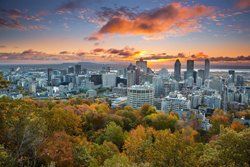
Multiculturelle, elle mêle son accent français à celui de plus de 80 autres communautés culturelles et charme par son ambiance américano-européenne.
Son centre-ville grouille de vie au pied de sa montagne, alors que son histoire s'enracine dans ses vieux quartiers près du fleuve. Et nul besoin d'une voiture de location pour découvrir ses charmes. La métropole se visite facilement à pied.
Découvrez Montréal via ses 5 plus beaux quartiers.
VIEUX-MONTRÉAL
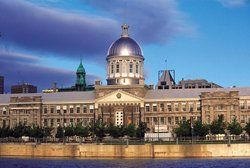
C'est la seule zone de Montréal qui fait plus européenne avec certaines de ses rues encore faites de pavés anciens, ses édifices d'époques, ses différentes places et ses monuments.
Le Vieux-Port de Montréal, qui est également un des attraits majeurs de ce quartier, est constitué de plusieurs quais qui sont reliés par une promenade bordée d'un parc. Le secteur est toujours très animé avec ses nombreuses boutiques, galeries d'art, cafés, restaurants et musées.
BASILIQUE NOTRE-DAME

Construite entre 1824 et 1829, elle est réputée pour son décor intérieur polychrome et la richesse de ses ornements . Ne manquez pas son orgue Casavant datant de 1891, qui est un des plus imposants en Amérique.
Également, il est possible depuis mars 2017 d'y vivre une expérience hors du commun avec le spectacle multimédia “Aura” . Ce dernier met en valeur les beautés de l'architecture unique de la basilique grâce aux jeux de lumière et à la musique orchestrale créée par le grand studio montréalais Moment Factory . Le tout est divisé en deux volets, soit le parcours thématique et le spectacle multimédia (23 minutes), pour une durée approximative de 45 minutes.
En haute saison, du lundi au vendredi à 18h et 20h et le samedi à 19h et 21h (horaire différent en basse saison). Nous vous recommandons vivement de faire l'achat en ligne de vos billets pour vous assurer des places.
RUE SAINT-PAUL
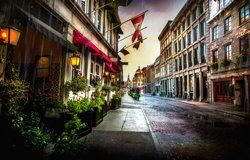
Bordée de bâtiments datant du 19 e siècle, certains de ses entrepôts d’autrefois ont même été transformés en ateliers d’artistes et en boutiques.
PLACE JACQUES-CARTIER
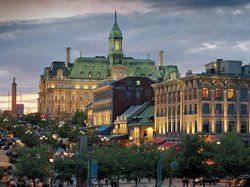
C'est le coeur du Vieux-Montréal et la place la plus animée avec ses artistes ambulants, ses kiosques de fleurs et sa multitude de restaurants et cafés qui occupent d'anciens édifices du début du 19 e siècle.
À partir du Vieux-Port de Montréal et de ses nombreux quais, plusieurs activités de grand intérêt vous attendent dont :

Zipline Vieux-Port Premier circuit urbain de tyrolienne au pays , la Zipline de Montréal vous fera découvrir la métropole à vol d’oiseau ! Le parcours survole l’ île Bonsecours dans le Vieux Port , une des zones les plus achalandées de la ville. Sensations fortes garanties!

La Grande Roue Prenez place dans la plus grande roue d’observation au Canada pour jouir d’un panorama époustouflant sur le Vieux Montréal, à 60 mètres de hauteur . L'expérience est possible toute l’année, grâce aux confortables cabines tempérées en hiver et climatisées en été. Un divertissement unique dans un cadre pittoresque, au bord du fleuve Saint-Laurent. La grande roue est belle de jour comme de nuit avec ses lumières colorées ! Restaurants sur place également : Le Bistro de la Grande Roue et le Café de la Grande Roue .
CENTRE-VILLE

La célèbre rue Sainte-Catherine , l'artère commerciale longue de 15 kilomètres, est souvent identifiée au centre-ville.
BASILIQUE-CATHÉDRALE MARIE-REINE-DU-MONDE
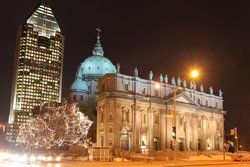
LA VILLE SOUTERRAINE
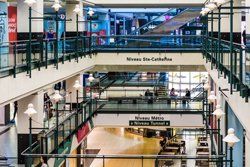
C'est en fait la plus grande ville intérieure au monde et elle contient à elle seule près de 12% de tous les commerces du secteur.
Elle offre l'énorme avantage de pouvoir se déplacer sans se soucier des intempéries et les différentes lignes de trains de banlieue, de métro et d'autobus y convergent.
MUSÉE DES BEAUX-ARTS
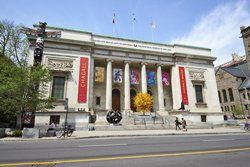
Ce dernier garde précieusement dans ses murs une collection de plus de 35 000 pièces des quatre coins du monde datant de l'Antiquité à aujourd'hui, dont une magnifique collection d'art inuit et canadien .
Durant l’année, les expositions à l’affiche peuvent varier.
LE QUARTIER LATIN
Le Quartier Latin est situé tout près de l'intersection des rues Saint-Denis et Sainte-Catherine (métro Berri-UQAM).
C'est un secteur très culturel et académique de Montréal avec le Théâtre St-Denis, l'Office National du Film du Canada, la Grande Bibliothèque Nationale, la Cinémathèque Québécoise, l'Université du Québec à Montréal et le Cégep du Vieux-Montréal. C'est un quartier étudiant très animé avec ses cafés-terrasses, ses restaurants, ses petites boutiques.
PLATEAU-MONT-ROYAL

Depuis quelques années, ce quartier très animé est reconnu pour être “branché” et il est d'ailleurs très populaire auprès des nouveaux arrivants de France qui veulent s'installer à Montréal.
On y trouve de nombreuses boutiques et c'est l'endroit idéal pour flâner , mais c'est aussi la place pour aller dîner au restaurant, marcher un peu et aller prendre un verre dans un des différents bars du coin.
BOULEVARD SAINT-LAURENT
Le boulevard Saint-Laurent, entre les rues Sherbrooke et Mont-Royal, est une des principales artères de Montréal, celle qui sépare l'Est et l'Ouest de la ville, et elle est communément appelée “la Main” (rue principale).
C'est une rue très tendance avec ses multiples bars, restaurants et boutiques mais aussi un pôle multiculturel car elle s'est peuplée de nouveaux immigrants d'origines diverses dès le début du 19 e siècle, qui ont ouvert sur “la Main” de nombreux commerces et restaurants.
LE CARRÉ SAINT-LOUIS
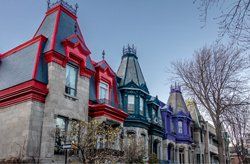
Ce dernier est encore aujourd'hui entouré de maisons victoriennes de la bourgeoisie francophone qui vint s'y installer vers la fin du siècle dernier. Il fut également un lieu très prisé par plusieurs poètes et artistes québécois.
*Station de métro Sherbrooke
LE PARC DU MONT-ROYAL
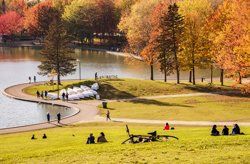
D'ailleurs, la montagne distingue la ville de plusieurs autres grandes villes nord-américaines de par sa présence en toile de fond dans le paysage.
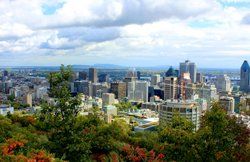
Tous les dimanches entre mai et septembre, un grand rassemblement spontané de tam-tams a lieu au pied du monument de sir Georges-Étienne Cartier (avenue du Parc, entre l'avenue du Mont-Royal et l'avenue des Pins). Cet évènement festif est une véritable tradition pour les Montréalais depuis la fin des années 70 et les gens viennent pour y jouer de la musique, danser, faire un pique-nique et s'y prélasser entre midi et le coucher du soleil. Arrivez tôt si vous voulez avoir une place pour vous y installer.
LE VILLAGE GAI

Ses clubs et ses bars sont parmi les plus populaires de la ville et les festifs peuvent souvent y danser sur la musique des plus grands DJ au monde.
Le village est aussi un pôle culturel important avec ses nombreuses salles de spectacles et ses studios de télévision et de radio.
Vraiment un lieu haut en couleur !
ORATOIRE ST-JOSEPH
Joyau patrimonial , l’oratoire St-Joseph est un lieu emblématique de Montréal, situé près du parc du Mont Royal et visité par près de 2 millions de personnes chaque année. Grandiose et paisible ! Vous aurez en prime une vue superbe sur la ville . Musée, cafétéria, boutique de souvenirs, visites guidées et stationnement sur place.
JARDIN BOTANIQUE
Véritable musée vivant de réputation mondiale, le Jardin Botanique de Montréal vous offre une belle programmation toute l’année. Événements, expositions, animations , en plus de la collection de 22 000 espèces de plantes de partout sur la planète. L’Insectarium , jumelé au Jardin Botanique, vous propose en complément la découverte du monde des insectes.
BIODÔME
Le Biodôme accueille plus de 4 500 animaux de 200 espèces différentes et plus de 800 espèces végétales . Tout comme le Jardin Botanique, il fait partie de l’Espace vie de Montréal. Vous ferez ici un voyage sensoriel immersif à travers les 5 écosystèmes des Amériques et vous découvrirez les plantes et les animaux qui y vivent. Explorez la forêt tropicale humide , la forêt laurentienne , le golfe du St-Laurent , les côtes du Labrador et les îles subarctiques . Une expérience unique !
Populaire parc d’attraction avec beaucoup de manèges à sensations fortes mais également des promenades plus douces pour les plus jeunes. Plusieurs spectacles, animations et restaurants sur place. Ambiance festive.
Activités suggérées
- Accueil à l’aéroport et transfert
- Tour de ville avec un Montréalais
- Tour guidé du Vieux-Montréal
- Visite du Biodôme
Où manger ?
- $ Économique
- $$ Budget moyen
- $$$ Bonne table
- $$$$ Gastronomique
ST-VIATEUR BAGEL & CAFÉ MONT-ROYAL ($)
La ville de Montréal est bien connue pour avoir les meilleurs bagels de la planète car ils sont confectionnés à la main avec du malt et bouillis dans de l'eau miellée, puis cuits au four à bois. Ici, vous aurez l'occasion de goûter les fameux bagels St-Viateur, une des plus vieilles institutions de Montréal qui les fabrique depuis 1957.
SCHWARTZ ($)
Voici une autre véritable institution à Montréal, mais qui est reconnue cette fois-ci pour ses savoureux sandwichs à la viande fumée. Ici on fait souvent la file devant la charcuterie hébraïque, fondée en 1928 par deux frères juifs roumains, pour goûter une de ces petites merveilles. À essayer absolument !
LA BANQUISE ($)
Lors de votre voyage au Québec, il vous faut à tout prix essayer la fameuse “poutine”, typique dans la province depuis les années 1950. Cette dernière consiste en un assemblage de frites et de fromage en grains de cheddar frais, recouvert de sauce brune. Il en existe d'ailleurs plusieurs versions faites avec d'autres types de sauces et différentes garnitures ajoutées comme de la viande, des légumes, etc. La Banquise est un des meilleurs restaurants de poutines au Québec et vous aurez le choix entre plus de 30 variétés.
OLIVE + GOURMANDO ($$-$$$)
On dit de chez Olive + Gourmando que c'est dans cette boulangerie-restaurant que vous trouverez les meilleurs sandwichs en ville. Ici, on ne sert que des produits de première qualité pour le petit-déjeuner ou le lunch. En plus des sandwichs, vous vous régalerez avec les soupes et salades, cafés et viennoiseries.
AU PIED DE COCHON ($$$)
Voici un endroit comme vous n'en n'avez jamais vu. Au Pied de Cochon c'est le très couru restaurant du non moins célèbre Chef Martin Picard. On vient pour y manger une cuisine de fête très réussie, très riche et hors du commun, dans une ambiance débridée. Vous ne vous trouvez pas ici dans un restaurant raffiné, ni des plus chics, mais à la table la plus originale de la ville. On vous servira des assiettes plantureuses et des plats inusités comme la poutine de foie gras et des frites au homard.
L'AUBERGE SAINT-GABRIEL ($$$)
L'Auberge Saint-Gabriel, construite en 1688 par un soldat français, fut la première en Amérique du Nord à recevoir le tout premier permis d'alcool au pays en 1754… On peut donc dire que c'est un bâtiment véritablement chargé d'histoire ! Autre fait intéressant, deux de ses trois propriétaires sont nul autre que Garou et Guy Laliberté. Ce restaurant est une des adresses branchées de Montréal pour manger de la gastronomie québécoise et une savoureuse cuisine du marché, le tout dans une ambiance des plus conviviales.
CLUB CHASSE ET PÊCHE ($$$)
Le Club Chasse et Pêche jouit d'une solide réputation à Montréal et la barre y est toujours placée bien haute. Vous dégusterez des plats uniques, préparés avec les meilleurs ingrédients et vous serez servis dans une ambiance rétro-moderne tout droit sortie d'un club anglais d'il y a 100 ans.
BOUILLON BILK ($$$$)
Au restaurant Bouillon Bilk, dont la spécialité n'est pas les soupes ou les bouillons, on vous servira des plats spectaculaires autant du côté visuel que des saveurs. Le menu est très court, mais il saura vous faire voyager dans des contrées gustatives tout à fait inventives.
TOQUÉ! ($$$$)
Vous passerez ici un moment inoubliable ! Le Chef Normand Laprise et son équipe vous reçoivent pour vous faire vivre une expérience gastronomique unique. Sur la carte, des produits de plusieurs artisans québécois qui sont irréprochables et travaillés avec raffinement et créativité.
Où dormir ?
- Fairmont Reine Élizabeth
- Delta Montréal
- Hôtel le Germain Montréal
- Hôtel Alt Montréal
- Auberge de la Fontaine
- Hyatt Place Montreal Centre-Ville
- Les Suites Labelle
- Best Western Ville-Marie
- Novotel Montreal Airport
- Hôtel Place d'Armes
- Hôtel St-Denis
- Sheraton Montreal Airport Hotel
- Hôtel Le Roberval
- Hôtel Saint-Laurent Montréal
Calendrier des festivals
Les franco de montréal.
Dates: mi-juin
Sous le signe de la musique, de la diversité culturelle et de l'animation urbaine, cette grande fête populaire attire plus d'un demi-million de spectateurs et réunit pas moins de 1 000 artistes, musiciens, vedettes de la chanson et figures montantes en provenance d'une vingtaine de pays.
Grand Prix du Canada
Dates : mi-juin
Les meilleurs pilotes de la planète se donnent rendez-vous à Montréal pour disputer une étape importante du championnat du monde de Formule 1 sur l'exigeant circuit Gilles-Villeneuve.
L’International des Feux Loto-Québec
Dates : fin-juin à début août
L'International des Feux Loto-Québec, a vu le jour en 1985 à La Ronde, le plus grand parc d'attractions du Québec créé dans le cadre de l'Exposition universelle de 1967. C'est de l'art pyromusical à son meilleur ! Les samedis et mercredis à 22h.
Festival de Jazz de Montréal
Dates : fin juin / début juillet
Étant inscrit depuis 2004 dans le Livre des records Guinness comme étant le plus important festival de jazz du monde, pas étonnant que Montréal puisse attirer les plus grands noms. La programmation est irréprochable !
Montréal en Arts
Dates : début juillet
L’expo-vente présente près de 75 artistes locaux qui se font un plaisir de vous montrer leurs réalisations. La programmation du festival inclut aussi plusieurs projets participatifs, des activités pour les enfants et des performances en direct. C’est un rendez-vous sur la rue Ste-Catherine entre les rues St-Hubert et Papineau.
Dates : début août
Osheaga est un populaire festival de musique et d’arts indépendant, qui se déroule chaque été au parc Jean-Drapeau sur l’île Ste-Hélène. Les spectacles ont lieu sur 6 scènes où se produisent des artistes émergeants et des têtes d’affiche internationales.
Festival Juste pour Rire
Dates : mi-juillet
Montréal est, semble-t-il, la ville la plus drôle du monde ! Venez le constater en assistant au plus grand festival du genre. On y présente des spectacles d’humour en salle, des théâtres de rue, des parades, ainsi que des projections de films et d’émissions humoristiques.

Quand partir ?
- Très favorable
- Défavorable
Climatogramme
Avis des voyageurs, ville très sympa, très belle ville.
découverte des différents quartiers très différents
Ville de type américaine, à ne pas manquer !
Guide voyage à télécharger.

Articles pertinents
L’automne au québec : 5 expériences incontournables, le meilleur road trip de 7 jours au québec, top 10 des meilleurs festivals du québec, le meilleur circuit de 10 jours au canada, quartiers de montréal : lesquels visiter absolument , le meilleur road trip de 2 semaines pour visiter le québec et l'ontario, le meilleur road trip en van au québec, visiter montréal : top 10 des choses à faire, top 5 des plus beaux hôtels de luxe au québec, où dormir à montréal , visiter montréal en 2 jours, 7 bonnes adresses de restaurant canadien typique à montréal et québec, top 5 des road trips au canada, l'ouest en vr, la gaspésie en vr, le québec en vr, conquête de l'ouest, parcours sauvage, blog voyage authentik, top 10 des plus beaux parcs nationaux du canada, visiter les chutes du niagara en 24 heures, randonnée du mont-du-lac-des-cygnes (le guide ultime), l’ultime road trip pour découvrir l’été indien, quiz sur le québec, top 5 des cabanes à sucre du québec, visiter l’ontario en 10 lieux incontournables, location de chalet au québec : top 10 des cabanes au canada, top 5 des plages dans l’ouest canadien, quel est le prix d'un voyage tout compris au canada en 2024 , le guide complet du parc de la mauricie, mauricie et lanaudière : les routes pour découvrir le québec authentique, le meilleur road trip de 2 semaines dans l’ouest canadien, road trip en gaspésie : itinéraire + conseils, top 10 des lieux surprenants au canada à découvrir en 2024, road trip en van dans l'ouest canadien : itinéraire + conseils, les 5 meilleurs endroits pour faire du traîneau à chiens au québec en 2024, les meilleurs restaurants où manger à québec, 5 commandements pour survivre à l'hiver canadien, visiter le parc wells gray en colombie-britannique : le guide complet, visiter halifax : nos 10 incontournables, guide du parc national de la jacques-cartier : photos + carte, road trip sur l'île de vancouver : itinéraire + carte, 10 spots photo incontournables à toronto, location de voiture électrique au canada : le guide complet, le meilleur itinéraire dans l’ouest canadien, 5 choses à ne pas dire au québec pour un (maudit) français, voyage au canada tout compris : nos conseils d'experts, top 10 des lieux romantiques au canada, randonnée lake agnes tea house à banff (le guide complet), séjour au canada : 5 conseils pour des vacances réussies, découvrir l’est du québec en 10 activités incontournables, 3 bonnes raisons de ne pas aller à tadoussac en 2023, top 5 des lacs des rocheuses canadiennes, comment rater son voyage au canada en 5 étapes faciles, top 10 des plus beaux paysages de l'ouest canadien, où manger à toronto , voyage au canada : toutes les formalités d'entrée, parc national yoho : le guide voyage complet, top 5 des parcs à visiter au québec pendant l'été indien, quels souvenirs rapporter d'un voyage dans l'ouest canadien , les 5 plus belles pistes cyclables du québec, les 10 plus beaux spots photo instagram dans l'ouest canadien, les 5 meilleures activités pour observer la faune au québec, comment utiliser le gps de google maps hors connexion en voyage , les 10 arrêts incontournables sur la route 132 en gaspésie, les 5 plus beaux parcs de l'ouest canadien, 5 choses à faire pour découvrir le québec maritime, top 5 des randonnées pédestres dans charlevoix, comment planifier votre road trip au canada , le meilleur circuit en famille au québec, location de van au canada : les 5 plus beaux modèles de type #vanlife, 5 bonnes raisons de voyager au canada en 2022, top 3 des road trips éco-responsables au québec, top 10 des plus belles rivières au québec, réouverture des frontières au canada : mode d'emploi, top 5 des vignobles à visiter au québec, 10 choses à faire dans l'ouest canadien avant de mourir, 5 spots photos incontournables dans le vieux-québec, top 10 des paysages d'automne au québec, le meilleur circuit de 10 jours dans les rocheuses canadiennes, top 5 des plus belles chutes dans l'ouest canadien, les 10 plus beaux arrêts sur la route 138 entre québec et tadoussac, les 5 hébergements les plus insolites du québec, guide voyage de l'île de vancouver, l'ultime road trip en vr dans l'ouest canadien, quoi faire à sandbanks , les 5 meilleurs endroits pour photographier le rocher percé, la randonnée du pic-champlain (parc du bic), top 10 des plus beaux campings au québec, dormir dans un animal empaillé, le guide complet du parc stanley de vancouver, canot sur la rivière bonaventure en famille, top 10 des randonnées pédestres dans les rocheuses canadiennes, arrivecan : tout savoir, 5 bonnes raisons de voyager au canada en 2021, le meilleur circuit de 10 jours au québec, top 10 des paysages d'hiver au québec, l'ultime raid motoneige au québec, 5 bonnes raisons de choisir le vr pour votre voyage en famille, croisière à l'île bonaventure : le guide pratique, le meilleur road trip de 15 jours au québec, top 5 des plus beaux couchers de soleil au québec, le parc forillon de a à z, top 10 des plus beaux lacs du québec [avec carte + photos], quiz sur le canada, parc du fjord-du-saguenay : le guide complet, comment se protéger des tiques et la maladie de lyme , les 5 lieux secrets du québec préférés des québécois, l'ultime road trip à faire en famille au québec, banff : randonnée de johnston canyon (le guide complet), l'été indien prolongé de 2 mois cette année au canada, excursion aux chutes waber en mauricie [avec carte + photos], la route des microbrasseries du québec, promenade des glaciers entre banff et jasper [guide ultime], 10 choses à faire au canada... avant de mourir, la randonnée du mont jacques-cartier en gaspésie de a à z, 5 bonnes raisons de ne pas voyager dans l'ouest canadien en 2020, où dormir chez l'habitant au québec , top 10 des plus beaux paysages au québec, 9 erreurs à ne pas commettre au québec pour un "maudit français", voyage pas cher au québec : 5 astuces infaillibles pour économiser gros, voyage mythique au canada pour fêter le jour de l'an 2020, les 5 meilleures pourvoiries pour découvrir le vrai québec, 5 activités pour profiter de l’été indien, 20 spots photo incontournables à montréal, les 10 plus belles routes panoramiques de l’ouest canadien, top 10 des randonnées pédestres à faire en famille au québec, top 5 des croisières pour observer les baleines au québec, visiter les mille-îles en 24 heures, top 10 des plus beaux villages de l'ouest canadien, 10 activités incontournables pour observer la faune au québec, l'ultime road trip dans les maritimes, visiter ottawa en 24 heures, 5 parcs nationaux à découvrir au québec, 5 idées pour divertir les enfants en road trip au québec, top 10 des plus beaux lacs de l'ouest canadien, visiter percé en 24 heures, l'ultime road trip en vr au québec, 5 astuces pour trouver le billet d’avion le moins cher vers le canada, 10 bonnes raisons de ne pas voyager au québec en 2019, top 5 des expressions québécoises d'hiver, 5 astuces pour économiser sur une location de vr au canada, top 10 des plus belles citations de voyage, 10 mots à utiliser avec modération au québec pour un « maudit français », top 10 des activités à faire dans l'ouest canadien selon les voyageurs authentik, l'ultime voyage d'hiver au canada, visiter victoria en 24 heures, visiter québec en 2 jours, top 10 des endroits pour faire du canot au québec, visiter toronto en 24 heures, top 10 des plus belles routes du québec, top 5 des randonnées pédestres en gaspésie, la route de la poutine, 5 astuces pour économiser sur votre location de voiture au canada, le zoo sauvage de saint-félicien de a à z, top 5 des hébergements pour les familles au québec, top 10 des plus belles plages du québec, le guide voyage des rocheuses canadiennes, 5 aventures qui décoiffent au québec, où manger à niagara falls , 5 bonnes raisons de ne pas voyager au canada en 2018, visiter vancouver en 2 jours, l'ultime road trip dans l'ouest canadien, le guide complet du parc national de la gaspésie, comment manquer votre voyage au canada en 3 étapes faciles , les « tabarnak » de jurons québécois expliqués de a à z, 5 incontournables à faire cet hiver au québec, top 5 des plus belles chutes au québec, quoi faire en cas d'imprévu lors de votre road trip au canada , top 10 des activités à faire au québec selon les voyageurs authentik, la randonnée de l'acropole-des-draveurs, top 10 des destinations canadiennes selon les voyageurs authentik, où manger à québec , top 5 des incontournables à niagara falls, top 10 des hébergements au québec selon les voyageurs authentik, top 10 des expressions québécoises, 3 bonnes raisons de planifier votre voyage avec une agence locale, voyage gratuit dans l'ouest canadien... en 10 photos, montréal en 5 lieux mythiques avec melissa maya, où observer les baleines au québec , top 10 des incontournables du parc de banff, 10 choses à ne pas faire au canada en 2017, comment choisir son vol de la france vers le canada , les 10 plus beaux couchers de soleil au canada, où parle-t-on français au canada , top 5 des plus beaux villages du québec, 3 astuces pour une location de vr pas chère au canada, top 5 des endroits pour observer les couleurs de l'été indien, 5 bonnes raisons de ne pas voyager au québec cet hiver, top 3 des demandes irréalistes pour un voyage au québec, où changer mes euros en dollars canadiens , top 5 des randonnées pédestres dans l'ouest canadien, playlist musicale pour un road trip au québec, 5 choses à faire au québec avant de mourir, 10 choses à ne pas faire au québec pour un « maudit français », l'ultime road trip au québec, quels souvenirs rapporter du canada , les 7 merveilles de l'ouest canadien, 5 faits étonnants que vous ne saviez (peut-être) pas sur le canada, 5 astuces pour un voyage pas cher au canada, les 7 merveilles du québec, my happy canada tour : interview avec sandrine laporal, 5 bonnes raisons de ne pas voyager au québec en 2016, quoi visiter en 15 jours dans l'est du canada , la parlure québécoise : quelques mots (maux) d'hiver (divers), l'ouest canadien hors des sentiers battus, gaspésie : 3 types de séjour en montagne, voyager en vr au canada : on dit oui ou non , promenade des glaciers : 5 arrêts sur la route, top 5 des randonnées en famille au québec, voyage au canada : est ou ouest , top 10 des choses à faire dans l'ouest canadien, téléphone portable et internet au canada, top 5 des choses à faire au nouveau-brunswick, qui sont les loueurs de vr au canada , autorisation de voyage électronique (ave) pour le canada, top 5 des hôtels de luxe au canada, 3 road trips pour découvrir l’été indien, quoi faire si vous rencontrez un ours , 5 astuces pour vos photos de voyage, quoi faire à niagara falls , observation de l'ours noir au québec, conduire au canada, top 5 des endroits romantiques au québec, où manger à montréal , organiser son voyage de noces au canada, quoi faire dans charlevoix , 5 lieux d’exception pour faire du camping au canada, 5 trucs pour vaincre la peur de l’avion, 5 attraits incontournables à québec, où manger à tadoussac , voyager avec des enfants en avion, voyager avec des enfants, 5 astuces pour une location de voiture de montréal à new york, sirop d'érable : origine et légendes, les 10 plus belles photos du canada, 3 bonnes raisons de ne pas aller en gaspésie, pourquoi je retournerai au québec , guide d'observation des baleines à tadoussac, voyager dans l'ouest en français, voyage de noël au québec : 3 façons de fêter , été indien au québec : top 5 des activités à ne pas manquer, voyager au canada en avril : oui ou non , chutes niagara : 5 incontournables, quoi mettre dans ses bagages pour un voyage au canada , top 5 des routes panoramiques de l’ouest canadien, percé : 3 incontournables, lac st-jean : 4 incontournables, les 10 incontournables du parc de jasper, qu'est-ce qu'un autotour , 5 astuces pour une location de voiture pas chère au canada, 5 bonnes raisons de visiter ottawa, où, quand et comment observer les animaux du québec , 3 idées originales pour l'été indien au québec, top 6 des ranchs dans l'ouest canadien, 4 idées originales de camping au québec, 5 bonnes raisons de visiter les mille-îles, assurances voyage de votre carte bleue : 5 points à vérifier, top 5 des festivals de musique à montréal, plantez un arbre dans la forêt authentik, top 5 des sentiers de randonnée pédestre au québec, top 4 des lieux à visiter sur l'île de vancouver, le tour de la gaspésie en 3 coups de coeur, économisez sur l'achat d'un vol paris-montréal, 5 endroits romantiques au québec, 5 trucs pour conduire en hiver au canada, comment profiter de l’hiver à québec , 3 endroits magiques pour noël au québec, les rocheuses canadiennes en 9 escales, climat dans l'ouest du canada, climat dans l’est du canada, choisir son raid motoneige au canada, les 10 meilleurs festivals d'hiver au canada, aurores boréales : où et quand les observer , le temps des pommes au québec, les 4 meilleurs mets typiques du québec, l'été indien au canada : 5 choses à savoir avant de partir, pourquoi les français aiment-ils les québécois , 3 astuces pour économiser sur votre location de vr au canada, comment les français voient le québec , top 5 des plus belles routes du québec, 5 astuces pour conduire au québec (partie ii), connaissez-vous la chanson québécoise , 5 astuces pour conduire au québec (partie i), météorologie québécoise 101, rivalité emblématique du canada, ma cabane au canada: mythe ou réalité , la petite histoire du grand prix de montréal, 6 traditions typiquement québécoises, lauréat argent aux grands prix du tourisme, 3 incontournables de la colombie-britannique, l'accent québécois en 5 étapes faciles, safari aux baleines 101, observation de la grande oie des neiges, le printemps des sucres, comment se protéger des moustiques au canada , 6 trucs pour créer son itinéraire, questions & réponses sur la location de vr au canada.

33 Epic Things to Do in Montreal (Perfect First Time Visit)
Things to do in montreal: the 33 best places to visit (all highlights).
You’re planning to visit Montreal during your next trip and you’re looking for the best things to do?
You’re at the right place!
In order to help you plan your stay, I have prepared this guide of the 33 best things to do in Montreal , with all points of interest and must-see attractions.
In addition to my list of things to do and activities, I will also give you optimized itineraries to visit Montreal in 1, 2, 3, 4, 5 days (or even 1 week!) as well as my selection of the best accommodations depending on your budget.
So, what are the best things to do in Montreal? Where to stay?
1. The Plateau-Mont-Royal
2. old montreal, 3. old port of montreal: best things to see and do, 4. saint catherine street, 5. montreal olympic stadium, 6. montreal botanical garden, 7. the montreal biodome, 8. the must-visit museums in montreal, 9. the churches of montreal, 10. visit saint joseph’s oratory, 11. montreal’s markets, 12. the village, montreal’s gay district, 13. best things to do in montreal at night, 14. visiting mount royal park in winter, 15. where to ice skate in montreal, 16. the montreal snow festival – fêtes des neiges, 17. more winter activities in montreal, 18. visiting mount royal park in summer, 19. the lachine canal, 20. jet boat/spin boat on the saint lawrence river, 21. a day out at jean-drapeau park, 22. la ronde, montreal’s amusement park, 23. stroll in other montreal parks, 24. mont saint-sauveur water park, 25. osheaga, 26. igloofest, 27. the light festival – montréal en lumière, 28. just for laughs festival, 29. autumn at mont-tremblant, 30. cap-saint-jacques nature park, 31. parc omega in montebello, 32. more activities around montreal, rockaberry for a sumptuous cheesecake, taste la banquise’s poutine, weekend brunch in montreal, montreal’s chinatown, the best restaurant in montreal, timeout market montreal, microbreweries in montreal, where to stay in montreal, grocery shopping in montreal, where to find affordable cheese in montreal, renting or buying cheap winter sports gear, you’re traveling in canada these articles will help you, visit montreal: all must-see attractions (winter + summer).
The Plateau-Mont-Royal is the quintessential “hip” neighborhood, making it the perfect starting point for this rundown of the must-see places in Montreal !
This area is well-renowned and particularly loved by French people, be they tourists or expats choosing it as their initial landing spot. So don’t expect to hear much of the Quebecois accent here!
The typical houses with exterior staircases and colorful facades add heaps of charm to the Plateau, and it’s a real delight to wander around in any season.
The neighborhood is buzzing with shops, restaurants, bars, and thrift stores spread over 4 main arteries. Perfect setup for a leisurely stroll around Montreal :
- St Laurent Boulevard , where a host of cultural communities have set up their shops
- St Denis Street , renowned for its avenue filled with terrace cafes
- Prince Arthur Street , bursting with restaurants
- Mont Royal Avenue , home to trendy bars and fashion boutiques.
Where to eat in Plateau Mont-Royal?
Here you’ll find the 2 famous restaurants that I’ll tell you more about later on:
- La Banquise with its poutines
- L’Avenue and its famous brunch.
But you can also feast at the “Saint Viateur” with a wide selection of bagels or the “ Mont-Royal Hot dog ” joint, with its charmingly outdated American diner vibe (and fantastic brunch potatoes!).
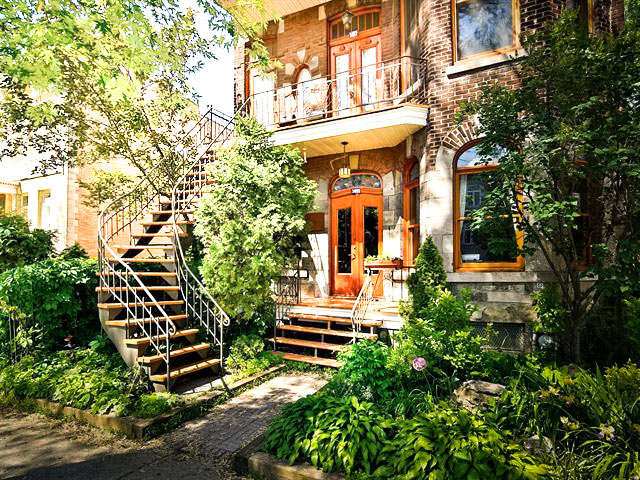
Nestled between the Saint Lawrence River and downtown skyscrapers, the Old Montreal district is the historical go-to spot in Montreal.
To explore it, stop at the “Place d’Armes” or “Champ-de-Mars” metro station .
Points of interest during this must-do visit in Montreal include:
- The old Sulpician seminary : Montreal’s oldest existing building
- Notre-Dame Basilica : I’ll talk more about this further down
- The Quebec Bank Building : built in 1888, it’s Montreal’s first “skyscraper” although just 8 stories high
- Saint Jacques Street : Montreal’s “Wall Street”
- Place d’Youville : a green oasis offering tranquil vibes
- The three courthouses
- The City Hall , best admired in the evening for its façade light display
- Jacques Cartier Square , perfect for a leisurely drink on a terrace
- Bonsecours Market , boasting luxury boutiques and temporary exhibitions.
To not miss a thing in Old Montreal and gain historical explanations about all the monuments, you should go for a guided tour .
This 4-hour walking tour covers both the East and West of Old Montreal, offering a comprehensive journey.
Book your guided tour in Montreal by clicking the green button below:
If you’re only spending a short time in Montreal before heading off on your Quebec itinerary or if you’re not a fan of walking, you can also get a great overview of the city by booking a guided bus tour .
The route includes the Old Montreal , the Old Port , the Mount Royal , the Saint Joseph Oratory and the Olympic Park . These are all places I recommend you to see in this tourist guide of Montreal.
Book your Montreal guided bus tour by clicking directly here!
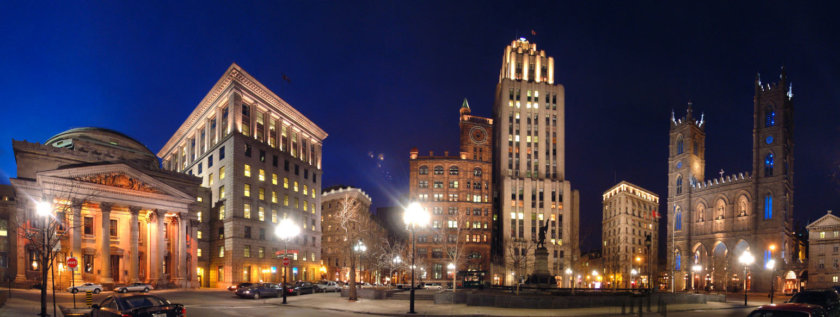
The Old Port is part of the historic district of Old Montreal . It’s another perfect spot for a walk .
It’s not really a functioning port anymore since all the port activity has been relocated. Rather, it offers a wonderful walk along the Saint Lawrence River , especially near the clock tower with a view of the Jacques Cartier bridge.
A whole slew of activities await you here, whether it’s summer (think cycling, rollerblading, leapfrog, horse-drawn carriage rides) or winter (get ready for ice skating, ice fishing).
But there are 3 activities I absolutely recommend (click on the orange links to book) :
- A cruise on the Saint Lawrence River to admire Montreal from a fresh perspective. Book here !
- This cruise is also available in the evening (click here!) and comes with a fantastic five-course dinner. Perfect for a romantic outing in Montreal!
- A spin on the Great Wheel , which is the biggest Ferris wheel in Canada . You’ll enjoy a breathtaking view of the city! Book your ticket for the Great Wheel at the Old Port of Montreal by clicking right here !
- A ride on the urban zipline , the longest in Canada. Book here !
As you wander around, I’d also suggest dropping by the Montreal Science Centre , tucked away at the far end of the port.
It offers a wide range of fun, interactive exhibitions that change quite often. It’s an excellent activity if you’re wondering what to do in Montreal with kids. The centre also features an IMAX cinema for 3D documentaries.
Find all the information about the exhibitions, prices, and IMAX cinema schedule on the Montreal Science Centre website .
Not far from the Science Centre, I also recommend visiting the Pointe-à-Callière Museum , the only major archaeology museum in Canada covering a period from the Indigenous era to the present day. It’s the most visited museum in Montreal.
It offers permanent exhibitions on the history and archaeology of the city .
I also recommend trying the museum restaurant , which I’ll talk more about later in this article.
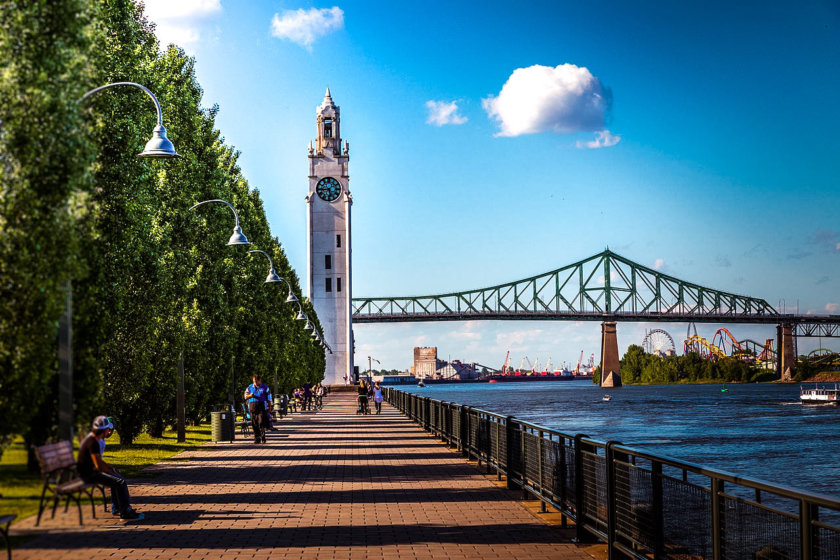
If you’re wondering where to go shopping in Montreal , look no further than Saint Catherine Street , an eminent boulevard recognized for its vibrant shopping scene.
Stretching for a whopping 11km, of which 3km are purely dedicated to retail therapy , it’s home to over 1,000 shops, bars, restaurants and major shopping centres such as Eaton Centre and Montreal Trust .
All the usual suspects are there, from H&M and Forever 21, to Victoria’s Secret and Urban Outfitters.
To get there, simply hop on the metro to Mc Gill station, which sits conveniently in the Eaton Centre.
In winter, you won’t even need to brave the snow for your shopping spree.
Montreal boasts an impressive 30km underground pedestrian network connecting a number of buildings, including the downtown shopping centres.
Built for the 1976 Olympic Games, the stadium has become one of the city’s internationally recognised symbols thanks to its distinctive architecture and iconic tower .
This is a fascinating place to visit in Montreal on a guided tour, discovering its history through an exhibition retracing its construction and featuring many sports memorabilia .
Next, take the glass funicular to climb to the top of the stadium’s tower, which happens to be the world’s highest inclined tower (165 meters high with a 45-degree inclination). At the top, you’ll be greeted by an amazing panoramic view of the Montreal region .
If you happen to be around after the sun sets, don’t forget that the Montreal Olympic Stadium is quite a sight to see when it’s all lit up.
For a different perspective of the Olympic Stadium, downtown, and Mount Royal, you should book a helicopter tour of Montreal .
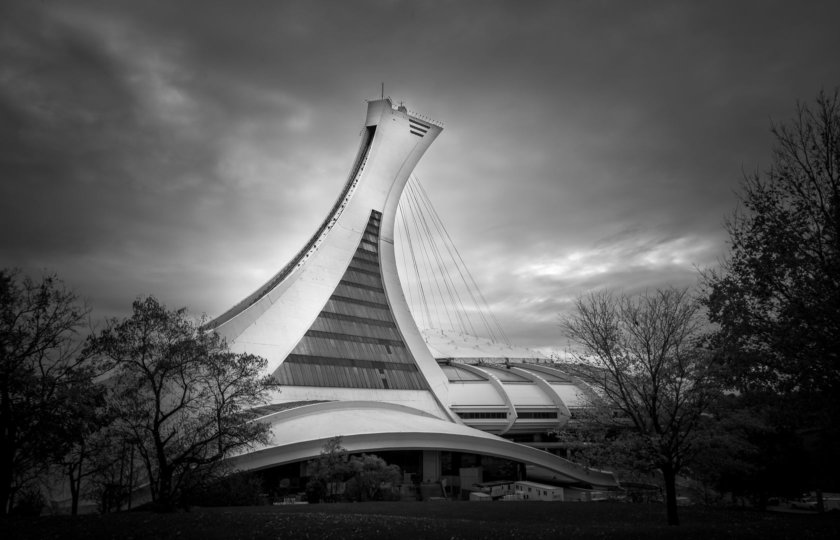
This is one of the most important botanical gardens in the world , with its 75 hectares hosting more than 20,000 plant species, 10 exhibition greenhouses and over twenty themed gardens.
I was totally captivated by the Chinese pavilions . They’re absolutely amazing, adorned with gorgeous pagodas amidst water features and a multitude of lively koi fish.
Also worth checking out are the Japanese garden, the aquatic garden, and the rose garden . The greenhouses offer a journey into the plant life from both arid landscapes and the lush tropical rainforest.
The botanical garden also houses an insectarium with over 250,000 specimens of live or preserved insects. You can also find yourself amidst hundreds of butterflies fluttering freely in a greenhouse specifically dedicated for them.
Each year, the Montreal Botanical Garden transforms into a garden of light with its lantern festival . Special light structures, created just for the occasion, are cleverly incorporated into the garden décor, enhancing its charm. It’s simply stunning.
If you’re planning a winter trip to Montreal, the botanical garden is also a great visit and it’s free!
A lot of folks make the most of it by cross-country skiing or snowshoeing along the flat trails. The garden’s trail networks communicate with Maisonneuve Park and offer nearly 10 kilometers of track . You’ll need to bring your own equipment as the garden doesn’t offer rentals.
For more information about the garden and the prices, check out the botanical garden’s website .
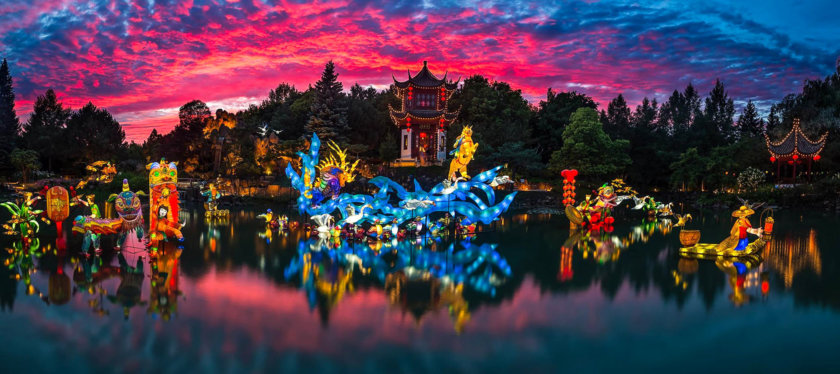
Another must-visit spot in Montreal (especially if you have kids!): the Biodome
It provides a unique opportunity to immerse yourself in the ecosystems of the American continent through its exceptionally crafted layout. Through a clever system that mirrors the seasons, the natural conditions such as temperature and humidity are meticulously recreated.
You can observe the fauna and flora of 5 different ecosystems :
- The tropical rainforest : lush vegetation with temperatures around 28 degrees, where you can see piranhas , caimans , parrots and capybaras.
- The Laurentian maple forest : a typically Quebecois forest with maple and birch trees, and a chance for observing lynxes, otters, and beavers .
- The Gulf of Saint Lawrence : represented by a basin containing no less than 2.5 million liters of sea water with cod, bass, salmon and on the beach numerous ducks and seagulls.
- The Arctic and Antarctic : where you’ll be able to admire an entire colony of penguins .
To plan your visit, you can get all the necessary details on the Montreal Biodome’s official website .
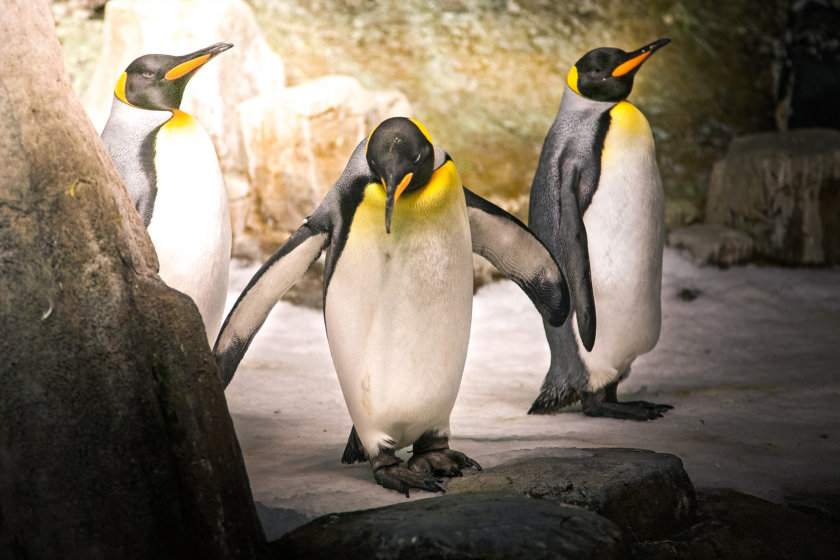
In Montreal, culture and art hold a significant place.
In addition to the Pointe à Callière Museum, the Biodome, and the Science Center I mentioned earlier, there are over 50 different museums in Montreal .
Here’s my pick of the top museums to see during your visit to Montreal :
- Montreal Museum of Fine Arts , located 1380 Rue Sherbrooke Ouest
- Contemporary Art Museum (MAC) , 185 Saint Catherine West Street
- McCord Museum : Items related to Canadian history, and particularly to indigenous culture. 690 Sherbrooke Street West
- Saint-Gabriel House : This charming traditional dwelling holds more than 300 years of history within its walls. Animations in traditional costumes and various activities are available on site, including a New France-style meal at the Refectory! Very lively, it’s the best history museum in Montreal in my opinion. 2146, place Dublin – Pointe-Saint-Charles
- Montreal Firefighters’ Museum (MBAM): Open only on Sundays from 1pm to 4pm, located 5100 Boulevard Saint-Laurent.
- Redpath Museum : The program includes paleontology, zoology, mineralogy, and a carnivorous dinosaur skeleton in this free museum (donations appreciated). 59 Sherbrooke West Street
You’re going to Montreal?
You probably know it: the hardest part of planning your trip is to find an hotel offering a good value for money!
And that’s even worse in big touristic cities like Montreal 😅.
The closer you get to your travel dates, the harder it will be to get a good deal. Lots of people will be visiting Montreal on the same dates as you , so you can be sure that the best deals are booked extremely quickly!
Hopefully, there is a pretty simple solution to this problem: do like me and book your hotel as early as possible!
So, my best advice is to take 5 minutes (now) to have a look at the list of travelers’ favorite hotels in Montreal.
And if you see a good offer, book it!
Most hotels offer free cancellation, so it’s quick, easy, and you will avoid the the inconvenience of finding nothing but mediocre rooms at exorbitant prices.
To check the current best deals for your hotel in Montreal, simply click on the green button below 😎:
Once you’ve booked your hotel, it will be time to continue reading this guide and find out more about the best things to do in Montreal!
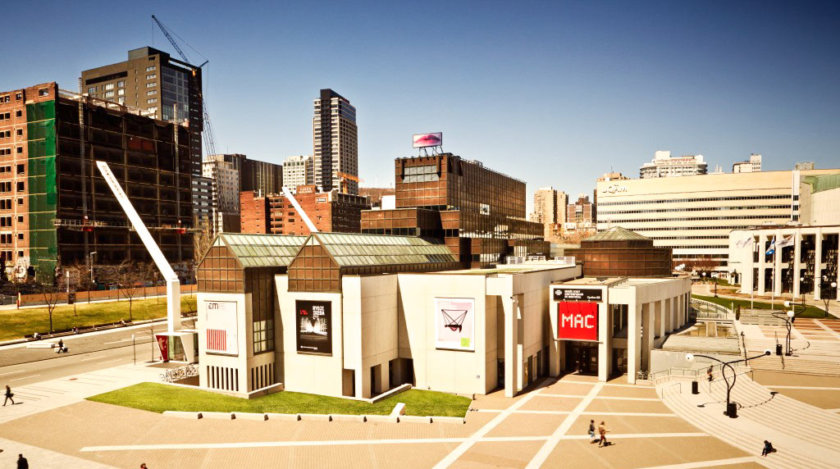
Let’s continue this Montreal guide with the must-see churches.
The most renowned is without a doubt the Notre Dame Basilica of Montreal , nestled in Old Montreal, which I’ve given a nod to earlier. The interior of this 60m high neo-Gothic building is sublime!
To the best of my understanding, it’s the solitary place of worship in Montreal that asks for an admission fee. The proceeds go towards the upkeep and refurbishment of this significant religious monument in Quebec.
A 20-minute guided tour is included in the entrance fee , but you can also visit freely.
Here are a few other places of worship that I found profoundly striking during my Montreal adventure, thanks to their extraordinary architecture!
- Mary, Queen of the World Cathedral
- Christ Church Cathedral
- Montreal Saint-Édouard Church
- St. James United Church
- St. George’s Anglican Church.
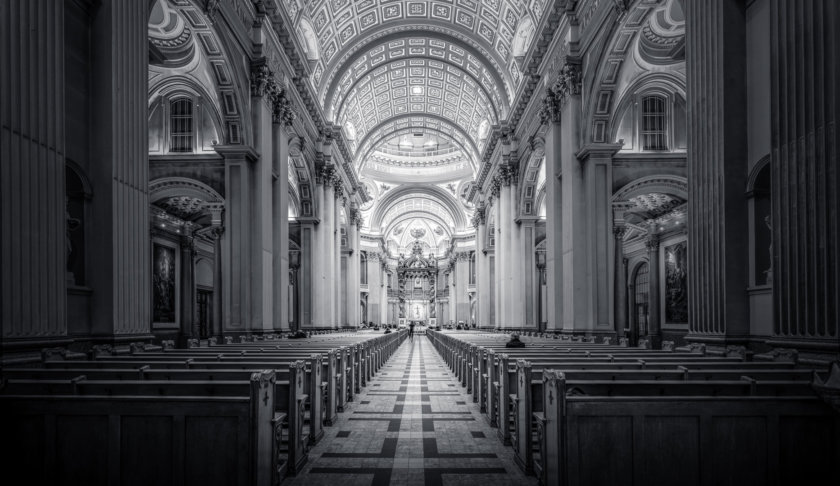
On the list of things to do in Montreal, Saint Joseph’s Oratory, located in the Côte-des-Neiges neighborhood is a must for its exceptional architecture, but also to get a sense of the importance of religious life in early 20th century Quebec.
This imposing building built on the slopes of Mount Royal is nearly 100 meters high and is topped by a mammoth dome 39 meters in diameter . It’s even more impressive on the inside!
Aside from the Oratory, you can also pop into Brother André’s quaint little chapel , and wander around the gardens with its Way of the Cross where you’ll spot a whole host of intriguing sculptures .
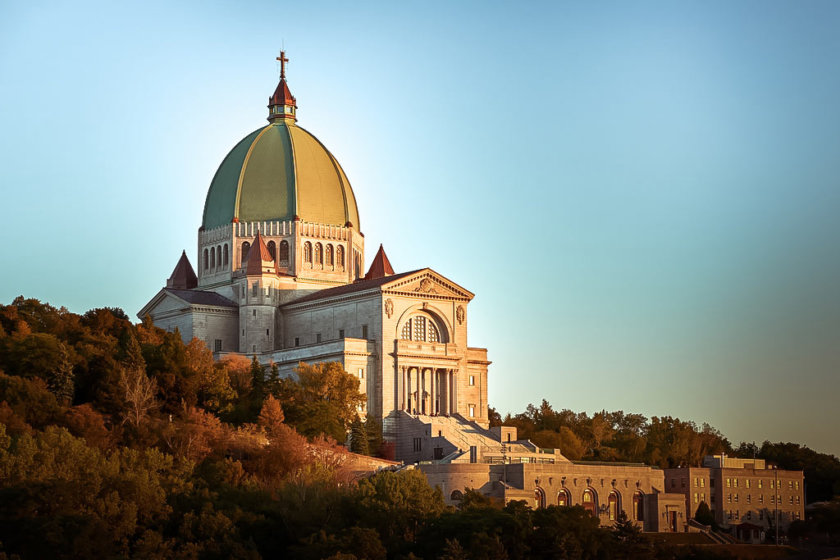
Feeling a bit full from all the poutine, burgers, and brunches? How about taking a trip to one of Montreal’s three major markets to scoop up some fresh and delightful local produce , or simply soak in the lively atmosphere of the colorful stalls:
- Atwater Market – perfectly located by the Lachine Canal, it’s renowned for its butcheries and cheesemongers. For those who’ve got a fondness for fromage, you can grab 3 cheeses for a mere 10 bucks here – an absolute steal in Canada, I promise you!
- Jean Talon Market – nestled in Little Italy , you’ll find fresh fruits and veggies, and a plethora of goods from around the globe, from Polish pastries to French crepes.
- Maisonneuve Market – complete with fishmongers, greengrocers, bakers, and florists stalls.
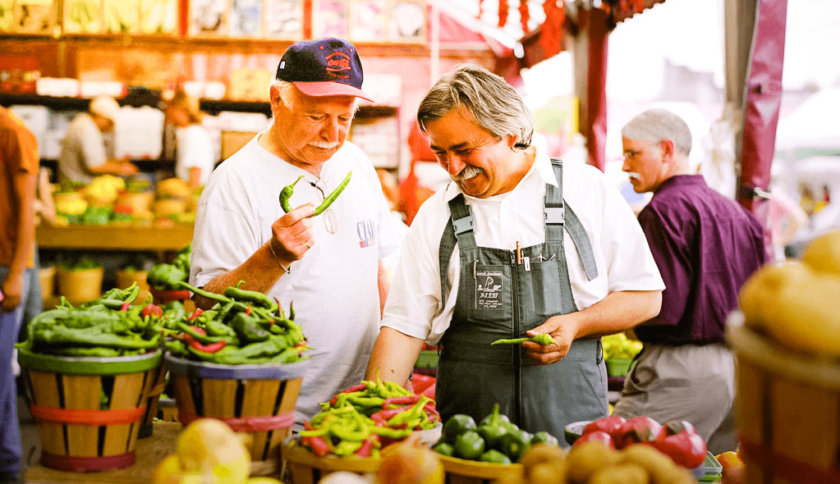
Another iconic spot to check out in Montreal is Le Village, Montreal’s gay district .
A sterling example of the tolerance and diversity that are the hallmarks of Quebec. Recognized around the world as a hot spot for LGBTQ+ tourism , this energetic neighborhood is a delight to stroll through with its cafes, bars, restaurants, nightclubs , and a delightful streetscape!
In the summer, Saint Catherine Street in Le Village transforms into a vibrant pedestrian zone , so that’s the prime time to revel in it.
Here are a few hot spots in Le Village:
- The Cabaret Mado with its wacky drag queen shows
- Le Sky , one of Montreal’s top nightclubs.
- Le Mousso , one of the city’s best restaurants.
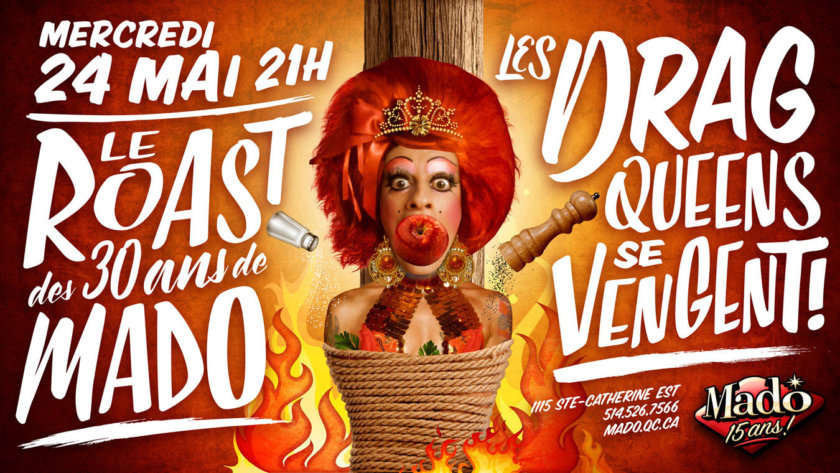
What could be more delightful than enjoying an evening cocktail with friends ? Well, in Montreal, that’s a piece of cake as you’ll find an abundance of bars and breweries practically everywhere!
You’ll also find plenty of joints where you can have a drink while playing board games . Be it classics like Monopoly or Jungle Speed, or some downright obscure games you’ve never heard of!
When I was living in Montreal, I used to frequent Randolph , but there are other game bars and restaurants worth checking out, such as: Colonel Moutarde , La Récréation , or Meltdown .
There’s also a wide array of diverse shows, including comedy shows , which are a really popular thing on this side of the Atlantic. You can head to Montreal Comedy Club or The Comedy Nest .
If you’re not in the mood for laughs but rather a bit of a scare, I also recommend a nighttime tour themed “The Ghosts of Old Montreal” . Accompanied by a guide, you’ll trace the spirits that haunt the historic center!
You can book your spot by clicking the button below:
And for a spicier version of a night out in Montreal , you should know that strip clubs are quite common in the city.
For the ladies*, I suggest Club 281 . Also known as a “male dancers bar” it offers Chippendales-style strip teases on stage, as well as “ private shows ” where you can pay for a dance with someone.
*Men are welcome to attend the shows if accompanied by a woman.
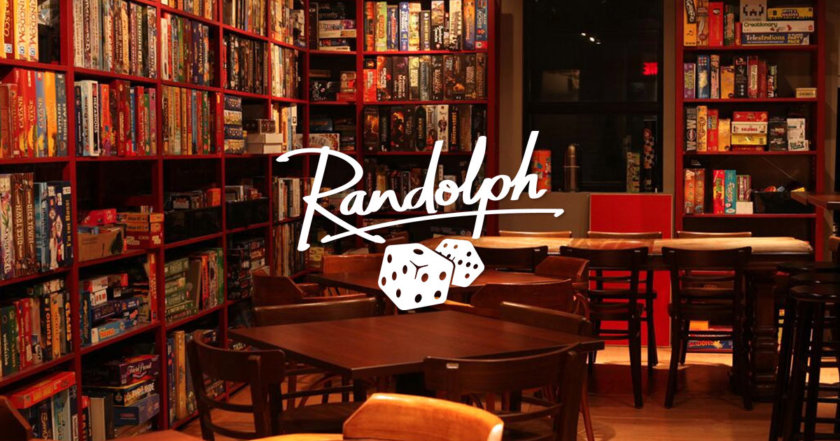
Winter delights in Montreal
Below, I present to you my selection of the best places to go in Montreal during winter .
Mount Royal Park is Montreal’s largest park , and in winter, its paths, hills, and pond transform for you to enjoy a variety of winter activities !
You can partake in:
- Sledding : Ideal for some family or friends’ fun, it’s the perfect place to enjoy this activity for free.
- Snow scootering : Like sledding, but standing up, for a change of pace!
- Ice skating : In winter, the beaver lake turns into a free public ice rink for everyone to enjoy. Take advantage!
- Cross-country skiing : The trails on Mount Royal provide an opportunity to indulge in this sport amidst beautiful natural surroundings, just a stone’s throw from the city.
- Snowshoeing : A great alternative to cross-country skiing!
If you don’t have your own equipment, don’t worry. You can rent everything (except sleds) at the beaver lake pavilion, which also serves as a cozy little restaurant to warm up after a fun glide session.
You can also opt for a guided snowshoe hike organized by the park. Your guide will take you on a 2-hour stroll through Mount Royal and introduce you to the local wildlife along the way .
The tour is highly engaging and even perfect for families with children (ages 8 and up).
Book in advance by clicking here !
And if you’re looking for a unique activity to do in Montreal , you’ll be pleased to know that you can also go night snowshoeing with a guide from the Amis de la montagne (Friends of the Mountain Association).
To book, click here:
To reach Mount Royal Park, you can take STM Bus No. 11 that goes all the way up to the hilltop in the park.
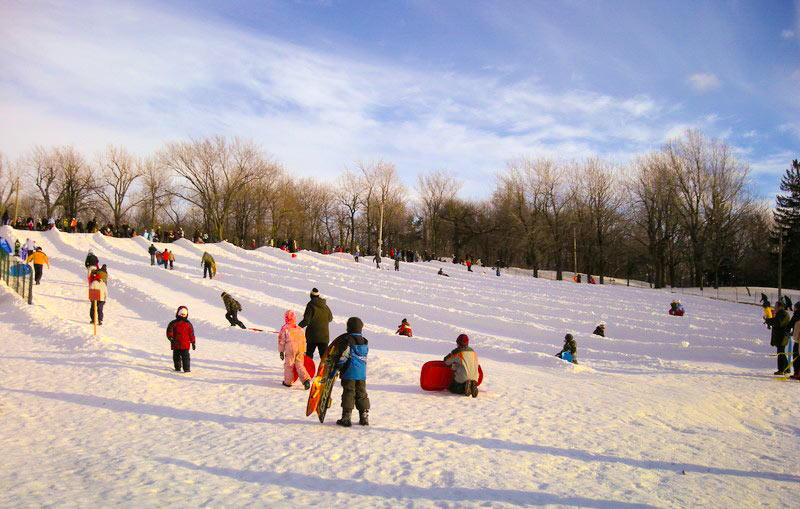
Ice skating is a quintessential winter activity in Quebec .
In Montreal, it’s hard not to get in on this action as each neighbourhood has its own charming little outdoor rink, free of charge . Kiddos can dip their toes into skating with minimal danger, and the grown-ups can engage in the sport that gets Montreal’s heart racing: hockey .
But the most picturesque place to lace up your skates is at Montreal’s Old Port. While there is a fee to skate on this large rink, the sight of the Old Port and Saint Lawrence River is simply stunning. It’s the trendiest place to skate in the city.
In addition to the Beaver Lake at Mount Royal Park that we previously mentioned, another bustling winter spot for ice skating in Montreal is Lafontaine Park .
Here, you’ll even see numerous parents skating while pushing their strollers on the ice ! Access to the ice is free. If you don’t have your own skates, you can rent a pair for $10.
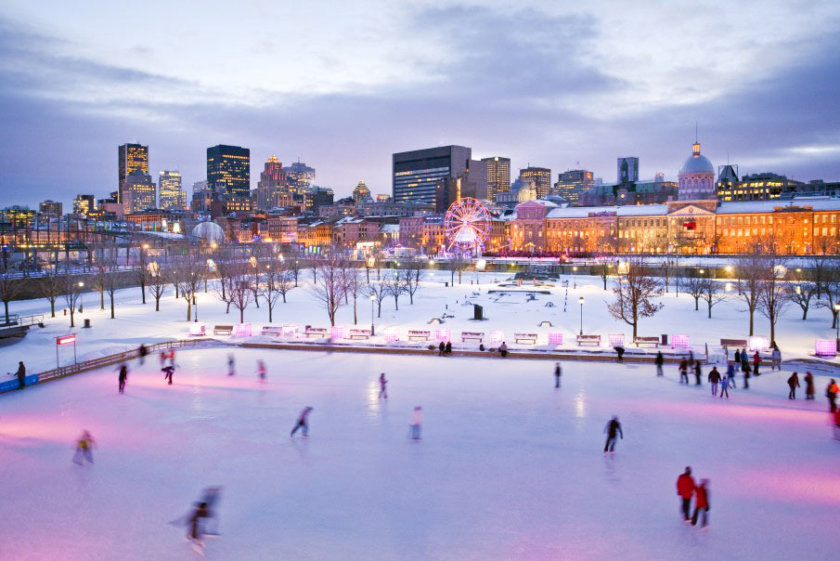
The “Fêtes des Neiges”, Montreal snow festival , is a must-attend family event held each winter. It takes place over four weekends between January and February at Jean-Drapeau Park . Entrance is free but some activities have additional costs.
All your favorite winter activities from Quebec are showcased here: ice sculpture workshops, tube sliding (on inflatables), skating, dog sledding, ziplining, musical performances.
You can also indulge in traditional Quebecois treats like maple taffy, beaver tails, and obviously, poutine .
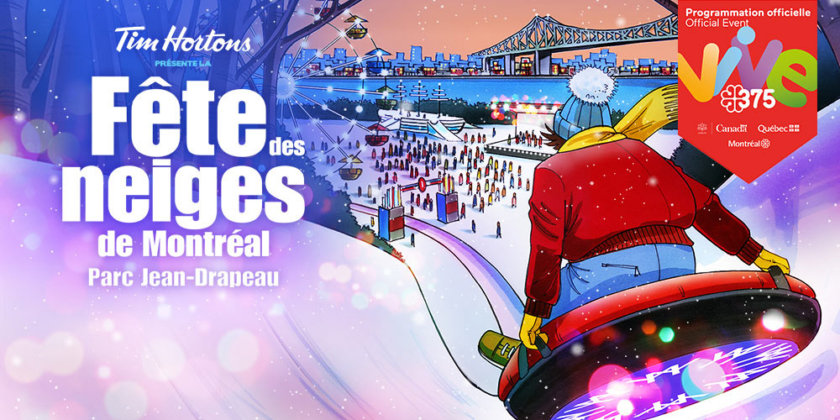
1) Ice Fishing
You can try ice fishing right in the city, specifically at the Old Port of Montreal . It’s certainly a less immersive experience than deep in the heart of Quebec, but it’s a great way to enjoy this activity if you’re short on time for a weekend getaway!
You’ll also be able to ski near Montreal .
Alpine skiing is a must-do winter activity in Quebec, and while it’s not the Alps, here are some friendly ski resorts:
- Mont Saint Bruno : Just 30 minutes from downtown, it doesn’t get much closer to Montreal! A favorite among city-dwellers, this small resort has 15 slopes.
- Mont-Rigaud : Also just 30 minutes from Montreal, this tiny 9-slope resort is known as the perfect place for beginners.
- Bromont : To the southeast of Montreal, about an hour’s drive away, is the Bromont ski resort, with a domain boasting 141 slopes.
- Mont Saint-Sauveur : An hour from Montreal, with its 40 slopes, it’s “Viking” roller coaster, numerous restaurants, concerts, and events, it’s a delightful place for a weekend! Mont Saint-Sauveur also has an excellent snowpark for freestyle lovers!
- Mont-Tremblant : The farthest ski resort from Montreal in this list, requiring a 1.5-hour drive. However, with its 96 slopes, charming “village” and après-ski activities, it’s one of Quebec’s most popular resorts.
3) Spas and hot baths
This activity, enjoyable all year round, is especially magical in winter! In Montreal, several spas offer outdoor hot baths throughout the year. Here are some of the most well-known:
- Strom Nordic Spa on Nuns’ Island (Île-des-Sœurs)
- Spa Bota Bota , in Old Montreal
- Scandinave Spa , also located in Old Montreal.
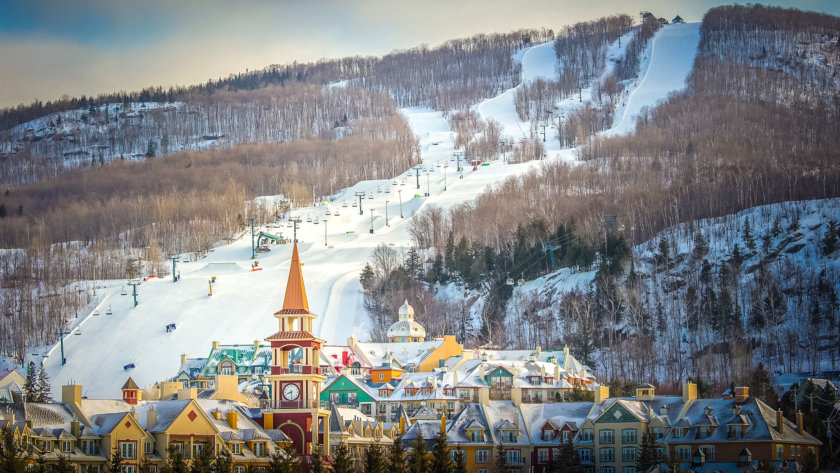
Visiting Montreal in the summer
Summer in Montreal, contrary to what you might think, it’s really hot ! So don’t forget to pack your sunscreen and a hat for your excursions.
Mount Royal Park, a highly renowned tourist spot in Montreal, has several shaded trails for cool walks and numerous vantage points with great city views .
Be sure to stop by the Mount Royal lookout for a panorama of the entire downtown area.
The park is also an ideal spot for jogging or cycling.
In summer, it’s the perfect place to have a picnic by the Beaver Lake (Lac aux Castors) , an artificial lake surrounded by a kids’ playground and various amenities, including a bar-restaurant with a terrace .
You can spot numerous curious and friendly squirrels there. A must-see during your stay in Montreal!
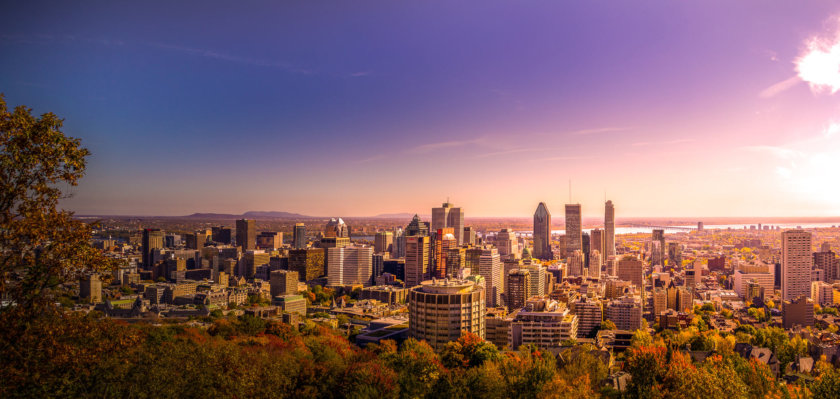
If you’re wondering what else to visit in Montreal, I suggest heading over to the Lachine Canal, located in the southwest of the city . Its 14.5-kilometer route starts from the old port and ends at Lake Saint-Louis .
In summer, it’s a dream spot for safely cycling along its tree-lined, well-maintained banks. The path is flat and away from traffic, perfect for a family outing in Montreal .
You can rent bicycles near Atwater Market at a small outdoor shack along the canal: Ma Bicyclette .
You can check out the Lachine Canal not just from the banks but also by hopping on different types of watercraft .
A rental service offers pedal boats, canoes, and small electric boats for hire.
The calm waters won’t cause any problems, and you’ll have fun crossing the numerous small locks .
Voici le site du centre nautique de Lachine.
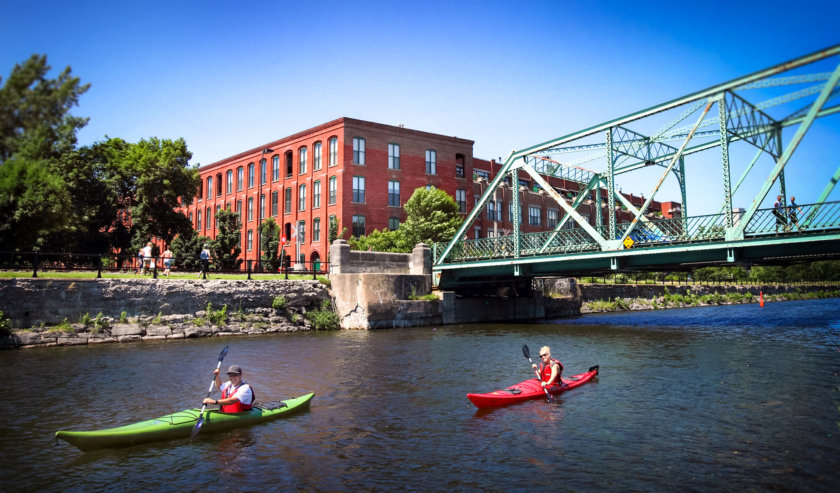
Contrasting with a peaceful walk along the Lachine Canal, you can choose a more exhilarating activity in Montreal: Jet Boating or Saute-Mouton as the locals call it.
You’ll tackle the Lachine Rapids, on the fleuve Saint-Laurent (Saint Lawrence River), aboard a rather special boat: guaranteed thrills! You’ll come out refreshed, or rather soaked.
Perfect for hot days – just bring a change of clothes!
Another idea for a boat trip in Montreal: Spin Boat . This fast boat takes sharp turns and spins around , hence the name.
In groups of about ten people, you’ll board the boat in Old Montreal’s port. The adrenaline rush is definitely guaranteed with an experience that can be compared to water rodeo !
However, it doesn’t venture into the Lachine Rapids , so don’t confuse it with “Saute-Mouton”!
All information is available here!
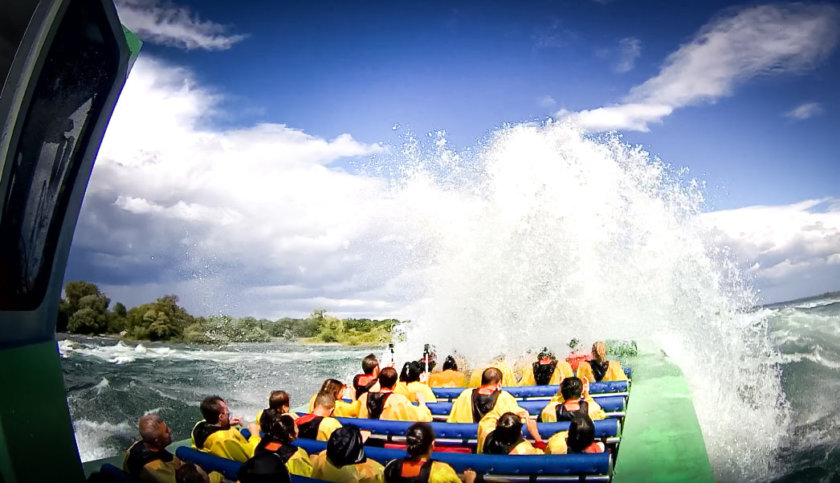
If you’re looking for some awesome spots to check out in Montreal, let’s head over to Parc Jean-Drapeau . It’s located on two islands just south of Montreal and has a ton of cool outdoor activities to enjoy.
Here’s the plan: 25 km of hiking trails, bike paths, kayak rentals, paddleboarding, rock climbing, wildlife and flora observation, supervised beach, food services, and picnic areas.
You’ll easily spend a whole day here. But, take a tip from me, stay till the sun dips down . That’s when you’ll get the most stunning panorama of downtown, with the city lights reflecting in the river, perfect for snapping some gorgeous photos!
These two islands, Saint Helen and Notre-Dame, which now form Jean Drapeau Park, were actually home to the 1967 World’s Fair .
Most of the pavilions were demolished after the expo, but today, the French pavilion, now the Montreal Casino , and the American pavilion, known as the Biosphere (that I mentionned earlier), remain.
Another relic from the World Expo is the Habitat 67 residential complex , located in Cité du Havre, not far from the park.
Jean Drapeau Park is also renowned for its vibrant music festivals , which I’ll discuss in more detail below. And don’t forget the Canadian F1 Grand Prix , happening every year!
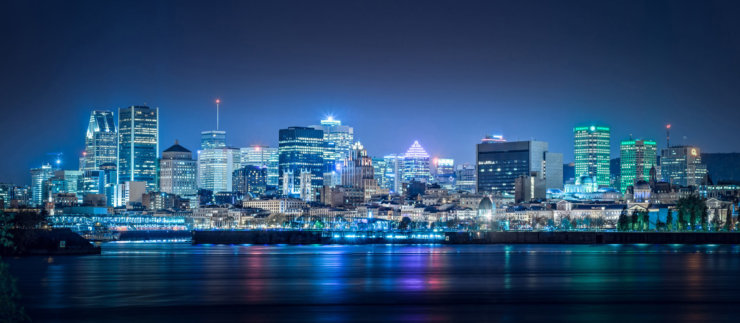
Besides Jean Drapeau Park, on Saint Helen Island you’ll also find “La Ronde” the amusement park , open every summer.
This park boasts 42 attractions including some quite impressive ones, like the “Ultimate Flight”.
To plan your day at La Ronde, you can check out the official website here .
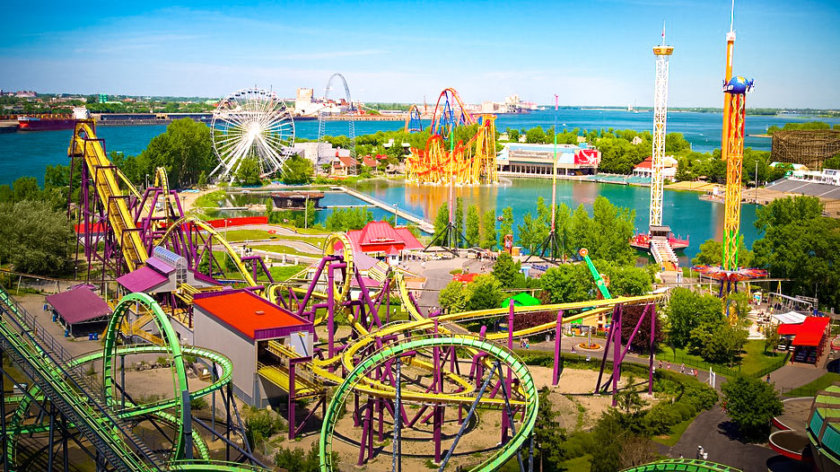
In addition to Mount Royal and Jean Drapeau Park, Montreal boasts many other delightful parks perfect for a break from the city’s bustling pace
1) Angrignon Park
Following Mount Royal, this park is the second-largest forested area in Montreal .
You can stroll along three ponds, a 1km lake, and shaded trails spanning nearly 10km. There’s also a specially designed 2km track for biking and rollerblading , which transforms into a cross-country ski track in winter .
Ideal for a family picnic by the water, barbecues are even available for use . A playground with swings is also on site.
2) Lafontaine Park
It’s one of the largest parks in Montreal city .
What sets it apart are the multiple outdoor sports fields open for free use: tennis, petanque, baseball, volleyball, and children’s playgrounds.
The park also hosts cultural events at the outdoor theater , a delightful spot for evening performances.
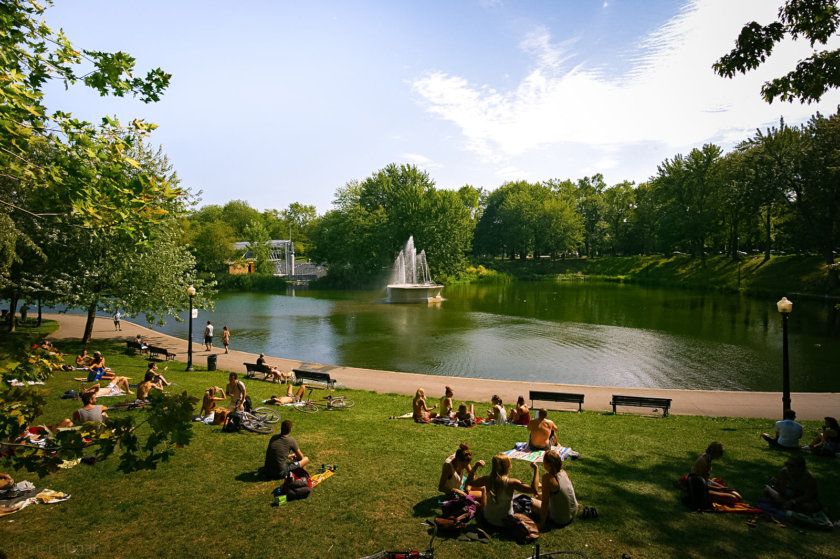
Nothing beats a day at a water park to chill out and have a blast.
In Quebec, I recommend the one at Mount Saint-Sauveur , about an hour’s drive from Montreal . It’s an ideal day trip when on a Canadian circuit tour !
This park is huge with its 12 water slides , toboggans , rafting and tubing descents , water games, wave pool , and other outdoor pools.

Festivals in Montreal
Throughout the year, Montreal hosts some brilliant festivals. Here are a few you shouldn’t miss!
Every year, Montreal hosts a massive music festival: Osheaga .
It’s held every summer at Jean Drapeau Park and lasts for three days . During this time, you’ll be treated to some great music. Top bands have performed here: Radiohead, Arcade Fire, Coldplay, Red Hot Chili Peppers, and more.
No doubt, if you want to see all those awesome stars, you’ll have to dish out at least $320 for the three-day festival. But hey, that doesn’t seem to stop the whopping 40,000 people who show up every single day.
Osheaga Festival website
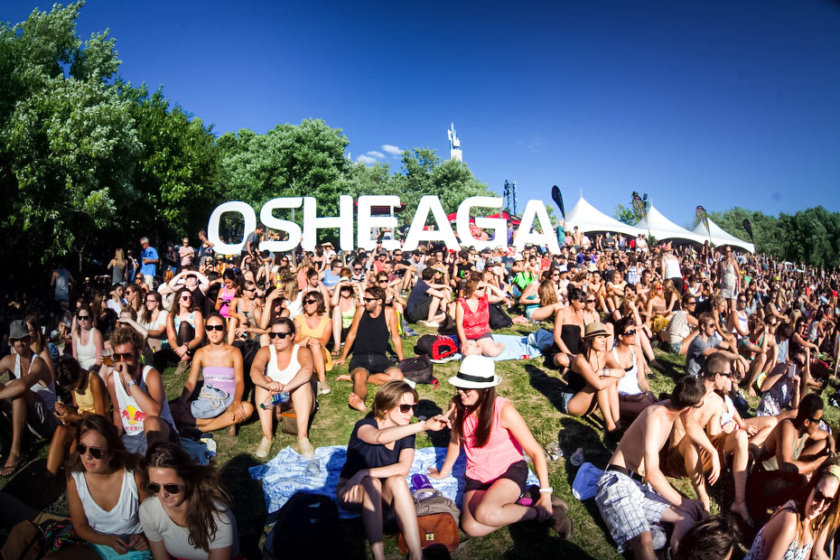
This is the winter electronic music festival you don’t want to miss in Montreal.
Igloofest has been rocking Montreal’s Old Port for about a decade now.
Several DJs from around the world heat up the dance floor over four weekends .
Igloofest website
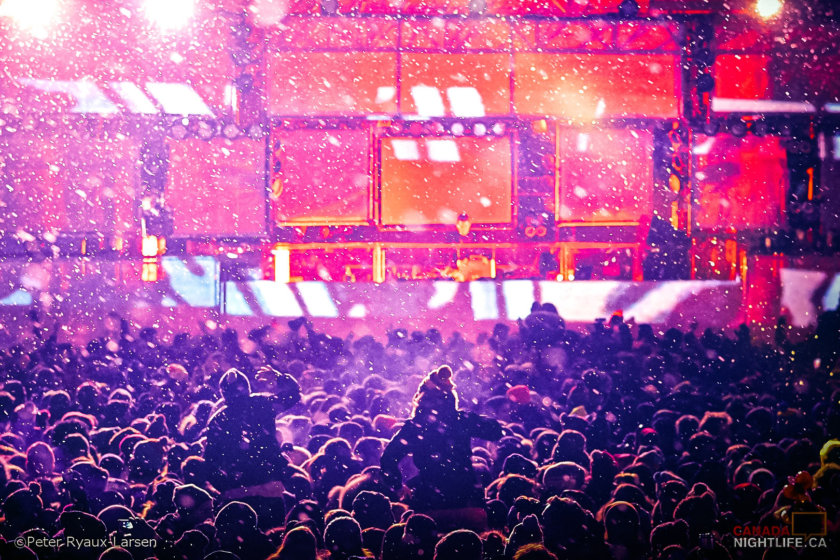
Another unmissable festival in Quebec during winter if you’ve decided to visit Montreal: the light festival attracting nearly 900,000 people each year.
The Montreal en Lumière program combines light installations , performing arts with theater, circus, singing , and gastronomy.
You can enjoy many free activities (ferris wheel, zipline, giant curling), wander among the light art installations, enjoy various street performances, and sample Quebec culinary specialties at the street stalls.
The festival also includes “La Nuit Blanche”, Montreal’s White Night where you can visit certain museums and churches, participate in dance, singing, or artistic creation workshops, all for free. In total, there are more than 200 activities to enjoy.
Montréal en Lumière website
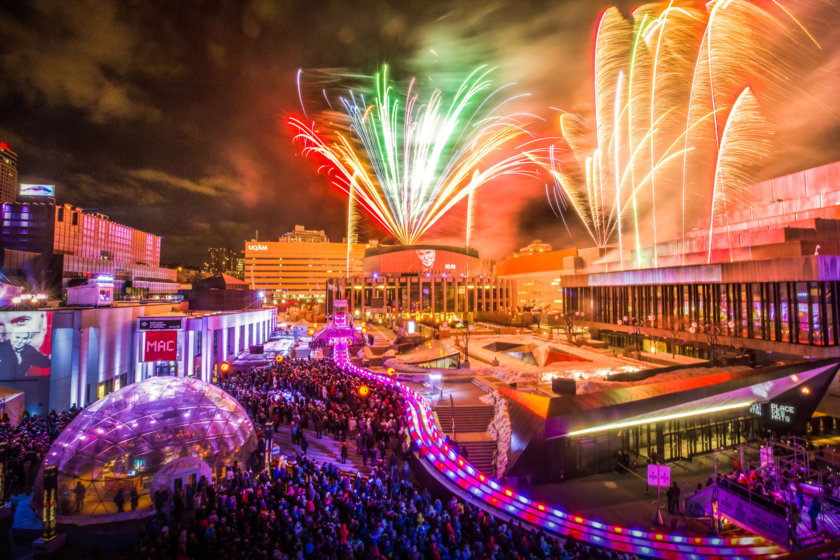
The “Festival Juste pour rire” or Just for Laughs Festival is a comedy festival held annually in Montreal.
It’s the largest festival of its kind in the world and a true tradition in Quebec. On the agenda: a large number of comedians presenting their shows, both indoors and in the street.
The program is highly diverse and of excellent quality .
Festival Juste pour rire website
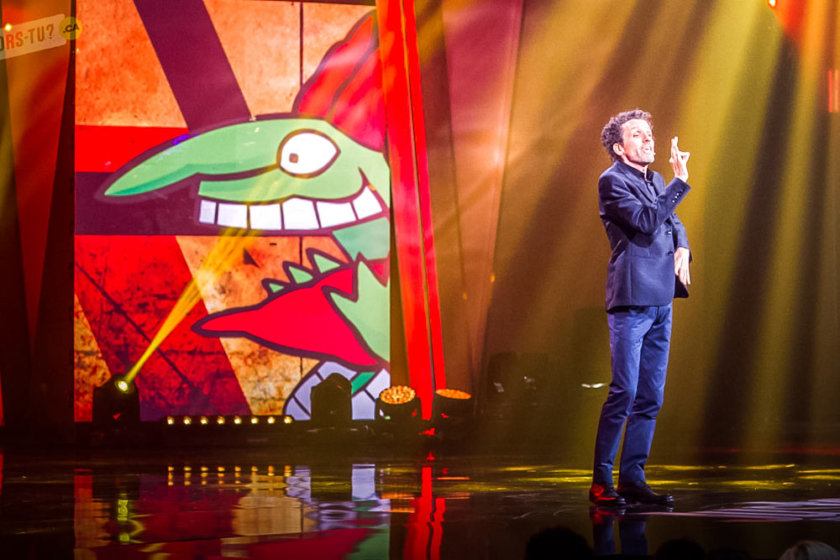
Best things to do around Montreal
For those craving the great outdoors, there’s a bunch of things to discover around Montreal . Here’s a little selection of places to visit!
When talking about Quebec, you can’t skip mentioning the special season that characterizes it: autumn and its fiery colors.
If you want to admire this unique landscape firsthand, around Montreal, I recommend heading to Mont-Tremblant, just an hour’s drive away.
In winter, it’s a ski resort but in the fall, the forests take on warm colors, and it’s a profusion of red, orange, and yellow trees as far as the eye can see .
It’s the ideal time for long hikes. You can either hike up the mountain or catch a lift (only on weekends) to reach the top and take in the stunning view of the valley below with its picturesque lake reflecting the vibrant colors.
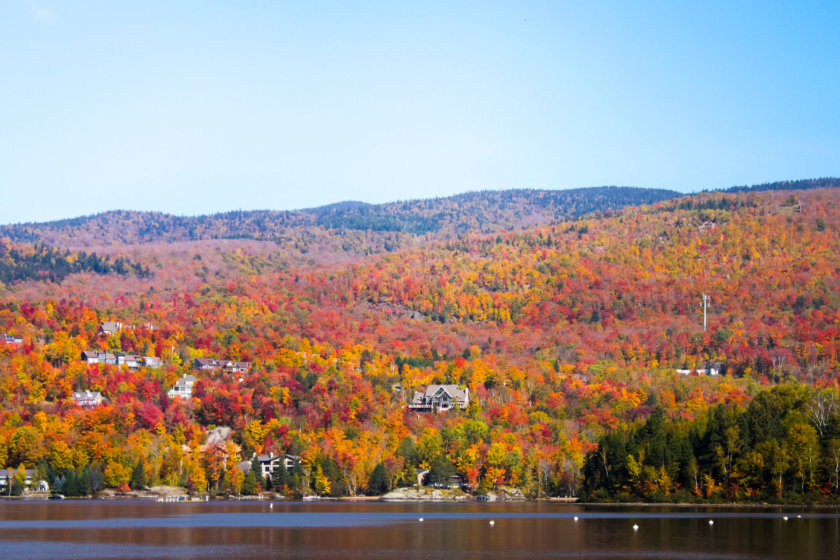
The Cap-Saint-Jacques is the largest park in the Montreal area , sprawling across a whopping 300 hectares. Whether it’s summer or winter, you’ll be able to take tranquil strolls through this maple tree-dominated spot, nestled between a lake and a river, offering countless stunning views.
In the summer, you’ll have access to a massive natural sandy beach complete with picnic areas, and even pedalos and kayaks for rent. You can even fire up your own barbecue.
Come autumn, Cap-Saint-Jacques, with its west-facing beach, is the best place to watch the sunset over Montreal island. The light is just amazing!
Winter sees the park transform into a haven for cross-country skiing and snowshoeing , with all the necessary equipment available for rent on-site. You have around 32 kilometers of trails at your disposal. The on-site ecological farm turns into a sugar shack with a typical maple syrup-based menu.
But no matter the season, be sure to watch the sunset over the lake , it’s simply breathtaking and you won’t regret it. The lighting is perfect for some truly incredible photos.
Practical info:
- Open all year round, parking fees apply.
- To get there by public transport, take bus 64 from the Côte-Vertu metro station to the Cartierville terminus, then take bus 68 to the park entrance.
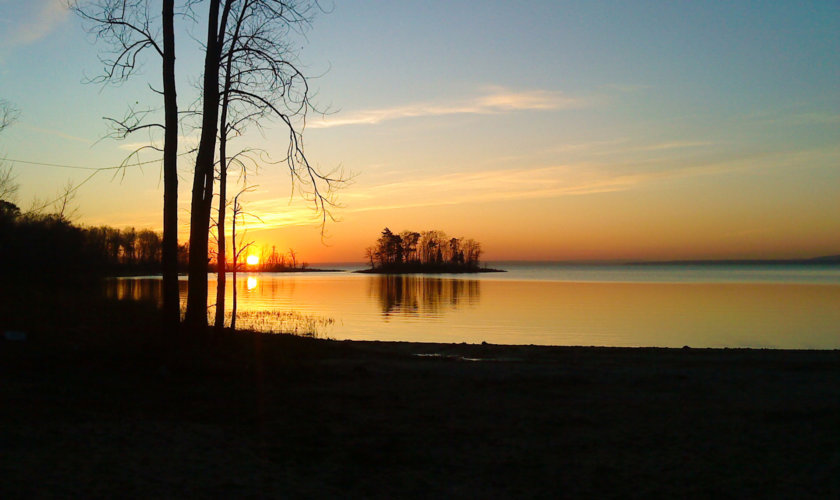
This wildlife park is situated between Montreal and Ottawa , about 110 kilometers from Montreal.
The park can only be explored by car as the animals live freely in their natural habitat.
Along a 10-kilometer trail, you’ll traverse meadows, forests, and lakeshores, giving you the opportunity to spot Quebec’s native wildlife, including moose, elk, black bears, and wolves . You’ll also have plenty of chances to stop and take photos.
You can easily spend half a day here, or even stay overnight! The park offers several unique accommodation options : teepees, prospector tents, wooden cabins, and stilt houses.
It’s one of the best activities to do near Montreal with kids .
Parc Omega is open all year round , hours and prices vary depending on the season, you can find all the information here: Parc Omega .
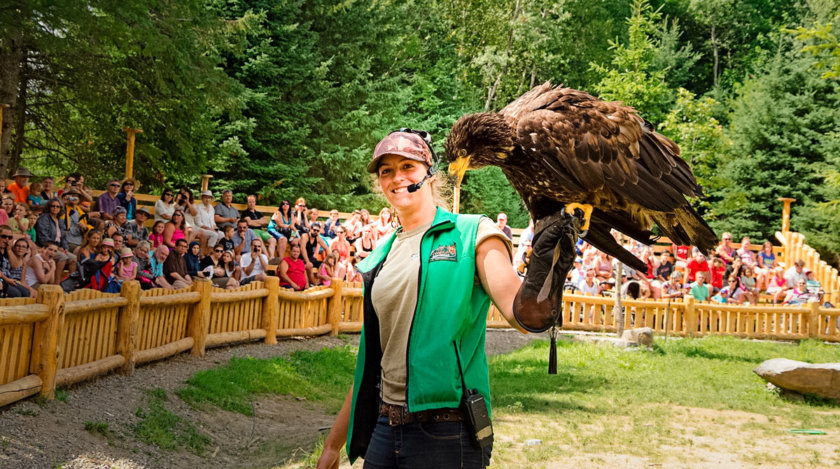
Still in the Montreal area, you can also try out some super cool activities (click on the orange links to book):
- Dog sledding in Saint-Hippolyte near Montreal
- Dog sled ride through maple groves , near Montreal
- Snowmobile outing near Montreal, in Saint-Hippolyte – Duration: from 1h to 8h
- Snowmobile excursion in the Laurentians , departure from Sainte-Agathe-Des-Monts – Duration: from 2h to a full day
- A guided quad ride near Montreal
- Whitewater rafting down the Red River (Rivière Rouge) in Mont-Tremblant
- A canoe descent on the Assomption River , (Rivière l’Assomption for the locals) in Mont-Tremblant nature park
- Via ferrata between Montreal and Mont-Tremblant, at Mont Catherine
- Zip-lining , also at Mont Catherine
- Ice climbing adventure in Montreal
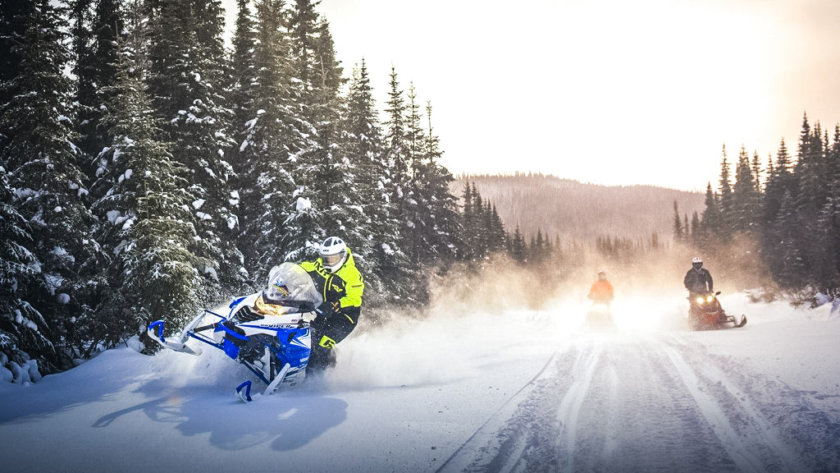
33. Best things to do in Montreal My top places to eat
For me, this is, hands down, the best cheesecake I’ve ever had!
In Montreal, if you spot a Rockaberry, there’s no way you can walk past their window full of cheesecakes and pies , each looking more delicious than the last.
The hardest part is then choosing between the Rockabrownies, Banalicious, Mochamisu, or any of the fruit crumbles (blueberry, strawberry, raspberry, etc.).
Rockaberry’s website
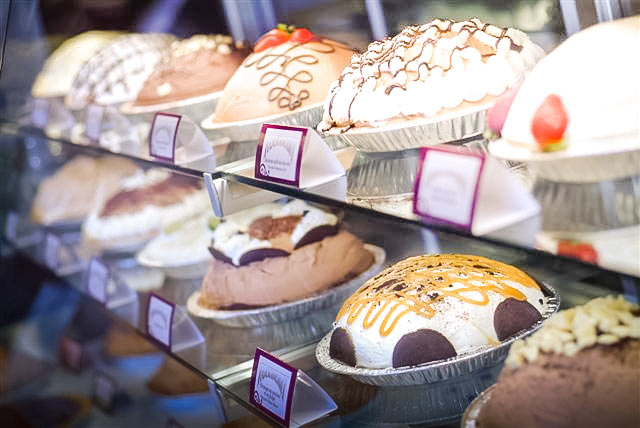
During your stay in Montreal, you can’t miss trying this iconic Quebec dish ! Loved by some, hated by others, it’s up to you to form your own opinion about poutine .
The traditional poutine is quite simple, and consists of 3 ingredients:
- “Curd cheese”
You can find poutine in all sorts of varieties, from the basic poutine made with frozen fries from a fast food spot to the fancy homemade version with hand-cut fries cooked in duck fat. There’s something for every poutine lover out there!
Poutine is everywhere in Quebec: you can eat it at any hour in restaurants open 24/7. It’s actually the go-to choice for Montrealers after a night out!
Some restaurants even offer no less than a hundred different recipes , but beware, not all are created equal. The two most famous restaurants in Montreal for their poutine are:
- La Banquise , open 24/7.
- Poutineville : a name that speaks for itself!
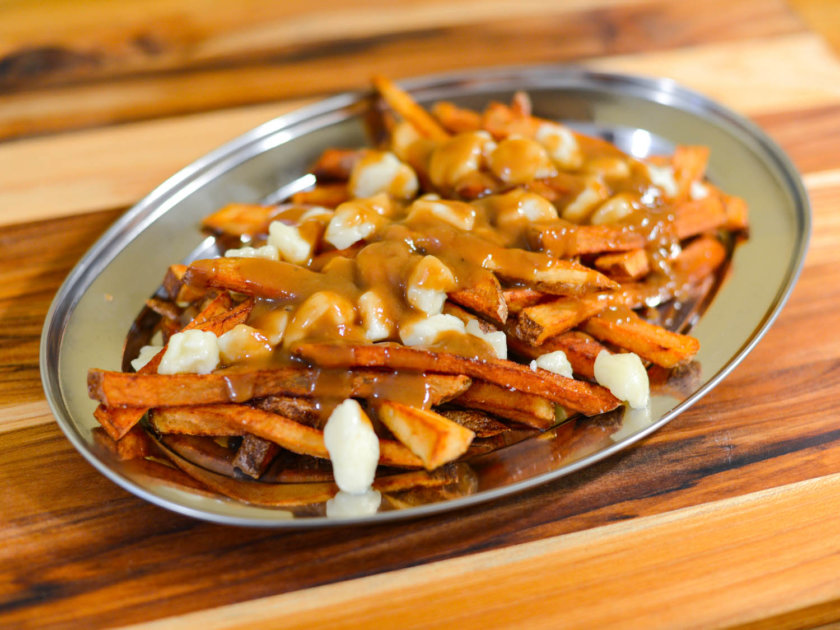
Montreal is like a haven for brunch enthusiasts ! But what does the Quebec version of this meal, which falls between breakfast and lunch, entail?
The classic brunch you’ll savor in Montreal includes:
- Eggs , cooked in every possible way
- Baked beans or “Fèves au lard” as the locals call it
- Maple syrup , to drizzle all over!
- A coffee or tea and orange juice.
In addition to that, each restaurant has its own specialty and also offers a variety of options such as fresh fruit salad, smoothies, pancakes, crepes, sausages, bagels , and much more.
- L’Avenue , which well deserves its reputation for an excellent brunch, but be warned, expect a long wait before you can indulge.
- Fabergé : This trendy restaurant in Montreal’s Mile-End district serves a fantastic brunch with some original specialties!
- Le Hot Dog : This unassuming spot on the Plateau Mont Royal is a must for potato lovers, because they serve some seriously delicious, well, potatoes!
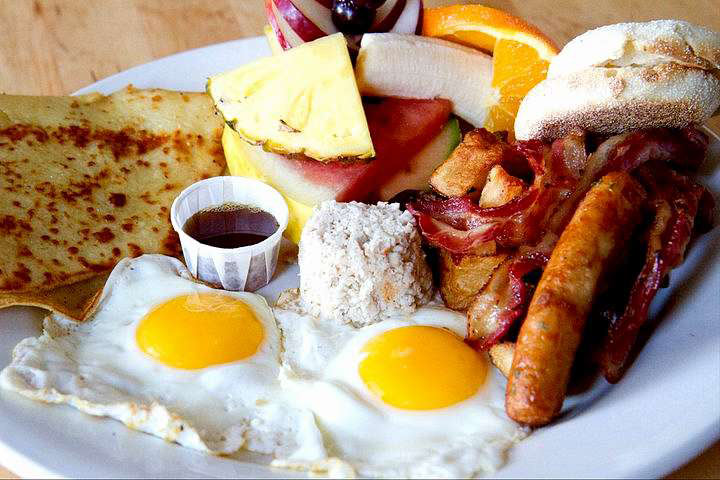
Another spot where you can dive into culinary adventures is Montreal’s Chinatown , brimming with cute little restaurants offering typical dishes from Chinese cuisine .
Here, you’ll get to try the famous bubble tea , a beverage made with tea, fruit, and tapioca pearls that line the bottom of the glass, sucked up with a fat straw.
Also a must-try: the numerous biscuits or cakes all soft and squishy from the Chinatown’s Chinese bakeries.
In Montreal’s Chinatown, you’ll also find a large Asian grocery store . If you’re staying in Montreal, this is the best place to shop for Asian products!
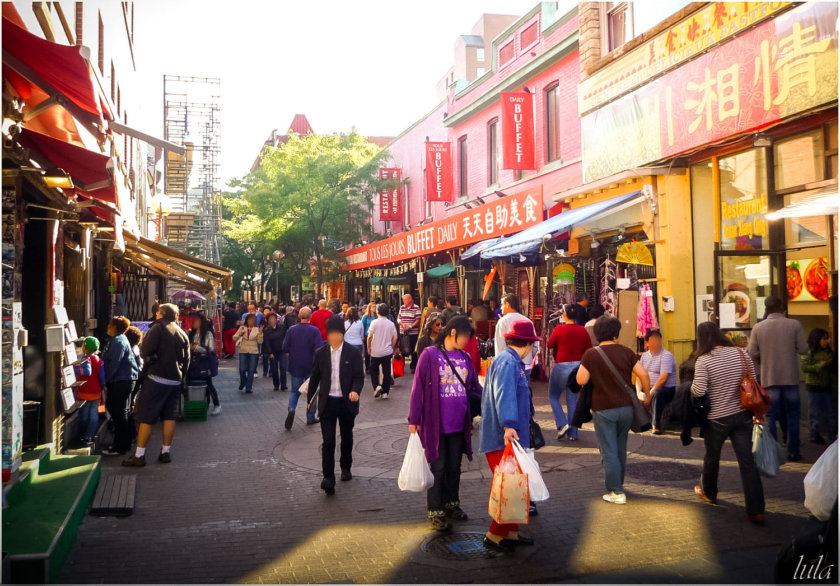
I just had to mention it, as it’s kind of my canteen in Montreal: “L’Arrivage” restaurant at the Pointe-a-Callière Museum . A foodie myself, I was a bit hesitant to dine at “the museum’s restaurant” the first time, but I came out totally amazed. Honestly .
Located on the museum’s second floor, the restaurant offers a fantastic view of Montreal’s Old Port .
They serve a different gourmet menu every week , and the dishes are truly delicious. I recommend you to try the “Table d’hôtes” menu with a starter, a main course, and dessert for less than $25. At this price, you’ll enjoy a sophisticated meal in an exceptional setting with unrivaled service.
It clearly is the best value for money in Montreal, and by a long shot ! It’s a hidden gem, even among Montrealers.
However, note that the restaurant only opens for lunch!
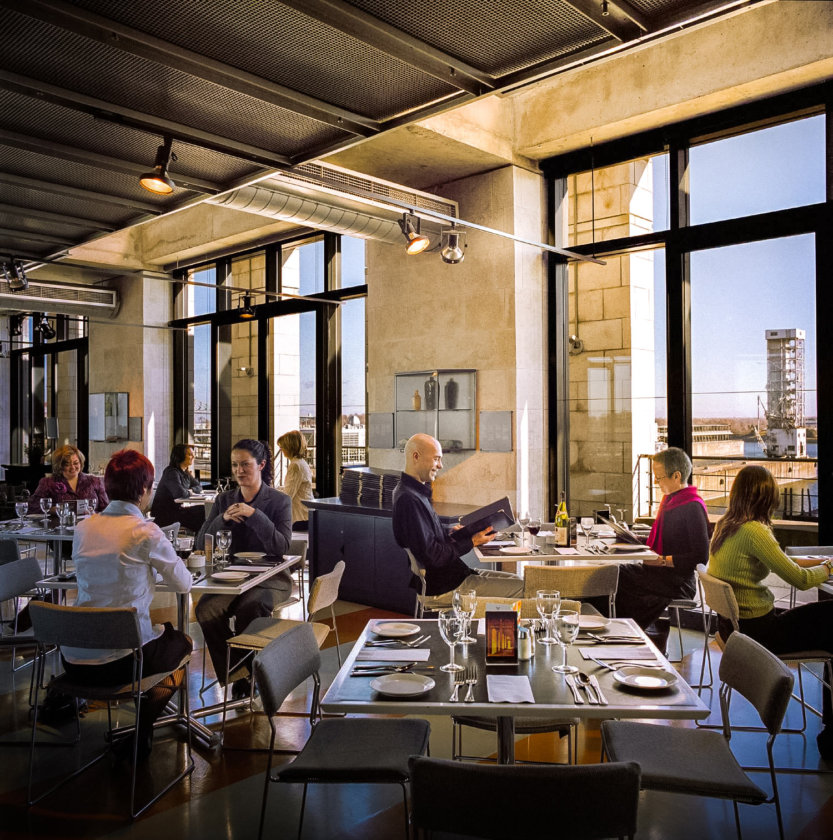
The TimeOut Market is located on Saint Catherine Ouest street, in the Eaton Centre and brings together more than a dozen of restaurants and bars all in one place .
The atmosphere is really cool, with a chic and modern vibe and carefully crafted decor. You can feast on dishes from all over the world : Indian, Italian, Greek, Vietnamese, Caribbean, Spanish… The dishes are truly of excellent quality and exceptionnaly well-cooked .
Everyone can pick their favorite dishes and gather at the shared tables in the center. That way, no one has to argue about which restaurant to choose!
Open every day from 11:30 am to 9/10 pm.
Craft beer lovers will be thrilled to learn that Montreal has numerous microbreweries , each with its own specialties! Here are a few addresses:
- Brasserie Harricana , 95 Jean-Talon West Street
- Pub Brouhahah , 295, Avenue Papineau, Ahuntsic
- La Succursale , 3188 Masson Street
- HELM microbrasserie , 273 Bernard O Street
- Dieu du Ciel! 29 Avenue Laurier Ouest
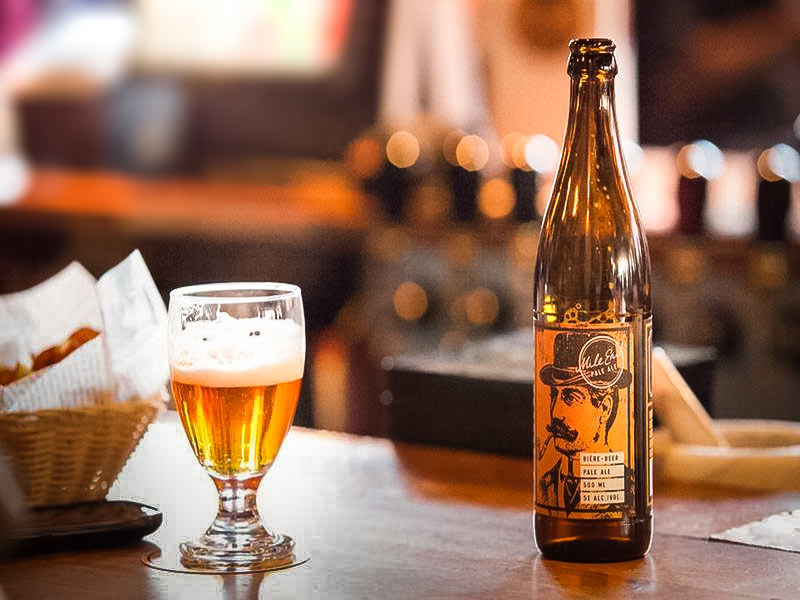
- M Montreal : A youth hostel just a 5-minute walk away from Berri Uquam metro station on Sainte Catherine street. You can grab a bed in a modern, cozy dorm for just 25€ a night, breakfast included. You can also book a double room if you prefer. Strong points: Super friendly staff, modern facilities, basement bar with occasional live performances. A fantastic choice for budget-friendly accommodations in Montreal !
- Best Western Plus Hotel Montreal : Located in the bustling Quartier des Spectacles. You can book a warm, spacious double room starting from €150 per night. Strong points: Perfect location for exploring Montreal, clean and comfy beds.
- Le Dauphin Montréal Centre-Ville: : Just 200 meters away from the Notre-Dame Basilica of Montreal and a 5-minute walk from the Old Port. Double rooms starting from €170, breakfast included. Strong points: Great location, spacious rooms, and large beds.
- Le Petit Hotel Montreal: : Located in the historical center of Montreal. Rooms with character (think stone walls and exposed brick) starting from €250, breakfast included. Strong points: Excellent service, a delicious breakfast, and the charming ambiance of the hotel.
- Le St-Martin Hotel Centre-ville – Hotel Particulier: : Just 50 meters away from Saint Catherine West Street. Stylish, cozy double rooms starting from €290. Strong points: An enchanting pool with waterfalls and jets, delightful staff, prime location, and comfort. My recommendation for a high-end stay in Montreal !
- Hôtel Birks Montréal : Located in the city center, this 5-star hotel offers beautifully decorated rooms starting from €500, with breakfast at an additional €19. Strong points: Prime location, beautiful architecture, friendly staff, and a luxurious spa. The best hotel in Montreal for a luxury stay !
My impressions of Montreal
What I absolutely adored about Montreal, and the reason I ended up staying for two extra years (originally planning just one), is the incredible vibrancy of each neighborhood. It’s like living in a close-knit village rather than a sprawling metropolis.
Tons of local shops, welcoming folks, top-notch quality of life, and varied activities across different seasons make Montreal one of the most enjoyable cities to live in worldwide!
Tips for those living in Montreal
In addition to travelers, many French folks choose to make Montreal their new home . Having lived there for three years, here are some nuggets of wisdom from an ex-Montrealer. If you have more, I’d be thrilled to add them to the list!
If you’re longing for “European-style” dining, food can quickly burn a hole in your pocket at standard supermarkets like Provigo and IGA (think peppers at $9 a kilo or chicken fillets at $25 or more!).
So, I’d recommend heading to a little grocery store called Esposito . There are four in Montreal; pick the one that’s closest to you. Chances are you’ll halve your grocery budget.
As a European person, if there’s one thing you might miss in Montreal, it’s the cheese . Of course, you can find it, but it often comes with a hefty price tag (Hello, Roquefort Papillon at $100 a kilo!).
But don’t worry! There’s a place where you can get cheeses (and lots of other stuff) without breaking the bank. Head to Aubut , a wholesale store open to the public!
They offer tons of products, including a delicious brie , sometimes even on sale at $10 a kilo.
Address : Aubut, 3975 Saint-Ambroise Street .
If you’re living in Montreal, it’s highly likely you’ll want to try ice skating, snowshoeing, or even skiing. But if you’re only there for a year, you don’t want to spend a fortune! It’s best to rent for the season or buy second-hand gear. And where can you do that?
The answer: at La Poubelle du Ski ! Don’t let the less-than-charming name fool you (poubelle means trash can in French), it’s a hidden gem well-known to Montrealers. A small shop where you can rent or buy great gear at a fair price. For example, I got a pair of brand new hockey skates (not a scratch) for half the retail price.
Address : La Poubelle du Ski – 8278, St-Laurent Boulevard
So, what are your plans for exploring Montreal? Tell me about your favorite places in the comments!
Discover all my articles about Canada : All my articles to help you plan your trip to Canada are listed there.
- 20 Best Things to do in Canada
- 20 Best Things to do in Quebec – All best places to visit in the French-speaking province!
- Itinerary: One week in Canada: The perfect itinerary to visit Canada in 6, 7 or 8 days!
- Itinerary: 10 days in Canada: All my best tips for organizing your 10-day trip to Canada
- Itinerary: 2 weeks in Canada: How to visit Western Canada in 15 days.
- Itinerary: 3 weeks in Canada: My epic itinerary to visit Western and Eastern Canada in 21 days
- Itinerary: 1 month in Canada: How to visit Eastern Canada in a month!
- Itinerary: One week in Quebec: How to visit Quebec in 6, 7 or 8 days, with all my best tips!
- Itinerary: 10 days in Quebec: An amazing 10-day itinerary in Quebec
- Itinerary: 2 weeks in Quebec: All my best tips to visit Quebec in 14, 15 or 16 days
- Itinerary: 3 weeks in Quebec: the perfect 3-week road trip in Quebec !
- Road trip in Canada: The best itineraries for 7, 10, 15, 21 days and 1 month
- Road trip in Quebec: The best itineraries for 7, 10, 15 and 21 days
- Calgary : Top 11 things to do during your visit
- Montreal : 33 best things to see and do
- Ottawa : 15 epic places to visit
- Quebec City : Top 17 things to do and see
- Toronto : The 17 things to do during your stay
- Vancouver : Top 25 places to visit and activities
- Toronto in 3 days – The perfect itinerary to visit the city in 72 hours!
You’re using Pinterest? Here is the picture to pin!
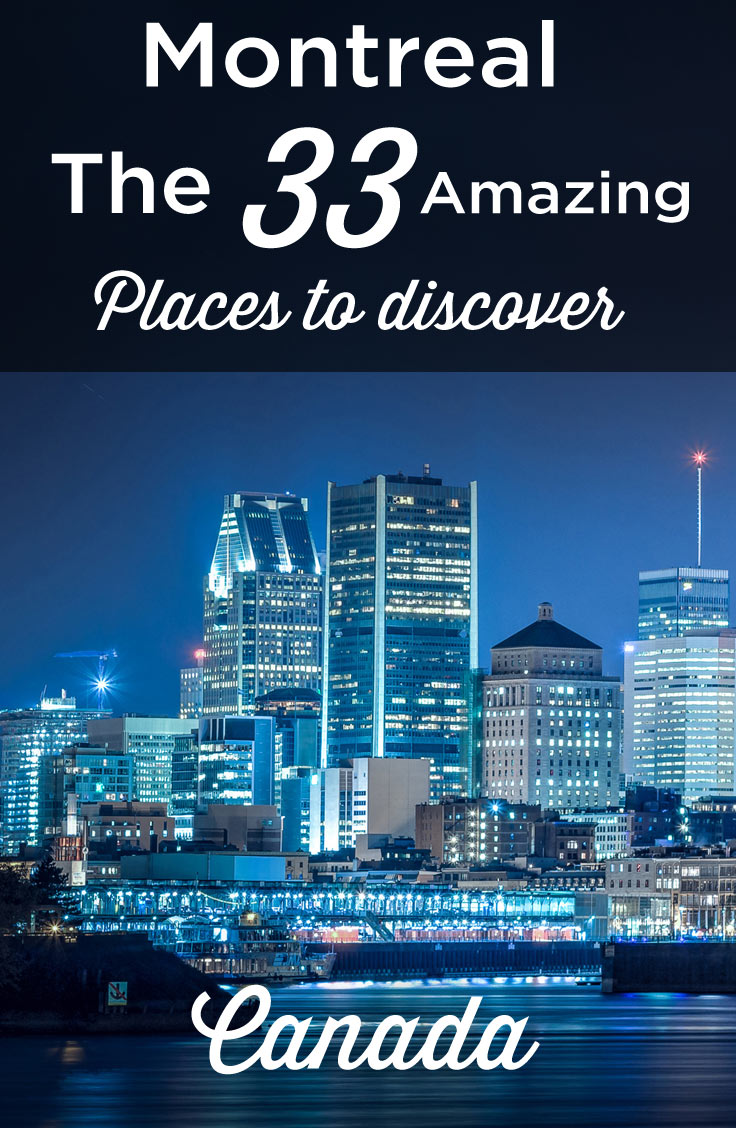
Creator of the Voyage Tips blog, travel and photography lover. I give you all my best tips to plan your next trip.
Related Stories
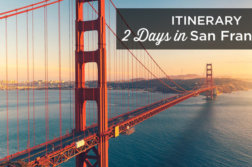
2 Days in San Francisco: The Perfect Itinerary (First Time Visit)
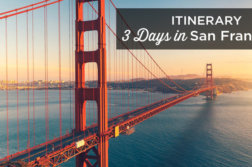
3 Days in San Francisco: The Perfect Itinerary (First Time Visit)
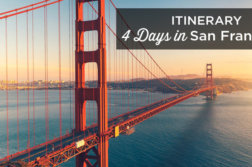
4 Days in San Francisco: The Perfect Itinerary (First Time Visit)
Leave a reply cancel reply.
Your Name (required)
Your Email (required)
Your Website (optional)
Save my name, email, and website in this browser for the next time I comment.
- 3.8K shares
- Middle East
- North America
- Cheap car rentals: my best advice
- Back to Homepage

Montreal Travel Guide
Last Updated: August 30, 2023

Montreal is Canada’s “European” city. It’s one of the five largest French-speaking cities in the world, and at one point it was even the capital of the country. The second-largest city in the country, it’s charming, historic, and unlike Canada’s other large cities.
Personally, I think it’s one of the best cities in Canada. The city’s Old Town looks like something straight out of medieval France and the French-inspired cuisine and eclectic nightlife (especially the jazz clubs) leave little to dislike. For outdoor explorers, there are a lot of incredible bike paths and nearby mountains to hike to.
I first came here when I was 18 because it was the closest place to where I lived that allowed me to drink (the legal drinking age is 18). Subsequent visits as an adult have only made me appreciate the city on a deeper level and it remains one of my favorites in North America.
It’s also noticeably cheaper than Canada’s other large cities (I’m looking at you Toronto and Vancouver ), so there’s good reason to stay awhile and soak up the unique culture.
This travel guide to Montreal can help you plan your trip, save money, and make the most out of your time in this incredible city.
Table of Contents
- Things to See and Do
- Typical Costs
- Suggested Budget
- Money-Saving Tips
- Where to Stay
- How to Get Around
- How to Stay Safe
- Best Places to Book Your Trip
- Related Blogs on Montreal
Top 5 Things to See and Do in Montreal
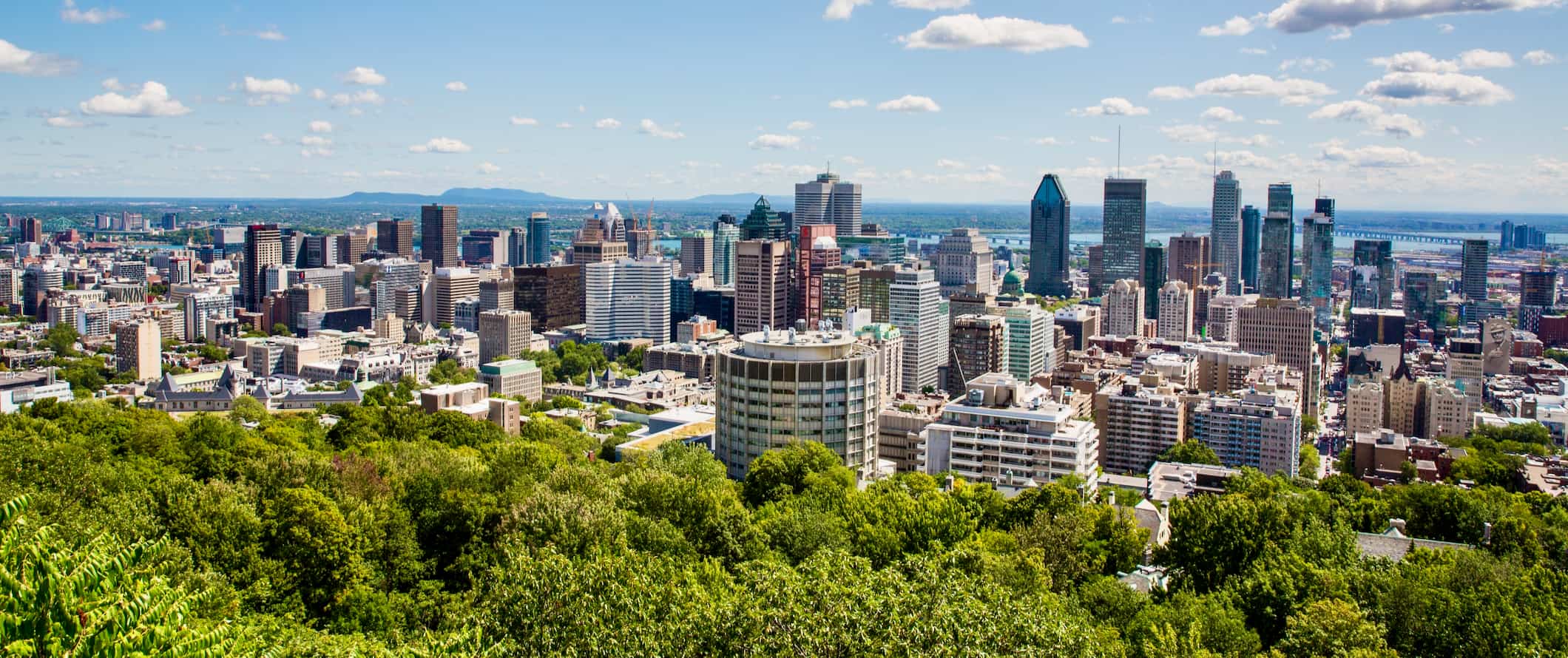
1. Walk around Old Montreal
Old Montreal is easily the most attractive part of the city. Its cobblestone streets and historic greystone buildings date back to the 1700s. When people think of Montreal, this is the part of the city they picture. Some of the city’s finest museums and art galleries are here too, including the Montreal Museum of Archaeology and History (admission is 25 CAD). You can also take a Ghost Tour with Get Your Guide for 21.50 CAD.
2. Visit the Place des Armes
This is one of three main squares in Old Montreal dating back to the end of the 17th century. Originally used for military events and markets, today it’s a beautiful piece of preserved history. Nearby is the Vieux Séminaire de St-Sulpice, Montreal’s oldest seminary and building (built between 1684-1687) for the Catholic Order of Sulpicians. You’ll also find the majestic Notre-Dame Basilica cathedral here, lauded for being one of the most beautiful churches in North America. Lastly, there is the Bank of Montreal’s founding building, and also the New York Life Insurance skyscraper, constructed in 1888. The plaza is a wonderful place to people-watch and take in the local pace of life.
3. Relax on Mont Royal
This beautiful park is one of the highlights of the city and a symbol of the city’s heritage (Montreal comes from ‘Mont Royal’). With 200 acres of lush vegetation, it’s a great place to stroll around or walk up the “mountain” (it’s just a large hill) for fantastic views over the city skyline. On Sundays in the summer, the park comes alive with picnickers and the “Tam-Tams” — an eclectic drum circle that draws huge numbers. The park is open all year round and attracts a broad range of sporting enthusiasts for jogging, skiing, skating, boating, biking, sledding, and more. With so many activities, it’s a great place to spend a sunny day.
4. See the Biodome
The biodome features four distinct ecosystems. You can visit the Tropical Forest, see otters and lynx in the Laurentian Maple Forest, visit the puffins on the Labrador Coast, and explore the volcanic landscape of the Sub-Antarctic Islands. There are over 200 species of animals here and some 750 different species of plants. Admission is 21.50 CAD. It’s especially fun and educational for kids.
5. Tour the Museum of Fine Arts
This enormous museum has over 43,000 works of art, with many temporary exhibits on rotation as well. There are five intersecting pavilions but the Claire and Marc Bourgie Pavilion is especially worth seeing for its collection of Quebec and Canadian art, including Inuit art. The museum is famous for its community and education collaboration to create unique art experiences as part of its art therapy initiatives. Admission is 24 CAD.
Other Things to See and Do in Montreal
1. take a free walking tour.
Whenever I visit a new destination, one of the first things I do is take a free walking tour. It’s the best way to see the main sights and connect with a local guide who can answer all your questions. Free Montreal Tours has a comprehensive two-hour tour that covers all the main highlights. Just be sure to tip your guide at the end!
2. See the Jardin Botanique
Montreal is home to the second-largest botanical garden in the world. Spanning 185 acres and opened in 1931, it showcases ten indoor greenhouses including a Chinese garden, a Japanese garden, a lily garden, and a rose garden. There’s also a tranquil First Nations Garden designed to represent the natural environment of Quebec’s First Nations, including plants from the Nordic Zone. Admission is 22 CAD. Combined tickets offering discounted rates are available if you also want to visit the Biodome or one of the other museums in the Espace Pour La Vie (Space for Life) natural museum complex. On Thursdays, Planetarium tickets are only 8 CAD after 5pm.
3. Wander the Jean-Talon Market
The city’s largest market hosts hundreds of stalls in the middle of Little Italy. Shops and small specialized grocers surround the square, so be on the lookout for Quebecois delicacies like pure maple syrup or ice wine. One of the oldest markets in the city, it’s a great place to have lunch or grab fresh food for later. There are often events like workshops and culinary demonstrations here too, so you never know what you might stumble upon.
4. Take a half-day bike tour
On a three-hour guided bike tour with Fitz & Follwell, you’ll visit some of Montreal’s key sites including Old Montreal, Mile-End, Mont Royal, and the Plateau. They also offer themed tours to certain neighborhoods, like the North End, where you’ll explore open-air markets and street art. Bikes and helmets are provided, and the 16-kilometer (10-mile) route has an easy-going pace, making this tour accessible for anyone who can ride a bike. Three-hour tours start at 70 CAD. Ça Roule Montreal on Wheels has four-hour tours for 32 CAD or a full-day rental for 40 CAD (helmet and lock included).
5. Relax in Parc La Fontaine
Whether you want to play beach volleyball, tennis, or just have a picnic, Parc La Fontaine is a relaxing spot to kick back and enjoy. This former farm became a public park in the 19th century and has been a beloved community greenspace ever since. In the summer, there are free performances at the outdoor Théâtre de Verdure, while in the winter you can skate on the pond or go cross-country skiing.
6. Walk around Le Plateau
This popular neighborhood combines shady residential streets, colorful old Victorian homes, boutique shopping, and trendy restaurants. Walk around and admire the architecture, pop into some antique shops, and keep an eye out for colorful street murals. In the summer, the Ave. du Mont-Royal even transforms into a huge street fair!
7. Take a boat ride
Montreal is on an island and there are 234 islands in its vicinity. To explore, you can take different boat tours of the harbor from the Old Town, as well as longer tours of the Lachine Canal and the nearby Boucherville Islands. Along the way, your guide can tell you all about the area’s maritime history. Some tours are limited to 30 passengers, which means you’re never competing for the best view. La Petit Navire offers tours starting at 23.50 CAD for the Old Town tour and 34 CAD for Lachine Canal.
8. See the St. Joseph Oratory
Standing nearly as tall as St. Peter’s in Rome (97 meters/318 feet), this basilica towers over the city skyline. It is one of the most visited shrines in the world, also housing a chapel and a crypt. Canada’s largest church, it’s the final resting spot for Brother André, a simple porter turned miracle worker from the early 1900s who supposedly had healing powers. The architecture is interesting as well, with a Renaissance Revival facade and Art Deco interior. Entry is free and guided tours cost 5 CAD (tours are currently suspended due to COVID-19). The Oratory Museum displaying art and heritage is 3 CAD open daily 10am-4:30pm. You can even stay at the Oratory overnight (55 CAD for a twin room, with breakfast included).
9. Visit the Notre Dame Basilica
This 17th-century Gothic Revival basilica started as a tiny stone church. Now, it’s a testament to the importance of religion and art in the city’s history (Catholicism is the dominant religion in Quebec). Its dual towers are reminiscent of the cathedral in Paris, and its interior is a stunning display of religious paintings, colorful stained-glass windows, and gold-leaf decorations. There’s also a 7,000-pipe organ inside. You can visit and do a 60-minute self-guided tour for 14 CAD. The award-winning Aura multi-media luminous experience (a light and projection show inside the church) is 34 CAD and has attracted over half a million people from all over the world.
10. See the Cabaret Mado
This entertaining drag cabaret is hosted by Mado Lamotte, an iconic diva from the city’s Gay Village. It’s been going on for 30 years and makes for a wild night of music, comedy, costume, and dancing, with guest performers each night. Don’t sit too close to the stage or else you’ll get roasted! Tickets start at 30 CAD.
11. Explore Parc Jean-Drapeau
Made up of two islands, Parc Jean-Drapeau covers 662 acres of green space and contains a racetrack, museums, and even the La Ronde amusement park. The park was the site of the 1967 World’s Fair and today it remains an important event space. Most of the city’s major festivals are held here, including Osheaga, the Canadian Grand Prix, and the Fête des Neiges (a free winter carnival). If you visit during the summer, check out Piknic Électronik, a weekly electronic music festival held each Sunday typically from May to the end of October. Everyone brings a picnic and a bottle of wine! Tickets are 20 CAD.
12. Take a food tour
Montreal is Canada’s food capital. Local Montréal Food Tours has several different food tours around town on which you’ll sample Montreal classics like Montreal bagels as well as poutine, a purely Canadian dish of fries, a gravy-like sauce, and cheese curds. They also have a brewpub tour if you find yourself extra thirsty as you explore. Prices start from 52 CAD for a two-hour tour.
For more information on other cities in Canada, check out these guides:
- Calgary Travel Guide
- Nova Scotia Travel Guide
- Ottawa Travel Guide
- Quebec City Travel Guide
- Toronto Travel Guide
- Vancouver Travel Guide
- Vancouver Island Travel Guide
Montreal Travel Costs
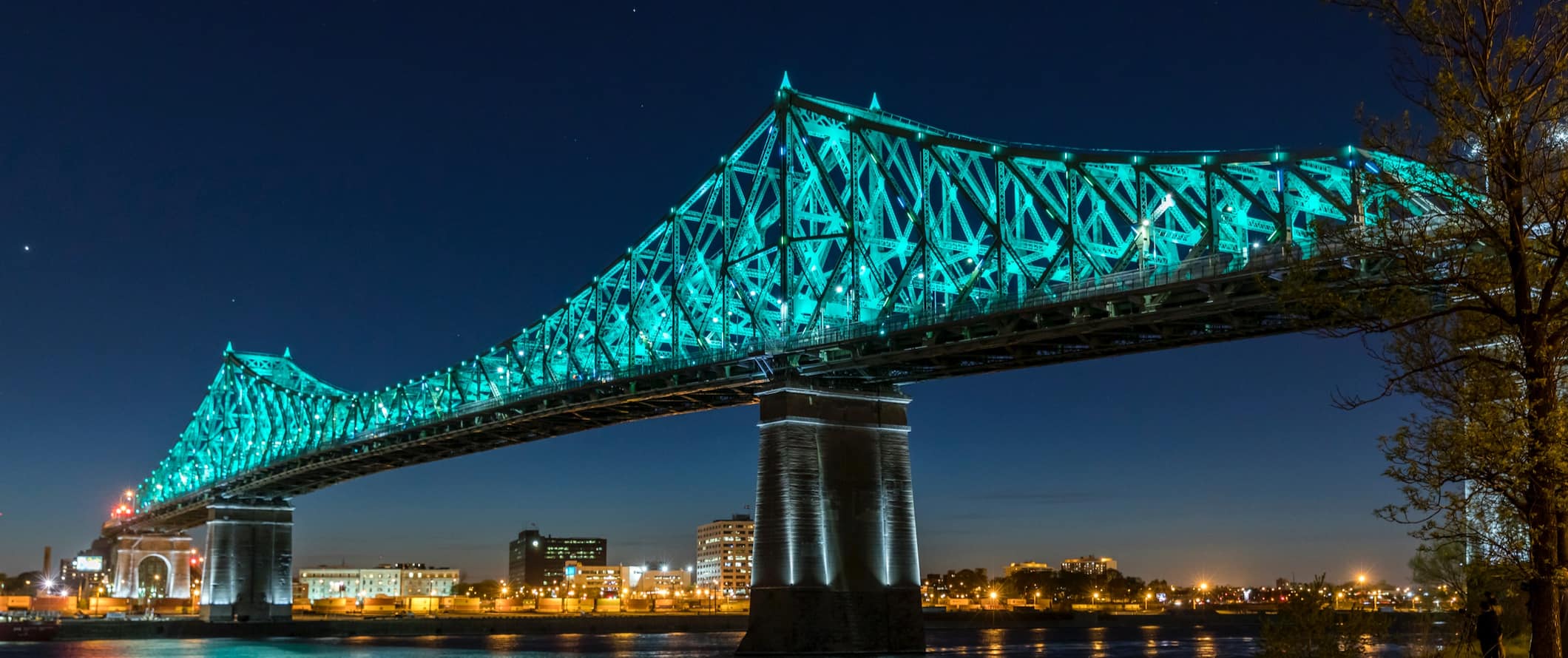
Hostel prices – A bed in a 4-8-bed dorm costs 35-45 CAD per night while a dorm with 10 beds or more costs 30-35 CAD. A standard private room starts at 75 CAD per night for two people but averages closer to 150 CAD. Free Wi-Fi is standard and most hostels have self-catering facilities. A couple of hostels also include free breakfast.
For those traveling with a tent, camping is available outside the city for around 25 CAD per night. This gets you a basic plot without electricity for two people.
Budget hotel prices – Budget hotels start at 110-125 CAD in the center of town. Expect basic amenities like free Wi-Fi, TV, AC, and a coffee/tea maker.
Airbnb is available everywhere in Montreal, with private rooms starting around 45 CAD per night. An entire home/apartment starts at around 90 CAD per night. Expect prices to double if you don’t book early.
Food – The food in Montreal is a collage of dishes from other cultures, owing to the country’s diverse history of immigration. In Montreal, you’ll want to make sure you try poutine (it has the best poutine in the country), smoked meat, and Montreal bagels, as well as more general Canadian staples like beaver tails (fried dough with maple syrup), Canadian bacon, and the oddly tasty ketchup chips.
For budget travelers, Montreal has an endless selection of fast-food joints and takeaway spots. You can find poutine for under 10 CAD, or burgers and small pizzas for around 10-12 CAD each. A smoked meat sandwich can cost around 20 CAD with fries and coleslaw, while a hearty bagel sandwich costs about 10-12 CAD. Fast food (think McDonald’s) is around 13 CAD for a combo meal.
A meal at a casual restaurant is around 20 CAD. A beer to go with it is about 6-8 CAD. If you want to splash out, a meal at a high-end restaurant costs about 45 CAD for an entree without a drink.
If you cook for yourself, expect to spend around 50-60 CAD per week on groceries. This gets you basic staples like rice, pasta, produce, and some meat.
Some of my favorite restaurants in Montreal include Fairmount Bagels, Damas, Wilensky’s, Le Serpent (for something upscale), La Chilenita, Olive et Gourmando, Main Deli, Sushi Momo, and Drogheria.
Backpacking Montreal Suggested Budgets
If you’re backpacking Montreal, expect to spend at least 60 CAD per day. This assumes you’re staying in a hostel, cooking all your meals, limiting your drinking, walking everywhere or taking public transportation, and doing mostly free activities like hanging out on Mont-Royal and doing free walking tours. If you plan on drinking, add 10-20 CAD to your daily budget.
On a mid-range budget of 150 CAD per day, you can stay in a private Airbnb, eat out for a few meals, take the occasional taxi, enjoy a couple of drinks, and visit some museums or do a food tour.
On a “luxury” budget of 265 CAD or more per day, you can stay in a hotel, eat out for all your meals, drink more, take more taxis or rent a car, and do whatever tours or activities you want. This is just the ground floor for luxury though. The sky is the limit!
You can use the chart below to get some idea of how much you need to budget daily, depending on your travel style. Keep in mind these are daily averages — some days you’ll spend more, some days you’ll spend less (you might spend less every day). We just want to give you a general idea of how to make your budget. Prices are in CAD.
Montreal Travel Guide: Money-Saving Tips
Montreal isn’t one of the cheapest destinations on the world but there are a lot of ways to cut your spending when you vist, especially if you stick to the free activities. Here are some ways to save money when you visit Montreal:
- Stay with a local – If you plan ahead, you can usually find a Couchsurfing host in Montreal. This way, you not only have a free place to stay but you can connect with a local who can share their insider tips.
- Take a free walking tour – Walking tours are a great way to get familiar with a city and its culture. Free Montreal Tours offers one that covers all the main highlights. Just remember to tip your guide at the end!
- Get the museum pass – A Montréal Museum Pass provides access to over 40 different museums around Montreal. A three-day pass is 75 CAD, while a three-day pass with unlimited transportation is 80 CAD.
- Apportez-votre vin – Many restaurants in Montreal have a sign displayed out front that says “Apportez-votre vin” (bring your own wine). You can pick up a cheap bottle of wine at the supermarket and bring it to dinner with you!
- Look for free events – Montreal has tons of free events year-round, but especially during the summer. Many of the major music festivals (like the Montreal International Jazz Festival, the largest jazz festival in the world) have free concerts or shows in the streets. There are also free art shows, theatrical performances, and even stand-up comedy (the annual Just For Laughs comedy festival is the largest comedy festival in the world). Mtl.org lists all events!
- Check out Montreal Sweet Deals – Mtl.org also has a selection of “Sweet Deals,” where if you book a room with one of the partner hotels directly, you’ll get special perks like late departure, breakfast included, or a discounted room rate (sometimes up to 30% off).
- Eat at Montreal’s Food Markets – Head to Jean-Talon market in Little Italy, the largest open-air market in North America for a unique experience and stock up on fresh food items. There are also many eateries and places to get a snack or a full meal whether you’re in the mood for tacos, mozzarella sticks, crepes, ice cream, or oysters.
- Pick up a Passeport MTL – Much like the museum pass above, the official city pass, Passeport MTL, lets you choose admission to five attractions from a list of over 28 attractions when you buy a card. The card also includes discounted offers to other attractions too. It’s 95 CAD.
- Bring a water bottle – The tap water here is safe to drink so bring a reusable water bottle to save money. LifeStraw makes a reusable bottle with a built-in filter to ensure your water is always safe and clean.
Where to Stay in Montreal
Montreal has lots of hostels that are fun, social, and affordable. Here are some of my suggested places to stay:
- HI Montreal Hostel
- Alexandrie-Montréal
- Samesun Montreal Central
How to Get Around Montreal
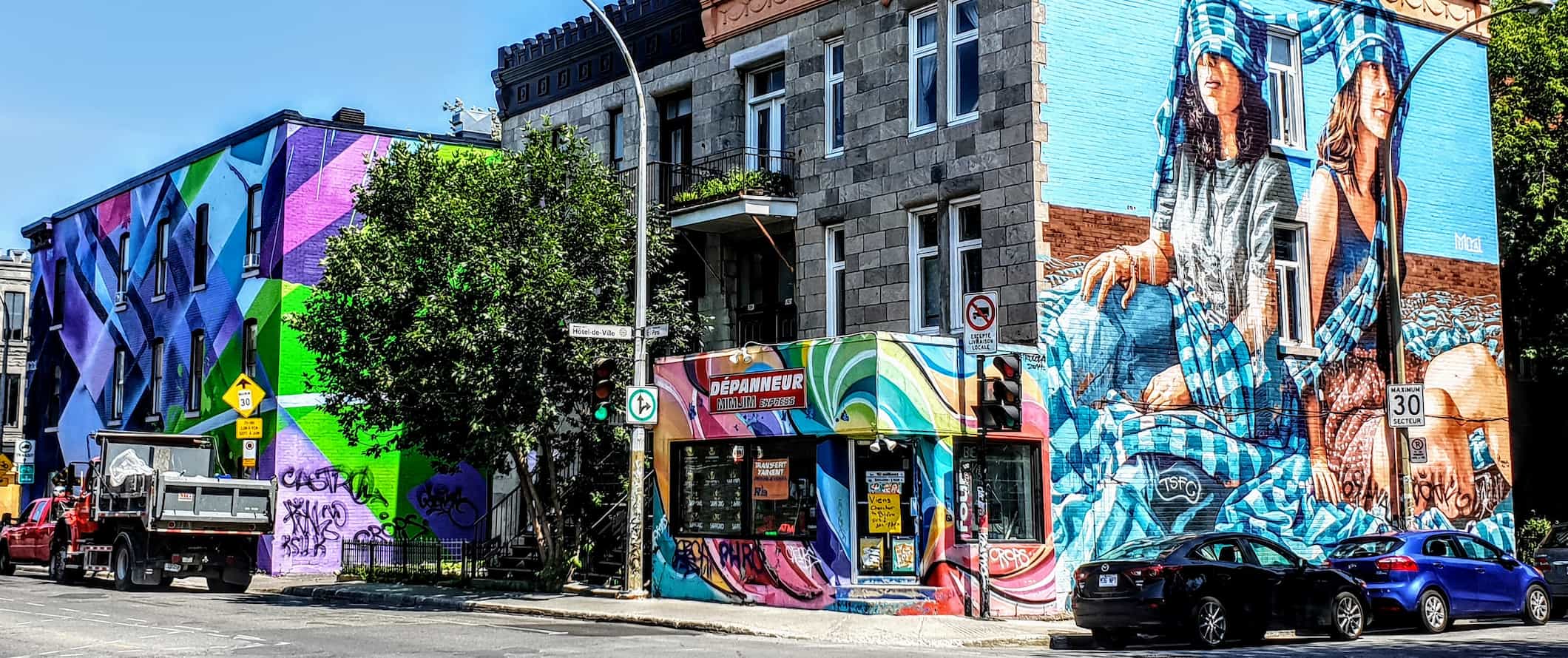
Public transportation – Montreal’s bus service covers the entire city center and the outskirts of town, including the airport. It’s 3.50 CAD for one ride or 6.50 CAD for a return trip. An unlimited day pass is 11 CAD, which is your best option. You can use your tickets on the subway as well, which is the best way to get around the city.
If you’d like to be able to top up your transit card, purchase an OPUS card for 6 CAD.
You can take bus 747 to and from the airport for 11 CAD each way.
Taxi – Taxis are not cheap here. Their base rate is 4.05 CAD and it’s an additional 1.75 CAD per kilometer afterward. Skip the taxis if you can as prices add up fast!
Ridesharing – Uber is available in Montreal and is a bit cheaper than taxis, however, it’s still much more expensive than public transportation and likely not much faster if you’re downtown. Bicycle – Montreal is very bike-city friendly and there are plenty of bicycle rental businesses around town. The public bike rental system is Bixi Bike. It costs 50 cents to unlock a bike, and then 10 cents/per minute for a regular bike or 12 cents/per minute for an e-bike. With over 8,000 bikes available at 700 stations across the city, you can easily hop around the city by bike. If you purchase an OPUS transit pass, you can link it to Bixi Bike to easily tap and rent a bike, as well as receive 10% off fares.
When to Go to Montreal
Montreal is at its busiest in the summer, especially when all the outdoor patios are open and there’s a festival practically every week. July and August are the hottest months, with temperatures hovering around 25°C (78°F). Just note that accommodation prices increase and tourist attractions can get crowded during this time so you may want to book early.
Both early fall and late spring are excellent times to visit as the weather is warm, you can do all the outdoor exploration you want, and there aren’t many tourists around. It’s stunning from late September to the end of October when the leaves start turning color.
Winters in Montreal are bitterly cold, with temperatures averaging around -7°C (19°F) in January though it can get much colder. Expect lots of snow too. In short, I wouldn’t suggest visiting in the winter unless you’re heading further afield to ski and enjoy the snow.
How to Stay Safe in Montreal
Montreal is very safe and you’re unlikely to experience any violent crime here. Your greatest risk is petty crime, like pickpocketing, but even that is rare. Pickpocketing is most likely to occur in busy restaurants and cafes or on public transportation, so keep an eye on your valuables when you’re out and about just to be safe.
Solo female travelers should generally feel safe in the country, however, the standard precautions apply (never leave your drink unattended at the bar, never walk home alone intoxicated, etc.). For more information, check out one of the many solo female travel blogs on the city.
Avoid neighborhoods like Notre Dame Ouest and Wellington Street after dark as sometimes gangs frequent the area.
If visiting in the winter, dress warmly. The temperature can get extremely cold (to the point where people have died).
Scams here are in the city. If you’re worried about them though, you can read about the common travel scams to avoid here.
The number for emergency services is 911.
The most important piece of advice I can offer is to purchase good travel insurance. Travel insurance will protect you against illness, injury, theft, and cancellations. It’s comprehensive protection in case anything goes wrong. I never go on a trip without it as I’ve had to use it many times in the past.
Montreal Travel Guide: The Best Booking Resources
These are my favorite companies to use when I travel. They consistently have the best deals, offer world-class customer service and great value, and overall, are better than their competitors. They are the companies I use the most and are always the starting point in my search for travel deals.
- Skyscanner – Skyscanner is my favorite flight search engine. They search small websites and budget airlines that larger search sites tend to miss. They are hands down the number one place to start.
- Hostelworld – This is the best hostel accommodation site out there with the largest inventory, best search interface, and widest availability.
- Booking.com – The best all around booking site that constantly provides the cheapest and lowest rates. They have the widest selection of budget accommodation. In all my tests, they’ve always had the cheapest rates out of all the booking websites.
- Get Your Guide – Get Your Guide is a huge online marketplace for tours and excursions. They have tons of tour options available in cities all around the world, including everything from cooking classes, walking tours, street art lessons, and more!
- SafetyWing – Safety Wing offers convenient and affordable plans tailored to digital nomads and long-term travelers. They have cheap monthly plans, great customer service, and an easy-to-use claims process that makes it perfect for those on the road.
- LifeStraw – My go-to company for reusable water bottles with built-in filters so you can ensure your drinking water is always clean and safe.
- Unbound Merino – They make lightweight, durable, easy-to-clean travel clothing.
- Top Travel Credit Cards – Points are the best way to cut down travel expenses. Here’s my favorite point earning credit cards so you can get free travel!
Montreal Travel Guide: Related Articles
Want more info? Check out all the articles I’ve written on backpacking/traveling Canada and continue planning your trip:
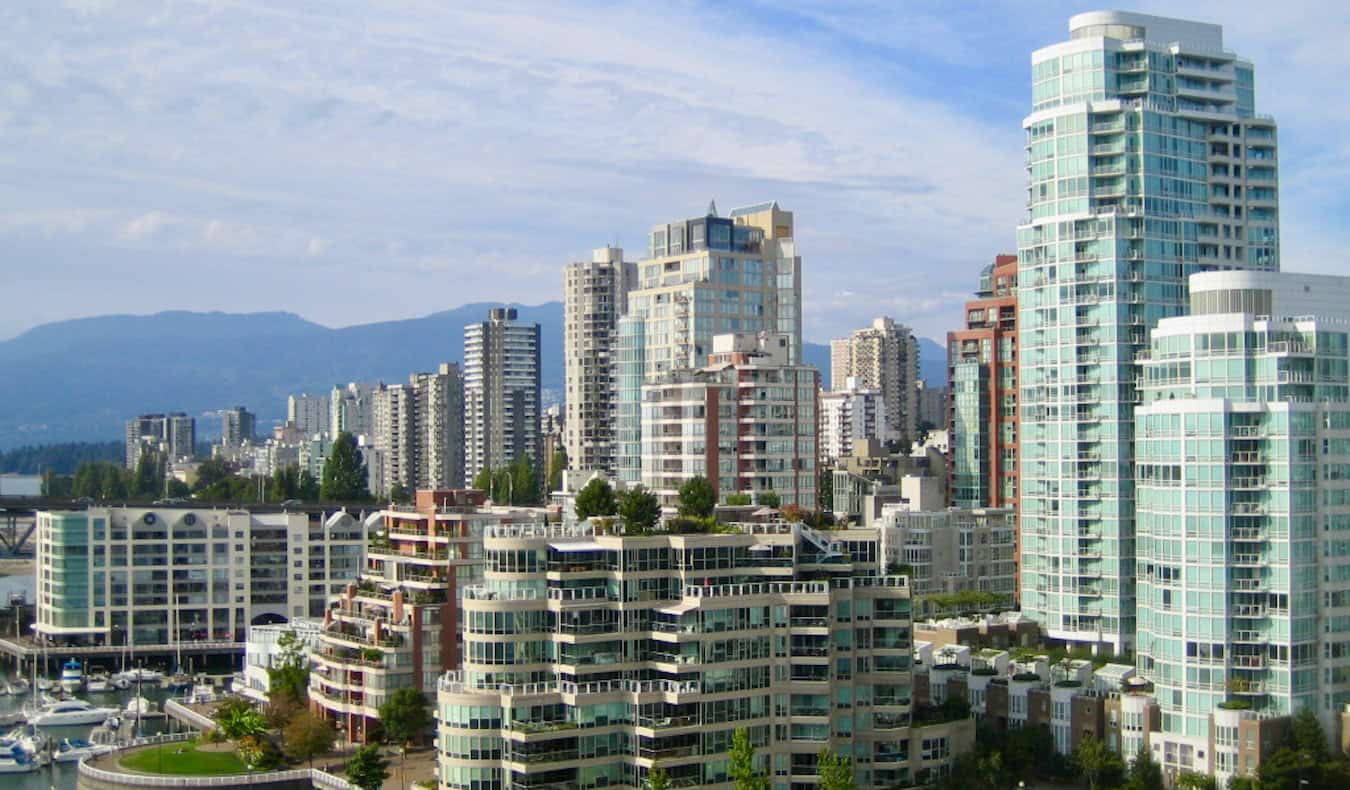
The 5 Best Hotels in Vancouver
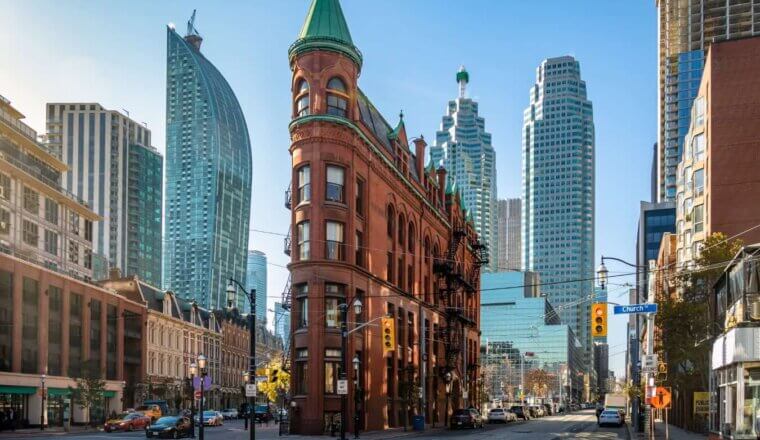
The 6 Best Hotels in Toronto
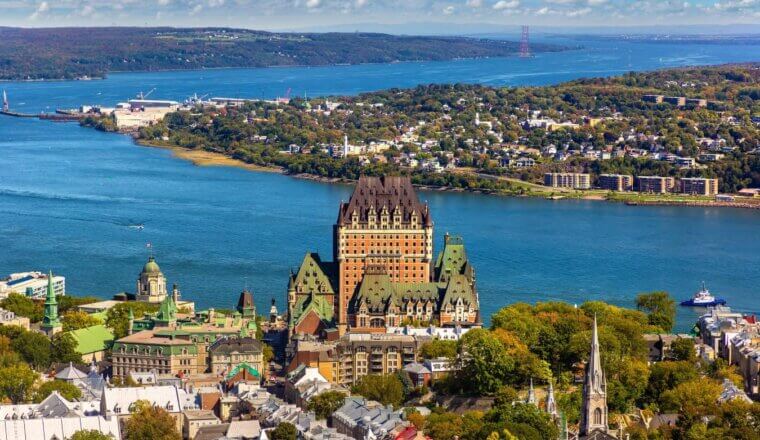
Where to Stay in Quebec City: The Best Neighborhoods for Your Visit
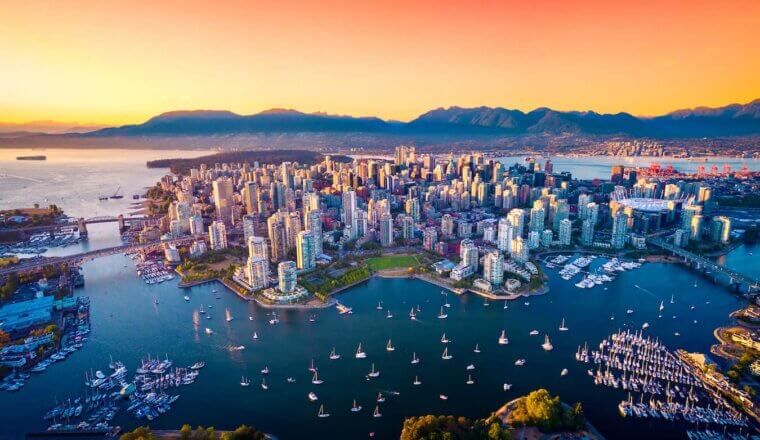
Where to Stay in Vancouver: The Best Neighborhoods for Your Visit
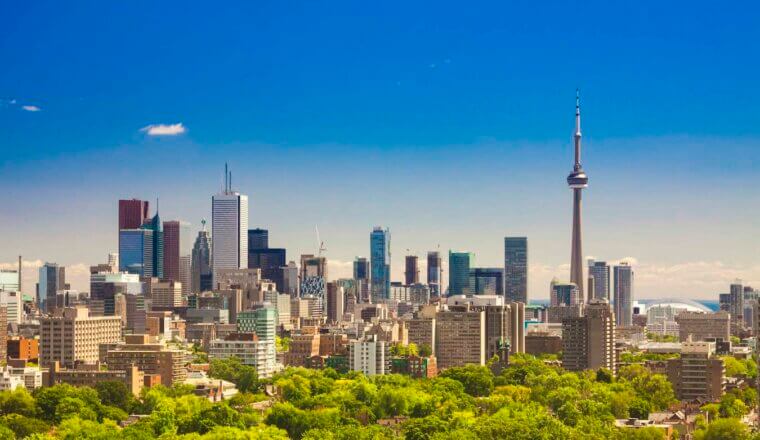
Where to Stay in Toronto: The Best Neighborhoods for Your Visit
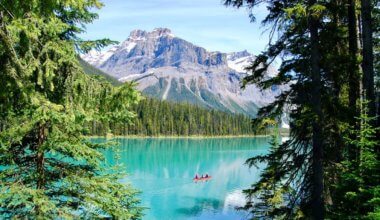
Canada Road Trip: A One Month Suggested Itinerary
Get your free travel starter kit.
Enter your email and get planning cheatsheets including a step by step checklist, packing list, tips cheat sheet, and more so you can plan like a pro!

- Where To Stay
- Transportation
- Booking Resources
- Related Blogs

©Perry Mastrovito/Getty Images

Check out this year's Best in Travel winners
Head to bilingual Montréal to enjoy a taste of French culture in a North American city that's in love with festivals, the arts, good food and enjoying life to the hilt.
Best Time to Visit
Best things to do, attractions, must-see attractions.

Parc du Mont-Royal
The charming, leafy expanse of Parc du Mont-Royal is charged for a wide range of outdoor activities. The wooded slopes and grassy meadows have stunning…

Musée des Beaux-Arts de Montréal
Montréal’s Museum of Fine Arts is an accessible and beautifully updated oasis of art housed in architecturally striking buildings. A visit here is a must…

Basilique Notre-Dame
Old Montréal
Montréal's famous landmark, Notre Dame Basilica, is a 19th-century Gothic Revival masterpiece with spectacular craftsmanship – a visually pleasing, if…

Oratoire St-Joseph
The stunning Oratoire St-Joseph church built on the flanks of Mont-Royal commands grand views of the the Côte-des-Neiges area and northwest Montréal. The…

Jardin Botanique
Montréal’s Jardin Botanique is the third-largest botanical garden in the world, after London’s Kew Gardens and Berlin’s Botanischer Garten.

Place d'Armes
This open square is framed by some of the finest buildings in Old Montréal, including its oldest bank, first skyscraper and Basilique Notre-Dame. The…

Pointe-à-Callière Cité d'archéologie et d'histoire de Montréal
One of Montréal's most fascinating sites, this museum takes visitors on a historical journey through the centuries, beginning with the early days of…

Montréal's Old Port has morphed into a park and fun zone paralleling the mighty St Lawrence River for 2.5km and punctuated by four grand quais (quays)…
Planning Tools
Expert guidance to help you plan your trip.
Things to Know
Visiting the dynamic city of Montréal? Here are 12 things to know before you visit, from planning tips to local etiquette.
Best Neighborhoods
Montréal's neighborhoods are full of beauty and charm. You can enjoy global cultures in just a few blocks by using our guide to its unmissable boroughs.
Montréal is an incredible city but it's worth exploring the incredible landscapes around it. Escape to the country on one of our 6 favorite day trips.
Money and Costs
Montréal has long been known as Canada’s most affordable big city. But that's now changing. Here's how to keep things cheap.
Transportation
Montréal has one of North America’s most thorough public-transportation networks. Here’s how to get all around town – and beyond – without a car.
Free Things to Do
Explore the sights and sounds of Montréal's stunning streets without spending a dime. These are our 9 favorite free things to do when you arrive.
Traveling with Kids
Montréal is a captivating place with plenty of family-friendly experiences. Here are the best things to do in the city with kids.
Plan with a local
Experience the real Canada
Let a local expert craft your dream trip.

Latest stories from Montréal

Food and Drink
Aug 12, 2024 • 5 min read
Read one local’s guide to eating your way through Montréal, one of the world’s great food cities.

Apr 25, 2024 • 7 min read

Sep 19, 2023 • 5 min read

Sep 19, 2023 • 8 min read

Sep 19, 2023 • 7 min read

Sep 19, 2023 • 6 min read

Sep 18, 2023 • 6 min read

Sep 18, 2023 • 5 min read

Sep 16, 2023 • 5 min read
in partnership with getyourguide
Book popular activities in Montréal
Montréal and beyond.

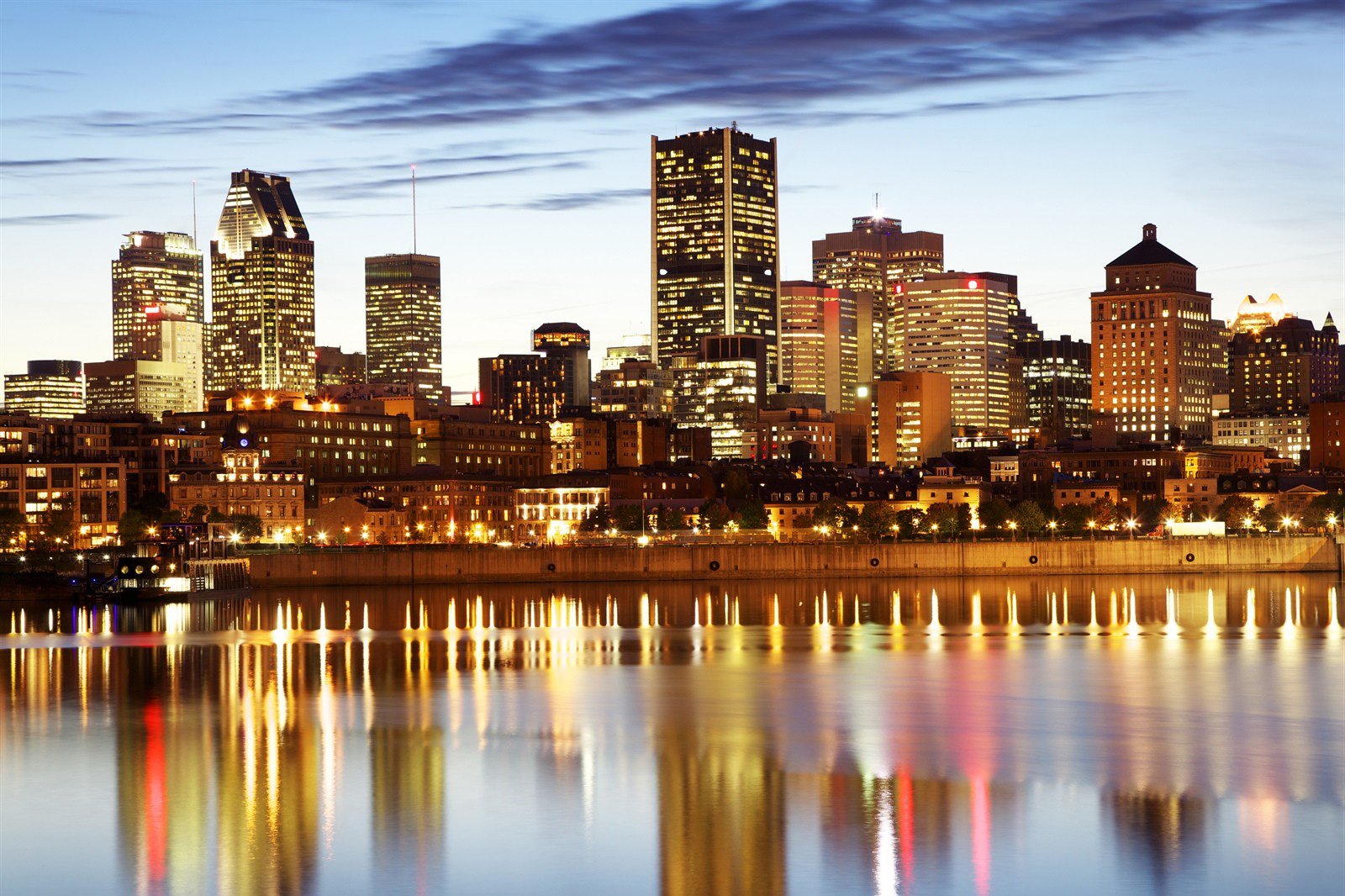
Welcome to Montreal
Montreal is known for its superb cuisine, vibrant nightlife, festivals, sunny terraces, cultural diversity and that special joie de vivre ( zest for life ).

Montreal: The City Of Festivals
With its well-earned reputation as the festival capital of the world, the city famous for putting on spectacular festivals.
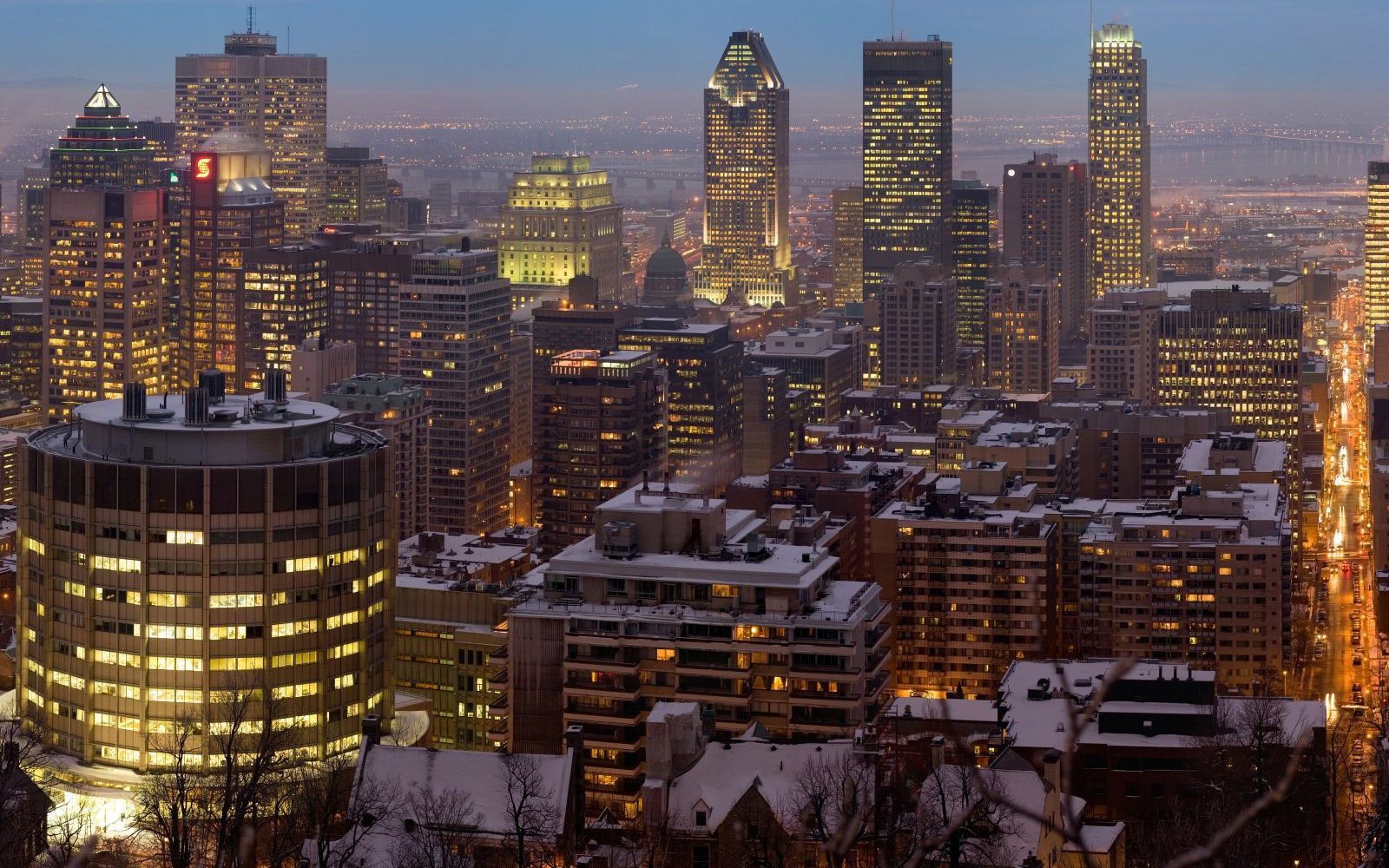
Montreal: A Rich History
With its rich history and French culture, Montreal is a mixture of European and North American Influences. It's the second largest city in Canada and the second largest French-speaking city in the world after Paris.
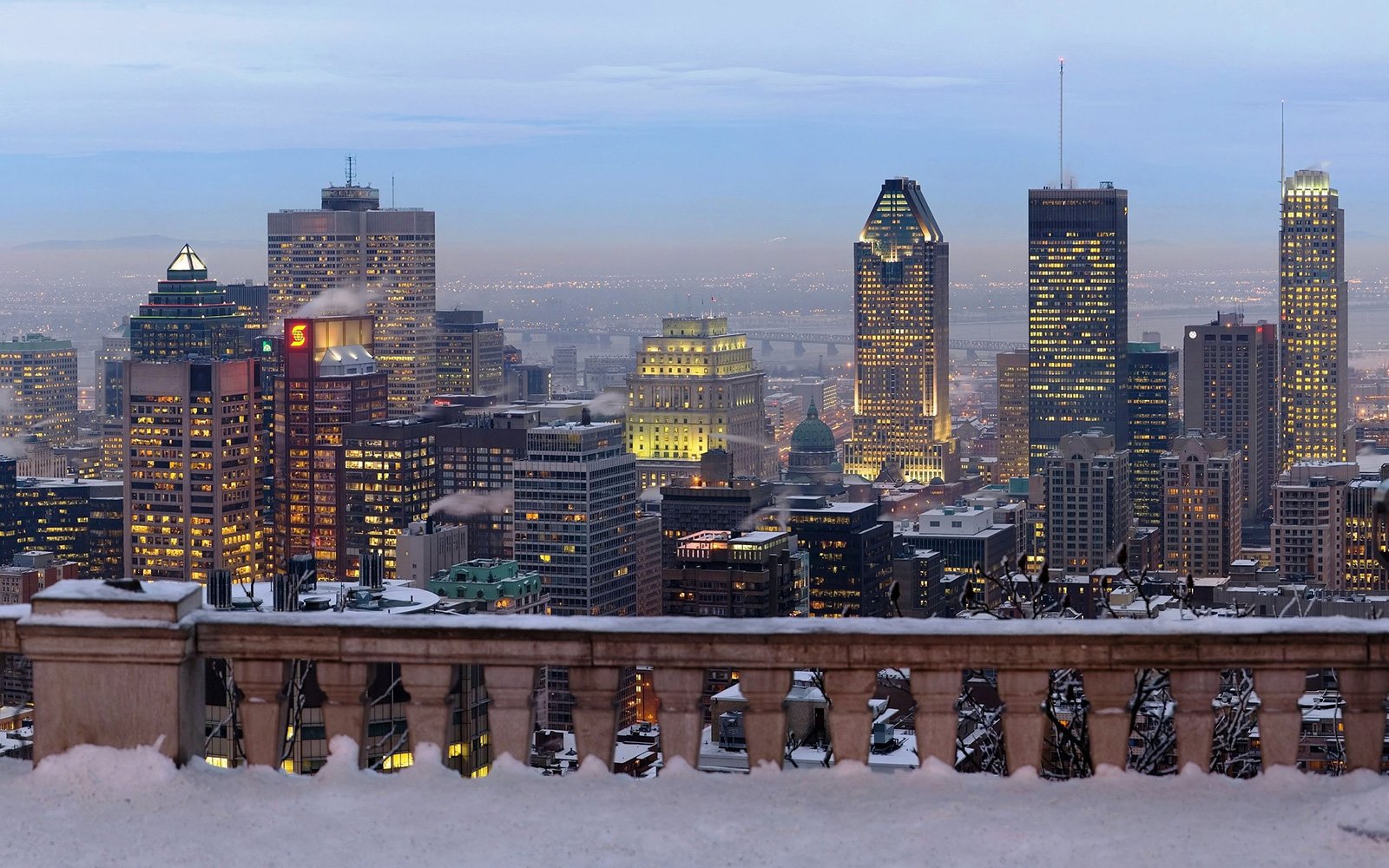
Arts & Entertainment in Montreal
Montreal is one of the most exciting cities in the world. Montreal is a unique and fascinating city offering exciting entertainment and cultural diversity.
Considered half European and half American, Montréal is a lively city with a strong mixture of French, English and various other cultures. Montréal is the second-largest city in Canada and the largest city in the Canadian province of Quebec . Originally called Ville-Marie, or “City of Mary”, the city takes its present name from Mont-Royal , the triple-peaked hill located in the heart of the city. Montreal is an historic, yet modern city that features many cultural and seasonal activities along with wonderful attractions and fantastic festivals .
MONTREAL VISITORS GUIDE
Montreal is a perfect blend of urban life and authenticity. It is also one of the world’s friendliest cities. Over the years, Montreal has received many tiles. Montréal is consistently rated as one of the world’s most liveable cities. It is known as a clean and pleasant city. Alongside the historic cityscape of “Old Montreal”, the city’s attractions include a strong arts community and a range of musical, cultural and seasonal festivals.
MONTREAL ATTRACTIONS
There are so many things that make Montréal unique. The city is filled with little treasures and well preserved pieces of history. Simply take a walk through the city of Montréal and you will start discovering pieces of the city’s marvellous history. Take a guided walk through Old Montréal , the downtown core , or other neighbourhoods , or visit one of the city’s many museums to learn more about its history. You can also take in stunning panoramic views from Mount Royal or have a picnic in Lafontaine Park . Whether you choose to head to Jean Drapeau Park , or have a relaxing picnic at the old port , you will have an unforgettable visit to this very special city.
MONTREAL FESTIVALS & EVENTS
Montréal is known as the city of festivals , the city of design, and a city of culture. Montréal is a multicultural city in which more than 120 cultural communities live. This makes Montréal an extremely diverse and culturally rich city. Every year, over 100 festivals and events take place in Montréal . More than half of these events are international festivals and some of the more popular events can gather well over 250,000 spectators. Three of the world’s biggest festivals take place in Montréal. Montréal’s International Jazz Festival , the Just for Laughs Festival , and the Francofolies de Montreal alone attract more than 5 million festival-goers to Montréal every year.
ARTS & ENTERTAINMENT IN MONTREAL
Montréal is a city of international stature. Its summer festivals , restaurants and night life make it a popular destination for travellers from around the world. As a transport hub, Montreal has many direct flights to and from Europe, the United States, Latin America and other Canadian cities, and easy connections to many other flights originating from Toronto . Montreal is served by train and bus service from the United States and the rest of Canada and is an obvious starting point for international travellers who wish to visit other parts of North America.
Montreal's Featured

Montreal’s RESO Network Map (Underground City Map)
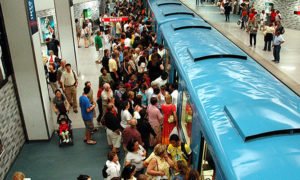
The Montreal Metro
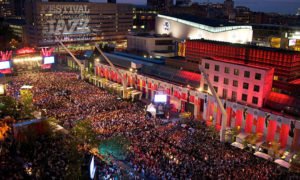
Montreal International Jazz Festival (Festival International de Jazz de Montréal)

St. Joseph Oratory of Mount-Royal (L’Oratoire Saint-Joseph du Mont-Royal)
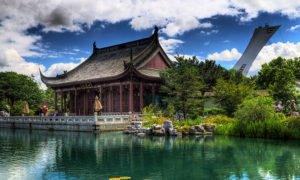
Montreal Botanical Garden (Jardin botanique de Montréal)
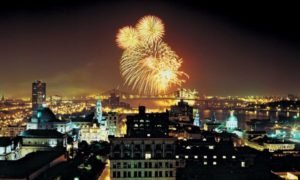
International Fireworks Competition (L’International des Feux Loto-Québec)
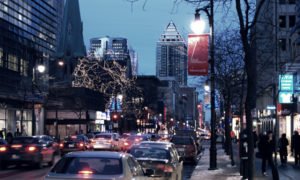
Downtown Montreal (Centre-Ville)
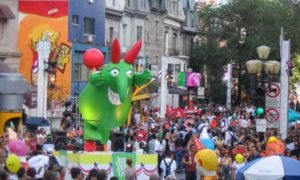
Just For Laughs Festival (Festival Juste Pour Rire )

Canadian Grand Prix (Grand Prix du Canada)
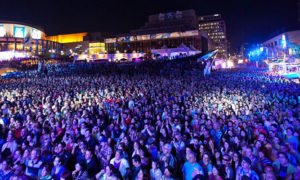
FrancoFolies de Montréal French Music Festival
- CONSEILS D’ACHAT PERSONNALISÉ
- COURS PHOTOS
- Bons Plans Photo
- Nous Soutenir
- Visiter Montréal : le guide ultime !
Montréal, c’est une des villes pour lesquelles nous avons eu un coup de coeur lors de nos divers voyages au Canada ! Depuis 2013, nous y avons été trois fois, une semaine en automne en 2013 puis deux semaines en mai 2015 et encore une semaine en juin 2016 ! C’est une ville du Québec où il fait bon vivre et où on adore flâner ! A chaque voyage, nous découvrons de nouveaux endroits ! Alors, il était temps d’écrire un article global pour partager tout ce qu’il faut faire pour préparer votre voyage avant de visiter Montréal !
A Montréal, entre ville, nature et activités sportives, vous trouverez toujours que faire à Montréal ! Tous les goûts se retrouvent là-bas ! C’est aussi la ville où nous cumulons le plus de temps de vacances. Aussi, nous avons voulu regrouper dans un seul article : comment réserver son voyage à Montréal entre avion, hébergement et attractions ! Mais aussi, visiter Montréal : nos incontournables Et comme nous sommes restés plus longtemps que la majorité des vacanciers, nous partageons aussi nos visites insolites à Montréal !
A quelle période partir en voyage à Montréal ?
A chaque saison, Montréal se découvre différemment ! C’est ce que nous aimons dans le voyage, découvrir et redécouvrir un lieu qui nous a plu. Nous l’avons déjà exprimé sur ce blog, pas question pour nous de voyager au pas de course et de cocher des destinations. Si vous comptez, vous rendre qu’une seule fois à Montréal, réfléchissez bien à la période qui vous convient car les saisons y sont plus prononcée. Il fait très froid en hiver (jusqu’à -25°C) mais chaud en été (plus de 30°C)… Des vrais saisons !
Visiter Montréal en automne
L’automne au Canada est connue pour ses couleurs flamboyantes et pour avoir eu l’occasion de visiter Montréal à cette période, c’est vrai que c’est magnifique ! Surtout si vous vous éloignez du centre de la ville, la nature se part de rouge et d’orange que l’on n’a pas retrouvé ailleurs ! Un visiter Montréal en automne , c’est propice aux amoureux de la nature, de la photographie et des belles couleurs ! L’automne, c’est l’occasion d’un voyage au Québec qui restera inoubliable !
Visiter Montréal au printemps
Au printemps, la ville passe très vite de l’hiver à la chaleur et lors de notre premier voyage printanier, début mai 2015, les arbres étaient encore meurtris par l’hiver tandis que nous étions surpris par la chaleur. C’est l’occasion d’ouvrir le bal des terrasses et la sortie des shorts, jupes, etc. A cette période, on sent la joie de la chaleur retrouvée dans chaque Montréalais. Les restaurants en extérieur sont pris d’assaut en fin de journée, les premières grillades se font sentir dans les parcs de la ville. Il règne une joyeuse effervescence et nous avons eu chaque fois l’impression d’être en été. Un visiter Montréal au printemps , c’est partager avec les Montréalais la joie du retour du beau temps et la ville qui s’éveille.
Visiter Montréal en été
Nous avons eu l’occasion de nous rendre à Montréal en début d’été. Comme dans de nombreuses villes occidentales beaucoup de citadins sont en congés. A savoir, néanmoins, les Canadiens n’ont que 10 jours de congés par an ! A côté de cela, il existe de très nombreuses animations en été : festivals, plage au Parc Jean Drapeau , etc. Visiter Montréal en été , c’est participer à ses nombreuses animations et profiter de la ville sous un beau temps.
Visiter Montréal en hiver
L’hiver, Montréal est sous un climat très froid, la neige occupe la ville mais quelques festivals sont proposés pour faire sortir les Montréalais de chez eux. C’est la période pour se régaler des bons plats québécois sans craindre pour les kilos en trop ! Visiter Montréal en hiver , c’est LA période que Nadia veut absolument découvrir d’ici quelques années ! Le cliché du voyage au Canada entre neige et chiens de traineaux !
Visiter Montréal, comment se déplacer ?
Comme dans de nombreuses villes du Canada, voyager à Montréal sans voiture, c’est très facile ! Non seulement la ville n’est pas très étendue mais elle dispose d’un réseau de transport en commun assez dense : métro et bus ! D’ailleurs, si vous arrivez à Montréal depuis l’ aéroport P-E Trudeau , pour rejoindre la ville, il faut prendre le bus 747 ! Le coût d’un ticket est de 10$.
Visiter Montréal à pied
Marcher dans Montréal, c’est ce que nous avons préféré ! Par beau temps, avec une bonne paire de baskets, pourquoi se priver ?! Nous pensons souvent à nos promenades depuis le Marché Atwater, point de départ de nos aventures quotidiennes. C’est ce que nous aimons pendant les vacances, flâner pendant des heures ! Et il vaut mieux marcher pour éliminer tous les plats que l’on adore manger !
Se déplacer à Montréal en transports en commun
A Montréal, il est possible de se déplacer sans trop se dépenser, notamment grâce aux transports en commun. Le réseau est géré par la STM que ce soit pour le métro comme les bus. A savoir, le prix d’un ticket est de 3,25$ et est valable 120 min. Il ne permet pas d’effectuer d’aller-retour, en revanche les correspondances sont possibles. Si vous acheter votre ticket dans le bus, vous devez avoir l’appoint. Pour un billet hebdomadaire , le prix est de 25,75$. A cela, il faut ajouter l’achat du support (non nominatif), la carte OPUS de 6$ valable 4 ans. C’est ce que nous avions prix comme formule en 2013, du coup, nous avions gardé les cartes support pour nos vacances suivantes ! Il existe plein d’autres tarifs, notamment pour le soir et les week-end, disponibles sur le site internet de la STM .
Visiter Montréal en vélo
La ville de Montréal est dotée de nombreuses pistes cyclables toutes bien protégées puisque nous avons pu en pratiquer une partie en roller. Le réseau est immense et l’ensemble de la région de Montréal dispose de 500 kms de pistes cyclables. Il y a de quoi se faire plaisir ! A vivre, traverser un des ponts de Montréal en vélo, l’occasion de s’arrêter pour de belles pauses photos !
LOUEZ EN LIGNE VOS VELOS A MONTREAL
Pas besoin de venir avec votre vélo pour découvrir Montréal ! La ville de Montréal propose un service de vélo du même type que les vélib’ à Paris ! A Montréal, on les appelle les Bixi ! Les prix commencent à 2,95$ pour un trajet de 30 min, comptez 5$ l’abonnement de 24h. Il existe également des loueurs de vélos, notamment au Vieux-Montréal : Ca roule qui propose de la location de vélo, de roller et des balades organisées. Nous y avons loué des rollers en 2015… Néanmoins, nous préférons rouler avec notre matériel ! Autre loueur de vélo que nous avons souvent aperçu lors de nos balades près du Marché Atwater, Ma Bicyclette !
Quelle durée pour un voyage à Montréal ?
Après trois voyages au Canada, nos voyages à Montréal cumulent quasiment un mois. Adeptes du slow travel pour nos congés, nous préférons prendre notre temps quitte à faire l’impasse sur certains lieux. Par exemple, Nadia n’a toujours pas visité Toronto. Qu’importe, ce sera pour une autre fois tant les voyages à Montréal ont été dense et forts en émotions à chaque fois.
Néanmoins, ce n’est pas le choix de tous le monde et la question de la durée du séjour idéal à Montréal revient régulièrement. La réponse est encore personnelle et en fonction des goûts de chacun. A nos yeux, un voyage à Montréal nécessite une semaine minimum. Sauf si vous n’aimez pas les villes. Ici, il y a autant de visites natures que citadines et certaines sortent de l’ordinaire ! Pour un voyage au Québec en deux semaines, quatre jours à Montréal devrait convenir. Cela suppose, cependant, des balades plus rapides et de passer à côté de découvertes moins connues. Notre conseil, si vous arrivez à Montréal en première destination, comptez au moins un jour pour vous remettre du décalage horaire !
Quel budget prévoir pour un voyage à Montréal ?
Il s’agit d’une question dont la réponse est personnelle de prime abord. Tout dépend du style de voyage que vous cherchez. Voyageant pendant nos congés, nous aimons dépensé notre argent dans des activités et des restaurants sympas ! D’autres voyageurs qui séjournent au long court cherchent à minimiser leurs dépenses pour faire durer leur voyage le plus longtemps possible.
Néanmoins, le coût de la vie au Canada est plus élevé qu’en France, c’est un fait. Un restaurant, même « moyen » coûte vite dans les 70$ à deux. En effet, au prix indiqué sur la carte, il faut ajouter 15/20% de taxes nationales et locales ainsi que les 15% pour le service ! Manger au restaurant vient très vite impacter le budget mais il serait dommage de se priver des saveurs que l’on ne retrouve pas ailleurs ! Les activités et attractions présentent également un coût plus élevé qu’en France. Comptez 50$ pour une séance de surf , par exemple. C’est à peu près le coût de la moindre activité. Aussi, si rien n’a été réservé en avance de votre voyage au Québec, mieux vaut partir large.
Pour vous donner un ordre d’idée, nous comptons environ 100$ par jour et par personne entre repas, activités et achats en tout genre ! A savoir, à date, 1€ = 1,49$ donc 100$ = 67€ ! C’est un exemple, cependant, nous avons rarement dépensé moins ! Après tout, pas question de faire la cuisine et la vaisselle pendant les vacances alors on en profite. Et si nous rentrons avec de la monnaie canadienne, tant mieux, nous en aurons pour la prochaine fois !
Trouver son hébergement pour visiter Montréal !
En voyage à Montréal, vous pouvez décider de vous héberger en hôtel ou via Airbnb ! L’avantage de l’hôtel est de n’avoir rien à faire et une chambre propre tous les jours ! Pour Airbnb, de nombreux voyageurs apprécient d’être en appartement pour éviter d’aller au restaurant ! Mais vous pouvez aussi réserver un appart-hôtel à Montréal ou trouver un logement chez un particulier ! Tout dépend de la durée de votre séjour ! Si celui ci est court, optez pour l’hôtel !
BON PLAN : 25€ DE REDUCTION SUR VOTRE PREMIERE RESERVATION AIRBNB
Pour profiter au mieux de votre voyage à Montréal, choisissez un quartier central ! Le quartier des spectacles est le plus festif de la ville ! Comme son nom l’indique, c’est dans ce quartier que sont réunis les spectacles mais aussi de nombreux restaurants ! Et comme Montréal est une ville à taille humaine, il vous sera très facile de rejoindre les autres quartiers !
Les activités incontournables à réserver !
Vous l’aurez compris, si vous souhaitez limiter vos dépenses en voyage à Montréal ou pour éviter toute attente et ainsi gagner du temps, il existe une seule solution. Acheter en ligne vos billets pour les attractions incontournables de Montréal qui vous intéressent ! C’est ainsi que nous procédons pour préparer nos voyages ! Bien sûr, rien n’empêche de craquer pour une activité qui n’était pas prévue ! Réserver en avance les attractions de votre voyage à Montréal permet d’étaler les dépenses !
RESERVEZ VOS ACTIVITES POUR MONTREAL AVANT DE PARTIR AU PRIX LE PLUS BAS
Faut-il acheter un Pass pour visiter Montréal ?
Le Pass Montréal comprend des entrées pour les nombreuses attractions de Montréal ainsi que des accès aux transports en commun et la navette vers l’aéroport ! Si vous avez envie de découvrir les différentes attractions de la ville tel que le Biodôme, le Musée Tussaud, faire une croisière ou encore dépenser des dollars au casino, c’est une bonne option ! Pour 78€ les trois jours, vous n’aurez plus rien à dépenser lors de votre voyage à Montréal !
Le Parc Olympique & Biodôme
Le Parc Olympique et le Biodôme sont situés au même endroit, de sorte, que l’on vous conseille de les visiter au même moment. Comptez une grosse demi journée si vous décidez de les découvrir en même temps. L’idéal est de terminer par le Parc Olympique ! En fin de journée, vous profiterez d’une belle luminosité pour apprécier la vue sur Montréal. Vous pouvez acheter des billets combinés pour le Parc Olympique et le Biodôme !
Le Parc Olympique de Montréal
En 1976, Montréal a accueilli les Jeux Olympiques d’été. De cet évènement, ils restent des pavillons au Parc Jean Drapeau mais surtout le Parc Olympique à quelques pas du Jardin Botanique de Montréal. Nous avons découvert ce lieu, par hasard, lors d’une balade au Jardin Botanique. Parce que le sport occupe une part importante de notre vie, nous ne pouvions pas passé à côté d’un parc olympique !
A vrai dire, pas besoin d’être sportif ou fan de sport pour se rendre au Parc Olympique de Montréal. Une fois à l’intérieur, un funiculaire vous attend pour rejoindre le haut de la Tour. De là, un observatoire offre une vue sur la ville de Montréal et ses environs. Revêtue des couleurs d’automnes, la ville est magnifique ! Pour celui ou celle qui aura déjà apprécié des vues d’autres villes, la faible urbanisation de Montréal saute aux yeux ! Pour une entrée à moins de 20€ , il serait dommage de passer à côté !
Situé à deux pas du Parc Olympique, et pour cause, il s’agit d’une ancienne installation olympique ! Le biodôme est un véritable espace naturel en pleine ville. Dans ce lieu couvert, il est fait place à l’habitat naturel des espèces présentes. La nature des Amériques y est mise à l’honneur en quatre grandes zones : la forêt tropicale humide, la forêt québécoise, le Golfe de Saint-Laurent et enfin, les deux Pôles.
C’est une visite ludique à ne pas manquer, notamment pour les familles ! En pus, il est possible d’acheter un billet combiné avec le Parc Olympique !
Visiter Montréal à vélo !
A Montréal, il y a de très nombreuses pistes cyclables ! En vélo, c’est très agréable de découvrir la ville sous un autre aspect ! C’est aussi parfait pour s’excentrer un peu ! Voici quelques idées de balades à vélo dans Montréal !
Le Canal Lachine
Nous avons séjourné chaque fois près de ce canal qui nous a permis d’accéder à de très jolies balades au calme après une journée dans l’effervescence du Downtown et des visites. De longues pistes cyclables longent ce canal qui est devenu pour nous un symbole de Montréal. La promenade s’étend sur 14 km de quoi se dépenser paisiblement !
Circuit Gilles Villeneuve & Parc Jean Drapeau
Nous l’ignorions, le circuit Gilles Villeneuve, circuit de Formule 1, est situé dans la ville, sur l’Île Notre Dame et accessible en métro ! Mais surtout, il est ouvert au public, sauf en de rares occasions, avec des espaces réservés pour piétons ainsi que vélo ET roller ! Impossible pour nous de passer à côté de cela ! En 2015, nous avons loué des rollers pour tenter l’expérience ! Sans être fan de Formule 1, rouler sur un circuit est un expérience amusante ! Si vous n’êtes pas adeptes de roller, il est aussi possible de rouler sur le circuit de Formule 1 en louant des vélos !
Partis du Vieux-Port, il y a de longues balades à faire en roller ou en vélo qui mène jusqu’au Parc Jean Drapeau ! Une anecdote : nous avons traverser en roller de location le Pont Victoria avec le vent de face en ayant le sentiment de ne jamais en voir le bout… Vraiment pas top ! De quoi nous donner envie de réessayer avec notre matériel !
Parc Angrignon
Lieu méconnu de Montréal dans un quartier plus excentré ce grand parc est accessible en métro pour qui veut se mettre au vert ! Nous y avons fait du roller, en balade depuis le canal Lachine, mais il est aussi possible de se balader à pied. A faire : une pause pique-nique avant de découvrir un autre Montréal dans les rues alentours, le Montréal résidentiel où il fait bon vivre !
Voir un Match de Hockey des Canadiens de Montréal
Pour donner un peu plus d’authenticité à votre voyage à Montréal, nous vous conseillons d’assister à un match de hockey, sport national au Canada ! Les jours de match, tous les Montréalais enfilent le maillot des Canadiens ! C’est une occasion unique de vibrer avec eux !
EXCLUSIF 15$ DE REDUCTION SUR VOS PLACES DE HOCKEY A MONTREAL AVEC LE CODE VOYAGE15
Les lieux d’intérêts de Montréal à ne pas manquer !
Le parc du mont-royal & son quartier.
Comme de nombreuses villes d’Amérique du Nord, Montréal dispose en son coeur de nombreux espaces verts ! Comme le Stanley Park de Vancouver ou Central Park à New York, le Parc du Mont-Royal est un écrin de verdure en plein Montréal. Ce parc, c’est un des symboles de la ville ! Par ailleurs, en vous y promenant, il est fort probable que vous rencontriez des ratons-laveurs mais pas que ! Un vrai lieu paisible pour la faune et la flore locale.
RESERVEZ UNE VISITE GUIDEE DE MONTREAL
En balade au Mont-Royal, il faut absolument monter au chalet du belvédère ! D’en haut, la vue est imprenable sur la skyline de Montréal ! Notre conseil : s’y rendre de jour comme de nuit car le parc ne ferme jamais ! Et à notre prochaine visite, nous y irons pour le coucher du soleil !
Le Vieux Montréal & le Vieux Port
Si vous aimez les vieilles pierres et les petites ruelles, vous serez enchantés ! C’est le quartier touristique de Montréal. On y trouve toutes les boutiques de souvenirs pour ramener des goodies en tout genre rappelant Montréal ! En se baladant dans ces deux quartiers, on ressent l’histoire de la ville. Et pour cause, Montréal fête ses 375 ans en 2017 !
RESERVEZ VOTRE VISITE G UIDEE DU VIEUX-MONTREAL
Dans le vieux Montréal, pourtant à quelques pas du Downtown, on n’a plus du tout l’impression d’être dans une ville d’Amérique du Nord. Il n’y a que les buildings donnant sur le Vieux-Port pour nous rappeler où nous sommes ! Ce qu’on aime dans ces deux quartiers, au delà des belles bâtisses, c’est la faible présence des voitures !
Rue Sainte-Catherine, shopping & downtown
C’est LA rue commerçante de Montréal qui s’étend sur 11 km ! De quoi rendre le shopping plus sportif qu’on ne l’imagine ! C’est une rue que nous avons beaucoup arpenté, et pas pour Nadia et sa frénésie de magasinage comme disent les Québécois ! C’est une artère centrale pour qui veut se promener à pied depuis Atwater vers d’autres points de la ville. C’est aussi un lieu facile pour se repérer ! Elle fut donc souvent un des points d’encrage de nos aventures quotidiennes !
Côté shopping, il y a principalement les grandes enseignes que nous trouvons partout dans le monde…! Pour faire plus original, nous aimons surtout les magasins de sports pour dénicher des références que nous ne trouvons pas en France.
Le Quartier du Plateau
Le quartier préféré des expatriés français et de Nadia ! Ici, on trouve les maisons typiques de Montréal, en brique avec les escaliers extérieurs. Elles sont appelées des duplex et l’on s’est souvent imaginé dans ces petits immeubles si charmants ! Les rues sont souvent plus étroites et verdoyantes. Quand il fait chaud, il est agréable de se promener à l’ombre des arbres qui arborent les trottoirs.
TROUVEZ VOTRE HEBERGEMENT A MONTREAL AU PRIX LE PLUS BAS
C’est un quartier vivant où nous y avons beaucoup de bonnes adresses !
Le Jardin Botanique
Montréal est une ville très verte ! En plus du Parc du Mont-Royal, des nombreux espaces verts, la ville offre un Jardin Botanique qui est un des plus grands au monde. Là aussi, en automne, les couleurs sont flamboyantes ! Nous nous y sommes rendus par hasard à l’occasion d’une fête des lumières dans le Jardin Chinois. De septembre à octobre, tous les ans, se tient ainsi « La magie des lanternes » ! Une manière originale de découvrir ce jardin !
Marché Atwater
En Amérique du Nord, les marchés sont moins nombreux qu’en France alors dès qu’il y a en a un, il fait souvent l’objet de visites touristiques ! Le Marché Atwater n’y coupe pas lorsque l’on décide de visiter Montréal en quelques jours ! En plus, nous avons séjourné à chaque fois à quelques pas ! Sur place, il est possible de s’approvisionner en produits frais ET de trouver des produits plus typiques comme le sirop d’érable bien sûr ! En automne, les étales se remplissent de citrouilles donnant une ambiance authentique d’Halloween pour nous, européens !
Par beau temps, un arrêt chez « Havre de Glaces » est indispensable pour les gourmands ! C’était notre pause goûter habituelle lorsque nous rentrions de balade !
Autre marché que nous n’avons pas visité mais très connu, il s’agit du Marché Jean Talon !
Quelques activités insolites !
Bien que nous soyons des touristes, ce que nous aimons particulièrement pendant nos vacances, ce sont les activités extérieures ! Marche, vélo et surtout roller, nous ne manquons pas d’idées pour nos activités ! En 2016, nous avons même embarqué au Canada nos rollers avec nous ! Point de vue activité ludique, à Montréal, nous sommes servis ! Voici un petit aperçu d’activités insolites qu’il est possible de faire ! Si vous visitez Montréal en quelques jours et privilégier les visites plus classiques, peut-être n’aurez vous pas le temps. Mais si vous aimez les sensations et vous amusez, alors cette partie est faite pour vous !
Et si on surfait à Montréal ?
Lors de nos vacances à Lacanau-Océan, nous avons souvent eu envie de passer le pas et de tenter des cours de surf ! Nos périples rollers ont capté notre temps jusqu’à présent. Lorsque nous avons découvert qu’il était possible de faire du surf en piscine à Montréal, nous n’avons pas hésité ! Résultat : une expérience qu’on a adoré ! On s’est amusé, tout simplement !
Sensations fortes à Montréal !
La Ronde, c’est un parc d’attraction sur l’Ile Sainte Hélène près du Parc Jean Drapeau ! Au delà des manèges à sensations, le parc est situé sous le Pont Jacques Cartier ! Un cadre atypique qu’on apprécie aussi ! La Ronde, c’est notre dernière journée de juin 2016, une superbe dernière journée de vacances avant de rentrer en France. Grisés par les manèges, nous étions prêts à affronter le long retour en avion !
Une journée amusante que l’on peut se permettre de vivre quand on visite Montréal un peu plus longtemps ! Comptez 66$ pour l’entrée. A savoir, le parc n’est ouvert que de mi-mai à octobre. Ce que nous avons aimé : cette ambiance parc d’attractions typique d’Amérique du Nord !
RESERVEZ EN LIGNE VOTRE DESCENTE EN TYROLIENNE A MONTREAL
Faire du roller à Montréal !
On le redit, à Montréal, il y a énormément de pistes cyclables agréables à pratiquer ! Alors, toutes nos balades à rollers ne sont pas réservés aux pratiquants de ce sport, les vélos peuvent s’en donner à coeur joie (les piétons aussi ). Louez des vélos c’est même une chouette activité pour visiter Montréal !
Bons plans, conseils, nouveautés…ne ratez aucun de nos articles. Inscrivez vous à notre Newsletter pour êtres informés de nos meilleurs articles et nos conseils !
En cochant cette case, j’accepte que mon e-mail soit utilisé pour recevoir la newsletter Partons en Voyage.
Visiter Montréal, en bref !
Montréal, c’est une ville d’Amérique du Nord où l’on se sent bien et où se mêle l’ancien et le moderne ! C’est aussi ce lieu étrange où l’on a beau être sur le continent américain, la langue parlée est le français.
Article publié initialement le 04 Mai 2017 et mis à jour depuis.
- Comment trouver un vol pour Montreal au meilleur prix ?
Quoi voir et que faire à Montréal ?
Comment acheter des billets de hockey nhl , neuf restaurants où manger à montréal .
Vous aimez cet article, partagez-le !
Partons en Voyage
Nadia & Benoît ! Nous sommes deux passionnés de voyages et de photo. Les vacances, c'est un moment unique alors activités, hôtels, évasion...on est toujours prêts à passer un super moment. Et pour immortaliser nos aventures, on aime avoir du bon matériel photo. Parents depuis 2017, on partage le goût de l'évasion à notre fils !
VOUS AIMEREZ AUSSI
Comment trouver un vol pour montreal au meilleur..., laissez un commentaire annuler la réponse.
Save my name, email, and website in this browser for the next time I comment.
6 commentaires
Vraiment une chouette ville ! Ça fait 10 ans que nous vivons au canada et ça nous a pris quelques années avant de l’aimer autant qu’aujourd’hui. Notre quartier préféré c’est le Mile End mais on en découvre à chaque visite. En tout cas c’est un article assez complet sur le sujet !
Bonjour Charlène,
Merci pour ton commentaire 🙂
C’est vrai que c’est une super ville ! Cela fait bien longtemps qu’on n’y ait pas allé, elle commence à nous manquer 😉
Bonne journée,
Super tes photos, ça donne envie de repartir dans cette magnifique ville. Pensez à louer une voiture pour découvrir les Laurentides et rejoindre Québec. C’est très sympa et ça permet de voir du pays…
Bonjour, merci pour ton commentaire !
Nous sommes en effet aller dans les Laurentides et avons été à Québec ! Et on y retournera ! Mais en train car nous ne conduisons pas 😉
je choisis l automne pour la visiter c est pas pour tout de suite
C’est un très bon choix !!!
Ce site utilise des cookies. En continuant à naviguer, vous acceptez que nous en utilisions. Reportez-vous à la Politique de confidentialité relative aux cookies : Accepter En savoir plus
- 1.1.1 Ville-Marie borough
- 1.1.2 Plateau Mont-Royal district
- 1.2 Other Montreal districts and Montreal Island towns
- 1.3 Elsewhere on the island
- 2.1 Language
- 2.2 Orientation
- 2.3 Gay Montreal
- 2.4 Climate
- 2.5 Visitor information
- 3.1.1 Other airports
- 3.3.1 Trains from within Canada
- 3.3.2 Trains from the United States
- 3.5.1 From Montreal Central Station ( Gare Centrale )
- 3.5.2 From Montreal-Trudeau International Airport
- 3.5.3 From Ontario
- 3.5.4 From the United States
- 3.5.5 In winter
- 4.1 On foot
- 4.3.1 In winter
- 4.4.1 By metro and bus
- 4.4.2 By train
- 4.5 By taxi
- 4.6 By ride hailing
- 5.1 Architecture
- 5.2 Landmarks
- 5.3 Museums
- 6.1 Cross-country skiing
- 6.2 Ice skating
- 6.3 Water sports
- 6.6.1 Music festivals
- 6.6.2 Film festivals
- 6.7 Sports to watch
- 7.1 Language classes
- 7.2 Universities
- 9.1 General
- 9.3 Splurge
- 9.4 Furniture and antiques
- 10.1 Montreal specialties
- 10.2 Ethnic restaurants
- 10.3 Markets
- 10.4 Restaurants
- 10.5 Restaurant chains
- 10.6 Alternate
- 11.2 Dance clubs
- 11.3 After-hours clubs
- 11.4 Karaoke
- 11.5 Gay and lesbian
- 13.2 Internet
- 14.1 Weather
- 14.2 Hospital
- 15.1 Consulates
- 15.2 Newspapers
<a href=\"https://tools.wmflabs.org/wikivoyage/w/poi2gpx.php?print=gpx&lang=en&name=Montreal\" title=\"Download GPX file for this article\" data-parsoid=\"{}\"><img alt=\"Download GPX file for this article\" resource=\"./File:GPX_Document_rev3-20x20.png\" src=\"//upload.wikimedia.org/wikipedia/commons/f/f7/GPX_Document_rev3-20x20.png\" decoding=\"async\" data-file-width=\"20\" data-file-height=\"20\" data-file-type=\"bitmap\" height=\"20\" width=\"20\" class=\"mw-file-element\" data-parsoid='{\"a\":{\"resource\":\"./File:GPX_Document_rev3-20x20.png\",\"height\":\"20\",\"width\":\"20\"},\"sa\":{\"resource\":\"File:GPX Document rev3-20x20.png\"}}'/></a></span>"}'/>
Montreal ( French : Montréal ) is the largest city in the Canadian province of Quebec . While Quebec City is the political capital, Montreal is the cultural and economic centre, and the main entry point to the province. With 1.8 million residents in the city (2021), and 4 million in the urban area, Montreal is Canada's second largest city. and the largest francophone city in the Americas. Most Francophones are conversant in English to varying degrees of fluency. Old Montreal has a heritage of colonial times. Though a large city, Montreal gives opportunities for outdoor life , and for watching the legendary Montréal Canadiens ice hockey team.
Central Montreal
Ville-marie borough.
Neighbourhoods from west to east:

Plateau Mont-Royal district
Other montreal districts and montreal island towns, elsewhere on the island.

On an island in the St. Lawrence River at the historically highest navigable point, Montreal has been a strategic location since before the arrival of Europeans in Canada. A thriving Iroquoian town called Hochelaga was on the site of present-day Montreal when explorer Jacques Cartier first visited in 1535. In 1642, the tiny town of Ville-Marie was founded as a Catholic mission by Paul Chomedey, sieur de Maisonneuve. It soon became a centre of the fur trade. After its capture by the English in 1762, Montreal remained (until the 1970s) the most important city in Canada and was briefly capital of the province in the 1840s.
Prohibition on sales of alcohol in the United States during the 1920s and 1930s made Montreal a destination for cross-border fun seekers from nearby New England and New York. The city built up a seedy, yet playful, industry in alcohol, burlesque, and other vices. In the 1960s, an urban renewal drive centred on Expo 67. The World's Fair in Montreal brought a subway system (the métro) and attractive urban parks and is considered to be one of the most successful World Fairs. Over 50 million visitors gathered in Montreal during this memorable summer. The 1976 Olympics left a strikingly idiosyncratic stadium and many other urban improvements.
The opening of the Saint Lawrence Seaway in 1959, though much-lauded as an economic boom, spelled the beginning of the end for Montreal's economic dominance in Canada. Once the transition point between western railways and eastern sea carriers, Montreal watched helplessly as some of this business moved farther west, up the now navigable seaway, to ports in Ontario and on Lake Superior. The Quebec sovereignty movement, which began to pick up steam in the 1960s, further chilled the atmosphere for Canada-wide businesses, many of which moved their headquarters to Toronto.
Following an economic depression in the 1980s and 1990s, Montreal became more secure in its place in North America and the world. It remains a centre of culture, arts, computer technology, aerospace, the biotech industry, and media for all of Canada.
47% of Montrealers speak French as their only mother tongue, while around 13% of the population speak English as their mother language, and 33% speak something else. It is considered to be polite to start a conversation in French, but Montrealers will generally switch easily to English when they realize you don't speak French. At a minimum, start with " Bonjour , can we speak English?"
Orientation
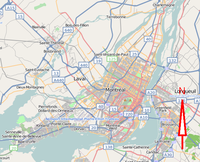
Montrealers use an unconventional compass, using the river and the mountain as cardinal points. When you are downtown, the St Lawrence River is “south” and Mount Royal is “north”; making the West Island and the East End correct in both their names and orientations. This tends to confuse visitors because the “East” End is really north and the “South” Shore is east, and the St Lawrence River runs almost north-south at this location.
Most local maps use this convention as do the highways around the city. For example, Autoroute 15 north actually runs northwest and Autoroute 40 east runs northeast.
To underscore this fact, a Montreal map will show that the "south end" of Victoria Bridge is in fact further north than the "north end".
Gay Montreal
Montreal is an extremely inviting destination for gay and lesbian tourists. Canada's contributions to gay rights have become widely known, but Quebec was the first province in Canada to pass a non-discrimination law for sexual orientation and to provide same-sex civil unions (although Toronto was the first municipality in Canada to do so). Same-sex marriage is legal in Quebec (neither residency nor citizenship are required for a marriage licence, but there is a three-week waiting period after you receive the licence) as it is in the rest of Canada. Canadian and Quebec immigration law allow residents to sponsor their same-sex partners or spouses. The métro station in the Gay Village, Beaudry, is marked with rainbow pillars. Montreal's pride celebration (last week of July, first week of August) is the second-largest in Canada after Toronto 's.
The climate of Montreal is a true humid continental climate with 4 distinct seasons. The city has warm—and occasionally hot & humid—summers, generally mild springs and autumns, and often very cold & snowy winters. Montreal gets over 2,000 hours of sunshine annually, daylight hours range from 05:15-20:45 in early summer, to 07:30-16:15 in the December. Precipitation is moderate throughout the year, with around 2 metres of snow per season.
Visitor information
- 45.5003 -73.5717 1 Centre Infotouriste de Montréal , 1255 rue Peel, bureau 100 ( At rue Sainte-Catherine; metro Peel ), ☏ +1 514 873-2015 , toll-free: +1-877-266-5687 , [email protected] . Apr 1-May 7: 09:00-17:00; May 8-Oct 4: 09:00-18:00; Oct 5-Mar 31: 09:00-17:00; Closed: Dec 25 & Jan 1 . ( updated Aug 2022 )
- Visitor information from MTL.org
YMQ IATA is used as the metropolitan area airport code for the airport and rail station.
- 45.4581 -73.752 1 Montréal-Pierre Elliott Trudeau Airport ( YUL IATA ) ( ☏ +1 514-633-3333 / ☏ +1 800-465-1213 ), also known to locals as Dorval Airport, is west of the city centre on Expressway ( Autoroute ) 20. It is well-connected domestically, and to Europe and the United States, but connections to the rest of the world are much more limited. Travel time to the airport from the city centre can be as much as an hour, depending on traffic.
Other airports
Plattsburgh International Airport and Burlington International Airport , in the United States, are 1 hr 20 min and 1 hr 50 min away, respectively, by car from Montreal. Adirondack Trailways offers a bus service from Plattsburgh International Airport to Montreal. Greyhound offers a bus service from Burlington International Airport to Montreal. For travellers from the US, these airports may offer a significant cost savings compared to Trudeau but at the added inconvenience of arranging ground transportation between the US and Canada.
From Toronto , take Highway 401 east about 5 hr until it becomes Autoroute (freeway) 20 on the Quebec side of the border. It will then take about an hour to get to downtown. Be alert for frequent speed-limit changes along this road. To reach downtown follow the Centre-Ville signs and take Autoroute 720 (Autoroute 20 continues over the Pont Champlain bridge to the South Shore).
From Ottawa , it's about 2 hours east along Highway 417 (which becomes Autoroute 40 in Quebec) to Montreal. The portions of Highway 417 and Autoroute 40 between Ottawa and Montreal (west of the Autoroute 40 interchange with Autoroute 25) are part of the Trans-Canada Highway .
From Quebec City , it's about 3 hours west on either Autoroute 40, or Autoroute 20 followed by Autoroute 25. Autoroute 20 west of Rivière-du-Loup and Montreal area portions of Autoroute 25 between Autoroute 40 and Autoroute 20 are parts of the Trans-Canada Highway.
From New York City , take Interstate 87 north through Albany and the eastern half of New York State for about six hours. After the border crossing near Plattsburgh , the freeway becomes Autoroute 15, which leads directly into downtown Montreal over the Pont Champlain, the most beautiful approach to the city. The drive time from Plattsburgh to downtown Montreal is approximately one hour.
From Boston , take Interstate 93 to Interstate 89 after you cross into New Hampshire. Follow Interstate 89 north to and through Vermont to the border crossing, where it turns into Highway 133. This secondary road continues to Autoroute 10, which leads directly into downtown Montreal. The whole trip takes about 5 hours. Once you cross the border it is about 1½ hours to Montreal.
From Rouyn-Noranda , Val-d'Or , and Mont-Tremblant , take route 117, and transfer on to Autoroute 15. Route 117 is part of a branch of the Trans-Canada Highway , that starts from its interchange with Autoroute 40 (Trans-Canada Highway's main route) in Montreal , which becomes Highway 66 in Ontario. Highway 66 ends as part of the Trans-Canada Highway about 14 km west of Kirkland Lake , where Highway 66 intersects with Highway 11, which is another branch of the Trans-Canada Highway.
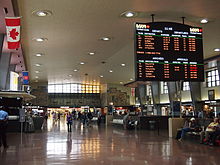

Trains from within Canada
VIA Rail Canada train routes serving Montreal:
- Between Quebec City and Ottawa including stops in Drummondville , Saint-Hyacinthe , Saint-Lambert , Montreal, Dorval , and Alexandria . Multiple trains daily travel the entire route and some additional trains travel daily between Montreal and Ottawa. Travel time to Montreal from Ottawa is 2 hours (from $35), from Drummonville is 1.25 hours, and from Quebec City is 3.25-3.5 hours (from $47).
- Between Montreal and Toronto including stops in Dorval , Cornwall , Brockville , Kingston , Belleville , Cobourg , and Oshawa . Operates 6 trains daily. Travel time to Montreal from Toronto is 5.25 hours (from $85) and from Kingston is 2.25-2.5 hours.
- Between Halifax and Montreal on The Ocean route, including stops in Moncton and Sainte-Foy (near Q ue bec City ). Operates 3 evenings per week. Travel time to Montreal from Halifax is 22 hours (from $133 coach, $187 upper berth, $245 bedroom)), from Moncton is 17.5 hours (from $110 coach, $162 upper berth, $219 bedroom), and from Sainte-Foy is 3.5 hours. A shuttle between Sainte-Foy and Quebec City's train station is available for The Ocean trains, but must be reserved in advance. The choice of sleeping accommodation varies according to the season. Along with trains between Montreal and Quebec, the Ocean is now almost exclusively operated by modern Renaissance trains that were built for the aborted Channel Tunnel sleeper services between Great Britain and France .
- Between Jonquière (in the Saguenay region) and Montreal including stops in Hervey-Jonction , Shawinigan , Saint-Paulin , Saint-Justin , and Joliette. Travel time to Montreal from Jonquière is 9 hours (from $55) and from Shawinigan is 2.5 hours. Operates three days per week. Route operates as a wilderness service: a request stop may be made at any point along the route for those who want to hike and kayak in the remoter regions of Quebec that the train passes through.
- Between Senneterre (in the Abitibi region) and Montreal including stops in La Tuque , Hervey-Jonction, Shawinigan, Saint-Paulin, Saint-Justin, and Joliette. Travel time to Montreal from Seneterre is 11.5 hours (from $81), from La Tuque is 5.5 hours, and from Shawinigan is 2.5 hours. Operates three days per week. Route operates as a wilderness service: a request stop may be made at any point along the route for those who want to hike and kayak in the remoter regions of Quebec that the train passes through.
Trains from the United States
The journey to New York is cheaper but slower than by bus (see below), but it makes up for it with superior comfort, extra legroom, the ability to walk around the train and visit the cafe car for food and drink at your leisure, and the good view from the train of the Lake Champlain and Hudson River scenery.
Train passengers leaving from Boston may take the Regional Service to Penn Station, New York City, and transfer to the Adirondack line to Montreal, but this method requires significant layover times in New York.
The train station has no permanent lockers but it's usually possible to keep it guarded by Via Rail for less than a day if travelling with it. There is Wifi and a few power outlets.
Buses arrive and depart from the Gare d'autocars de Montreal (not to be confused with the Gare Centrale or central train station) at 1717 Berri Street (adjacent to the Berri-UQAM metro station). Call +1 514-842-2281 for schedules and prices.
Intercity operators include:
- Autobus Galland , ☏ +1-450-687-8666 , toll-free: +1 877-806-8666 . Operates bus service in Quebec . ( updated May 2022 ) Operates bus service between Mont-Laurier and Montreal and including stops in Mont-Tremblant , Saint-Jérôme , Mirabel , and Laval . Travel time to Montreal from Mont-Laurier is 4.75-5 hours and from Mont-Tremblant is 2.75-3 hours, and from Saint-Jérôme is 1.25-1.5 hours. Operates several days per week between Mont-Laurier and Montreal. There are additional trips between Mont-Tremblant and Montreal, resulting in daily service along that part of the route.
- Between Rouyn-Noranda and Montreal including stops in Val-d'Or , Grand-Remous, Mont-Laurier, Mont-Tremblant , Sainte-Agathe-des-Monts , Saint-Jérôme , and Laval . Stops between Mont-Laurier and Montreal are drop off only on the way to Montreal and pick up only on the way to Rouyn-Noranda. Travel time to Montreal from Rouyn-Norand is 9-9.5 hours, from Val-d'Or is 7-7.5 hours, and from Grand-Remous is 4.25-4.75. Operates daily. From Rouyn-Noranda there is service to North Bay .
- Between Ottawa and Montreal including stops in Gatineau and Laval . Travel time to Montreal from Ottawa is 3.5 hours. Operates daily.
- Autocars Skyport , ☏ +1-514-631-1155 , toll-free: +1-800-471-1155 , [email protected] . During ski season (December to April), operates a multiple times per day non-stop route between Montreal International Airport and Mont-Tremblant , where it stops at various hotels. $95 per adult one-way, $161 per adult round trip, $65.50 per child (2-11 years old) one-way, $111 per child round trip . ( updated May 2022 )
- From New York City including stops in Albany , Saratoga Springs , and Plattsburgh . Travel time to Montreal from New York City is 8.25-9.5 hours, from Albany is 5.75-6.25 hours, and from Plattsburgh is 2.25-2.5 hours.
- From Boston including stops in Manchester , Concord , Hanover , White River Junction , and Burlington . Travel time to Montreal from Boston is 8.5 hours, from Manchester is 7 hours, from Concord is 6.5 hours, and from Burlington is 3 hours.
- From Dolbeau to Montreal including stops in Val-Jalbert , Alma, and Quebec City. Travel time to Montreal from Dolbeau is 9 hours, from Val-Jalbert is 7.25 hours, from Alma is 6.25 hours, and from Quebec City is 3.5 hours. Operates several days per week.
- From Jonquiere to Montreal including stops in Chicoutimi and Quebec City. Travel time to Monteal from Jonquiere is 6.75 hours, from Chicoutimi is 6.5 hours, and from Quebec City is 4 hours. Operates daily.
- Several days per week there a same day connection to and from Sept-Îles involving a transfer in Baie-Comeau. Travel time to Montreal from Sept-Îles is 14.5 hours.
- Between Montreal and Granby (1.5 hours if direct, 1.75 hours if transfer required in Bromont).
- Between Montreal and Sherbrooke with stops in Longueuil , Bromont, and Magog . Travel time to Montreal from Longueuil is 15 minutes, from Magog is 1.5-1.75 hours, and from Sherbrooke is 2-2.25 hours. Operates multiple times daily.
- From Gatineau via Ottawa . Travel time to Montreal from Gatineau is 2.75-3 hours and from Ottawa is 2.25-2.5 hours.
- From Quebec City via Drummondville . Travel time to Montreal from Quebec City is 3-3.25 hours and from Drummondville is 1.25 hours. Operates multiple trips daily. Most trips do not stop in Drummondville, but at least one trip per day stops in each direction.
- From Quebec City via Saint-Hyacinthe , Drummondville and Victoriaville . Travel time to Montreal from Quebec City is 4.25 hours and from Drummondville is 1.5 hours. Operates two days per week. For Victoriaville stop, it is drop off only for trips to Quebec City and pick up only for trips to Montreal.
- From Quebec City via Trois-Rivières . Travel time to Montreal from Quebec City is 3.75 hours and from Trois-Rivières is 1.75-2 hours. Operates multiple times daily.
- Timed connections in Quebec City enable same day trips to and from Rimouski via Rivière-du-Loup . Travel time to Montreal from Rimouski is 6.25-7.75 hours and from Rivière-du-Loup is 4.5-6 hours.
- Timed connections in Quebec City and Rimouski enable same day trips to and from Gaspé , Percé , and Pointe-à-la-Croix. Travel time to Montreal from Gaspé is 13.75 hours, from Percé is 14.5 hours, and from Pointe-à-la-Croix is 9.5 hours.
- Rivière-du-Loup (as of May 2022, Maritime Bus is not operating here due to Covid-19)
- Pointe-à-la-Croix, QC / Campbellton , NB (2 km taxi ride between these communities)
- Tour Express , ☏ +1-514-228-2303 , [email protected] . Intercity service Montréal-Ottawa and Montréal-Gatineau. Travel time to Montreal from Ottawa is 2 hours. ( updated Jul 2021 )
Montreal is an island in the middle of the Saint Lawrence River, accessible only by bridge. Not all bridges are bike accessible; however, several are, including the breathtaking Jacques Cartier bridge. Prominent bike lanes exist throughout the city, most notably along the Lachine Canal, Rue Rachel, boulevard de Maisonneuve, rue Brébeuf, rue Berri, rue Cherrier and along rue Laurier. The Plateau-Mont-Royal is where most of these bike paths are and is the neighbourhood, along with neighbouring Mile-End, where there are the most people who cycle and walk as a means of day to day transport. It has the highest density population wise and the lowest car ownership rate per household. However, bike theft is an issue, especially in the Plateau. Most locals can recall a time when they witnessed bike theft, though the situation is getting better now that the public bike share program, Bixi, has been implemented. It was not uncommon to have somebody offer you a stolen bike for sale on the street. Be equally aware of the peripheral articles of your bicycle; seats, baskets, and wheels can often be easily detached if not properly secured to the bike's frame or locked with a u-lock.
From Montreal Central Station ( Gare Centrale )
Upon disembarking the train, go to the baggage claim area and wait there for a baggage attendant to bring your bicycle to you. If you have checked other baggage, claim it at the conveyor belt. The easiest way to exit the station is at the main entrance near the baggage claim through the parking garage onto rue de la Gauchetière. All other exits require you to carry your bike up flights of stairs. At the west side of the station is the entrance to the Underground City and access to Bonaventure metro station on the Orange line. However, there is no elevator access to the metro from the train station, which means that you have to carry your bike and luggage down several flights of stairs.
From Montreal-Trudeau International Airport
The airport is on the western part of the island. From the main terminal, exit onto the main access road and turn right. Wind along the access road until the first major interchange and turn right. You will reach Albert de Niverville Boulevard and be forced to turn left (south) towards the main highway (Autoroute 20). At the end of this Boulevard, turn right on Cardinal Avenue. To your right, you will come to a pedestrian underpass that takes you under the railway tracks and leads to the Dorval Circle, a very busy traffic circle. This looks intimidating, but the traffic lights will allow you to ride safely under Autoroute 20 to Dorval Boulevard (Boulevard Dorval) . Continue south down Dorval Boulevard until the end. Turn left on Lakeshore Drive (Chemin Lakeshore) towards the city. This road turns into Boulevard St. Joseph. You will eventually come to a bike path to your right that winds along the shores of Lac-Saint Louis (part of the Saint Lawrence river) through the town of Lachine. Continue down this path until you reach the entrance of the Lachine Canal. Cross the canal and continue down the Lachine Canal Bike Path (Piste Cyclable Canal Lachine) and follow the signs to the Old Port (Vieux Port) in Old Montreal (Vieux Montreal). The Lachine Canal Bike Path can be quite busy on weekends and holidays, so be ready to take your time. It is paved over its entire length.
From Ontario
Cyclists approaching Montreal from the west must take secondary highways to Dorion, where Autoroute 20, inaccessible to bicycles over most of its length, becomes accessible as it crosses bridges first to Île Perrot (Perrot Island) and then to the Island of Montreal (at Saine-Anne-de-Bellevue). Bicycles should use the sidewalk on these bridges as traffic is usually heavy. From here, cyclists may take Lakeshore Boulevard and the Lachine Canal Bike Path (see Airport section above) to Old Montreal and the downtown core.
The Isle-aux-Tourtes Bridge on Autoroute 40 is not accessible by bicycle.
From the United States
Cyclists approaching Montreal from the South Shore to the south and east of Montreal may access the Island of Montreal a number of ways (see map ).
The surest (but not foolproof) way is using the sidewalk Jacques Cartier Bridge. When it is not closed for repairs, it is open year round and all day. A paved bike path along the shores of the Saint Lawrence River provides the most scenic approach to the bridge.
The new (Samuel-de) Champlain Bridge (built in 2019) has an excellent cyclist-and-pedestrian path that will take you from Brossard to Nun's Island (and from there, give you easy access to the Pointe-Saint-Charles or Verdun neighbourhoods of Montreal).
An equally popular route is from the Saint Lambert Locks (Ecluses Saint-Lambert) of the Saint Lawrence Seaway near the Victoria Bridge (Pont Victoria) east of Montreal . The bike drawbridge may be blocked by the entertaining spectacle of a ship passing through the seaway. From here, cyclists take the Grand Prix racing track (Gilles-Villeneuve circuit) on Île Notre Dame to the Concord Bridge to Montreal. This route is closed sometimes for car racing events or construction [ dead link ] . In this case, cyclists can take a circuitous detour down a gravel causeway dividing the seaway and river to the Estacade, an ice boom that crosses the river parallel to the Champlain Bridge to Nun's Island and eventually Montreal. A lesser known crossing involves one at the Sainte Catherine Locks (Ecluses Sainte-Catherine) at Saint-Catherine south of Montreal. These bridges cross the seaway to the same causeway as the Saint Lambert locks. In this case, the road to the Estacade ice boom is paved.
The Mercier bridge and Lafontaine Tunnel are definitely inaccessible to bicycles. These can be dangerous, even in a car. There is no bicycle path crossing the Mercier Bridge.
The Jacques-Cartier bridge operates on a winter schedule when the society that manages the bridge decides conditions are no longer adequate. This means access is closed at night as well as during snow removal operations. The new Champlain bridge bike path is open except during snow removal operations. The Saint-Lambert Locks south shore link closes from about November 15th to April 15th .
Montreal has historically been divided into east and west by boulevard Saint-Laurent, with the west side traditionally being Anglophone and the east side traditionally being Francophone. Numbered addresses on streets that cross Saint-Laurent start there and increase in either direction; most addresses are given as "rue ____ Ouest" (west) or "rue ____ Est" (east). Many streets are named after Catholic saints and figures from local history, both well-known and obscure. In Montreal street names, "east" and "west" refer to the direction parallel to the St. Lawrence River, and "north" and "south" refer to the direction perpendicular to the St. Lawrence River. Because the St. Lawrence River runs almost north-south near downtown Montreal, "east", "west", "north", and "south" are actually northeast, southwest, northwest and southeast respectively. Confusingly, most maps displayed in the city have "Montreal north" on top which can be confusing with a satellite navigation that uses pole north. Also, don't try to navigate by looking at the sun!
Walking is a favoured way to get around the densely packed downtown and the narrow streets of Old Montreal, especially during the warmer months. However, beware during winter months, as sidewalks can be icy and extremely hazardous after winter snow and ice storms. Winter boots with good grip are essential for surviving pavements that have not been cleared. Beware also (as much as you can) of thawing ice falling from overhanging balconies and roofs. But you can always take the stairs down to Montreal's famous "Underground City" ( Montréal souterrain ), called RÉSO, a network of pedestrian corridors connecting Métro stations, shopping centres, and office complexes.
Jaywalking is widespread and rarely punished. However, drivers will usually not stop or even slow down if a pedestrian steps out in front of them, even at marked crosswalks. At an intersection, however, a pedestrian will have right of passage before turning traffic and most drivers respect this. Despite Montreal drivers' poor reputation for aggressiveness, they generally respect pedestrians.
Rue Sainte-Catherine is Montreal's main commercial artery and busiest pedestrian thoroughfare. The "Underground City" and the Green Line (or line 1) of Montreal's Metro is easily accessible from all the major office complexes, shopping malls, department stores, and theatre complexes that line it. Smaller chain stores and restaurants also vie for valuable commercial space. Well-kept historic churches with green space provide quiet oasis and contrast with the giant neon signs of strip clubs. Major hotels can generally be found one or two blocks north and south of Sainte-Catherine in the downtown core. Bars, restaurants, and dance clubs cluster within a block of Sainte-Catherine around Crescent and Bishop, catering to a mostly English-speaking clientele. Rue Saint-Denis, farther east, and the Gay Village between Berri and de Lormier, even more to the east, are mostly French-speaking. McGill College Boulevard in the downtown core from Saine-Catherine offers an open view of Mount Royal to the north and an impressive view of the Place Ville-Marie skyscraper to the south. Keep your head up and beware of following the flow of the crowd on this street: throngs of pedestrians often walk across cross streets against red lights, risking life and limb.
Rue Prince-Arthur, east of Saint-Laurent, is for pedestrians only. Another pedestrian-only locale is Montreal's Chinatown, on Rue de la Gauchtière Est between Saint-Urbain and Saint-Laurent. A good trick for navigating downtown Montreal is to remember that streets slope up toward Mount Royal, which is just north of downtown and easy to see from most locations.
The districts surrounding downtown Montreal are especially delightful on foot. To the south is Old Montreal (Le Vieux-Montréal) (its narrow streets and buildings dating from the 17th and 18th centuries really can make you feel like you're in Old Europe) and the Old Port (Le Vieux-Port), a waterfront strolling park with exhibits and boat tours, is very popular with the locals. To the north, the Golden Square Mile and the McGill University Campus is wedged between Mount Royal and Sherbrooke Street on the southern slope of the mountain. Old Victorian mansions and townhouses can be found along the sloping streets, many now housing McGill University's offices and libraries. Just west of downtown is affluent Westmount, a perfect example of 19th-century English-style homes and gardens (inhabited to a great extent by English-speaking people) climbing the slopes of Mount Royal's western part (the higher you climb, the larger the old mansions). Just east and northeast of downtown are the mostly French-speaking Gay Village (Le Village Gai) and Plateau (Plateau Mont-Royal) districts. Street after street displays turn-of-the-19th-century row duplexes and triplexes, replete with famous Montreal outdoor staircases, overflowing front gardens (or snow-covered gables, depending on the time of year), and tiny shops tucked into every nook and cranny. For people who like to see a culture where it lives, Le Plateau is the place to wander about in.
Mount Royal (Mont-Royal) is also accessible from the urban core on foot. Fit pedestrians can climb Rue Peel to the southern edge of the park. A series of renovated staircases will take you directly to the Chalet near the top of the mountain, with its classic view of the downtown core. A more leisurely climb to the top awaits those on Olmsted Road (6.5 km), a wide, gently sloping bike and footpath accessible from the Plateau in Parc Jeanne-Mance (also known as Fletcher's Field). Smaller footpaths serendipitously branch off from this road. A cross-country ski path also winds to the top in the wintertime. Mount Royal's park was designed by Frederick Olmsted, a landscape architect who lived from 1822 to 1903 and was also responsible for the design of Central Park in New York City and the Emerald Necklace in Boston .
Driving ( SAAQ ) in Montreal can be a challenge for many North American motorists. Although turning right on a red light is allowed across the rest of Quebec (except at intersections where a sign indicates this is not permitted), right turns on red are strictly prohibited on the island of Montreal. The stop lights at most of downtown intersections are on the opposite side of the intersection, not at the stop line as in some of Europe.
The use of road salt to keep roads ice-free during severe winters takes its toll on the roadways, which are either heavily potholed or subject to perpetual construction. Downtown traffic is dense. Street parking can be difficult. Parking meters are in use seven days a week in most districts (M-F 09:00-21:00, Sa 09:00-18:00, Su 13:00-18:00), including statutory holidays. The standard parking ticket cost is $52. Parking tickets may be appealed in court only by the owner of the car that was subject to the infraction, so if a rented car is ticketed, the person who rented may be unable to contest the charge. Car parking downtown is expensive at around $3 an hour at parking meters or $25 per day at commercial parking lots. Parking signs are all in French, and will describe a day and hour (based on 24-hr clock) along with conditions for parking. Many arterial roads prohibit parking on one side during rush hour, and vehicles are subject to $150 fine plus towing costs and other fees. Montreal does not paint curbs red next to fire hydrants, but it is still illegal to park there.
There are also many private and public parking lots, and their prices vary widely. There may even be $15–20 differences between two parking lots just a few blocks from each other.
During the winter months, heavy snowfalls are common. In the aftermath of a snowstorm, an intensively-prepared "déneigement" (snow removal) process begins with intimidatingly large snow plows and trucks clearing, chewing up, and transporting away the snow. If you leave your car parked on a street, pay close attention to any orange "no parking" signs that will appear on roads to be cleared. Tow trucks will sound a loud 2-tone horn siren just before clearing. This is an announcement that a street is about to be cleared and that all parked cars will be cited/and or towed if they are not moved. For this reason it's important to be able to check your vehicle at least once daily after a snowfall. It is best to use indoor or underground parking if snow clearing is likely.
Many downtown streets are one way, which can complicate getting around. If you see a sign at an intersection that has direction arrows in a green circle, that means those are the only directions you are allowed to turn. Left turns are allowed on a green light provided there are no other signs prohibiting. Visitors should be familiar with the flashing green light, which indicates a protected left-turn (priority), which is equivalent to a green arrow in other parts of the world. Some signals are green arrows that flash, this is the same meaning. Autoroutes (expressways or freeways) can be challenging for visitors, as most signs are French, but most symbols are the same as in English Canada and the United States.
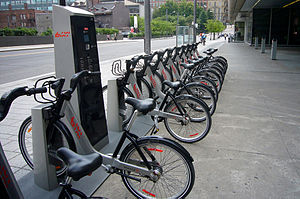
Cycling is the best way to visit the city, especially its central neighbourhoods like the Plateau Mont-Royal; it is a very popular mode of transportation once the coldest winter weather is over. The city is criss-crossed by more than 900 km of cycle paths, and the network is rapidly expanding. In the past few years there has been a major improvement in the quantity of safer separated bike lanes, with new lanes popping up in every neighbourhood. Montreal has become one of the best cities in North America for urban cycling. The Réseau express vélo (REV) provides safe, separated and mostly direct bike lanes in key locations and is best for riding across different parts of the city in a very efficient way. Montreal City Council publish an interactive map of the cycle route network.
One of the nicest path is the Lachine Canal path that stretches from Lachine, along Lac St-Louis, down to Old Montreal along the canal. You can cross over to the South Shore either on the Samuel-de Champlain Bridge, Jacques Cartier Bridge, Île Notre-Dame, or via the Estacade ice bridge from Île des Sœurs.
Even if you are on a bike path, beware of drivers especially if they are turning, as lines of visibility at intersections are not well enforced in the city. Generally Montreal drivers in the central neighbourhoods are used to sharing the road with bikes and so are courteous, there are always a few, usually from outlying neighbourhoods, who give all drivers a bad name. Some downtown bike paths are separated from the road by parked cars, which decreases visibility, both yours and the driver's. The often crowded bike path on rue Rachel one is the worst for this, however the Plateau part of the path will be renovated soon to make it safer and greener. If one is comfortable driving in Montreal, one generally can feel comfortable biking there as well. Montreal pedestrians are known for not waiting for a light to change if there are no cars coming; cyclists are a bit like that too and often treat the many stop signs on residential streets more as yield signs than as stop signs. Wearing a helmet is not required under the law, though, for children especially, it's better to be safe than sorry.
The Bixi system is a public bike-share system. Rated the best in the world, it was designed and developed in Montreal and has since been exported to many cities around the world including London, UK and Sydney, Australia. Major credit cards are accepted. The Bixi was conceived for local active transit but is accessible to tourists as well. For a flat $5 fee, you can use Bixi bikes as much as you like for 24 hours provided you don't use a particular bixi bike for more than 30 minutes at a time before returning it to a docking station. After returning the bike to a docking station, you can get another bike (even at the same station) after a 2-minute waiting period. As of 2023 there are over 830 Bixi stations with over 10000 bikes, including 2300 e-bikes, covering much of the city and some suburbs. The tourist information centre has maps of the stations. Helmets and locks are not provided. You could use your own lock, but there is usually a station not more than a block away on a commercial strip so returning the Bixi to the nearest stand is always the safest and most cost-effective choice. Stations fill up and empty quickly; you may have to bike to the next station to find an empty docking spot. If you have a smartphone, there is an app that shows you real-time the nearest stations, how many bikes are docked, or whether there is a free docking spot available. Be aware that a helmet is mandatory under the law if riding an electric bike. Police has been known to give fines.
Skate and bike rental shops are common, particularly in the Old Port and the Plateau. Visit La Maison des Cyclistes (the cyclists' house) at 1251 rue Rachel Est for all info on cycling in Montreal. (See Do for specific bike paths).
Montreal, however does a fair job of clearing snow on a select number of bike paths in the city, including the REV, the de Maisonneuve bike path, Côte-Sainte-Catherine, Rachel and Clark bike paths. Painted bike lanes, on the other hand are often badly cleared, resulting in dangerous ice build up. The popular Lachine Canal bike path, however, does not have snow removal which makes it very difficult to ride on in winter. The Jacques-Cartier bridge multipurpose path , on the upstream side of the bridge, is closed at night during winter to cyclists and pedestrians. The de la Concorde bridge bike path, however, is open all year long.
Starting in the fall of 2023, Bixi will operate its bike-share service all winter as part of a pilot, although only at a select number of stations, mostly in the denser inner-city boroughs.
By public transit
By metro and bus.

Société de transport de Montréal ( STM ), ☏ +1-514 786-4636 . ( updated Jan 2024 ) STM is safe, efficient, and is overall pleasant to use. Tickets have been replaced by cards with magnetic stripe containing one trip, called an à la carte ticket. These are valid for one trip (including unlimited transfers in the same way for 120 min) on the metro and buses, costing $3.75 each (exact fare in coins is required on the buses but not on the metro) but are also available for less when you purchase two for $6.00 or ten for $27.00 (OPUS card required) either from the metro agent or the automatic fare vending machine in metro stations. Signs and announcements are only in French, though ticket machines are bilingual in French and English. Many metro counter staff are also able to speak English.
The Metro is entirely underground. Montreal metro stations and train cars do not have air conditioning. This means the Metro can sometimes get uncomfortably hot, in every season. It is, however, still the best transport option in the city.
Only certain metro tickets are valid in Laval and Longueuil . You will need to buy an All Modes AB ticket for $4.50. A full listing of all types of tickets and their validity can be found here.
You must keep your payment card as it is your transfer and your proof of payment ( correspondance ); fare inspectors may give you a large fine if you are unable to show it when they request it.
If you are using cash to pay your fare on the bus, it is important to have the exact fare, since the driver does not give change. Transfers are not provided when paying in cash.
Tourist passes offer unlimited travel on the bus and metro for periods of one day ($11) or three days ($21.25) and are well worth it to avoid fumbling for change, checking transfer times and restrictions, and worrying about getting off at the wrong stop and having to repay. There is also an option for unlimited evenings ($5.75), valid between 18:00 and 05:00 the next morning, which can be practical on a night out, since it's cheaper than buying a two-way ticket (which would cost $6). They are available for purchase at all metro stations (pay cash or use Canadian credit or debit cards only). Weekly ($29, valid for one calendar week running Monday through Sunday) and monthly ($94, valid by calendar month) passes are also available; unlike one day and three day passes, weekly and monthly passes must be loaded onto an OPUS card (see below) and are not available in paper ticket form.
The OPUS card is a smart card with a chip that contains your fare and transfer information. The OPUS card can be purchased at all metro stations and transit fare points of sale. As of January 2017, the card costs $6.
OPUS cards can be refilled at metro stations using the automated machines or at the ticket booth.
At each metro station, directions are not indicated by compass directions, such as westbound or eastbound. Instead, trains go in the direction of a metro line's terminus. The green line runs from Angrignon in the west to Honoré-Beaugrand in the east. If you were to travel eastbound, for example, you would look for Honoré-Beaugrand on the platform. If you were to travel westbound, you would look for Angrignon . There are four interchange stations at which commuters can change subway lines without extra charge: Snowdon (blue/orange), Lionel-Groulx (orange/green), Berri-UQAM (green/yellow/orange), and Jean-Talon (orange/blue).
Bicycles are permitted aboard metro trains outside of the rush hours such as: before 7:00, from 9:30 to 15:30 and from 18:00 to end of service on weekdays and all day Saturdays, Sundays, and legal holidays. Bikes are only allowed in all cars of the train but are asked to not use the lead car, up to a maximum of 2 per car. STM staff may deny bikes aboard the metro for safety reasons such as special events that might generate a high level of ridership. Lists of such events are posted on the STM website and at the entrances to metro. During festival season in Montreal, bikes are sometimes restricted.
Bike riding inside stations or the Underground City is strictly prohibited.
- Line 11 - Vaudreuil–Hudson between Montreal and Hudson including Montreal-Ouest and Vaudreuil-Dorion . Service is available daily, though almost all trips are between Montreal and Vaudreil. The only trips to or from Hudson are from Monday to Friday with 2 morning trips from Hudson and 2 afternoon trips to Hudson.
- Line 12 - Saint-Jérôme between Montreal and Saint-Jérôme including stops in Laval , Blainville , and Mirabel. Service is available daily, though on Saturdays and Sundays, the service only travels between De la Concorde and Saint-Jérôme. Transfers from Montreal's Metro are available at Montreal's Lucien-L'Allier station (weekday rush hours and evenings only), Vendôme station (weekday rush hours and evenings only) and Parc station (weekdays only), and Laval's De la Concorde station (every day).
- Three other exo lines operate, but only Monday to Friday.
Commuter train stations are divided into three zones that radiate out from downtown. Stations have automated machines from which you must purchase a ticket appropriate to the zones of the station you are traveling to or from, whichever is farther (for example, a trip from Zone A to Zone B or vice versa would require a All Modes AB ticket). A pre-purchased ticket card (L'occasionelle) must be validated at the card scanners at the entrance to the platform. In general, reduced fares (for students and seniors) require ID that is not available to travellers, but if you are staying in the area, ask an employee for more details as the rules are complicated, but you can get good savings.
There are no ticket machines on the train and ticket inspections are random. Incorrect tickets sometimes go unnoticed because inspectors check only occasionally. However, it is best to avoid taking chances as if the ticket is not valid, the customer can get a fine of $400. The ticket machines should now all be bilingual in English and French. The two downtown stations have staffed ticket booths Monday to Friday, but not in the evenings. Other stations may also have booths but generally only during either the morning or afternoon rush hour.
- Taxi MonTaxi , ☏ +1 514-322-1322 . 24/7 . Professionnal Taxi Service in Montréal ( updated Feb 2024 )
- Taxi Bonjour Montreal , ☏ +1 514-366-3333 . ( updated Jul 2022 )
- Taxi Champlain , ☏ +1 514-271-1111 . ( updated Jul 2022 )
- Taxi Co-op , ☏ +1 514-725-9885 . ( updated Jul 2022 )
- Taxi Diamond Montreal , ☏ + 514-836-0000 . ( updated Jul 2022 )
By ride hailing
- Uber . ( updated Jul 2022 )
MapArt produces an excellent map in book-form of downtown Montreal and environs, including Vieux Montréal, Mount Royal, the Plateau, and areas as far north as the University of Montreal and as far south as Parc Jean-Drapeau. That form is handy as you can avoid always folding a map of the whole island.
Below is a basic map of the primary areas of interest to visitors.
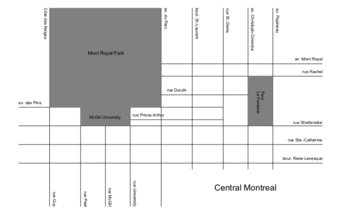
Architecture
Many notable historical buildings and churches are located in Montreal, the vast majority of which are in old Montréal . Most of these date from the 17th to the 19th century, showcasing the variety of architectural styles seen in these periods. At night, several of the buildings are beautifully illuminated, seemingly glowing from within. A Tourist Welcome Office brochure from bonjour québec lays out a walking map. It is worthwhile to follow the map twice, once during the day, and again at night.
- Of the four Roman Catholic Basilicas in Montreal, the Notre-Dame Basilica (Basilique de Notre-Dame) at Place d'Armes is undoubtedly the most famous church in Montreal. This architectural marvel is known throughout the world for its lavishly decorated and colourful interior. This basilica, splendidly exemplifying the Gothic Revival style, is an extremely popular tourist attraction.
- Although rather small and not a basilica, another notable church located in Old Montreal is the Notre-Dame-de-Bon-Secours Chapel (Chapelle Notre-Dame-de-Bon-Secours) near the Bonsecours Market, the first church to be founded in Montreal. It is known for its maritime theme and beautiful frescoes on the inside walls and ceilings.
- Downtown Montreal houses Saint Joseph's Oratory (Oratoire Saint-Joseph), the largest church in Canada. Stylistically based on elements of the Italian Renaissance, it features the third highest dome in the world, and acts as the highest point in all of Montreal .
- Downtown Montreal is also home to the opulent Mary, Queen of the World Cathedral (Cathédrale Marie-Reine-du-Monde), a National Historic Site of Canada modeled on St Peter’s Basilica in Rome, and Saint Patrick's Basilica (Basilique Saint-Patrick), which was built to serve Montreal's Anglophone Catholic community.
- Aside from churches, a main architectural feature of downtown is Habitat 67 , a residential complex built from interlocking modular forms, giving a result that somewhat resembles a pile of Lego bricks. It is the only intact pavilion remaining from Expo 67 and is known around the world as an excellent example of post-modern and minimalist architecture. Its conception has had an incalculable impact on later development of modular homes. Located at Cité-du-Havre, near the Old Port (Vieux-Port). Guided tours are available; tickets must be booked online in advance. Adults $50; children under 12 free.
- Le Plateau combines scenic residential streets with hip shopping and dining.
- Vieux-Port (Old Port), is located south of rue Saint-Antoine between rue McGill and rue Berri (metro Champ-de-Mars or Place-d'Armes). The Old Port is a large waterfront green space with attractions such as Cirque du Soleil, the Montreal Science Center, the Labyrinth, the Clock Tower, and a large outdoor audio-visual stage which is the site for the Canada Day fireworks. It is a vibrant place to visit during the day and the evening. ☏ +1 514-496-7678, toll-free: +1 800-971-7678, [email protected]. 6AM-Midnight.
- Downtown Montreal has skyscrapers, the enormous McGill university campus, churches, and museums. Several blocks are connected by the famed 30 km of underground arcades and malls, allowing comfortable walking and shopping when the weather is foul.
- Parc Jean-Drapeau , site of the 1967 World Fair, now devoted to green spaces and a large outdoor concert venue. The Gilles-Villeneuve racing circuit, home of the Montreal Formula 1 Grand Prix. An artificial beach, a huge outdoor pool complex, and the Montreal Casino are also in or around the park.
- A few kilometres to the north, Hochelaga-Maisonneuve offers the Olympic Stadium , the Insectarium , the Jardin Botanique , and the Biodôme . This diverse range of activities and environments offer something for all ages. When planning a trip, allow four hours to see all four.
Montreal contains a wide variety of museums - over 50 in total, both well known and hidden gems. Both types are well worth visiting, and will provide a worthwhile experience.
- Featuring dozens of expositions and over 44,000 works spread over 5 enormous pavilions, the Montreal Museum of Fine Arts (Musée des beaux-arts de Montréal), in Downtown , is the largest museum in Canada, and one of the largest in the world. Having many prominent travelling exhibits, it is both the oldest and most visited museum in Canada, and as such, is a wonderful experience.
- The Canadian Centre for Architecture , also known as the CCA, is a research center and museum providing montrealers, tourists and researchers alike a great place to visit and learn about structures and spaces that surrounds up. To learn more about upcoming exhibits, check out the calendar .

- A hidden gem in the old RCA Victor factory complex in St-Henri, the Musée des ondes Emile Berliner , in Saint-Henri , is a science and history museum dedicated to communicating the heritage of the audio industry in Canada and the world. In line with this, it pays tribute to Emile Berliner, the inventor of the gramophone, and his descendants’ contributions to the evolution of sound recording. Moreover, the museum looks at the roles and noteworthy contributions of Canadian companies in the 19th and 20th centuries, highlighting the role of Montreal companies and RCA Victor in the creation of satellites and the Canadarm. This makes it a worthwhile experience for those interested in science and technology, as well as Canadian history.
- The Redpath Museum (Musée Redpath), is located Downtown at the heart of the McGill University campus, is a fascinating museum of natural history. Watch out as it is only open durinng the week. For more information about their opening hours, check out this link .
- The McCord Museum (Musée McCord), in Downtown , is a museum dedicated to exploring Canadian history.
In Montreal/Parc Jean-Drapeau , you will find the Casino de Montréal and the La Ronde , a Six Flags family amusement park.
Cross-country skiing
During the winter, many parks offer the possibility to do cross-country skiing with groomed paths, including Parc regional de l'Ile-de-la-Visitation (ski rental available), Parc du Mont-Royal (ski rental available and usually the best ski conditions, and Parc Maisonneuve and Jardin Botanique (no ski rental).
Ice skating
There is year-round ice-skating at 1000, rue De La Gauchetière (metro Bonaventure). There is free skating at Lac aux Castors Beaver Lake in the Parc Mont-Royal, in the connected ponds of Lafontaine Park in Plateau Mont-Royal, and in the Vieux-Port in front of the Bonsecours Market and many parks.
Water sports
- River surfing — Although the Saint Lawrence River is frozen nearly solid for four to five months out of the year, the waterway has become a magnet for aficionados of this new sport. Unlike their oceanic brethren, river surfers ride the standing waves in fresh waterways. The Saint Lawrence has two main hot spots for the sport: Habitat 67 is close to the bridge between Montreal and Île des Soeurs, the site of the 1967 Expo and the Montreal Casino. (This wave is also known as Expo 67.) The Surf 66 Boardshop at the 1952 rue Cabot offers lessons.
- Kayaking — Just off the shore of the park in Lasalle are the Lachine Rapids. Huge waves, fast water, and loads of fun for kayaks. Lessons are available on site in the huge eddy formed by the peninsula. Annual surf (rodeo) competitions at "Big Joe" (still called "Beneath the Wheel" by old schoolers). Other famous play waves on this set of rapids on the St. Lawrence river are, Istambul and Constantinople, Pyramid, Slice and Dice, Black and Decker, and HMF on the other side of the islands. For those seeking less of an adrenaline rush, there is always the Bunny Wave (La Vague a Guy) upstream near the bike path at Park Rene Lesvesque. Rafting these same rapids is also a fun option.
A map of the cycle path network is available from Vélo Québec . Particularly pleasant places to cycle and skate include:
- Parc Maisonneuve — A large park with smooth paths.
- Parc Jean-Drapeau — Particularly the Île Notre-Dame on the Formula One race track: a fantastic view across the water to downtown Montreal.
- Lachine Canal — Bike paths west of the Old Port.
- Rivière-des-Prairies — You can ride across Montreal Island from west to east along the river on the north of Montreal. Many sites have incredible views. A stop at Perry Island is a must.
- Square Saint-Louis , corner of rue Saint-Denis and rue Prince-Arthur, slightly north of rue Sherbrooke (metro Sherbrooke). A charming little park with majestic trees and a lovely fountain, lined with charming houses on three sides (the Institute of Hotel Techniques of Quebec hotel school is the fourth side). This was the site of the first water reservoir in Montreal.
- Parc Jean Drapeau — The former Expo 67 fairgrounds, Parc Jean Drapeau is spread across two islands (Ile Ste-Helene and Ile Notre Dame) in the Saint Lawrence River. On Sundays in the summer, join thousands of Montrealers revelling in the sunshine and music outdoors at Piknik Électronique. People enjoy riding a bicycle around the Circuit Gilles Villeneuve race track on Île Notre Dame. La Ronde and the Montreal Biosphere are here. (metro Parc Jean Drapeau)
- Parc Lafontaine , from avenue Papineau to avenue du Parc Lafontaine and from rue Rachel to rue Sherbrooke. Ice skating on the lake in the winter, baseball, boules, and outdoor theatre in the summer. (metro Sherbrooke)

- Parc Maisonneuve and Jardin Botanique de Montreal ( from rue Sherbrooke to boulevard Rosemont and from boulevard Pie-IX to avenue Viau (metro Pie-IX or Viau) ). The Jardin Botanique is one of the largest botanical gardens in the world and features the First Nations Garden, the Insectarium, the Tree House, and 16 different themed gardens and greenhouses.
- Parc du Mont-Royal , ☏ +1 514-843-8240 , [email protected] . North of avenue des Pins, between avenue du Parc and chemin de la Côte-des-Neiges. This beautiful, immense urban park tops the "mountain" (at 232 m (761 ft), it's more like a hill) that overlooks all of Montreal and lends the city its name. Designed by Frederick Law Olmsted, creator of Central Park and Prospect Park in New York, the park is elegant and accessible, and has hundreds of nooks and crannies to explore. A broad and gradual 8-km (5-mile) bike and pedestrian path begins at the Monument Georges-Étienne Cartier (on Avenue du Parc, opposite the western end of rue Rachel, where the bike path continues), winding its way around the mountain and culminating at the Belvédère (lookout) and Chalet Mont-Royal, with incredible views of downtown, the St. Lawrence river, and the Eastern Townships. The Belevedere and Chalet are also accessible from downtown by the newly restored staircase, access via the path at the top of rue Peel. Many smaller paths and trails crisscross the park. For lazy visitors, or those with limited mobility, you can enjoy a wonderful view from the mountain by taking bus route 11, which stops at the lookout on Chemin Remembrance, and at Beaver Lake. Every Sunday during the summer, thousands of people get together at the monument on Avenue du Parc to enjoy the big tam-tam jam.
- Parc Jeanne-Mance , bordered by avenue du Parc, avenue Duluth (with a small extension south as far as avenue des Pins), rue de l'Esplanade and avenue Mont-Royal, directly across from Parc du Mont-Royal. Includes tennis courts, baseball/softball diamonds, a soccer/football pitch, beach volleyball courts, a skating rink in winter. Also a very popular dog-walking venue.
- Parc de l'Ile-de-la-Visitation , ☏ +1 514 280-6733 . Rue d'Iberville and boulevard Gouin, (metro Henri-Bourassa, Bus 69 east). This regional park is along the Rivière-des-Prairies. Quiet and enjoyable place to bring a lunch and relax for an afternoon. Good starting point for a cycling tour along the river.
- Parc Daisy Peterson Sweeney , near Marché Atwater ( an incredible year-round market filled with indoor merchants specializing in fresh meat, fish, fruits, vegetables, flowers and baked goods.) and the Lachine Canal ( a beautiful canal with a bike path and several parcs along side it), is one of the best places to visit to play chess during the summer. On Tuesdays 4pm to 8pm, Saturdays 11am to 5pm and Sundays 11am to 5pm there are chess games organized by the city where people of all ages like to gather for free!
Montreal has a bewildering variety of festivals, ranging from one-day ethnic fairs to huge international productions running two weeks or more. They are generally held in the summer and autumn, though increasingly they can be found throughout the year. Here are some of the larger ones:
- Just For Laughs Festival . Comedy festival with three main components: indoor paid shows (usually stand-up, but not always), free street theatre/comedy, and a mini film festival called Comedia. July.
- Shakespeare-in-the-Park . During the summer in parks around Montreal, Repercussion Theatre puts on outdoor performances of Shakespeare plays free of charge.
- Festival du Monde Arabe . In November, an annual festival celebrating the music and culture of the Arab world takes place in Montreal. Many Arab performers, traditional and modern, take the stage.
- Festival Mondiale de la bière . Annually, in May: several days of tasting beers, ciders, and other beverages from all over Quebec, Canada and further afield. The event typically offers over 500 different beverages, from over 70 brewiers, from many countries. There is no admission fee, and samples typically sell for 2-8 tickets ($1 a ticket) for a 150-200 ml sample. There are also musical performances and food kiosks. The festival can get very busy at peak times (Friday and Saturday evening of the event), so it is advisable to arrive early to avoid possible long queues.
- Montréal en lumière . A relatively new wintertime affair, attempting to transplant the city's festival magic to the cold season. Includes three main categories of activities: food and wine, performing arts, and free activities both indoor and outdoor. February.
- Montreal International Fireworks Competition , ☏ +1 514-397-2000 , [email protected] . In La Ronde amusement park (in Parc Jean-Drapeau). This fantastic festival features full-length fireworks displays, accompanied by orchestral music, by national teams from about a dozen countries around the world. Although the hot seats are inside the La Ronde theme park, the fireworks are visible from pretty much any clear space or rooftop in the centre of the city. Pedestrians can watch from Jacques Cartier Bridge, which is closed from 20:00 on fireworks nights. Another good spot is the promenade west of the Old Port. $35–45 ( seats in La Ronde, free everywhere else ). Saturdays 22:00 from mid-June to late July, and Wednesdays 22:00 from mid-July on.
- Fete de St-Jean-Baptiste . June 24 is Quebec's national holiday ( Fête nationale ). During the evening, a huge show takes place at Maisonneuve park. This is the show to go to hear made-in-Quebec music. Free. Street parties can also be found all over the city.
Music festivals
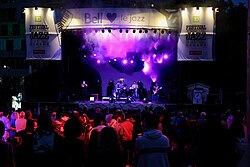
- Montreal International Jazz Festival ( Festival International de Jazz de Montréal ). The world's largest jazz festival, this festival is a major international event, attracting many big name artists. Many streets in downtown Montreal are closed off to traffic for two weeks and several concert stages are set up. There are many free outdoor shows and indoor concerts (paid). Late June - early July. ( updated Oct 2022 )
- POP Montréal International Music Festival , ☏ +1 514-842-1919 . A massive feast of up-and-coming bands in a variety of popular genres. In early fall, host to more than 80 events, more than 300 artists, a conference, and an arts fair. POP Montreal showcases emerging and innovative artists alongside rising international stars and is committed to encouraging vibrant indie communities.
- MUTEK . An annual gathering, held in Montreal. The MUTEK festival showcases emerging forms of electronic music and the latest trends in sound creation.
- Heavy Montréal . A two-day heavy music festival taking place in Parc Jean-Drapeau on Île Sainte-Hélène.
- Osheaga Music and Arts Festival . A three-day indie & alternative rock festival held annually in Parc Jean-Drapeau on Île Sainte-Hélène at the end of July/beginning of August.
Film festivals
- Fantasia ( Asian and fantasy ). July.
- Image + Nation ( Gay and lesbian ). November/December.
Sports to watch
- Canadiens , Ice hockey, Canada's national winter sport: Bell Centre ( Centre Bell ), 1260 rue De La Gauchetière (metro Lucien-L'Allier or Bonaventure), . One of the greatest institutions in Quebec culture. If you want to see a game, it helps to know someone with tickets, as they generally sell out within minutes of going on sale. They are widely available through unofficial channels and scalpers, but be prepared to shell out as they don't come cheap! You can also get cheaper tickets if you're a resident of the HI youth hostel. You can also stay in front of the hostel and ask a resident to buy a ticket for you if you aren't staying at the hostel!
- Alouettes , Football (Canadian Football League), Percival Molson Stadium ( Stade Percival-Molson ), avenue des Pins at University (playoffs: Olympic Stadium), . A dominant team in the last part of the 2000s, but now somewhat less so, the Als have won the Grey Cup three times since being reborn in 1996, including back-to-back in 2009 and 2010. Molson Stadium is an excellent place to see a game; tickets can be hard to come by when the team is doing well.
- Club de Foot Montréal , Association football (soccer), Saputo Stadium ( Stade Saputo ) at 4750 Sherbrooke street East and Viau in the Olympic Park (metro Viau). Formerly known as Montreal Impact , it is one of the newer teams in Major League Soccer, and the league's third team in Canada, joined MLS in 2012. The previous version of the Impact/CF Montréal was a consistent contender in several different leagues (including three in the last three seasons before the team joined MLS) at the U.S./Canada second level. CFM occasionally use nearby Olympic Stadium for matches that are expected to draw unusually large crowds or if the weather restricts outdoor play.
- Tennis — Montreal hosts an ATP Tour Masters 1000 event (men) every odd-numbered year. In even-numbered years, Montreal hosts a WTA Premier 5 event (women). The tournaments are held at IGA Stadium ( Stade IGA ) in Parc Jarry in the North End. The main stadium is of special historic interest to baseball fans—part of its seating is the former backstop grandstand of the stadium that hosted the Montreal Expos (now the Washington Nationals) before they moved to Olympic Stadium.
- Canadian Grand Prix : This Formula One race is staged at Circuit Gilles-Villeneuve on Île Notre-Dame, with the next on 13-15 June 2025.
Language classes
Montreal is a popular destination for language-immersion programs in French and English. Many schools arrange accommodations — either in dorms or with a family and provide cultural programs with trips around the city and beyond. Prices are usually higher for non-Québécois and higher-still for non-Canadians. Most are in Downtown and the Old City. Intensive, non-resident programs are also offered by the YMCA and Quebec government.
Universities
Montreal is home to one of Canada's oldest and most prestigious universities, McGill University . McGill is consistently ranked as one of the top 20 universities in the world, but not each faculty. It is a university with a huge endowment fund. Concordia University is the city's other English-language university, the largest east of Toronto, and has over 40,000 students. Though Concordia lacks a medical school and law school, it still has a world class business school and its arts and sciences programs are top tier. Its student population is generally more multicultural than McGill's and the school's origins in and continuing emphasis on adult education make it popular for mature students, since it holds many graduate-level courses at night. Both universities are research focused.
The Université du Québec à Montreal (UQAM) and the Université de Montréal cater mainly to Francophone students. The Université de Montréal is the second largest French-language university in the world, after the Sorbonne in Paris and is one of the largest research institutions in Canada. The Université de Montréal has two affiliated schools, Polytechnique Montréal (engineering), and HEC Montréal (business school) that offer undergraduate and graduate studies.
Université Laval , Université de Sherbrooke , and Universté du Québec à Chicoutimi , all Francophone, also have campuses in the Montreal area.
Every university, with the exception of Laval, lends its name to a metro stop to indicate the university's approximate location. For example, the Guy-Concordia subway station, at the intersection of Rue Guy and boulevard de la Maisonneuve ouest, is no more than two minutes away from its namesake university (Concordia).
As Montreal is in the province of Quebec, which has its own immigration policies, those wishing to work in Montreal will have to go through two processes, once with the Quebec government, then with the Canadian government after the Quebec government has approved your application. If you are employed with a foreign company which has a Montreal office, you can seek a transfer. You can also seek a job with a Montreal employer and they can sponsor you for a temporary work visa. If you are a skilled worker (see CIC website) you can immigrate based on your own skills.
French language ability is a requirement for most jobs, as businesses are required by provincial law to greet and serve clients in French. Jobs that do not require prior French language ability are mostly IT jobs, and academic jobs at Montreal's two Anglophone universities. The Quebec provincial government provides free French language courses for newly-arrived expatriates and immigrants who speak little to no French, and you are highly advised to sign up for one of these courses as soon as you arrive to aid your integration into society.
The United States–Mexico–Canada Trade Agreement (USMCA) allows skilled U.S. and Mexican professionals to obtain a Canadian work visa provided they are qualified in certain professions.
If you are a U.S. citizen aged 18–30 and a full-time student, you may qualify for a Canadian work visa valid for six months. Students from France, Britain, New Zealand, and Australia can also benefit from work programs. As well, if you obtain a degree from a Canadian university, you are eligible to remain in Montreal and work for up to one year.
For anyone else, the Immigration Canada (CIC) website explains a number of ways foreigners can legally work in Canada.
Student jobs include babysitting, painting during the summer, and moving furniture in June. McGill and Montreal universities are always in search of research subjects and so are Montreal's many biotech firms. Montreal also has many call centres, which constantly seek to hire new employees and offer flexible working hours.

Although Montreal's economy has been booming, the city remains remarkably affordable compared to other major cities in Canada and the United States. Shopping in Montreal ranges from eclectic budget stores to high-end fashion, with a wide spectrum in between.
Rue Ste-Catherine, between rue Guy and boulevard St-Laurent, has many of the big department and chain stores as well as a few major malls. Avenue Mont-Royal has funky consignment and gothic clothing stores from boulevard St-Laurent to rue Saint-Denis and a mixed bag of neighbourhood stores, used record shops, and gentrified boutiques heading east towards avenue Papineau. Rue St-Viateur is one of the city's most interesting streets, with its amazingly varied range of businesses crammed into the short stretch between Boulevard St-Laurent and Avenue du Parc.
St-Laurent remains one of the city's prime shopping streets, more or less along its whole length. Just about anything can be found there, with different blocks having different clusters of businesses (Asian groceries and housewares near de La Gauchetière, cheap electronics a little farther up, hip boutiques between Prince-Arthur and Mount Royal, anything and everything Italian between Saint-Zotique and Jean-Talon). Rue Sherbrooke ouest, west of the Autoroute Décarie, has an increasingly interesting concentration of largely food-oriented businesses. Jean-Talon market, near the intersection of Jean-Talon and St-Laurent, has a wide variety of local produce and food products (maple syrup, cheese, etc.) at very good prices.
For electronic stuff, the largest chain store is BestBuy. You can also find many smaller ones on Boulevard St-Laurent (between Ontario and Sherbrooke).
- Village des Valeurs , 2033 Pie IX ( Métro Pie IX ). Second hand store providing montrealers with shops inside and outside of Montreal. ( updated Aug 2023 )
- Le coffre aux trésors "Chainon" , 4375 Boulevard St Laurent ( Métro Sherbrooke ).
- L'Aubainerie Concept Mode , 1490, av du Mont-Royal E ( metro mont royal ).
- Friperie St. Laurent , Friperie St. Laurent , ☏ +1 514-842-3893 .
- Some military equipment shops around St-Laurent and Ste-Catherine.
For trekking and outdoor, you also have many options
- MEC , 8989, boulevard de l'Acadie , ☏ +1 514-788-5878 . Mountain Equipment Co-op is a co-operative with staff who know the stores merchandise well.
- La cordée , rue Ste-Catherine . Great store to stock up on your favorite or some essential gear for your next outdoor activity. ( updated Aug 2023 )
- Kanuk , 485 Rachel St E . Kanuk are best known for their winter coats and parkas. ( updated Aug 2023 )
Trendier boutiques can be found on rue Saint-Denis, north of rue Sherbrooke and south of avenue Mont-Royal est, and on rue Saint-Laurent (continuing as far north as Bernard). The latter is becoming more upscale, so the range of shopping is highly variable and lower in density as one goes north of Mont-Royal. Rue Sherbrooke has a number of high-end stores (notably Holt Renfrew) and commercial art galleries in a short strip running approximately from McGill University west to rue Guy. Farther west, Sherbrooke intersects with Greene Avenue in Westmount, which has a short, but luxurious retail strip. Avenue Laurier, between St-Laurent and its western end, is one of the city's prime spots for eating and shopping in high style, though there are still a few affordable spots here and there.
Furniture and antiques
On boul. St-Laurent, a cluster of high-end home furnishing stores. It starts roughly at the corner of rue Marie-Anne and is very prominent in the block between rue Marie-Anne and avenue Mont-Royal, with sparser, but still interesting stores as far north as rue Saint Viateur. Antique buffs will find interesting stores all over the city, but they'll want to make a special pilgrimage to rue Notre-Dame Ouest, when you head east from avenue Atwater. Rue Amherst, in the Gay Village, also has a significant concentration of antique dealers.
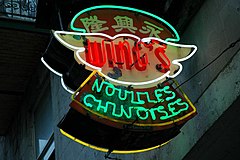
Montreal is a culinary mecca and has a huge variety of food options, from diners and fast food to low-cost ethnic restaurants to haute cuisine . The city was ranked 2nd best dining city in North America after San Francisco and ahead of New York. The large local Jewish population has contributed local specialties including huge smoked meat sandwiches (beef brisket) (Schwartz's is the most authentic smoked meat restaurant, though this title has been challenged by a gradual slip in quality in the early 2020s) and small, crusty bagels (the undisputed classic bagel places are St-Viateur's and Fairmount Bagels). Other specialties are "all-dressed" pizza (pepperoni, mushrooms and green peppers), pizza and spaghetti with smoked meat, and Québécois favourites like split pea soup and poutine.
Many Montreal restaurants are "apportez votre vin" ( bring your own wine ). This may sound like a hassle, but you end up paying much less for wine with dinner if you bring it yourself. There's usually a SAQ (government liquor store) or a dépanneur (convenience store, with a limited selection of typically inexpensive wine) nearby; ask your waiter where it is. Your waiter will open your wine for you; corkage fees are rare, but don't forget to factor this service into your tip so make sure to ask. If you are driving from the United States, you may find Canadian liquor prices quite frightening. Even the duty-free shops along the border are rarely cheaper than an American liquor store (although these are still cheaper than the SAQ). Visitors can bring in 40oz of hard alcohol, 1.5L of wine, or a 24-pack of beer.
Separate bills ( la facture in French) are common and you may be asked ensemble ou séparément? (together or separately?) The standard tip for acceptable restaurant service is 15% and is not included.
Never call a waiter "garçon"! Use "monsieur" or "madame".
Montreal specialties
There are several foods that are specialties of the city:
- The Montreal-style bagel, where bagel worshippers flock to St-Viateur Bagel and Fairmount Bagel , and pontificate about which is better. Both are within blocks of each other in the Plateau Mont-Royal district, on Saint-Viateur and Fairmount streets, respectively.
- Montreal-style smoked meat , a type of corned beef, distinct from other forms such as pastrami, is available at many restaurants, but by far the most highly esteemed is that available at Schwartz's on the Main (Boulevard Saint-Laurent) in the Plateau Mont-Royal district. Traditionally it's served as a sandwich, in heaping portions and slathered with mustard, but you'll also see it as a topping on pizza, poutine, hot dogs, or spaghetti, or even incorporated into Chinese-style egg rolls (a specialty of Chenoy's , a local chain of delis). Other well-known local smoked meat restaurants include Main Deli Steak House (across the street from Schwartz's) and Lesters Deli (in Outremont).
- Steamé (steamie), a steamed hotdog on steamed bun, with mustard, sauerkraut and onions. Some locations may replace sauerkraut with coleslaw.
- Poutine is popular across Quebec (and Canada), and Montreal is a great place to sample this gooey mess of French fries, melted cheese curds, and beef gravy.
Ethnic restaurants
As Montreal has a very ethnically diverse population, it has various quality ethnic restaurants.
- Indian: The Indian community in Montreal is around Parc metro station where many Indian restaurants can be found. An example is Bombay Mahal.
- Portuguese: Around Little Portugal, near the intersection of Saint-Laurent and Rachel.
- Persian: An Iranian cafe-resto is Byblos cafe.
- Chinese: Mainly in Chinatown (near Place d'Armes metro), and near the Anglophone universities.
- Japanese: A Japanese non-sushi restaurant is Kazu.
To buy your own food or regional products, the public market at Jean-Talon, 7075 avenue Casgrain (metro Jean-Talon or De Castelnau), is the place to go. Open daily 08:00-18:00, the market is especially noteworthy for its selection of produce. Even though they're not strictly part of the market, the many stores lining it on the north and south sides complete it wonderfully with superb selections of cheese, meat, and just about anything edible. The surrounding streets are heavily Italian-flavoured and have excellent grocery stores, butchers, bakeries, and restaurants.
Across town, the Atwater Market is also superb, though quite different from (and much smaller than) Jean-Talon. Here, you'll find the city's best butchers, and good selections of cheese, fish, and produce. It is on avenue Atwater, just south of rue Notre-Dame Lionel-Groulx station
Restaurants
Montreal claims to have the most restaurants per capita in North America.
With delis and bakeries and diners galore, Montreal offers great budget dining. Venues are scattered all over the city, but the largest concentration of restaurants is along boul Saint-Laurent, rue Saint-Denis and ave du Mont-Royal in the Plateau . Tasty and cheap ethnic food, lots of Indian buffets, can be found around the Jean-Talon market .
Two Montreal classics, poutine and the smoked meat sandwich, can make a filling meal for under $20. Pizza by the slice can be had for a toonie ($2), and there's always the option of rolling your own picnic with fresh produce from Atwater Market or Jean-Talon Market.
Several kosher restaurants can be found within a few blocks of each other on Queen Mary road not far from the Snowdon Métro station in and boul Décarie near Villa-Maria-des-Neiges in Côte-des-Neiges . The other greatest concentration of kosher food in along Bernard in Outremont .
Smoked-meat and sausage poutine aside, Montreal is vegetarian-friendly with several veggie and vegan restaurants and veggie options on most menus.
Montreal has excellent ice cream parlours, many of which make their own ice cream. There are also restaurants dedicated to desserts.
Restaurant chains
Local restaurant chains that travellers might not be familiar with, with various locations throughout the city, include:
- Brasserie La Cage . Sports bar and grill. Great place to watch Montreal Canadiens hockey games, the atmosphere gets crazy during the NHL playoffs!
- Les Trois Brasseurs ( The Three Brewers ). Microbrewery with a pub-style menu and a European flair.
- Juliette et chocolat . Specialised in chocolate desserts and famed for its very rich drinking chocolate.
- Rockaberry . Enormous portions of cakes, pies, crumbles and brownies.
- Copper Branch . Vegan chain serving sandwiches, wraps, soups and some desserts.
If you are really on budget, there are a few community restaurants (like Chicrestopop ) which serve very cheap meals. Usually these locations are reserved for the homeless.
If you are staying in Montreal, there are several collective cooking locations where a group of people cook larger portions to freeze and stock for worker's lunch breaks.
The legal age to purchase alcohol in Quebec is 18 and the Québécois are now much more rigid in enforcing this age limit. All retail alcohol sales stop at 23:00 and bars and clubs stop serving at 03:00.
Quality wine and liquor (but only a small selection of imported beers) can only be purchased at SAQ shops, most of which are open until 18:00 Sunday to Wednesdays and 20:00 or 21:00 on other days; the smaller SAQ Express outlets are open daily from 11:00 to 22:00. Beer and a small selection of lower-quality wine are also sold at convenience stores (dépanneurs) and grocery stores. Some supermarkets have partnered with the SAQ to offer a few selection bottles, so if you are caught outside business hours or are in a hurry, places like IGA Extra and Métro generally offer a better variety of wine than the local dépanneur .
The selection of beer to be found in grocery stores and even the humble corner store have exploded in the last decade in and around greater Montreal. Two micro-breweries in particular are world-class: McAuslan (brands include St-Ambroise and Griffon) and Unibroue (Belgian-style ales such as Blanche de Chambly, Maudite, La Fin du Monde, and simpler, more affordable U lagers). Boréale makes a good, if unspectacular range of brews, while Rickard's and Alexander Keith's domestics are gaining popularity among locals. Most stores also sell a few major imports such as Stella Artois, Sapporo, Guinness, Leffe and of course, Heineken.
Montreal has three main strips for bar-hopping. Rue Crescent, in the western part of downtown , caters mostly to Anglophones and tourists. It tends to be trendy and expensive. On the edge of the bar-heavy Plateau , Boulevard Saint-Laurent gets extremely busy when McGill and Concordia students are back in town for a new session. Between rue Sherbrooke and avenue des Pins you'll find trendy clubs and bars with more of a Francophone clientele. Farther up St-Laurent, it's relatively downscale and linguistically mixed. Rue Saint-Denis, between rue Sherbrooke and de Maisonneuve, is the strip with the strongest Francophone feel. There are also many good bars away from the main strips, like on Avenue Mont-Royal, and even nowadays on Rue Masson et Rue Ontario in the eastern part of town. You should never have to line up to go have a drink, because there's virtually an unlimited choice. Depending on the day of the week, the best events vary. For example, on Tuesday you should go to Les Foufounes Électriques for cheap beer and a unique experience in a Montréal institution.
Dance clubs
Dance clubs can be found all over the downtown area, with hotspots on boulevard Saint-Laurent and rue Crescent. Check out the Plateau , too.
After-hours clubs
After-hours clubs, for those who aren't tired out by 03:00, are open to 10:00. They do not, by law, serve alcohol at this time.
Stereo , in Quartier Latin , was once voted #5 of the top 10 clubs in the world by Muzik magazine. Circus , also in the Quartier Latin, is a luxuriously decorated after-hour in Montreal.
There are a couple of Karaoke places Downtown .
Gay and lesbian
Montreal has as many gay and lesbian bars as San Francisco. Every October on Canadian Thanksgiving (Columbus Day in the U.S.) hosts the "Black and Blue" circuit party, attracting thousands to enjoy the thrill of harder dance music and hordes of pretty, shirtless men. Most popular gay bars can be found in the city's Gay Village , on the eastern stretch of Ste-Catherine and easily accessible by the Beaudry metro, between Amherst and Papineau. Unity , Apollon , and Sky are the dance club favourites, while Cabaret Mado offers excellent drag performances. There are also pubs, male strippers, restaurants, saunas, and karaoke in the area. The four main stripper bars are Stock , Campus , Taboo , and Adonis . The most popular sauna is Oasis .
For the budget traveller, Montreal offers youth hostels with dorms or private rooms and budget bed and breakfasts (sometimes with very skimpy breakfasts). The densest collection of budget hotels are in the Latin Quarter , in the streets east of Berri-UQAM metro and the intercity bus station. Old Montreal has a couple of quality hostels, but you'll pay more to be there. Montreal is also the city with the most Couch Surfing members, so it is easy to find a hospitable local host for a few nights. As with most major Canadian cities, another option is to stay at a hostel or hotel in an adjacent suburb; Laval and Longueuil are good choices for these due to their connection to the city's subway network.
Mid-range options include Downtown chain hotels to "gîtes", guest houses that range from a single room in an apartment to elegant historic homes with three to five rooms. Gîtes are usually found in the more residential neighbourhoods like the Plateau .
On the upper-end, four and five-star luxury and boutique hotels are mostly concentrated in Old Montreal and Downtown .
Montreal is home to four major universities and numerous smaller schools. Students routinely sublet apartments in the summer months.
Montreal has four area codes: the long-standing 514, the newer 438, 450 and 579 for surrounding, off-island areas. The area code must be used for all calls: even if it's the same one you're calling from and even if calling next door. For example, calling a 514 number from within 514, use " 514-123-4567 ". Dialling the same number long-distance would be 1-514-123-4567 .
Montreal's free public Wi-Fi network, " MTLWiFi " is available at over 800 locations, such as public buildings, libraries, busy streets, and open areas. In the downtown, nearly every major intersection has a hotspot.
The Grande Bibliothèque (Great Library) has many free Internet terminals, which require a library card (free to Québec residents with proof of address). Montreal library branches also provide computer access; non-residents pay a fee for a library card which provides access.
Photocopy shops often have internet terminals available, as do many cafés and some bookstores. There are also long-standing cyber/internet cafés (minus the café part) such as Battelnet 24 at many locations in Montreal including one at mezzanine level in the rue Guy entrance of Guy-Concordia metro.
Red Canada Post mailboxes are found along most main streets. Post offices are often inside pharmacies: look for the Canada Post logo.
For emergencies call 9-1-1 .
Although Montreal is Canada's second largest city, it shares Canada's low violent crime rates making it relatively safe. However, property crimes, including car theft, are remarkably high: make sure to lock your doors and keep your valuables with you. Take extra care if you want to visit Montréal-Nord or Saint-Michel. These neighbourhoods are the worst of the city and shootings are not unheard of in these areas. There is, however, little for tourists to do and they are unlikely to enter by accident.
Part of Montreal's Sainte-Catherine downtown corridor is arguably where crime is common in the city, especially east of Place des Arts. There are homeless people panhandling during the summer and fall. Although most of them are polite, there are some that are more aggressive. Avoid individuals wandering on the streets that appear intoxicated. The street is at its most dangerous around 03:00 when closing clubs and bars empty their drunken crowds into the street. You may also come across occasional pockets of street prostitution, especially around strip clubs.
In Montreal, pickpockets are not very common, but keep an eye on things when watching street performances in the Old City or in other crowds.
If you are concerned about safety on the metro, use the first metro car where the driver is. Emergency intercoms are on every metro car. Emergency phone booths are on every platform throughout the metro system, which is generally safe. While written instructions are in both English and French, most announcements (usually about delays) are in French only so if you think you heard something in the announcement that may affect you, just try asking a fellow passenger for a translation.
The STM offers a "between stops" ( entre deux arrêts ) service that allows women travelling alone at night to get off the bus between two regularly designated stops if the bus driver feels they can stop the bus safely.
Pedestrians and bike-riders should be especially careful. Crosswalks are rarely respected. Motorists have a general contempt for pedestrians, especially when they are trying to make a right turn at an intersection.
Wasps are a considerable menace during the height of summer. Consider carrying vinegar with you in case of stings to help neutralize the sting. Otherwise, see below if you are allergic for the nearest hospital.
Montreal is often icy and cold in winter, be careful by dressing appropriately for the conditions and be mindful of ice or snow anytime you are driving or walking. Street clearing of snow is generally effective.
Summers are warm to hot and can be quite humid. Being surrounded by rivers adds to this effect.
The closest hospital to Pierre Elliott Trudeau Airport is the Lakeshore General Hospital at 160 avenue Stillview in Pointe-Claire. ( +1 514-630-2225 )
The Montreal General Hospital is at 1650 avenue Cedar. ( +1 514-934-1934 )
The McGill University Hospital (Glen site) ( MUHC ) is at 1001 Decarie Boulevard ( +1-514 934-1934 ).
The Jewish General Hospital is at 3755 rue Côte Ste-Catherine. ( +1 514-340-8222 )
If you do not have Quebec Health Insurance, be prepared to pay by credit card at the door as it does not accept traveller's insurance (but you may be reimbursed when you return home).
Several hospitals offer service in French and English.
The Gazette is the city's English-language daily.
If you have some French, hit the voir.ca website for good restaurant reviews and an overview of what is happening.
As in the rest of Quebec , language politics and Quebec sovereignty are contentious issues in Montreal. Don't make the assumption that all French Canadians are in favour of Quebec's separation from Canada as many (especially in bilingual Montreal) are against it. Also, while most Francophones in other parts of Quebec identify solely as Québécois and not Canadian, many Francophones in Montreal identify as both Québécois and Canadian. If you really want to discuss those topics with locals, be sure you are well-informed. It is still safer to avoid the subject, as it is still a very emotional issue. Use common sense and be respectful.
The main language in Montreal, as in the rest of Quebec, is French. Making an attempt to use the language is a great way to show respect for locals, whether or not they can speak English, even if you can manage only a few words with a very strong accent. However, Montreal is considered to be one of the world's most bilingual cities with many residents whose primary language is English, and you will often hear locals code switching between French and English when having a conversation. In case of doubt, you may want to open with a warm "Bonjour!" ( Good day ) and see what language is used in response. Most likely you will be answered in English, if your French accent does not sound local. Don't be offended if you are trying to speak French and locals respond to you in English. Since most Montrealers speak both French and English, they are simply trying to make things easier for you.
Many people working in the tourist and service industries are completely bilingual without accents. But don't make jokes about French people (especially since Francophones in Montreal are mostly Québécois with a few Acadiens and Franco-Ontariens, all of whom consider themselves different from the French from France and from one another). Also, do not assume that all Québécois are Francophones. Montreal has a significant English-speaking community with a long history in Quebec and many immigrants whose first language is neither English nor French ("Allophones").
Montreal makes an excellent entryway for visiting other cities and destinations in Quebec and the northern United States . You will have to pass the border control if you go to the US, and arm yourself with the appropriate visas and papers. Add at least one extra hour for the border control.
- The Adirondacks are a 2½-hour drive to the south. These mountains make up the largest park in the contiguous US and offer outdoor activities like hiking, rafting and skiing.
- Boston is a 5-hour drive to the southeast.
- Mont Tremblant lies less than two hours north in the Laurentides .
- The Eastern Townships are two to three hours straight east.
- The Laurentians and in the Eastern Townships between December and March offer good downhill skiing. There are some very good night-skiing centres such as Ski Bromont and Mont-St-Sauveur.
- The Monteregie townships, a short drive east of Montreal.
- New York City is a 6½-hour drive directly south.
- Ottawa is two hours west by car.
- Quebec City , about 3 hours to the north east on Highway 40, is almost but not quite a day trip. You'll want to stay over, anyway.
- Tadoussac , about 6 hours away by car, has great whale-watching
- Toronto is more distant, but still a doable 6-hour drive (or a faster 4½-hour train trip).
- UNESCO Creative Cities
- Has custom banner
- Huge city articles
- Huge cities with more than 10 districts
- Has mapframe
- Maps with non-default alignment
- Maps with non-default size
- Has map markers
- Airport listing
- Go listing with no coordinates
- Articles with dead external links
- Do listing with no coordinates
- Buy listing with no coordinates
- Eat listing with no coordinates
- Has routebox
- Has Geo parameter
- Southwestern Quebec
- All destination articles
- Usable cities
- Usable articles
- City articles
- Cities with categories
- Pages with maps
Navigation menu
The Best Time to Visit
Weather & Climate
Montréal-Trudeau International Airport Guide
Where to Stay in Montreal
Public Transit Guide
48-Hour Itinerary
Day Trips From Montreal
Top Things to Do
Things to Do With Kids
Shopping in Montreal
Skiing in Montreal
Best Montreal Beaches
Guide to Mount Royal Park
Top Museums to Visit
Live Music in Montreal
Montreal's Iconic Food
Best Bars in Montreal
Top Breweries to Visit
Best Restaurants
Your Trip to Montreal: The Complete Guide
TripSavvy / Taylor McIntyre
Montreal is one of those multifaceted cities that offers something for everyone. From an incredible food scene and buzzing nightlife, to myriad museums and art galleries to vibrant greenspaces and unique architecture, there’s always something interesting to see and do in the city. Whether you want to shop, bar-hop, or simply explore Montreal’s diverse neighborhoods, it won’t be hard to figure out how to spend your visit. For anyone thinking of planning a trip, read on for tips and information on the best attractions and activities, how to get around, where to stay, and what to eat and drink.
Planning Your Trip
Best Time to Visit : The best time to visit Montreal is typically in the spring (mid-April and May) or during the fall (September to early November). At these times, you'll likely find fewer crowds, cheaper accommodations, and the best weather for sightseeing as it is neither too hot nor too cold. Do keep in mind that winters in Montreal can be very cold.
Language : Montreal has one of the largest French-speaking populations in the world. Nevertheless, visitors to Montreal can get by easily only speaking English. Although it is handy to have a few words in French such as greetings.
Currency: The currency used in Montreal is the Canadian dollar (CAD).
Getting Around : Montreal’s metro (subway) system makes for an efficient means of getting around. There are four lines connecting the downtown centre to major tourist sites, bus stops and train stations. The public transit network consists of 68 metro stops and 220 bus lines . The city is also very walkable (weather permitting), which makes getting around on foot another good option.
Travel Tip : Passport MTL comes in two-day and three-day versions and gives you access to close to 30 Montréal attractions and unlimited public transportation; it makes for a good way to save money on entrance fees.
Things to Do
Montreal’s world-renowned food scene will be a big draw for those looking to sample some of the city’s best dishes, whether from a tiny bistro tucked down a charming side street, a food truck, gastropub, or fine dining establishment. Anyone interested in spending time outdoors will enjoy the many parks and green spaces that abound in the city as well as the Montreal Botanical Garden. Or head below the streets into the “Underground City” to explore the vast network of pedestrian walkways beneath the city where you’ll find shops, eateries and access to transit.
Go back in time in Old Montreal : A visit to Old Montreal is a must for anyone visiting the city. Even if you don’t have an agenda, just meandering the scenic cobblestone streets is a worthwhile endeavor on its own. You’ll see centuries-old buildings blending seamlessly with trendy bistros and cute cafes and you can easily spend half a day exploring.
Do some shopping along Sainte-Catherine Street : From major department stores to funky boutiques, there is a lot to shop for on Sainte-Catherine Street. From west to east, it stretches 9 miles across the city. Spend an afternoon strolling, visiting shops, people-watching, and making stops at ay of the many cafes and restaurants in the area.
Explore the Old Port : Montreal’s Old Port features a range of things to see and do, making it a great area to spend an afternoon or even a whole day. During the warmer months, relax under a parasol at Clock Tower Beach, rent a paddleboat, or take a boat cruise along the St. Lawrence. You’ll also find plenty of options for food and drink at the various cafes, bars, and food trucks. Old Port is also where you’ll find the Montreal Science Centre and its IMAX theatre, and in the winter, take advantage of the outdoor skating rink.
Hang out in Parc du Mont-Royal : No matter what time of year you visit Montreal, you’ll find something to do at Parc du Mont-Royal. The park is popular among walkers, joggers, and bikers as well as picnickers in the spring and summer. While in the winter, you can enjoy the skating rink and sledding slope or do some snowshoeing. Also known as “the mountain” to locals, you can hike or bike to the summit for lovely views.
Check out our full length articles on the best things to do in downtown Montreal , the best attractions in Old Montreal , and where to go shopping in Montreal .
Where to Eat and Drink
Montreal’s culinary influences are wide ranging and go well beyond classic French fare. You can find almost anything you might be craving here, such as Middle Eastern, Thai, elevated Quebecois dishes, and nearly everything in between. Despite the exciting diversity, there are a few things to seek out in terms of food while you’re in the city. First up, poutine: that gooey, delicious mess of French fries, gravy and squeaky cheese curds. You can find poutine all over Canada, but you really don’t want to miss out in Montreal. Even if you’re vegan or vegetarian, you should be able to find an option to try. Next up is bagels. But not just any bagels—these are Montreal style. These are boiled in water sweetened with honey, and then cooked in a wood-fired oven for a satisfying chew and golden brown exterior. If you are a meat eater, you will also want to seek out a Montreal smoked meat sandwich, popular throughout the city.
Beer drinkers will also be happy to know that there are close to 30 microbreweries in the city, so finding a local brew won’t be difficult. In addition, make sure to stop by the iconic Jean-Talon Market in the heart of Montreal’s Little Italy neighborhoods, one of North America’s largest open-air public markets. Here you’ll find everything from fresh produce and flowers, to cheese, meats, specialty food items, and much more.
Learn more about the food scene in Montreal with our articles on the best brunch spots in Montreal , Montreal’s best late night food , vegetarian restaurants in Montreal , and Montreal’s best terraces and rooftop patios .
Where to Stay
In Montreal you have your pick of stylish boutique hotels, luxury properties, business-oriented hotels, family-friendly hotels, and more. There are more than 25,000 rooms in the city (with 16,000 located downtown) . Downtown is a good option in terms of where to stay since many of the city’s hotels can be found here, as well as a wide variety of the city’s attractions, museums, restaurants, cafes, and bars. Another good option is Old Montreal, which has its own fair share of hotels. This gives you easy access to the area’s historic architecture, cobblestone streets, boutiques, and bistros. You’ll also be very close to the Old Port, with its own set of fun attractions and activities.
For more about where to stay in Montreal, take a look at our full length stories on the best boutique hotels in Montreal and the best hotels in Old Montreal .
Getting There
You can get to Montreal in several ways. If you plan on flying, Montreal's Trudeau International Airport is about 20 minutes by car from downtown Montreal. The convenient 747 Express bus operates 24/7 year-round and will get you to one of nine downtown stops in 40 to 60 minutes .
In terms of driving, Montreal is about a three-hour drive west from the provincial capital, Quebec City, about a six-hour drive east from Toronto, and six hours north of New York City.
If you prefer to arrive by train, VIA Rail makes for a scenic and relaxing ride. Their rail network connects many major cities to Montréal, you can choose from 17 daily departures from Gare Centrale .
As for the bus, Greyhound Lines serves Montreal from numerous cities in the US and Canada. Buses arrive at Montreal Bus Central Station, which is connected to the Berri-UQAM metro station.
Money Saving Tips
- Spend some time browsing both the Jean-Talon Market and Atwater Market for a free and fun way to get a sense of all the great food available in the city. While you may be tempted to buy, browsing doesn’t cost anything.
- You can visit a few of the city’s museums for free on certain days of the month, including the Montréal Museum of Fine Arts where the permanent collection is free on the first Sunday of the month; or the Centre Canadien d'Architecture which is free on Thursdays after 5:30 p.m. and on the first Sunday of each month.
- There is plenty to see and do in Jean-Drapeau park, which offers everything from a beach, gardens and picnic areas, to an aquatic centre, hiking trails, bike paths, and canoe and kayak rentals. You’ll also find public art here, as well as a rock climbing wall.
Find out more with our full length article on the 25 best free and cheap things to do in Montreal.
Montreal Transit. " Visitors ."
Montreal Tourism. " Where to Stay. "
Montreal Tourism. "Grab a Flight to Montreal."
Montreal Tourism. " Take the Train to Montreal."
February in Montreal: Weather, What to Pack, and What to See
Resorts Near Montreal Where You Can Go Night Skiing
Guide to a Free Christmas in Montreal: Parades, Concerts, and Events
How to Travel From Montreal to Quebec City by Train, Bus, Car, and Plane
Winter in Montreal: Weather, What to Pack, and What to See
Montreal February Events and Attractions
The Westmount Conservatory and Greenhouses
Drinking in Public Montreal Style
10 Things to Know When Visiting Old Montreal
Montreal Events and Attractions in January
Best Things to Do With Kids in Montreal
Montreal Airport Montréal-Pierre Elliott Trudeau International
Cycle the City: Montreal Bike Rentals
Montreal Biodome: Planning Your Visit
The Grown-Up's Guide to Montreal Attractions
Montreal Cheese Festival
- Search Please fill out this field.
- Manage Your Subscription
- Give a Gift Subscription
- Newsletters
- Sweepstakes
- Where to Go in 2024 Overview: Where to Go in 2024
- The 50 Best Places to Travel in 2024
- An Insider's Guide to Paris — Luxury Hotels, Vintage Shops, and the City's Best Restaurants Included
- This Southern U.S. City Was Named One of the Best Places to Travel in 2024
- 5 Coastal Towns in Alaska That Are Adorable in Any Weather
- T+L's Review of Regent Seven Seas Cruises’ Seven Seas Grandeur
- This Exclusive Helicopter Dining Experience Is the Best Way to See the 'Grand Canyon of Mallorca’
- Belmond Brought Back Its Most Thrilling Trains Through Asia – Here's What to Expect
- How to Plan the Perfect Trip to Montreal
- Georgia May Be Getting Its First National Park Soon — and It Has More Than Just Scenic Trails
- How to Plan the Perfect Trip to Costa Rica
- How to Plan a Trip to Italy's Amalfi Coast
- This Stunning Region in Portugal Is a Wine Lover's Dream
- How to Visit Oslo, According to Someone Who Spent 6 Years in Scandinavia
- This South American City Is One of the Best Places to Travel in 2024
- The Caribbean's 'Nature Island' Has Rain Forests, Luxury Hotels, and a Rich Creole Culture
- This Midwestern Gem Is Home to Barbecue, Music, and a Flourishing Womens’ Sports Scene
- I've Lived in Las Vegas for 8 Years — Here's My Ultimate Guide to Sin City
- Australia's Newest National Park Is Home to Dramatic Scenery and the Oldest Fossils in the World
- This Might Be Japan's Most Beautiful National Park
- How to Plan the Perfect Trip to New Zealand
- This California Destination Has Charming Small Towns, Incredible Wine, and a Stunning Coastline
- Fort Worth Has Great Modern Art, Cool Hotels, and a Vegan Dining Scene
- This Underrated European City Is One of the Best Places to Travel in 2024
- I Took My Kids on Spring Break to Rajasthan, India
- This Hip Eastern European City Is One of the Best Places to Travel This Year
- The Complete Guide to the Island of Hawai‘i
- Destinations
- Where to Go in 2024 The 50 Best Places to Travel in 2024 An Insider's Guide to Paris — Luxury Hotels, Vintage Shops, and the City's Best Restaurants Included This Southern U.S. City Was Named One of the Best Places to Travel in 2024 5 Coastal Towns in Alaska That Are Adorable in Any Weather T+L's Review of Regent Seven Seas Cruises’ Seven Seas Grandeur This Exclusive Helicopter Dining Experience Is the Best Way to See the 'Grand Canyon of Mallorca’ Belmond Brought Back Its Most Thrilling Trains Through Asia – Here's What to Expect How to Plan the Perfect Trip to Montreal Georgia May Be Getting Its First National Park Soon — and It Has More Than Just Scenic Trails How to Plan the Perfect Trip to Costa Rica How to Plan a Trip to Italy's Amalfi Coast This Stunning Region in Portugal Is a Wine Lover's Dream How to Visit Oslo, According to Someone Who Spent 6 Years in Scandinavia This South American City Is One of the Best Places to Travel in 2024 The Caribbean's 'Nature Island' Has Rain Forests, Luxury Hotels, and a Rich Creole Culture This Midwestern Gem Is Home to Barbecue, Music, and a Flourishing Womens’ Sports Scene I've Lived in Las Vegas for 8 Years — Here's My Ultimate Guide to Sin City Australia's Newest National Park Is Home to Dramatic Scenery and the Oldest Fossils in the World This Might Be Japan's Most Beautiful National Park How to Plan the Perfect Trip to New Zealand This California Destination Has Charming Small Towns, Incredible Wine, and a Stunning Coastline Fort Worth Has Great Modern Art, Cool Hotels, and a Vegan Dining Scene This Underrated European City Is One of the Best Places to Travel in 2024 I Took My Kids on Spring Break to Rajasthan, India This Hip Eastern European City Is One of the Best Places to Travel This Year The Complete Guide to the Island of Hawai‘i CLOSE Part of Where to Go in 2024
How to Plan the Perfect Trip to Montreal — Luxury Hotels, Beautiful Parks, and Canada's Best Restaurant Included
Here's where to eat, stay, and explore in Montreal, according to a local.
Best Hotels
- Best Things to Do
Best Places to Eat
Best nightlife, best shopping, best neighborhoods to visit, best time to visit, how to get there, how to get around.
Despite its sometimes divisive language politics, extreme seasons, and chronic traffic headaches, Montrealers, or les Montréalais , are justifiably proud of their distinctive, if idiosyncratic, city — and for good reason. Travel + Leisure readers named Montreal one of their favorite cities in Canada in 2023 .
The sophisticated, French-speaking (yet very bilingual), culturally diverse city lays claim to world-class restaurants, lovely parks, superb art galleries and museums, a dynamic music scene, inspiring 18th- and 19th-century architecture, and vibrant nightlife.
It can also be a lot of fun in the winter , when locals like to get out and celebrate the cold and snow, even extending the revelry at outdoor festivals and concerts at night.
R.M. Nunes/Getty Images
Thom Seivewright, a Montreal expert and former hotel concierge, launched his small-group tour company, Tours Montreal , in the Canadian city in 2016. “Our art scene is on par with cities two or three times our size,” he says. “There’s obviously a big emphasis placed on arts and culture in Montreal.”
There’s a big emphasis on food , too. Montrealers love their bagels, cheeses, poutine, and maple syrup, and they’re loyal to their chef-owned restaurants. “It’s a little gem of a city that has world-class dining — and world-class junk food,” says Seivewright.
Long known for its exuberant after-dark scene, Montreal has it all, from cocktail bars to Irish pubs, jazz bars to pulsating dance clubs. The city is even planning to create a 24-hour nightlife district .
Here's everything you need to know to plan a memorable trip to Montreal.
Top 5 Can’t Miss
- The fashionable, Parisian-style brasserie and rooftop terrace at Hôtel Le Place d’Armes, a boutique luxury property overlooking Place d’Armes and the Notre-Dame Basilica, attracts locals and tourists alike.
- Designed by American landscape architect Frederick Law Olmsted, who was also responsible for New York City’s Central Park, Parc du Mont-Royal is an oasis of greenery in the city center.
- Mon Lapin, a cozy wine bar and restaurant in Little Italy serving natural wines and an ever-changing menu of small plates, was voted Canada’s best restaurant in 2023 .
- Bar Furco’s lovely terrace becomes lively in the summer during Montreal’s ritual cinq à sept (happy hour).
- Saint Laurent Boulevard, a.k.a. the Main, is a good place to get a glimpse of Montreal’s 19th- and 20th-century immigrant history. It's also the historical dividing line between French and English in the city.
Courtesy of Four Seasons Resorts
Hotel Nelligan
Hotel Nelligan , located in the heart of Old Montreal, was T+L readers' favorite city hotel in Canada in 2023 . Spanning four 19th-century graystones, the 105-room boutique property lies near the Notre-Dame Basilica and Old Port waterfront. Its seasonal rooftop terrace is a summer favorite for its picturesque views and lively happy hour.
Hôtel Place d’Armes
Another T+L reader favorite, Hôtel Place d’Armes is housed in four 19th-century neoclassical buildings opposite the Notre-Dame Basilica. The property is highly rated for its tasteful rooms featuring hardwood floors and brick walls, swanky French brasserie , and popular rooftop terrace.
Hôtel Uville
One of the city’s newer hotels, opened in 2020, Hôtel Uville got its name thanks to its location in Old Montreal’s Place d’Youville. Uville is part design hotel, part museum — a love letter to the Montreal of the 1960s and '70s. This was transformative period, a time when francophone Quebecers were turning away from the Catholic church and leading the charge in North America vis-à-vis cuisine, style, and design — the culmination of which were Expo 67 and the 1976 Olympics.
“This hotel is very cool,” says Seivewright. “They did a great job. The details, like the tiled bathrooms and custom-made wallpapers, are amazing. They’ve got archival photos and artifacts from the '60s and '70s in each of the rooms, and documentary films from the National Film Board that you can watch on your room’s TV.”
The Ritz-Carlton, Montreal
Montreal’s grande-dame hotel, the Ritz-Carlton , opened in 1912 in the city's Golden Square Mile. In addition to housing chef Daniel Boulud's Maison Boulud , the refined property offers afternoon tea in the ornate Palm Court and seasonal garden terrace, Spa St. James, and an indoor saltwater pool.
Four Seasons Hotel Montreal
Located in Golden Square Mile since 2019, the posh Four Seasons Hotel Montreal is connected via a third-floor walkway to the luxury department store Holt Renfrew Ogilvy . The hotel boasts Marcus Restaurant + Terrace, in partnership with legendary Manhattan chef Marcus Samuelsson; a Guerlain Spa; and a skylit swimming pool with an upstream current generator. What more could you want from a world-class Montreal hotel ?
Best Things to Do
Taylor McIntyre/Travel + Leisure
Parc du Mont-Royal
What Central Park is to New Yorkers and Hyde Park to Londoners, Parc du Mont-Royal, or Mount Royal Park, is to Montrealers. At 764 feet high, Mount Royal may not be much of a mountain, but the park is, as Seivewritght says, “the heart and soul of the city.” He adds, “The fact that Montreal is a four-season city and Mount Royal is a four-season park makes it even better because you’ve got skiing, skating, and tobogganing in the wintertime. And in the summer, you can go biking and walking.” You can also go for a picnic and rent a rowboat or Mölkky or spikeball equipment at Beaver Lake.
Old Montreal
With its graystone buildings and narrow streets, Old Montreal can sometimes feel like a slice of Europe in North America. Certainly no visit to Montreal is complete without a stop here. Not only will you find the city’s most important historic landmarks, including the Notre-Dame Basilica , the 18th-century Notre-Dame-de-Bon-Secours Chapel , the Second Empire-style City Hall, and the neoclassic Marché Bonsecours , but it’s also home to pretty boutique hotels, haute-couture shops, and chef-owned restaurants.
Pointe-à-Callière
A national archaeological site, Pointe-à-Callière , now an impressive archaeology and history museum, sits above the ruins of the birthplace of Montreal. “The Pointe-à-Callière museum is amazing,” says Seivewright. “They’ll take you underground to see the ruins of the original fortifications of Montreal, the original city the French built here in the 1600s.” Visitors can also see Indigenous artifacts uncovered during a dig and part of North America’s first collector sewer, built between 1832 and 1838.
Arsenal Contemporary Art Gallery
Opened in Montreal in an 80,000-square-foot building in 2011, Arsenal Contemporary Art has since expanded to include locations in Toronto and New York City. “Outside of the museums, I would send my clients to certain galleries around town. These days, one of my favorites is Arsenal. It has an amazing [selection] in its permanent collection, but it also puts on temporary exhibits that are just mind-blowing,” says Seivewright.
Montreal is a city of festivals, with everything from jazz (the city hosts the world’s largest jazz festival) to Pride to circus arts celebrated here. There’s even a dedicated festival and outdoor performance space downtown called the Quartier des Spectacles . While there are festivals year-round , May to September is the city’s busiest period.
eyedias/Getty Images
La Banquise
One of Quebec's most beloved foods is poutine, traditionally a mess (translation of "poutine") of french fries, cheese curds, and gravy. But poutine continues to get more upscale. A veritable institution since 1968, La Banquise doesn’t claim to be high-end, but the casual eatery serves 35 kinds of poutine and it’s open 24 hours. “La Banquise is a classic. I’m [vegetarian], and in my opinion, the veggie gravies are even more delicious,” says Seivewright. “A lot of people knock La Banquise because it’s popular, but I stand by it.”
Montreal Plaza
The design at Montreal Plaza is elegant and stylish, yet also notable for its eccentric touches like a dollhouse hanging upside down from the ceiling and Elmo sitting on the bar. Even certain dishes, like crudo or oysters, are served atop a toy triceratops or among plastic Smurfs. Chef and owner Charles-Antoine Crête and his team enjoy serving great food in a playful, joyous way. “This is my favorite place,” says Seivewright. “It’s not the just the way the food is prepared or what it is, but the whimsical, creative way it’s presented.”
Sushi Momo , from Mexican-Canadian chef Christian Ventura, is Montreal’s best vegan sushi restaurant. The sleek, dimly lit, botanically adorned space in the Plateau area is inviting, while the artfully plated confections are a feast for the eyes and the fusion of flavors a song for the taste buds.
Nora Gray , a lively, casual restaurant in Griffintown, is known for its southern Italian cuisine, updated cucina povera , and privately imported natural and organic wines. The dark wood, banquettes, long bar, and warm candlelight lend the restaurant an intimate, romantic, and club-like feel.
Dominique Lafond
Voted Canada’s best restaurant in 2023 , Mon Lapin is a cozy wine bar and restaurant in Little Italy. It serves natural wines and an ever-changing menu of French- and Italian-inspired small plates. Each dish highlights fresh, seasonal, and local ingredients plus unexpected flavor combinations.
Henryk Sadura/Getty Images
Cloakroom Bar
The 25-seat Cloakroom Bar , with a cloak-and-dagger atmosphere, was named Canada’s second-best bar in 2023 . “It’s one of my favorite bars anywhere in the world,” says Seivewright. “It’s hidden behind a menswear shop, which makes it even cooler. It’s very exclusive feeling. You tell them, 'I like gin, I like citrus,' and they’ll create something for you. If you’re three people and you all like the same thing, they’ll create three different drinks.”
Situated in the Plateau Mont-Royal, Diese Onze is an intimate jazz bar that also serves tapas and mains. “I’m a big jazz fan, and I love Diese Onze,” says Seivewright. “It’s a good mix of local and out-of-town musicians.”
Upstairs Jazz Bar & Grill
A Montreal institution since 1995, Upstairs is, funnily enough, located in a basement. It attracts big-name international jazz acts who make this a routine stop on their tour itineraries.
Pub Le Sainte-Élisabeth
Established in 1997, this European-style pub between the Quartier des Spectacles and student-heavy Quartier Latin is quite cozy inside, but it’s the enclosed, leafy terrace at the back that draws people here come summer. The service many not win any awards, but Le Sainte-Élisabeth is about the ambience.
The minimalist redesign of the Canadian Fur Company building (hence Furco ), located on a downtown back street, is a big draw for wine lovers and the happy hour crowd. It features an adventurous food and wine menu, in addition to more traditional charcuterie and cheese plates.
Maison Marie Saint Pierre
Marie Saint Pierre 's Montreal-made, ready-to-wear pieces marry timeless feminine styles with contemporary flair and function.
Entering this handsome Crescent Street atelier-cum-boutique near the Montreal Museum of Fine Arts is like stepping into an old-school European tailor shop. Started by their father, Arthur Der Shahinian, sons Tavit and John carry on the tradition of crafting impeccably fitted and designed bespoke men’s suits and shirts, with damask silk lining and hand-sewn button holes, never compromising on quality or friendly, professional service.
Simons is originally from Quebec City, but it’s popular in cities across Canada. The small, mid-range department store downtown carries popular fashion brands as well as its own collections, in addition to homewares. “I’m a big fan of Simons,” says Seivewright. “I buy half my clothes there. The price point is good, the quality is good, and I like that it’s a local brand.”
Holt Renfrew Ogilvy
Montreal’s answer to Saks Fifth Avenue, Holt Renfrew Ogilvy is a one-stop shop for all things luxury, including clothing, shoes, and accessories. Clients can also enjoy a personal shopping experience in one of the five fifth-floor suites or the glamorous art-deco Café Holt, with its remarkable solar-like orb set above the central bar.
Saint Laurent Boulevard
“Saint Laurent [Boulevard], between Saint Joseph Boulevard and up to Van Horne Avenue, has the best boutique design shopping nowadays,” says Seivewright. “You could go all the way up to Little Italy and it’s still amazing. I was walking there the other day and every single window I walked by made me want to go in. There are furniture shops, clothing shops, and jewelry shops — some of it is new, some of it is vintage, and it’s all local.”
Saint-Henri
Saint-Henri, once a francophone working-class neighborhood, is now gentrified, replete with popular, chef-owned wine bars and restaurants, antiques shops, cafes, and boutiques. Still, it retains pockets of its former self. “I love it because it has parts that haven’t changed in a hundred years and others that make it the most modern neighborhood in Montreal,” says Seivewright. “It’s got a cool, little rough-around-the-edges vibe. It’s one of those neighborhoods where you’ll have a multimillion-dollar home next to a really rundown place, and you see that contrast. Then, you listen to the people and hear French and English. You've got old people, young people — it’s a neighborhood where everything mixes.”
Plateau Mont-Royal/Mile End
Once relegated to working-class European immigrants, the Plateau/Mile End area is the epicenter of Montreal’s creativity and bohemian joie de vivre. Leafy streets lined with triplexes fronted by balconies and steep, often-winding, wrought-iron staircases invite visitors to explore this neighborhood bursting with convivial cafes, top-drawer restaurants , funky vintage shops, and trendy boutiques.
For a glimpse into how the upper crust of Montreal lived until the 1970s and '80s, head to the neighborhood of Outremont. Its two main shopping and dining strips are Bernard Ouest and Laurier Ouest avenues — part of the former turns into a pedestrian-only area come summer, with restaurant terraces sitting directly on the street.
Montreal is a four-season city. Late April to mid-May tends to be best for blooming trees, while October to early November is usually prime for leaf peeping. The holiday season is lovely, but a white Christmas is increasingly rare. For a stronger chance of experiencing the romance of winter snow, January and February are ideal. Summers in Montreal are hot and humid, and heat waves can now begin as early as May. Visit in May, June, or late August through September and October to avoid the worst of the summer temperatures and crowds.
Chris Jongkind/Getty Images
Montreal can be reached via regular flights with Air Canada, Delta, American, and United. Flying from New York’s LaGuardia to Montreal-Trudeau International Airport, better known as Dorval (YUL), takes about 90 minutes gate to gate. Driving may be cheaper, but it takes about seven hours, and unless you’re planning to pay for hotel parking, parking in Montreal can be a hassle. For travelers living in New York or Vermont, a more scenic and leisurely option (10 hours) is Amtrak’s Adirondack train from Moynihan Train Hall to Montreal’s Gare Centrale (Central Station).
Patrick Donovan/Getty Images
In summer, the best way to get around is on foot or by Bixi, the city-wide bicycle rental system. In 2023, Bixi decided to end the storage of their bicycles during the winter, so they are now available year-round. However, there are not as many stations as in summer. The metro (subway) is fairly reliable and frequent during rush hour — and often the quickest way to get from point A to point B. Buses tend to be less reliable, but they go everywhere the metro does not. An Opus card can be purchased with several fares added, if you’re planning on using the metro and/or buses often. Taxis and Ubers are readily available, too, and taxis can be hailed on the street.
Where to Go in 2024
Related articles.
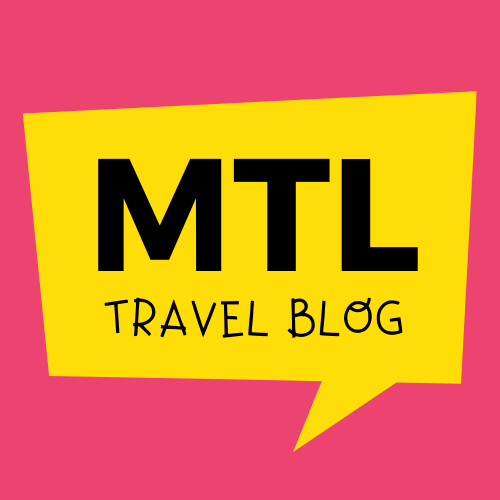
Visiter Montréal en 1 semaine
by Melissa Giroux
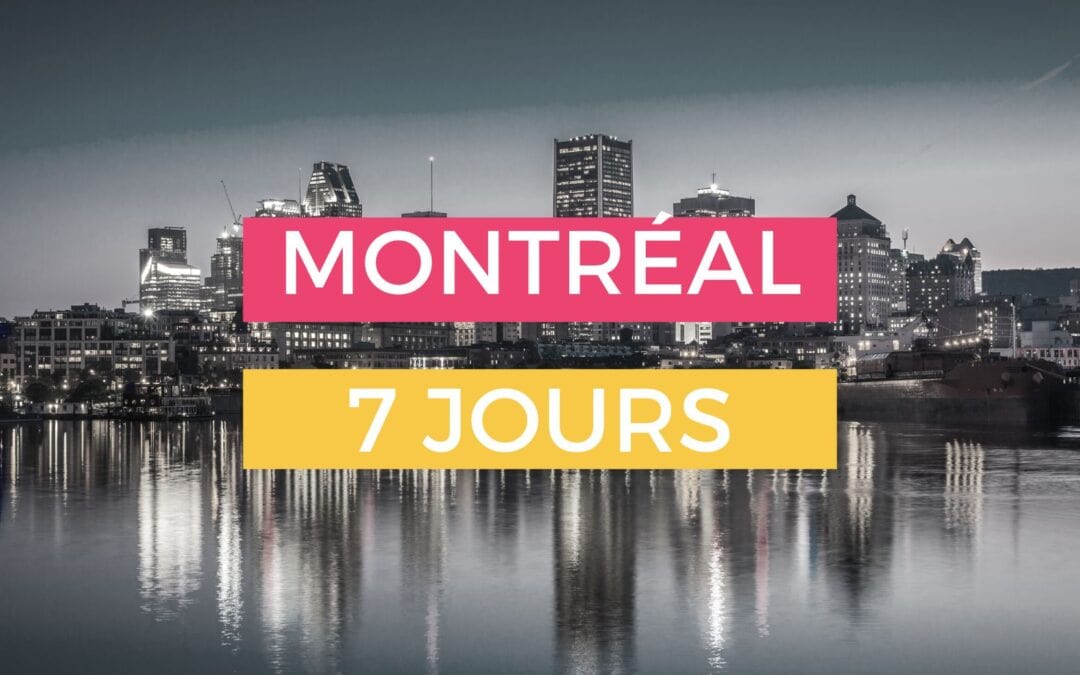
Vous prévoyez un voyage à Montréal, au Canada ? Si vous envisagez de rester à Montréal pendant une semaine, vous allez adorer notre itinéraire de 7 jours. Voyons comment vous pouvez visiter Montréal en 7 jours et, surtout, comment en profiter.
Jour 1 – Vieux Montréal
Pour commencer votre voyage à Montréal, direction le Vieux-Montréal, le quartier historique de la ville. L’une des meilleures façons d’explorer le quartier et d’apprendre tout sur les débuts de la ville est de faire une visite à pied de la vieille ville. Diverses visites à pied sont disponibles , toutes avec l’aide d’un guide compétent qui vous fera vivre une expérience unique et éducative.
Après une promenade dans la vieille ville, il est temps de déjeuner à la Taverne Gaspar . Située rue de la Commune, dans un entrepôt du XIXe siècle, la Taverne Gaspar propose une cuisine de pub d’inspiration française avec des options pour les régimes végétariens, végétaliens et sans gluten. Si vous voulez absolument goûter au célèbre plat québécois, la poutine, pendant votre séjour à Montréal, rendez-vous au Montreal Poutine, rue Saint-Paul.
Également situé dans le Vieux-Montréal, Montreal Poutine est spécialisé dans le célèbre plat, composé de fromage en grains et de sauce, et propose de nombreuses variantes pour satisfaire tout le monde. Outre la poutine, ce restaurant propose également une gamme de hamburgers classiques et de hot-dogs.
Pour votre activité de l’après-midi, il est temps de vous rendre au Musée d’archéologie et d’histoire Pointe-à-Callière pour en apprendre encore plus sur les origines et les fondations de Montréal. Non seulement le musée est une ressource fantastique pour apprendre l’histoire de Montréal, mais il est également construit sur le lieu même de la fondation de la ville, ce qui en fait un site historique très important.
Sinon, si la visite matinale du Vieux-Montréal vous a suffi, le spa Bota Bota est situé à proximité, au Vieux-Port, et propose une variété de forfaits ainsi que des vues magnifiques sur le quartier. Parfait pour les voyageurs solitaires, les couples et les petits groupes, le spa dispose d’une série d’installations, notamment des saunas, des hammams, des piscines chaudes et froides, des salles de relaxation et une variété de traitements apaisants.
Pour dîner dans le Vieux-Montréal, dirigez-vous vers la rue Saint-Paul, où vous trouverez Modavie . Modavie est un bar et bistro de jazz spécialisé dans la cuisine française et européenne et, pendant que vous y êtes, vous êtes susceptible d’entendre les sons d’un groupe local de Montréal. La spécialité du restaurant est l’agneau, mais des options végétariennes imaginatives sont disponibles.
Pour une soirée dans le Vieux-Montréal, rendez-vous à la Coldroom , rue Saint Vincent, pour découvrir un bar clandestin de style prohibition, parfaitement adapté à ce quartier historique. Caché derrière une porte noire, le Coldroom peut être facilement manqué par ceux qui ne le cherchent pas (suivez le canard !).
En récompense de vos talents de détective, le Coldroom propose d’excellents cocktails gastronomiques et une atmosphère qui rendra vos boissons légales un peu plus interdites.
Jour 2 – Centre-ville et Plateau Mont-Royal
Pour commencer votre deuxième journée à Montréal, nous nous rendons sur le Mont Royal , la célèbre montagne qui surplombe le centre-ville de Montréal. Si vous voyagez à Montréal l’hiver , le patinage sur glace sur le lac des Castors devrait être une activité en tête de votre liste. Situé au sommet de la montagne, le lac des Castors est la patinoire extérieure réfrigérée du mont Royal. L’accès est gratuit et la location de patins est disponible à partir de 10 $ pour 2 heures.
Si vous visitez le mont Royal avec des enfants, des activités telles que la descente en chambre à air sur la colline surplombant le lac des Castors, conviennent aux enfants de 4 ans et plus. Les laissez-passer quotidiens et l’équipement pour cette activité sont disponibles au comptoir de location d’équipement.
Si votre voyage à Mont-Royal a lieu pendant l’été, le lac des Castors est toujours une attraction de choix. Non seulement le parc environnant est l’endroit idéal pour un pique-nique ou une lecture matinale, mais des chaloupes peuvent également être louées pour être utilisées sur le lac au prix de 12 $ la demi-heure. Pour ceux qui préfèrent ne pas entrer dans l’eau, des voiliers télécommandés sont également disponibles sur le lac des Castors pour 10 $ la demi-heure, parfaits pour les enfants comme pour les adultes.
Pour le déjeuner sur la montagne, vous avez le choix entre plusieurs restaurants et cafés offrant des soupes, des sandwichs et des collations : Le Chalet Mont-Royal, le Pavillon du Lac-aux-Castors (adjacent au lac des Castors) et la Maison Smith. Vous pouvez aussi vous rendre au Plateau Mont-Royal pour un déjeuner ou un brunch au Restaurant L’Avenue.
Proposant des options végétariennes, végétaliennes et sans gluten dans un décor créatif, le restaurant L’Avenue est l’exemple parfait de la cuisine du quartier artistique du Plateau. Si la poutine est toujours présente dans votre esprit, prenez place à La Banquise ou à PoutineVille , qui comptent tous deux parmi les meilleurs restaurants pour déguster ce plat classique.
Après le déjeuner, dirigez-vous vers le centre-ville, rue Sherbrooke, pour visiter le Musée des beaux-arts de Montréal , le plus grand musée d’art du Canada en termes d’espace d’exposition. Outre les collections de Picasso, Rembrandt et Goyam, le musée présente souvent des expositions spéciales.
Des exemples d’expositions passées ont porté sur les Égyptiens, Napoléon, Pompéi et les verreries Chihuly.
Pour dîner au centre-ville de Montréal, rendez-vous sur le boulevard Robert-Bourassa et prenez place au restaurant Zibo . Proposant une cuisine canadienne d’inspiration californienne, Zibo répond aux régimes végétariens, végétaliens et sans gluten grâce à son vaste menu. Zibo propose également une impressionnante carte de bières, de vins et de cocktails pour accompagner votre repas.
Pour terminer votre deuxième journée à Montréal, faites un tour à la microbrasserie 3 Brasseurs sur la rue Saint-Catherine. En plus de la bière brassée sur place, 3 Brasseurs propose des vins et des cocktails, ainsi qu’une carte des mets qui associe les bières à certains plats et à leurs saveurs. Si vous visitez cet établissement du centre-ville de Montréal en été, vous pourrez vous asseoir à l’extérieur pour déguster une bière finement élaborée dans l’air estival.
Jour 3 – Mont Tremblant
Pour le troisième jour de votre voyage à Montréal, partez pour le Mont Tremblant, l’une des stations de ski les plus célèbres du Canada, située dans les Laurentides. Il existe plusieurs façons de se rendre à Tremblant depuis Montréal , la plus pratique étant probablement de conduire. Et ne vous inquiétez pas si vous ne visitez pas pendant l’hiver, car la station propose des activités toute l’année.
Il est toujours préférable de partir tôt le matin afin de pouvoir profiter d’une journée complète à Tremblant. Pour vous détendre après un long voyage, quelle que soit la saison, terminez votre matinée par une petite randonnée sur la montagne. Prenez la télécabine jusqu’au sommet de la montagne et suivez l’un des nombreux sentiers de randonnée que Tremblant a à offrir.
Au sommet de la montagne, arrêtez-vous pour déjeuner au Grand Manitou , une cafétéria offrant une vue spectaculaire sur les environs. Servant des plats chauds et froids, c’est l’endroit idéal pour reprendre des forces en vue de l’activité principale de la journée.
Après le déjeuner, si vous êtes de passage en hiver, il est enfin temps de vous essayer au ski. Le Mont Tremblant dispose d’une multitude de pistes, du niveau débutant au niveau expert, alors que vous soyez un skieur chevronné ou que vous en soyez à votre première expérience, Tremblant a tout ce qu’il vous faut. Si vous visitez la station en été, essayez de faire de l’escalade.
Aucune expérience de l’escalade n’étant nécessaire, vous pourrez gravir la falaise à plusieurs reprises avec l’aide d’un guide expérimenté.
Pour le dîner, rendez-vous dans le village piétonnier et prenez place au Choux Gras Brasserie Culinaire pour déguster une cuisine franco-canadienne. Avec des options végétariennes et sans gluten, l’atmosphère contemporaine et chaleureuse du Choux Gras Brasserie Culinaire, qui donne sur le village piétonnier, vous permettra de passer une agréable soirée.
Après le dîner, rendez-vous au Casino de Mont-Tremblant , un petit casino et un bar avec de la musique live et un patio extérieur. Que vous souhaitiez prendre un verre au bar ou tenter votre chance aux machines à sous (ou les deux !), c’est l’endroit idéal pour terminer votre journée à Tremblant.
Et si vous préférez garder le retour pour le lendemain matin, de nombreuses options d’hébergement et d’hôtels sont disponibles dans le village piétonnier.
Jour 4 – Quartier des Spectacles et Chinatown
Pour notre quatrième journée à Montréal, nous allons découvrir le Quartier des Spectacles et le quartier chinois. Pour votre activité matinale, rendez-vous dans le Quartier et dirigez-vous vers la rue Sainte-Catherine pour trouver le Musée d’art contemporain de Montréal , le premier musée du Canada entièrement consacré à l’art contemporain. À l’intérieur, vous trouverez des collections contemporaines de plus de 7 000 œuvres d’art mettant en vedette des artistes québécois, canadiens et internationaux.
Des expositions uniques sont organisées en permanence, présentant actuellement les œuvres d’artistes tels qu’Arthur Jafa, Ron Moppett et Kathleen Graham. L’entrée au musée est de 10 $ pour les adultes, 4 $ pour les adolescents et gratuite pour les enfants de moins de 12 ans.
Après une matinée d’exploration culturelle, faites une (très !) courte promenade jusqu’à Eggspectation Complexe Desjardins sur Sainte-Catherine Ouest pour un déjeuner ou un brunch. Comme son nom l’indique, Eggspectation se spécialise dans les œufs et les petits déjeuners, mais il y en a vraiment pour tous les goûts. Avec des variations imaginatives sur les classiques du petit-déjeuner et du brunch, ainsi que des plats sans petit-déjeuner, vous ne serez pas déçu.
Dans l’après-midi, rendez-vous au quartier chinois, un petit quartier du Quartier des Spectacles, pour une petite exploration. L’une des plus anciennes communautés asiatiques en Amérique du Nord, le quartier chinois de Montréal a commencé à émerger vers les années 1890 et a été reconnu comme une attraction touristique à la fin des années 1960.
Les principales attractions du quartier chinois sont ses nombreuses boutiques et ses vendeurs de nourriture (essayez le bubble tea !). Faites un arrêt dans l’une des nombreuses boutiques de souvenirs, ou aventurez-vous dans l’une des épiceries asiatiques pour trouver des produits authentiques. Et ne manquez pas de vous arrêter au coin de René-Lévesque et de Saint-Laurent, près de la porte nord, pour voir une magnifique murale réalisée par MU, l’un des nombreux exemples de la scène artistique de rue à Montréal.
Dans le quartier chinois, rendez-vous au Ruby Rouge pour déguster une authentique cuisine chinoise. Leur plat phare est le dim sum, qui circule en permanence pour que les clients puissent le choisir, ainsi qu’une variation de la cuisine cantonaise et szechuanaise. Et si vous cherchez une activité amusante pour la soirée dans le quartier chinois, ne cherchez pas plus loin que le CEO Karaoke, qui se trouve au sous-sol du Ruby Rouge.
Si le karaoké n’est pas votre truc, retournez dans la partie principale du Quartier et vous trouverez le Café-Bar du Théâtre Sainte-Catherine. Ce bar unique est également un théâtre indépendant, qui accueille des spectacles musicaux, des projections de films et des comédies tout au long de la semaine. Quelle meilleure façon de prendre un verre dans le célèbre quartier des divertissements de Montréal qu’avec un théâtre indépendant ?
Jour 5 – Le Village et le Quartier Latin
Avec l’université à proximité, le Quartier Latin de Montréal est connu pour être un quartier étudiant de la ville, animé par l’art, les cinémas et théâtres indépendants et une vie nocturne animée. En tant que tel, le Quartier Latin est fortement axé sur l’éducation et l’histoire, faisant de ce quartier l’endroit idéal pour ceux qui ont dépassé leurs années d’université mais qui aiment toujours apprendre. Le matin, allez dans le Quartier Latin et dirigez-vous vers la Galerie de l’UQAM , un musée d’art situé dans l’enceinte de l’Université du Québec à Montréal.
Comme la galerie est principalement axée sur l’enrichissement des étudiants, bon nombre des œuvres exposées sont réalisées par des étudiants en arts visuels, en histoire de l’art et en muséologie, ce qui fait de cette galerie une façon unique et contemporaine de découvrir l’art créé au cœur de Montréal.
Pour déjeuner dans le Quartier Latin, rendez-vous au Resto Végo , un buffet végétarien et végétalien situé dans la rue Saint-Denis. En plus d’un large choix de buffets pour tous les goûts, Testo Vego dispose également d’un comptoir gastronomique, avec des sandwichs, des pizzas et des salades préparés pour ceux qui recherchent quelque chose d’un peu différent du buffet.
Si vous avez envie de sucré, rendez-vous chez Juliette et Chocolat , un café-dessert français également situé rue Saint-Denis. Proposant une pléthore de desserts et de chocolats chauds, Juliette et Chocolat propose également des plats salés et des brunchs pour tous les goûts.
Pour vraiment comprendre la ville cosmopolite de Montréal, les visiteurs doivent faire un tour au Village, où nous nous rendons cet après-midi. Situé près du Quartier des Spectacles, le Village gai de Montréal est le plus grand d’Amérique du Nord. Il fait l’objet d’investissements et de promotions constants de la part des trois niveaux de gouvernement en tant que cœur de la communauté LGBT de Montréal.
Il est souvent recommandé de considérer le village gay comme un musée en plein air, en raison du grand nombre d’installations artistiques publiques, dont une galerie en plein air (Galerie blanche) et la peinture murale de Cécile Gariepy. Malheureusement, l’installation iconique à grande échelle comprenant 180 000 boules arc-en-ciel suspendues a récemment été démontée, mais elle sera bientôt remplacée par une autre installation fantastique. Gardez l’œil ouvert !
Pour le dîner, rendez-vous au Grenade , sur Ontario Street East, pour déguster des plats asiatiques contemporains dans un superbe intérieur d’inspiration asiatique. Grenade dispose également d’un bar à cocktails, dont la carte regorge de boissons importées et d’inspiration asiatique. Si vous visitez l’établissement en été, la terrasse arrière du restaurant est ouverte pour vous permettre de profiter de l’air doux.
Pour terminer votre soirée dans le village gay de Montréal, une visite au Cabaret Mado s’impose. Témoin du dynamisme de la scène drag queen de Montréal, Mado est un endroit idéal pour assister à un spectacle glamour (et peut-être même voir des visages célèbres) tout en buvant un bon verre. Il y a toujours un spectacle à l’affiche, entrecoupé d’événements spéciaux, alors consultez le site Web pour connaître les prochains spectacles !
Jour 6 – Ville de Québec
Pour votre sixième jour au Canada, c’est le moment de faire une autre excursion d’une journée ! L’une des excursions d’une journée les plus populaires au départ de Montréal est la ville de Québec, la capitale de la province du Québec.
À environ 3 heures de route de Montréal, il est recommandé de louer une voiture pour cette excursion, bien qu’un train direct soit également disponible avec un temps de trajet similaire.
Commencez votre visite de la ville de Québec par une promenade dans le Vieux-Québec, un site du patrimoine mondial et l’emplacement du premier établissement permanent de la Nouvelle-France.
Assurez-vous que la Place Royale, les murs de la ville et la Basilique-Cathédrale Notre-Dame de Québec soient des arrêts dans votre exploration de cette ville historique. Si vous disposez de suffisamment de temps, assurez-vous de participer à l’une des nombreuses visites guidées de la ville et profitez des guides hautement qualifiés et compétents de Québec.
Après avoir flâné dans le Vieux-Québec, dirigez-vous vers le Petit-Champlain (et ne manquez pas de vous émerveiller de la beauté de cette rue piétonne !), où vous pourrez manger un morceau au Lapin Saute. Avec une terrasse ouverte en été et un feu pour vous réchauffer en hiver, c’est un endroit idéal pour s’installer pour le déjeuner, quelle que soit la période de votre visite.
Après le déjeuner, rendez-vous au Musée de la civilisation , situé entre le Vieux-Québec et le Vieux-Port, où vous pourrez tout apprendre sur les débuts du Québec et les Premières nations.
Le musée présente une foule de spécimens naturels, d’artefacts historiques et de documents sur le Vieux-Québec. Outre les collections permanentes, le musée organise des expositions temporaires telles que «Pompiers de Québec : 250 ans de courage», qui se tiendra jusqu’au 29 mars 2020. De nombreuses expositions et collections sont interactives, ce qui les rend d’autant plus intéressantes pour les adultes et les enfants. Les billets d’entrée pour adultes commencent à 11 $, et les enfants de moins de 11 ans entrent gratuitement.
Pour le dîner, faites une courte promenade jusqu’à la rue Saint-Paul, où vous trouverez Chez Rioux & Pettigrew. Servant une cuisine franco-canadienne, avec des options végétariennes, végétaliennes et sans gluten, Rioux & Pettigrew a pour objectif de satisfaire les clients avec son style gastronomique et son cadre industriel confortable.
Si vous souhaitez vivre une expérience gastronomique unique, n’oubliez pas de réserver le restaurant Taniere avant votre voyage.
Considéré comme le meilleur restaurant de la ville de Québec, Taniere propose une expérience gastronomique contemporaine dans une série de voûtes souterraines datant du XVIIe siècle. La nourriture, d’origine locale, est préparée de manière experte sur plusieurs plats, entre 15 et 20, avec des options d’association de boissons. Le prix en vaut la peine, c’est un lieu incontournable au Québec pour les gourmands.
Si vous avez encore de l’énergie le soir venu, rendez-vous au Sacrilège , rue Saint-Jean, un bar convivial qui propose des expositions d’art et de la musique en direct. C’est le bar préféré des habitants de la ville, et c’est là qu’il faut aller si vous voulez avoir un aperçu de la charmante vie nocturne de Québec.
Vous pouvez décider de passer la nuit dans la ville de Québec ou de retourner à Montréal.
Jour 7 – Rosemont
Le matin, nous nous dirigeons vers Rosemont pour une visite du Jardin Botanique de Montréal, qui fait partie du complexe scientifique Espace vital Montréal. Pour profiter au maximum de votre expérience au Jardin Botanique, des visites guidées des serres d’exposition sont offertes gratuitement avec votre billet d’entrée.
Outre une impressionnante collection d’espèces végétales et des serres d’exposition, le Jardin abrite également divers jardins culturels thématiques.
Le jardin japonais présente un arrangement spectaculaire de bonsaïs, âgés de 20 à 100 ans, dans un environnement serein spécialement aménagé. Le jardin chinois a été créé avec des matériaux expédiés de Shanghai et construit par 50 artisans chinois. Le résultat est une exposition vivante de l’art chinois de l’aménagement paysager, qui crée un sentiment d’harmonie en utilisant les quatre éléments principaux : les plantes, l’eau, les pierres et l’architecture.
Enfin, le jardin des Premières Nations est conçu pour évoquer les liens étroits entre les autochtones et le monde naturel, afin de promouvoir le partage des connaissances et de la culture entre les Québécois autochtones et non autochtones.
Pour le déjeuner, rendez-vous à Little Italy, un petit quartier au nord du Mile End qui a été fortement influencé par une vague d’immigration italienne au début du XXe siècle. Corneli est un restaurant italien situé sur le boulevard Saint-Laurent, qui sert de la viande, du poisson, des pâtes et de la pizza authentiquement cuits dans leur four à bois.
Pendant que vous êtes dans la Petite Italie, dirigez-vous vers le marché Jean-Talon pour l’après-midi. Jean-Talon est le célèbre marché alimentaire de la Petite Italie et l’un des plus anciens marchés publics de Montréal, datant de 1933. Le marché offre une expérience unique de magasinage de produits, même pour ceux qui ne cherchent pas à acheter.
À proximité se trouvent plusieurs cafés, comme le Café Saint-Henri, qui sert un café fantastique et des collations sucrées. Par ailleurs, Rosemont abrite également le village olympique de Montréal, qui est une visite parfaite pour les amateurs de sport. Si une simple promenade dans le village peut constituer une excursion parfaite, le Parc olympique propose diverses visites et événements.
Ouvert presque toute l’année, l’Observatoire de la Tour de Montréal est accessible aux visiteurs, offrant une vue panoramique de la ville depuis la plus haute tour inclinée du monde. Des visites guidées de la Tour sont également disponibles, ainsi que l’exposition Depuis 1976 qui présente l’histoire du parc. Parallèlement, le stade est également ouvert, avec des visites guidées régulières et un programme d’événements saisonniers.
Pour le dîner, rendez-vous rue Beaubien Est pour une place au Il Bazzali, un restaurant italien pittoresque servant des cuisines européenne et méditerranéenne. Si vous avez de la chance, vous aurez peut-être même l’occasion de voir le célèbre «chef chanteur». Le restaurant est un BYOB mais, heureusement, il y a beaucoup de vins à choisir au Marché des Saveurs du Québec au marché Jean-Talon.
Pour terminer votre séjour à Montréal, rendez-vous à La Succursale, rue Masson. La Succursale est spécialisée dans les bières artisanales et les cidres, dans un intérieur contemporain et convivial. Si vous visitez l’établissement pendant l’été, La Succursale dispose également d’une terrasse extérieure, parfaite pour siroter votre boisson pendant les soirées chaudes.
Vous vous demandez où loger pendant votre voyage à Montréal ?
Lisez notre article pour vous aider à choisir le bon quartier et le bon hôtel à Montréal .
Voir plus d’itinéraires:
- Itinéraire 4 jours à Montréal
- Itinéraire 5 jours à Montréal
- Itinéraire 10 jours à Montréal
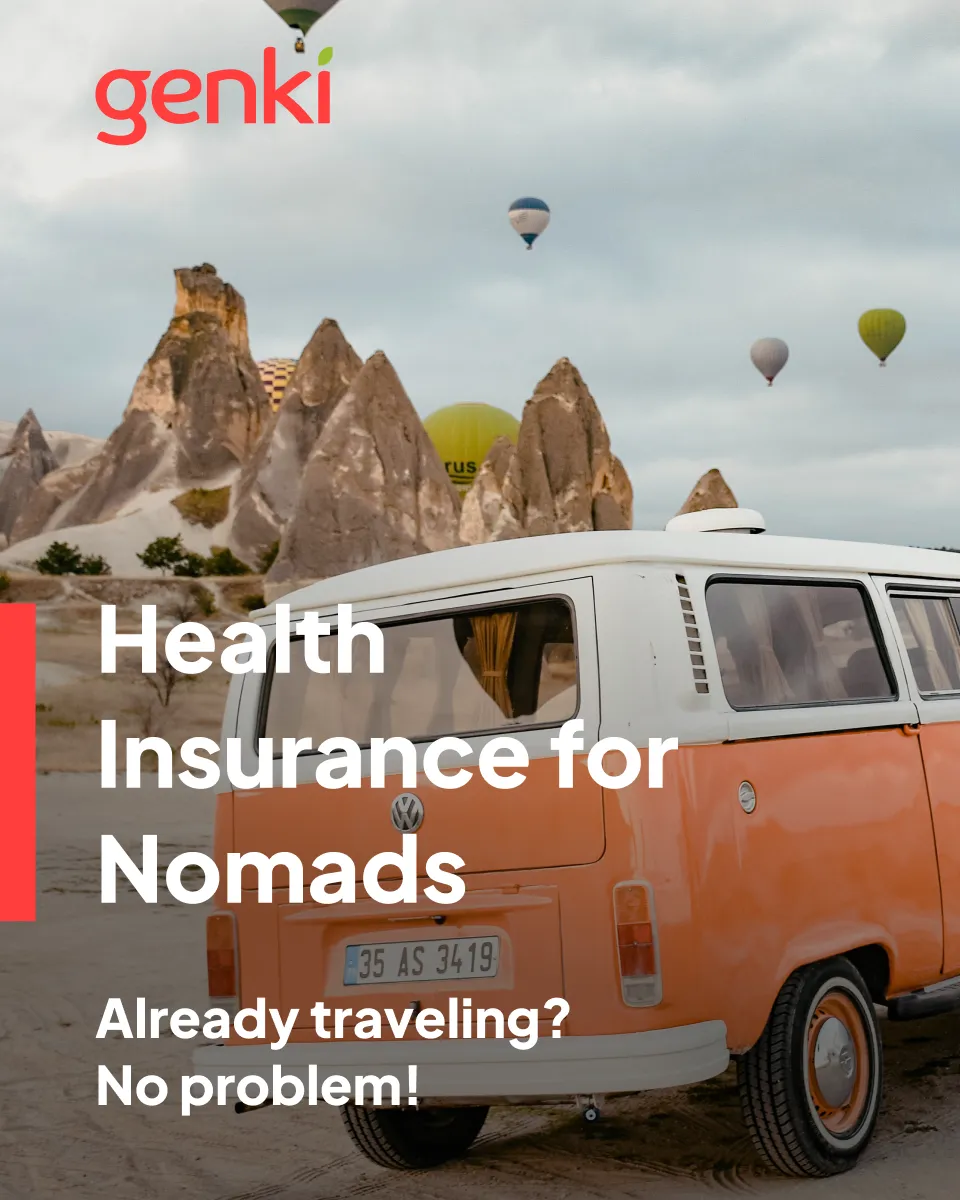

How To Easily Plan a Trip to Montréal for the First Time In 2024

Updated March 2024
Looking for inspiration to plan a trip to Montréal in 2024?
I’ve been to this beautiful city more than a couple of times in the last few years, each time enjoying the city’s incredible sights and atmosphere a bit more. I’ve even surprised some of the locals with how much I’ve returned in just a few years.
It’s just that great of a place to visit at least once (or more 😉).
In this post, I want to share all the helpful tips, and ideas to help guide your trip planning process to Montréal, and overall, share my experience in hopes that it helps you get ideas for what you’d like to do, from the perspective of someone who has been there a handful of times.
Without further ado, let’s go to Montréal!
Like it? Pin it!
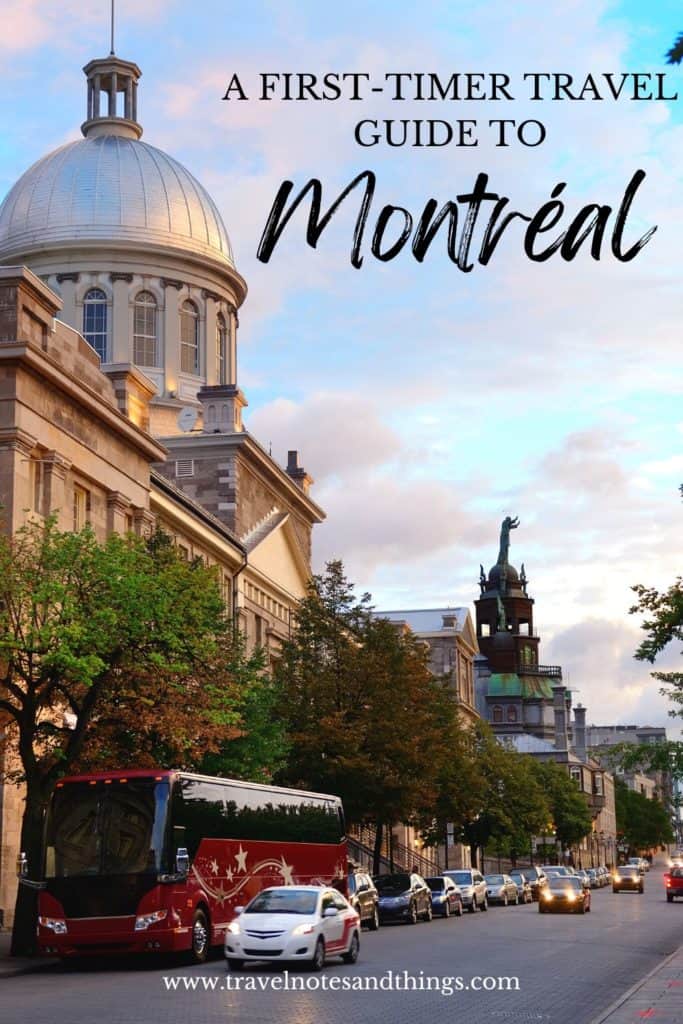
How to easily plan a trip to Montréal for the first time in 202 4
What is the best month to visit montréal.

I’ve personally always seemed to find myself in Montréal around May when the spring is in full swing, and I can share that this season is a great time to plan a trip to Montréal.
The weather is warm, with a few hot days, and a light breeze coming in from the St. Lawrence River.
There are tourists starting to visit the city, but it’s not the summer crowd yet so you can still move around the city without large crowds, or get an amazing view of the city when visiting the top of Mount Royal Park.
However, if you want to catch incredible autumn vibes, then definitely consider visiting during the fall months of October-November , when the orange-colored trees line the wonderfully picturesque sidewalks of Old and New Montéal.
Many people also enjoy visiting Montréal during the end of summer, late August-September , which is the season I decided to visit the city on my most recent trip.
Personally, I don’t think I’d plan a trip a trip to Montréal in August again, just because it was still very hot and humid, and very crowded.
I think August is still a busy summer travel month for many, and Montréal was definitely packed with us, travelers.
If you’re ok with large crowds and hot weather, then it’s ideal for you. If not, I’d wait till fall.
How many days do you need for Montréal?

I’ve seen a few people ask around if 3 days in Montréal is enough? or if 2 days is enough for Montréal?
The truth is, and you’ll see in a bit, between Old Montreal, the boroughs around the city, and the great day trip activities to participate in, you could easily spend a week in Montréal.
💡 Pro Tip: What kind of traveler are you?
Is nature your thing? History? Cultural events? Art galleries?
Identify that for yourself , and then decide from a few of the suggestions I share in this post (more to come) which ones you’d like to see and start building your Montréal itinerary that way.
That will tell you how many days you need to spend in the city to see what you actually want to see.
I spent up to 3 days in Montréal on my first trip there back in May of 2018, and I felt that it was a great first few days to get a good introduction to the city, visit its main sites, and do a few other things.
I find myself returning to this city, however, wanting to discover more and observe the culture a bit deeper each time.
On my second visit to Montréal, I returned the following year in May 2019 and spent around 3 more days exploring more, and doing more activities to build upon what I had learned before.
I went on the Montréal ghost tour , the bike tour of the city from Old Montréal , to some neighborhoods and other parts of the city, and the Olympic Stadium tour.
All of which I recommend 100%! All were so fun, professional, and welcoming.
Do you need a car in Montréal?

For being a city located in North America and being Canada’s 2nd largest city, surprisingly, you don’t need a car to get around – especially as a visitor.
Montréal falls in the top 5 Canadian cities with the best public transportation , offering a complete metro system with 68 stations dotting the city and 4 metro lines taking locals daily to all the places within the city.
Sometimes, the metro may even be free during the summer when major events are happening in the city, so that’s also something cool to think about when planning your trip to Montréal.
There is also the bus system, which makes traveling around the city an easy feat. Just make sure to buy an OPUS Card and top it off with funds for the city’s metro and bus systems.
Yes, there are sites you’ll want to see, like the Olympic Stadium Park and the Botanic Garden of Montréal, that are a little bit away. Although you can get to them via public transportation, you may catch an Uber to get there faster, depending on your schedule.
Also, when it comes to visiting some of the day trip options (more on that later), your best bet is to go with a tour if there isn’t a bus or train that can get you there and/or if the bus/train is more expensive than an organized tour, which seems to happen.
Travel within Canada is not all that cheap…
How walkable is Montréal?
Montréal is very walkable, especially if you want to center all your activities around Old Montréal, but honestly, getting around the city on foot is part of the fun of enjoying such a multi-cultural city, filled to the brim with public art, events, shops, and tempting cafe’s – it’s the best way to get around in my opinion.
What part of Montréal is best to stay in?

Montréal has a number of cool boroughs to stay in, or at least consider, depending on your travel style and what you’d like to experience.
Old Montréal (Vieux-Montréal)
If you like all things history, old and charming buildings, cobblestone streets, cute little alleyways, and an overall European-city vibe, then definitely check out staying in Old Montréal, also known as Vieux-Montréal.
This location is great if you want to explore the historical sights and experience the historic French charm of Montréal, including –
- Place d’Armes
- Place Jacques Cartier
- Montréal City Hall
- Place Vauquelin
- The big Montréal Ferris Wheel
- Montréal Museum of Archaeology and History
- Château Ramezay – historical museum inside former politician’s home
- The Bank of Montreal Museum
- Place de la Grande-Paix-de-Montréal
Check out the dozens of cafes, restaurants, rooftop bars, and restaurants located throughout Old Montréal, as well as convenience stores (or Dépanneurs as they call them) like 7-Eleven and local stores.
✅ FIND YOUR HOTEL IN OLD MONTREAL
Downtown montréal (centre-ville).
If you want to stay in the middle of city life in Montréal, check out staying in Montréal city center.
Be surrounded by all the modern amenities that any other North American city has: direct transportation like Uber, bus, and metro stops.
Downtown Montréal also offers an incredible list of shopping malls, restaurants, cafes, and shops offering slightly more varied prices in comparison to maybe what you’d find in Old Montréal, for obvious reasons.
Still, nonetheless, you also get a “taste” of day-to-day Montréal hustle and bustle.
This location is perfect if you want to visit all the fascinating museums in the city, such as
- The Montréal Museum of Modern Arts
- Place des Arts
- McCord Museum of Social and Cultural History
- The Barbie Expo
- La Guilde, a First Nation art museum by the Inuit
- Montréal Police Museum
- Take a stroll throughout Concordia University, McGill University, or the University of Québec’s campus in Montréal.
I recommend checking out Holiday Inn Hotel & Suites – Montreal Centre-ville , which is centrally located downtown and offers incredible hospitality in a central location for various activities.
✅ FIND YOUR HOTEL IN DOWNTOWN MONTREAL
Honorable mention: If you’re looking to stay somewhere between Old Montréal and downtown Montréal, then I recommend checking out Embassy Suites by Hilton – Montréal for its amazing location. The Notre Dame and Place d’Armes are steps away and a few steps from modern city life.
Le Plateau (Plateau Mont-Royal)
Overflowing with its artsy vibe, hipster atmosphere, unique and cool cafes, and restaurants, Le Plateau is a neighborhood located 10 minutes or so from Old Town Montréal.
Le Plateau is close to Mount Royal Park, a stunning park with incredible nature and city views (make sure to climb up to the Kondiaronk Belvedere to get to the observatory terrace on top of the “mountain” to get incredible views of Montréal).
Other fun things to do in Le Plateau are to book a street art tour and learn more about the stories behind the beautiful street art adorning the city, check out Schwartz Deli for delectable and world-famous Montréal style bagels, get a bite of authentic poutine at La Banquise , or simply walking around the neighborhood to explore it for yourself. Personally, it’s one of my favorite things to do while there.
I recommend staying at Auberge du Carre St-Louis , situated in the heart of Le Plateau, right in front of Square St. Louis. Enjoy a variety of restaurants within blocks of the Inn, as well as shops and theaters.
✅ FIND YOUR HOTEL IN LE PLATEAU NEIGHBORHOOD
Griffintown.
Located southeast of downtown Montréal is Griffintown – a neighborhood mostly founded by Irish immigrants who helped build the city’s strong foundations in the 1800s.
Today, the area has a great art scene and an established hipster culture to dive into.
Within Griffintown, enjoy visiting places like the Arsenal Art Contemporain Montréal, an art gallery that houses various exhibits from local artists.
Also in Griffintown are a number of bakeries, spas , and other fun activities to take part in, like a challenging and thrilling escape room.
If a trendy neighborhood is a place you want to stay in, then definitely check out Griffintown, conveniently close to Old Montréal and on the Old Port.
I recommend checking out Hôtel Alt Montréal , offering modern and sleek rooms with great city and port views while offering other great amenities inside the room and the hotel.
✅ FIND YOUR HOTEL IN GRIFFINTOWN
Get to know the everyday authentic Montréal inside Mile End.
A neighborhood in Montréal known for its authentic roots, incredible diversity in people and restaurants, and street art, it’s a great place to stay to discover the neighborhood, as well as the magical Old Town and downtown.
Though technically, it’s *kind of* a part of the Le Plateau neighborhood, Mile End is still a great place to check out on its own.
Check out some of the best eateries found in Mile End, such as emblematic Cafe Olimpico, and bagels of all different flavors (which you must try because it’s Montréal) at St-Viateur Bagel.
Consider booking a food tour of Montréal , where you can get the best of the food scene in Montréal that you definitely don’t want to miss.
I recommend staying in what feels like your own apartment in Mile End through Parc Avenue Lofts . These condos are made to give travelers a great stay while enjoying the artsy vibe of Mile End.
Offering a perfect little nest during your stay in Mile End in Montréal, it is a block away from the famed St-Viateur Bagel , one of the bagel shops that the late and missed Anthony Bourdain mentioned on one of his trips.
✅ FIND YOUR HOTEL IN MILE END
The village.
The Village is the name for the Gay neighborhood in Montréal, situated north of Montréal, offering a vibrant and fun neighborhood to check out and explore.
Wander through the streets to check out the vintage shops, and if you’re visiting in early August, stick around for Fierté Montreal (Pride). By day or night, there is always fun to be had, from drag shows inside Cabaret Mado to day drinking on the terraces of The Village.
If you want to stay in this neighborhood, I recommend you check out Kutuma Hotel and Suites , which offers a great location between The Village, Le Plateau, and Mile End – some of the most fun neighborhoods in Montréal.
This hotel offers a free continental breakfast served daily and is close to St. Catherine Street , known for awesome shopping in the neighborhood.
✅ FIND YOUR HOTEL IN THE VILLAGE
Things to do and see in montréal.

Old Montréal
Explore Old Montréal and enjoy the cobblestone streets, taking you back to the 17th century, when the city was founded, brimming with French influence, culture, language, and customs.
Visit the Old Port and stop inside the Délices Érable & Cie, Montréal’s famous maple store, selling various maple-flavored products, from candy, coffee, bread, jams, and more.
A must-visit stop in Old Montréal is the Bonsecours Market , known as a heritage building, housing an indoor market that houses various shops inside, galleries, cafes, and more. Many of the items sold here are uniquely Québec-made.
Notre-Dame Basilica
Situated within Old Montréal, in front of beautiful Place d’Armes square , check out the emblemati c Notre Dame Basilica , which welcomes approximately 1 million people yearly!
Wander inside and check out the extremely stunning architecture and decor leading up to the beautifully lit altar.
Check out a tour of the Basilica, or walk in and see it yourself. Check out the events on the Basilica’s website for upcoming events, from religious to innovative events involving technology, light, and fun.
Address : 110 Notre-Dame St W, Montreal, Quebec H2Y 1T1, Canada
The Montreal Museum of Fine Arts
Wander through the exhibits inside the Montréal Museum of Fine Arts, showcasing the best of modern and contemporary art from local artists and international talent.
Check out collections of art only found in this museum, such as Quebéc and Canadian Art, Decorative Arts and Design, Graphics Arts, and the sculpture garden.
The museum is located on the historic Golden Square Mile.
Address : 1380 Sherbrooke St W, Montreal, Quebec H3G 1J5, Canada
Saint Joseph’s Oratory of Mount Royal
The Saint Joseph’s Oratory of Mount Royal is a basilica and shrine located in the Côte-des-Neiges neighborhood, 34 minutes southeast of Old Montréal.
The cool and interesting thing about this place is the multiple (99) steps you have to take to get to the basilica doors.
If you don’t want to go up the steps, you can also take the escalator up, which is so interesting and different to see in a basilica – but it’s there!
Address : 3800 Queen Mary Rd, Montreal, Quebec H3V 1H6, Canada
Montreal Museum of Archaeology and History
Reserve your tickets online for the Montréal Museum of Archaeology and History, showcasing a fascinating look at Montréal’s history, from the First Nations people to the influence of the French and today’s society in the city.
Find relics found via excavations, construction sites, and more throughout the years, exhibited to learn about this part of Canada and its history.
Address : 350 Place Royale, Montreal, Quebec H2Y 3Y5, Canada
Marché Atwater
If you’re a foodie, you must stop by Marché Atwater , an indoor market housed inside a beautiful Art-Deco building, giving a glimpse into day-to-day life in Montréal.
Check out the multiple stalls and sellers showcasing fresh meats, dairy, produce, and more. Open all year round; be sure to step in during different seasons when you’re in town to see what’s new.
Address : 138 Atwater Ave, Montreal, Quebec H4C 2H6, Canada
Marché Jean-Talon
The Marché Jean-Talon is one of North America’s largest open-air markets and is a great place to gain insight into everyday, local Montréal life at the market.
Look through the different products, what people are buying, and what essentially makes up the diet for a local.
Additionally, gain access to the variety of ethnic delicacies that are now popular throughout the city as a result of waves of immigration to the city.
Let your senses absorb the different produce, dairy, meats, and snacks commonly sold there, and grab some for yourself on the way home.
Address : 7070 Henri Julien Ave, Montreal, Quebec H2S 3S3, Canada
Underground City
Visit the Underground City, situated right under the streets of Montréal, created to offer comfort and warmth during the cold months.
Built in 1966, this underground city complex houses a dozen shops, restaurants, hotels, train station entrances, and more.
It’s such a cool place to explore and see for yourself.
The whole entire thing is around 20.5 miles – yes, very expansive!
Address : 747 Rue du Square-Victoria #247, Montreal, Quebec H2Y, Canada
Parc du Mont-Royal
This park is situated on the hill of Mont-Royal.
It is commonly known as just “The Mountain,” offering great hiking opportunities and a staircase to climb and reach the top and gaze onto the magnificent views of Montréal on the Kondiaronk Belvedere (platform).
Don’t forget to step inside the Chalet, offering clean bathrooms, souvenir shops, and a nice big rest space to take in the views, sitting down in one of the leaning chairs.
Address : 2000 Chemin Remembrance Montréal, QC H3H 1A2, Canada
Montréal Biosphere
Wander through the acrylic, dome-like building located in Old Montréal, originally built for the 1967 World’s Fair and today housing an environmental museum open to the public.
You’ll see it if you go on the Montréal Ferris Wheel .
Take note of the beautiful display of lights occasionally happening inside the biosphere, adding a layer of beauty to the building.
Address : 160 Chem. du Tour de l’isle, Montréal, QC H3C 4G8, Canada
La Château Dufrense
Visit the historic museum housed inside the gorgeous Beaux-Arts facade building, which used to belong to two members of the wealthy class of Montreal at the beginning of the 20th century.
Step inside and learn through the various exhibits and the different uses of the home throughout time, from being an all-boys school to housing art museums. Now, you can also tour the grounds of the home and see all the furniture decorating the space very much of the time.
It’s really pretty to see those who love learning about history and being surrounded by classic beauty. You won’t want to miss this on your first visit to Montréal.
Address : 2929 Av. Jeanne-d’Arc, Montréal, QC H1W 3W2, Canada
Parc Jean-Drapeau
Visit the two islands that make up the Parc Jean-Drapeau, Saint Helen’s Island and the artificial Notre Dame Island, which are only a few minutes away from Old Montréal and accessible via the subway .
Inside Parc Jean-Drapeau, enjoy various cultural events like Electronic music festivals, food festivals, art expos, and extreme sports competitions.
For those looking for a bit of relaxation, check out the great walking paths, water park for children, the Jean-Doré beach, gardens, and green spaces for the perfect picnic.
It’s a local side of Montréal that you don’t want to miss.
Address : 1 Circuit Gilles Villeneuve, Montréal, QC H3C 1A9, Canada
Montréal Botanic Garden
If you love flowers and all things gardening, you must visit the botanic garden, brimming with a wide array of flowers, from fragrant roses, bright sunflowers, plants used for cooking, and even medicinal purposes, as well as other local plants and flowers.
Address : 4101 Sherbrooke St E, Montreal, Quebec H1X 2B2, Canada
Olympic Stadium Park
The site where the 1976 Summer Olympics took place was in the city of Montréal, and today, the stadium and the sports complex surrounding the stadium are open for visitors to check out.
They used to offer tours, and you could go in with a guide, but unfortunately, they don’t offer them anymore. However, you can still go inside and explore yourself with an audioguide to learn about the important history.
You can even go up to the observation tower, 165 meters above and at a 45-degree angle, to get an all-encompassing view of the sports complex from above, proving to be a cool sight to check out.
While inside, check out the Olympic Stadium, equipped to hold up to 56,000 people, and the Sports Center with Olympic-size pools that the Montréalers use,
There are also a variety of cultural events that take place here, so it’s a good spot to keep in mind, especially if you’re planning on attending an outdoor concert that may take place here in the Esplanade part of the sports complex.
Address : 4545 Pierre-de Coubertin Ave, Montreal, Quebec H1V 3N7, Canada
Montréal’s boroughs to check out
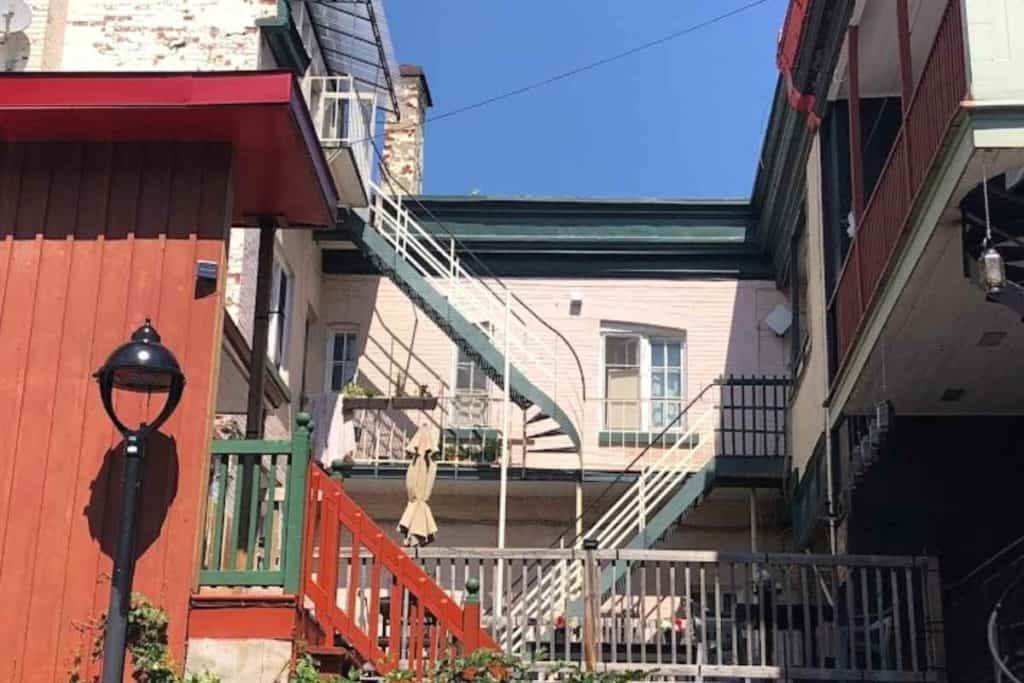
La Petite-Patrie
La Petite-Patrie is the neighborhood where you’ll find the Marché Jean-Talon in the heart of what is known as Little Italy.
Indulge in the local food scene, take in the sight of life lived outdoors in the streets, people playing in the parks of all ages, and locally owned cafe shops and restaurants.
Also, here are a few of the museums and places of interest I mentioned above, like the Olympic Stadium Park and the Montréal Botanical Gardens.
Historic Jewish Quarter
The Mecca for the best bagel in Montréal is within the streets of the Historic Jewish Quarter.
From the first wave of Jewish immigration from various different countries in 1760 until today, the Jewish community has influenced the food scene and culture throughout Montréal in an enriching way.
Check out the bakeries, deli, and, of course, bagel shops, which I will recommend below which ones to check out specifically, so stay tuned!
Côte-des-Neiges
This is the neighborhood where you’ll find the St. Joseph Oratory, a sight I recommended to visit earlier on this list, but other than that; it is a huge neighborhood that offers diversity, community, and beautiful architecture representative of the different waves of immigration, as well as affordable housing for both students and recently, arrived immigrants.
Something I heard from our biking tour guide was the efforts that the local city government strived for when it came to supporting and guiding newly moved immigrant families by placing them in centric neighborhoods where they had access to libraries, employment, schools, and hospitals, all within a few blocks walking.
The neighborhood also has a diverse mix of restaurants representing various world cuisines, awesome dessert shops, and cafes.
Also, the ambiance is great.
Mile End is one of the more popular neighborhoods to check out in the city, with its proximity to Mont Royal and Mont Royal Park and its endless list of things to do, places to eat, and so much more.
Shop the little boutiques and bookstores, check out the lively bar scene and the unique restaurants, and take in the fun vibe that never seems to go to sleep in this neighborhood.
It’s also a good distance away from Old Montréal.
St. Catherine Street
It’s not really a neighborhood, but it’s definitely a great street to be aware of.
This is the street where most shopping occurs, mainly bigger brands, as well as tons of restaurants, local and chain.
It’s just a good place to know overall that I thought I should mention.
Also, it is a good reference point when planning distance from places.
Day trips to take from Montréal
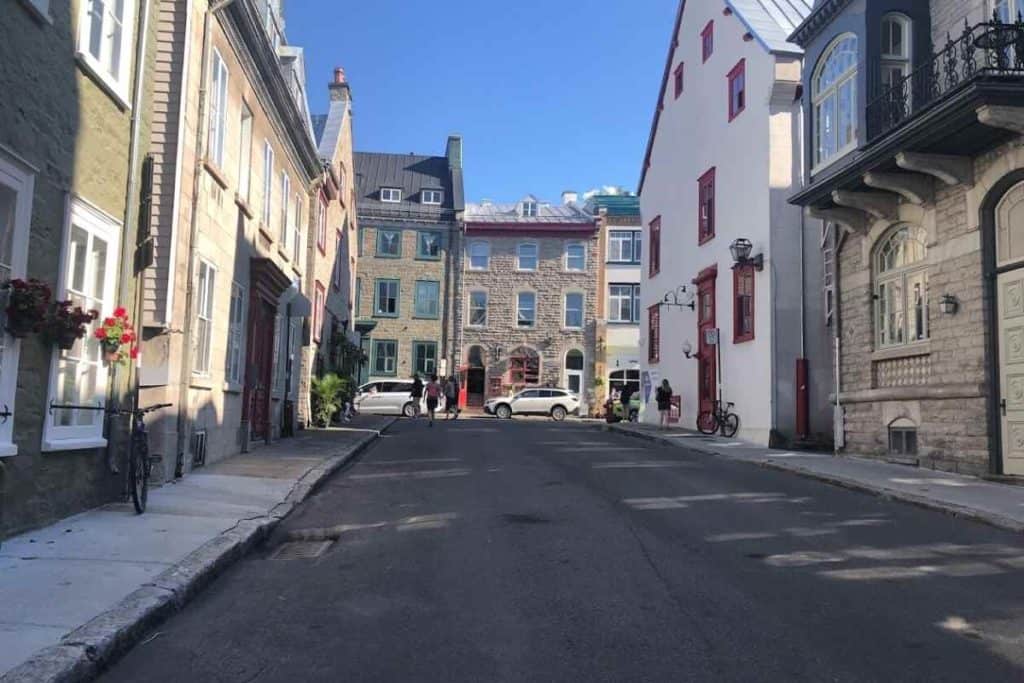
Mont-Tremblant
Situated in Tremblant Mountain, about an hour north of Montréal, Mont-Tremblant is a great day trip option, offering ski opportunities but also taking the panoramic gondola, reaching great heights and offering spanning views of The Laurentians, reaching a panoramic terrace with even greater views.
It’s perfect for bird-watching, hiking, and other games like mini golf, enjoying the beach and the beautiful nature.
✅ DAY TRIP TO MONT-TREMBLANT FROM MONTREAL
The capital of Canada is only 2 hours away west of Montréal and brimming with cultural activities that can only be found within a capital city.
Check out Parliament Hill, the Parliament Hill of Canada, the Rideau Canal, a UNESCO World Heritage Site, a high tea experience at the stunning Fairmont Hotel, and brimming with historical museums like the Bytown Museum (Bytown is the former name of Ottawa), and the Canadian Museum of History.
✅ DAY TRIP TO OTTAWA FROM MONTREAL
Québec city.
The most French-speaking town in Canada, Québec City, is a destination not to miss, known for its picture-perfect Old Québec City, dating to 1608.
Stroll through the famed Petite Champlain Street, the oldest shopping street in Canada, and contemplate the beauty of the towering Château Frontenac, stunning European architecture, and beautiful cobblestone streets.
Enjoy the Furniculare ride, housed inside the former home of Louis Joliet (the man whose name was given to the city of Joliet in Illinois after paddling down the St. Lawrence River, all the way to Illinois to the Des Plaines River).
If you have time, take a quick Uber ride to Montmorency Falls, a cascading waterfall taller than Niagra Falls.
I’ve been to Québec City twice, so I recommend taking the train from Montréal to Québec City using the Canadian train system or taking a day tour.
I’ve done both, and I would say if you want to do a day tour, go with a tour group that will take care of schedules and transportation better, especially if it’s your first time.
Otherwise, the train is a great option but it is better to take it if you stay longer than a day.
✅ DAY TRIP TO QUEBEC CITY FROM MONTREAL
>> read more: follow me around québec city, the laurentians.
The Laurentians is a stunning natural site to visit, overflowing with abundant nature, the Laurentian mountains, beautiful parks to hike in, the beach, golfing, and much more.
Depending on the season you visit, there is always something to do, from canoeing, skiing, strolling the beautiful gardens, or participating in a local concert.
The town in and of itself is really quaint and beautiful and definitely worth a day trip.
✅ DAY TRIP TO THE LAURENTIANS FROM MONTREAL
Au diable vert canopy cycle.
Ok, this is for the adrenaline junkies out there visiting Montréal between May-November.
Consider visiting the Au Diable Vert outdoor result, known most for its suspended bicycle ride, which happens to be the tallest in the world.
Gently peddling your way through the treetops of some of Canada’s best scenery, the suspended bike is one not to miss.
Though currently there is no tour that can take you there, you can either drive yourself (driving in Canada is similar to driving in the U.S.) or take an Uber.
✅ FIND BUDGET-FRIENDLY CAR RENTALS TO VISIT AU DIABLE VERT FROM MONTREAL
Eastern townships.
The Eastern Townships is a historical and quaint region of southern Québec, and only a little under 2 hours away east of Montréal, basically on the border with the U.S.
There is the French-Canadian flair (and mainly French-speaking) with a bit of a New England vibe in the 9 different regions that make up the Eastern Townships.
Enjoy the stunning nature scene of lakes, mountains, forests, and farmlands as you check out the Brome-Missisquoi region for its wine-making traditions. Granby – is perfect for nature walks and family fun, and the Memphremagog region – is known for its incredible food scene, farmers’ markets, and the Lake Memphremagog fresh waters lake.
✅ DAY TRIP TO THE EASTERN TOWNSHIPS FROM MONTREAL
Tours i’ve been on that i recommend you check out in montréal.
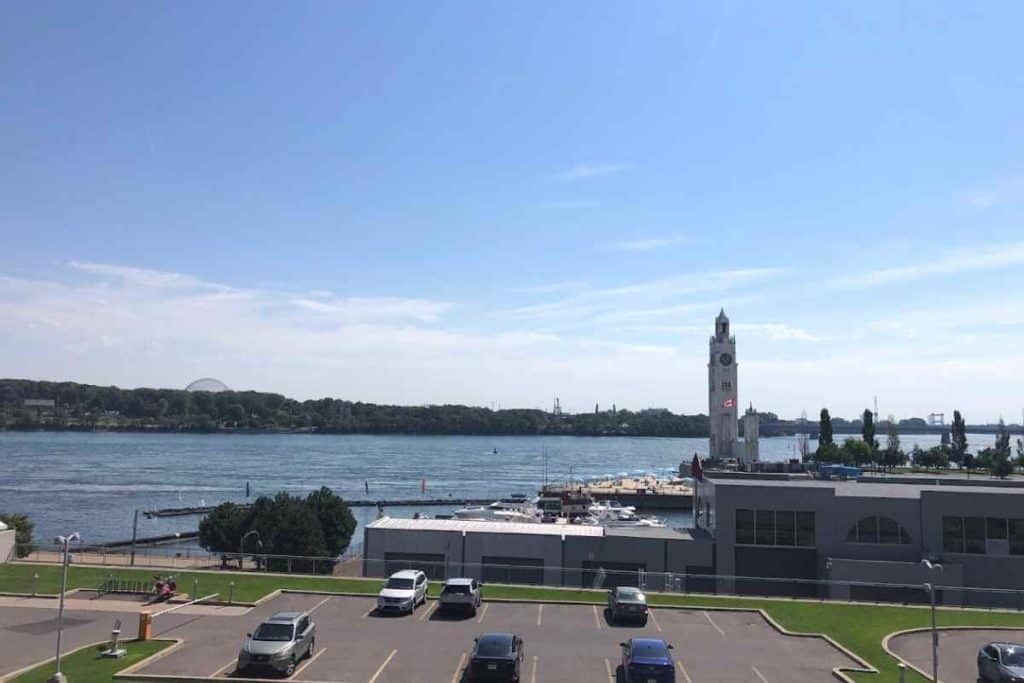
- Beyond the Bike Lanes Bike Tour – This bike tour was AMAZING. You bike for around 4 hours with stops in between and delicious lunch and beverage in a park amongst the locals. It’s a great tour to get a feel for the neighborhoods (boroughs) of Montréal and get a taste of local life. If Felix is your guide, you’ll be in great hands.
- Haunted Griffintown Ghost Walking Tour in Montréal – I did this ghost tour on my latest trip to Montréal. I wanted to do a ghost tour but was already doing the Old Montréal one, so I opted for this one. It’s definitely less scary and more entertaining because you get to discover the creepy past of the Griffintown borough, one definitely worth listening to. Jason was our tour guide and definitely brought the theatrics.
- Free Walking Tour of Montréal – A free walking tour is a MUST in any city, including Montréal. This one was great, informative, and helpful on the first day to get a good lay of the land.
- Old Montréal Ghost Walking Tour – Out of the ghost tours I’ve done in Montréal, this one was definitely one of my favorites. The guides come dressed in clothing from the 1800s and put on a great theatrical spectacle that isn’t too over the top and just enough creepy.
- 3Hr Montreal City Bike Tour with Beer or Wine – This was the first biking tour I did in Montréal, which is a bit shorter than the other one I shared but also a great option. It’s beginner-friendly, and you stop for bagels in the middle of the journey – WIN.
Where to eat in Montréal

- Schwartz Deli – Schwartz Deli is probably the most famous bagel shop in Montréal for its incredible, hand-crafted bagels. If you’re an Anthony Bourdain fan, you’ll know this was one of his stops in Montréal and has his stamp of approval, and mine too. – Address: 1440 S Milford Rd, Highland, MI 48357
- St. Viateur Bagel – Another great bagel place for ya! As you know, bagels are a huge thing in Montréal as they are in New York due to the Jewish communities in both cities. St. Viateur Bagel is a great place to get your bagel fix, I recommend grabbing the Breakfast sandwich and berries smoothie – so good! – Address for the Mile End location: 158 Rue Saint- Viateur O, Montreal, Quebec H2T 2L4, Canada
- Fairmont Bagels – This is a personal recommendation from my bike tour guide Felix, who shared that Fairmont Bagels is a superb alternative to the previous 2 bagel shops I mentioned if they are too full. They serve a variety of flavored bagels and cream cheese, and it’s open 24 hours! – Address: 74 Av. Fairmount O, Montréal, QC H2T 2M2, Canada
- Le Central – This is a chic and bustling food hall located on St. Catherin Street, with various food options, all worth a try. Choose from local poutine food stalls, or dine at one of the city’s multicultural cuisines, such as Portuguese, Spanish, Korean, or Mexican food, represented inside. I recommend Cantine Emilia Portuguese and trying their chicken burger. Be warned, their portions are huge! – Address: 30 Saint-Catherine St W, Montreal, Quebec H2X 0C8, Canada
9 Must-Try Foods To Eat In Montréal
The best, most iconic, and delicious foods to try in Montréal 🍁 all in a handy guide to refer back to.
Check your email for your 9 Must-try Foods To Eat in Montréal! Make sure to also check your spam folder if you can’t find it right away!
- Candide – Bringing a fusion of French and Canadian delicacies is Candide. It’s definitely a nicer restaurant to go to, especially if you’re celebrating a birthday. Enjoy their extensive wine list and picture-perfect dishes. – Address: 551 Rue Saint-Martin, Montréal, QC H3J 2L6, Canada
- Montréal Plaza – is a chef-run restaurant with innovative dishes that are worth a try. The setting is spectacular and serves mainly French-inspired dishes. – Address: 6230 Rue St-Hubert, Montréal, QC H2S 2M2, Canada
- Gia Vin & Grill – Craving some Italian? Don’t hesitate to go to Gia, serving grilled delicacies owned by a group of restauranteurs with a few other local favorite restaurants. – Address: 1025 Rue Lenoir, Montréal, QC H4C 2Z6, Canada
- La Banquise – I cannot leave y’all without a poutine recommendation, and though the city is full of great poutine places, one of the most popular ones worth mentioning is La Baquise. Serving poutine in a variety of different ways. Plus its open 24 hours a day! – Address: 994 Rue Rachel E, Montréal, QC H2J 2J3, Canada
- Ken CoBa – Another recommendation from my bike tour guide, Fenix, for a great ice cream, sorbet, and soft serve dessert spot to check out in Montréal. Try their various creative ice cream flavors, or get yourself one of their freshly baked goodies, never disappointing locals and visitors alike. – Address: 60 Av. Fairmount O, Montréal, QC H2T 2M2, Canada
💡 Pro tip : A lot of the city’s great restaurants, especially newer ones with interesting concepts are located in the St. Henri borough, a 20-minute metro ride from Old Montréal.
The best cafe’s in Montréal
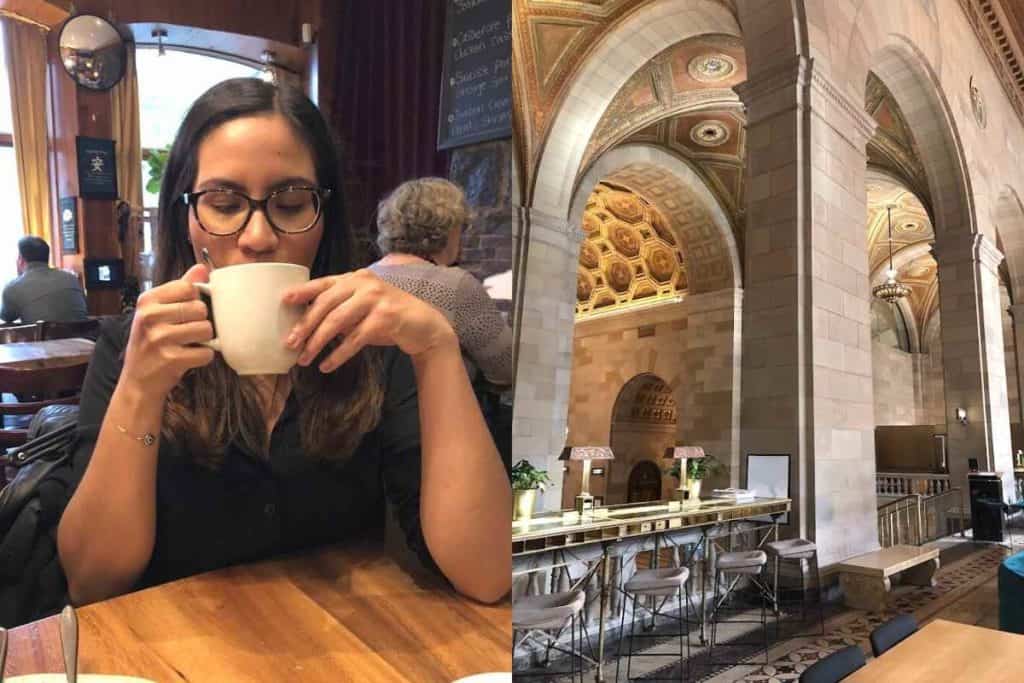
- Crew Collective & Cafe – One of the most beautiful coffee shops I’ve been inside was at Crew Collective & Cafe. Previously a bank, but honestly, I got cathedral vibes in here; this coffee shop has high vaulted ceilings, beautiful lighting, and ambiance. I wanted to spend a few more hours there, but I had a bike tour to get to. They serve seriously delicious lattes and pistachio croissants. To die for. Just like the interiors of this place. – Address : 360 Rue Saint-Jacques, Montréal, QC H2Y 1P5, Canada
- Saint-Henri – Some of the best coffee roasters in the city in a chic, minimalist environment with warm hospitality. You can’t go wrong! – Address for Notre-Dame location : 3632 Notre-Dame St W, Montreal, Quebec H4C 1P5, Canada
- Dispatch Coffee – With a few locations scattered around the city, Dispatch Coffee serves locally roasted beans and is always cutting edge with its coffee menu. Check it out for yourself! You can even buy a bag of coffee to take back with you. – Address for Saint-Laurent Boulevard location : 4021 St Laurent Blvd, Montreal, Quebec H2W 1Y4, Canada
- Café SAT – A stunning cafe where you can step inside and enjoy your almond milk latte. They feature different roasters every month and a few other items on their list made with ingredients they personally harvest on their rooftop garden. Check them out at the beautiful Quartier des Spectacles. – Address : 6 Pl. du Marché, Montréal, QC H2X 2S6, Canada
- Café Shaughnessy – Serving divine coffee and equally delicious home-baked goods is Café Shaughnessy. Enjoy a slow start to your day sipping on their specialty direct-trade coffee. – Address : 1455 Rue Lambert-Closse, Montreal, Quebec H3H 1Z5, Canada
- Café Olimpico – With multiple locations around the city, including Old Montréal, check out Cafe Olimpico, which serves authentic Italian coffee inside an Italian cafeteria. The staff inside the Old Montréal location is super warm and hospitable, and the setting is truly beautiful, surrounded by old European-inspired buildings and cobblestones. – Address : 419 R. Saint-Vincent, Montreal, Quebec H2Y 3A6, Canada
What is the difference between Old Montréal and downtown Montréal?

Old Montréal showcases the French/European influence dating back to 1535 when the first Europeans came to the city, known before as Ville-Marie.
The romantic streets with cobblestone transport anyone back to any European city, and enamoring more than one with its charm, sitting right beside the picturesque St. Lawrence River and the Old Port.
Downtown Montréal is more modern, boasting the typical city life, fast-paced, public transportation stops, continuous construction, and all of that.
Yet, I can’t help but feel like downtown Montréal isn’t like most North American cities.
Maybe I’m biased or a Europhile, but the French streets, stop signs, Paris-inspired Metro entrances, and influence is definitely noted throughout downtown, and immediately don’t make it seem like any North American city.
In addition, even though downtown is like any other downtown, you’ll still find open-air art galleries, an abundance of cafes and terraces, open park spaces with sculptures, and people actually sitting down, enjoying a good book or lunch.
Life is fast-paced just like in any other city, but Montréalers just know how to make time to relax , use the city’s open spaces, sit around and talk with each other over a coffee on a random Wednesday.
It’s not as go, go, go as Chicago for instance , where I went to school.
I think it’s the heavy European-take-it-easy influence that definitely floods onto modern downtown Montréal, and is essentially a part of every Montréaler.
They take chilling seriously.
And personally, I love to see it. Life being lived, slowly yet efficiently.
>> Read More: 16 Helpful Things To Know Before Going To Montréal, Canada
How much is the train from montréal to québec.

Typically, a round trip will cost anywhere from $60-$80 CAD per one way, so around $170 CAD plus or minus.
Depending on how much time you have overall in Canada, and how much time you’d like to spend in each city (both worth a few days to fully explore) then taking the train might be your best option.
Personally, I have been to Québec City and spent around 3 days exploring, which I think was a good amount of time. I got to explore the Old Town, visit the museums, and go out to Montmorency Falls for a day trip.
Afterward, I took a train to Montréal, and spend around 3 additional days exploring, and doing the free walking tour, a couple of museums, and the ghost tour.
On my most recent trip, I took a day trip to Québec City from Montréal, and though it was great and efficient, I felt it was a bit rushed, not because of the tour or the guides themselves, but simply because I don’t think you can really explore Québec City in one day (or a couple of hours as that is what the tour allotted, really).
However, doing a day trip is a good option and opportunity to get an intro to the city, and make note of the things you want to explore when you return (if you liked it enough).
>> Read More: How To Easily Book and Take The Train From Québec City To Montréal Using Via Rail Canada
Is montréal or québec city better to visit.

It might be the boring answer, but it’s the most authentic.
Both are completely worth the visit.
Having visited both cities multiple times at this point, both offer an incredible array of things to do, food to devour, and amazing history unique to their own region.
Both cities are located in the same province of Québec and have similar histories and architecture and even historical figures, however, the way things went down historically is unique.
For instance, Québec City is known to be the most French-speaking region of the country, and I definitely noticed that on my first trip.
Don’t worry though, they will speak English with you if you don’t know French – this is still in Canada.
Plus, Québec City has been growing exponentially, attracting a lot of tourism in the last few years, with its 17th-century-style buildings, and being the only walled city north of México, thus earning recognition from the UNESCO World Heritage.
Montréal doesn’t fall behind by inviting approximately 11 million tourists per year, charming people with its youthful, cool blend of North American life with a very strong European force, and incredibly fast-growing multi-cultural influence.
Most Montréalers are not only bilingual, but trilingual, learning both English and French as required by their school system, and also learning their native language.
So cool and different from many other North American cities.
As you can see, there are endless reasons to visit each city on its own and spend a few days to really get a better idea.
This is why I recommend doing at least one tour of any kind in either city, to really learn and appreciate where you’re standing.
The Wrap-Up: How To Easily Plan a Trip to Montréal for the First Time
I hope this post has helped you plan out your first trip to Montréal! Truly, I have poured everything I know into this post, and I surely hope that it can serve as inspiration and guidance for your Canadian travels, especially in the Québec province.
Have you been to Montréal before?
Let me know in the comments, and feel free to share your own tips for all of us to learn and be better equipped for our travels in Montréal.
To more travel like this ✨
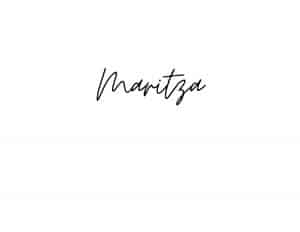
Hi! I'm the founder and writer behind Travel Notes and Things. I write posts about travel destinations, share travel tips and resources, as well as talk about transformative travel to help inspire Latinas to travel to their dream destinations!
Similar Posts
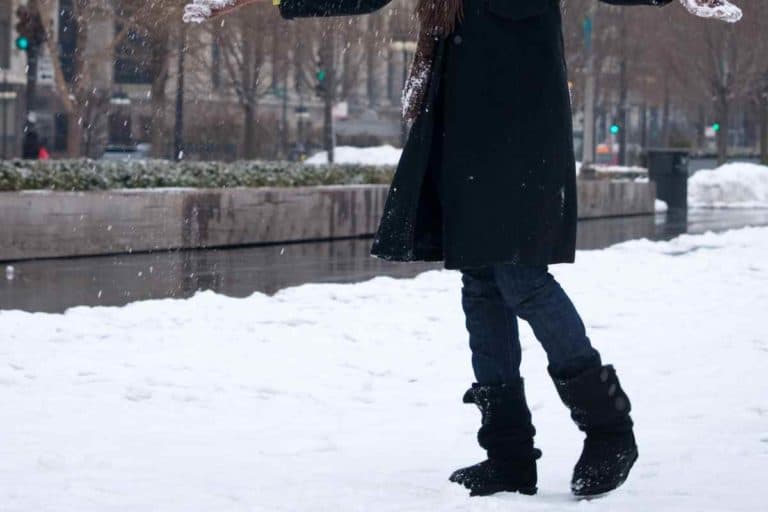
A Local’s Guide to the 21 Best Chicago Winter Boots
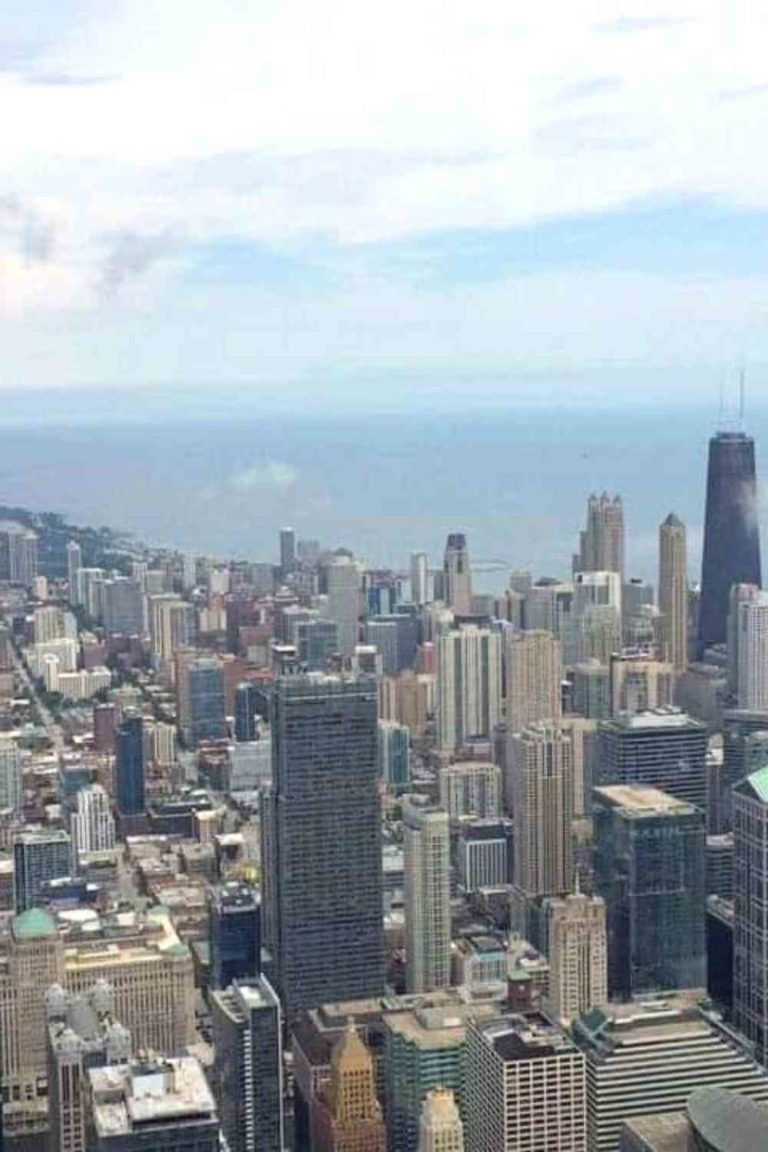
Planning A Trip To Chicago? Here Are 10 VERY Useful Things To Consider First!
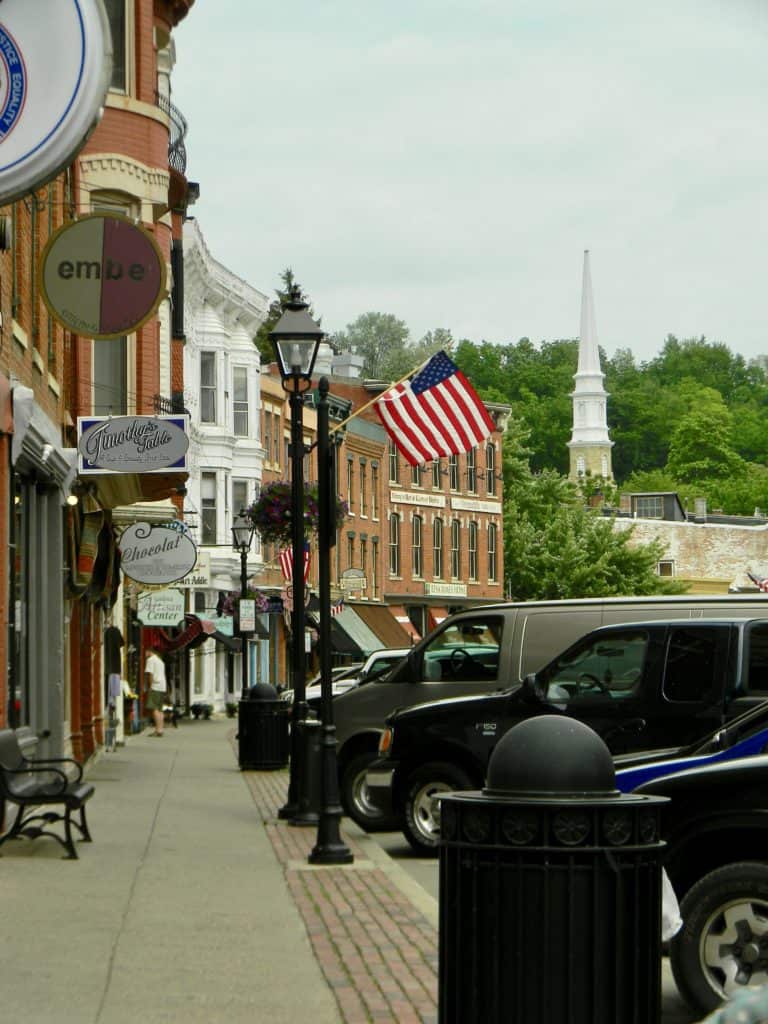
7 Interesting Facts About Galena, Illinois You Probably Didn’t Know
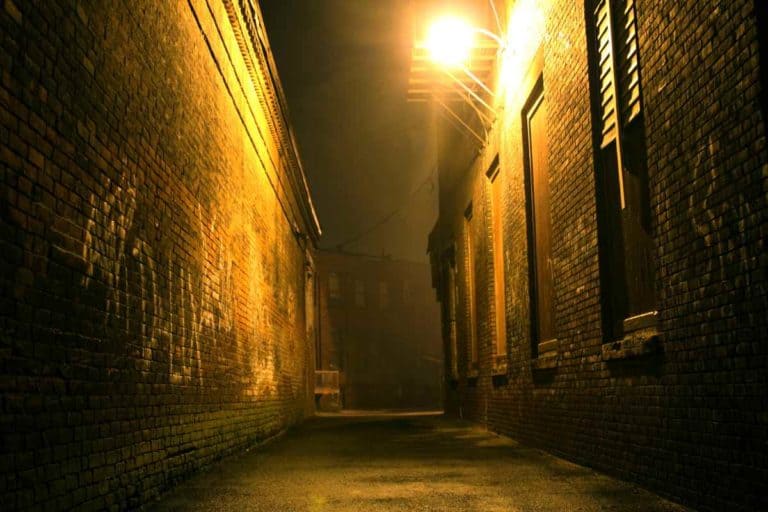
13 Unique and Weird Chicago Tours To Experience in 2024
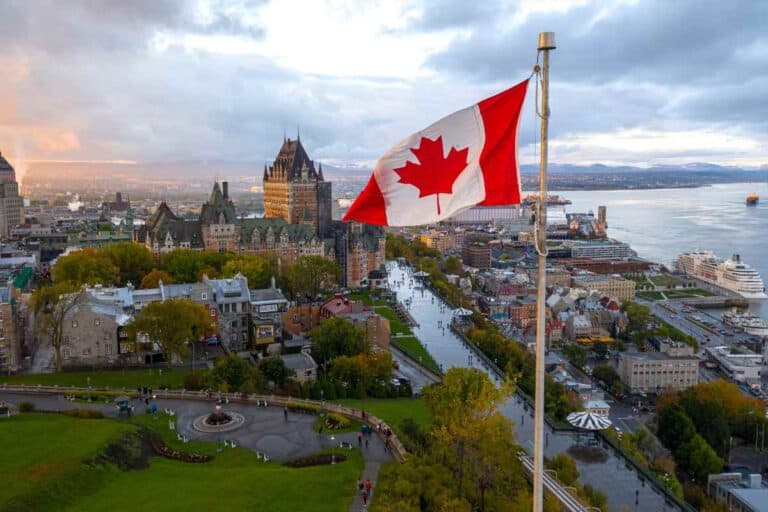
The 8 Best Montréal Tours to Québec City To Book in 2024
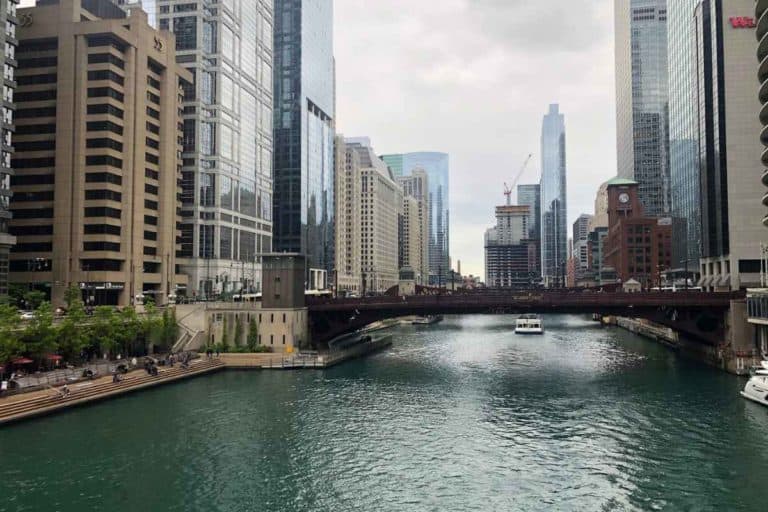
How To Plan Solo Travel in Chicago – A 3-Day Guide By A Local
Leave a reply cancel reply.
You must be logged in to post a comment.
This site uses Akismet to reduce spam. Learn how your comment data is processed .
Privacy Overview

10 Unmissable Things to do in Montreal With Kids
This post contains affiliate links, for which I may earn a commission if you make a qualifying purchase.
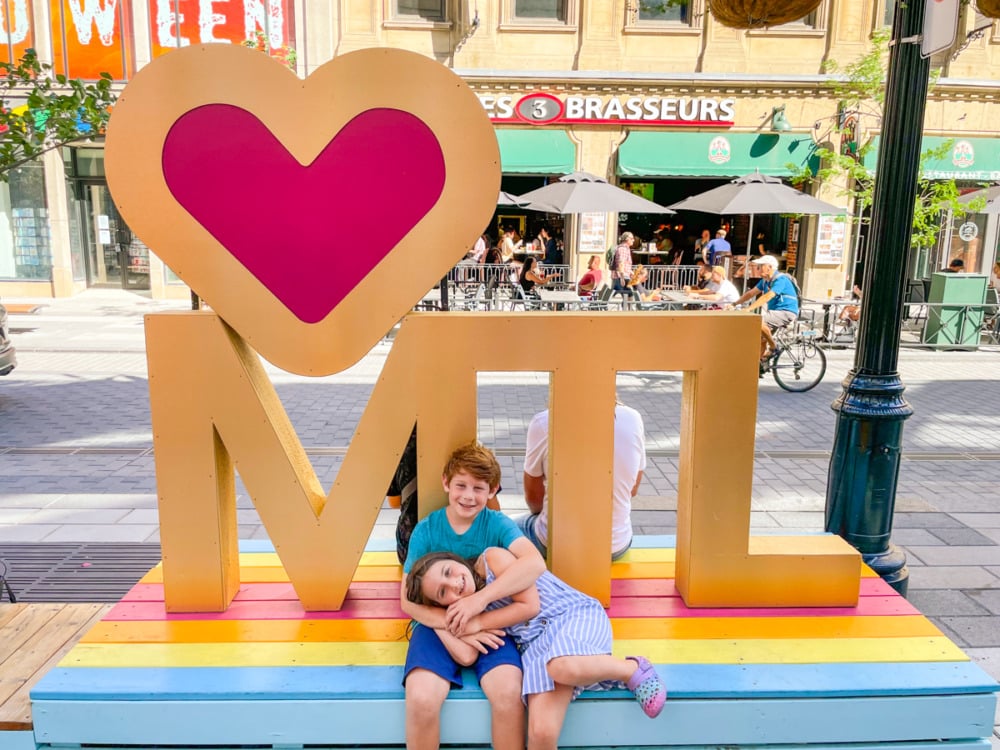
Sharing is caring!
Montreal is an incredible city that seamlessly blends old and new, French and English (along with a smattering of other cultures), and the conservative and the cutting edge. There are plenty of phenomenal activities for all types of travelers, including tons of things to do in Montreal with kids. Between us, we’ve taken a childhood trip to Montreal, a couples trip to Montreal for our honeymoon, a bachelor party trip to Montreal and now a family trip to Montreal with our own kids.
Despite so many trips to Montreal through so many different lenses, we keep coming back and finding more to love. Of course the best things to do in Montreal, Canada will depend on your interests, but you’ll be sure to find inspiration ideas after reading this article.
Where to stay in Montreal
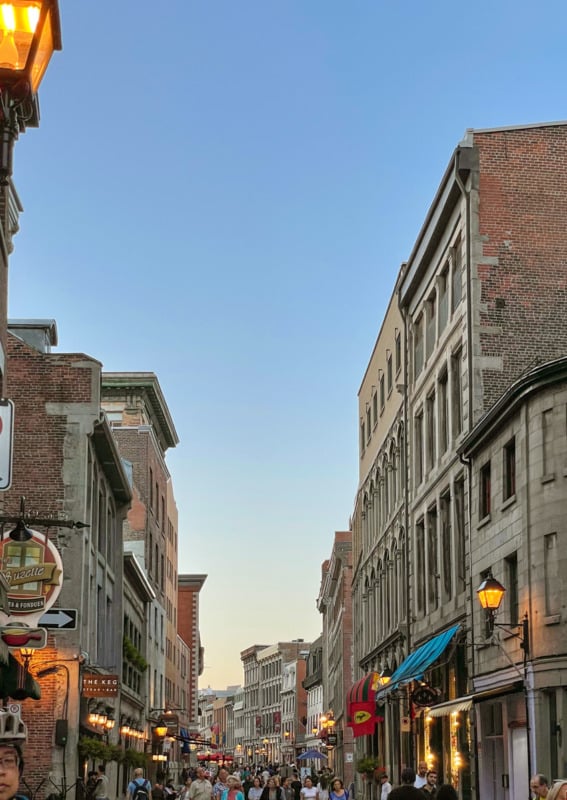
Montreal is a big city with a million places to stay, ranging from budget-friendly vacation rentals to luxury hotels.
On our most recent visit we had a fantastic “apart-hotel” vacation rental in the heart of Old Montreal, located on Boulevard St-Laurent right near Rue St-Paul (pictured above). It was the most basic one bedroom offered, with a comfortable sleep sofa in the living room and a full kitchen in case you want to prepare your own meals (which you probably shouldn’t, because you’re in an amazing foodie city). Importantly for us, the apartment is equipped with a washer and dryer in the bathroom and comes with a parking permit for the Port (just a three minute walk across the street).
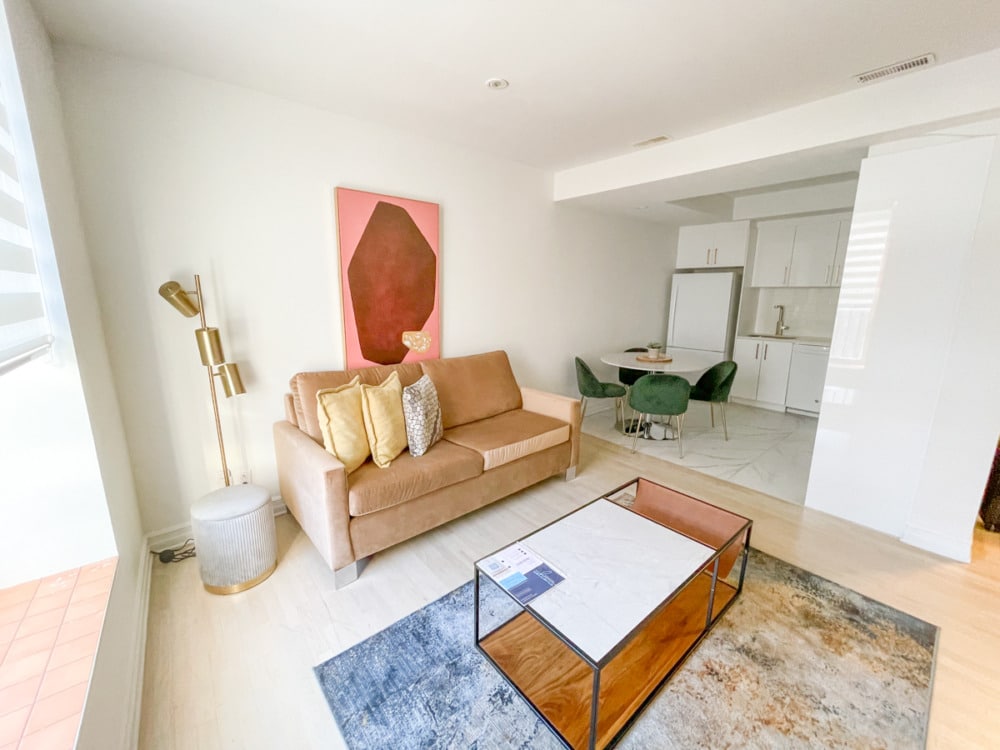
The same building has many larger options if you need more space to spread out. There are bigger one bedroom apartments and even three bedroom apartments clocking in at 2600 square feet with sleeping space for 8-9 guests!
There are plenty of excellent hotels near the Old Port of Montreal:
- Hotel Nelligan – Old World charm with New World convenience, with breakfast in bed for a real luxury. Rooms for up to 4 people.
- Hotel Place d’Armes – Four stunning classic buildings transformed into a modern hotel, just across from Notre Dame. Rooms range from cozy budget-friendly spaces for two guests up to 1000 square foot suites that will accommodate up to 5 people!
- Hotel William Gray – This new boutique hotel in Montreal has an awesome rooftop bar with fantastic views. There’s a selection of rooms and a few suites as wells.
- SpringHill Suites Old Montreal – This sophisticated chain hotel is actually one of the best places to stay in Montreal with kids! These suites all have a sitting area and kitchenette, and the hotel offers an indoor pool and free hot breakfast daily. It’s just around the corner from where we stayed, in the heart of it all. Be sure to check pric es both directly with Marriott and with Expedia to score the best deal.
Get all the details on where to stay in Montreal with kids .
If you’d rather stay outside of Old Montreal, you can use the map below to identify some of the activities that interest you most and find the best places to stay in Montreal within relatively easy walking distance.
10 Best things to do in Montreal, Canada with kids
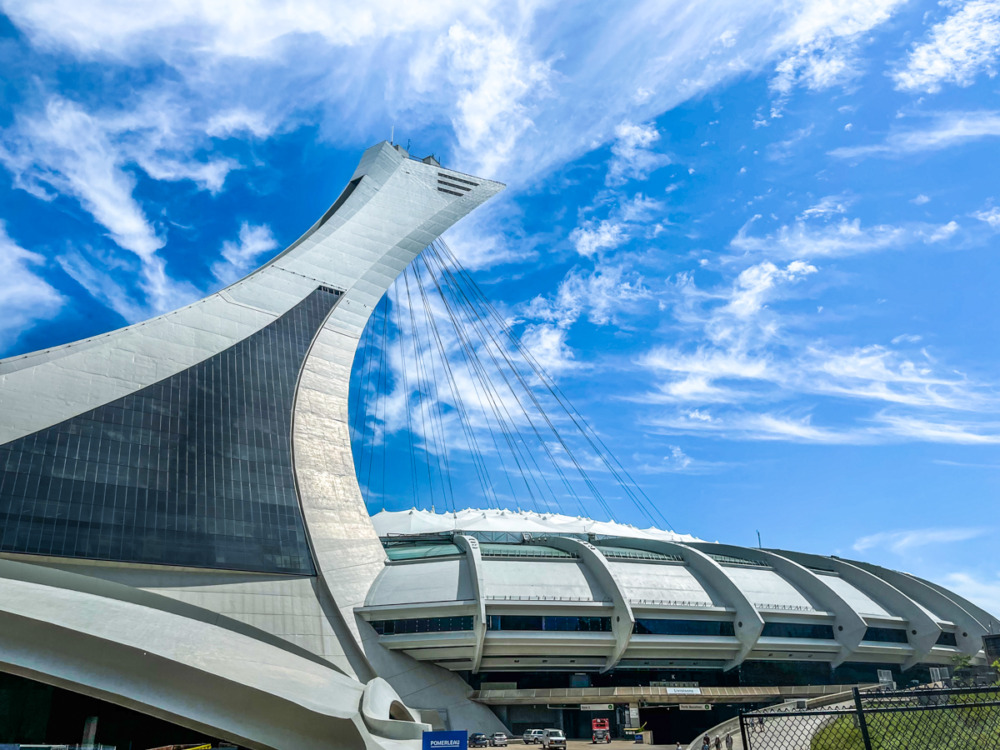
One thing’s for sure: you’ll never run out of things to see in Montreal. This list of the top attractions in Montreal for families is a great sampling to get you started, but be sure to stumble and explore to find your own favorites too!
Explore Espace Pour La Vie

One of the most unique things to do in Montreal is spend a few hours at Espace Pour La Vie , the life-focused set of attractions that sprang up from the ashes of the old 1974 Montreal Olympic site. Rather than letting it crumble and decay, planners repurposed the velodrome into a remarkable showcase of five different biomes of the Americas at the Montreal Biodôme.
In just over an hour you can explore everything from a frigid penguin habitat to Canada’s woodlands to South American rain forests. It’s truly a place of wonder – we loved feeling the ice as we walked through the Arctic tunnel, watching the beavers hard at work (above) and even glimpsed a sloth swinging along the ceiling!
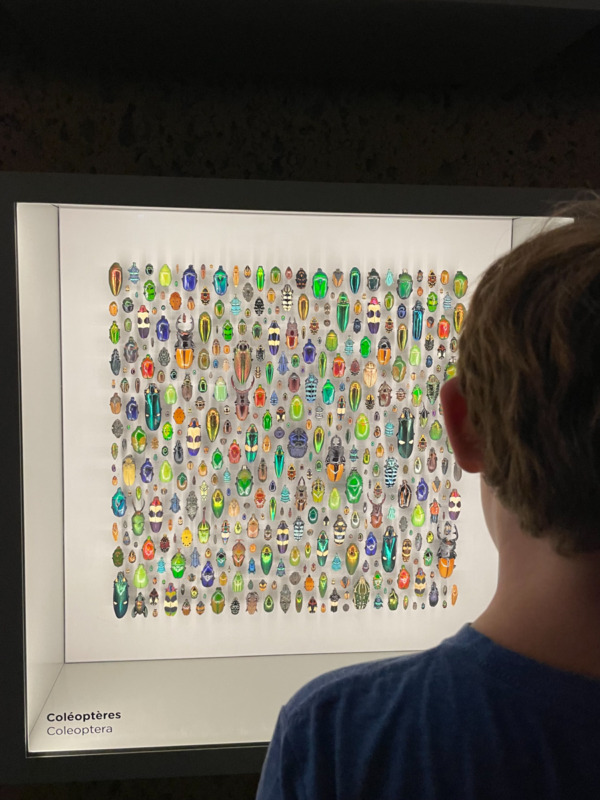
Up the hill is a place unlike any other we’ve visited, the Montreal Insectarium. While there’s a large butterfly pavilion, there are also incredible interactive spaces to help you understand what it feels like to live as a bug! The displays of Earth’s diversity of insects are absolutely amazing and there are some truly unique live insects that you can watch to understand their behaviors. This is a truly enjoyable activity – especially if you’re visiting Montreal with kids, but even without them. The Insectarium does have limited capacity, so be sure to reserve your spot as soon as you know your travel dates.
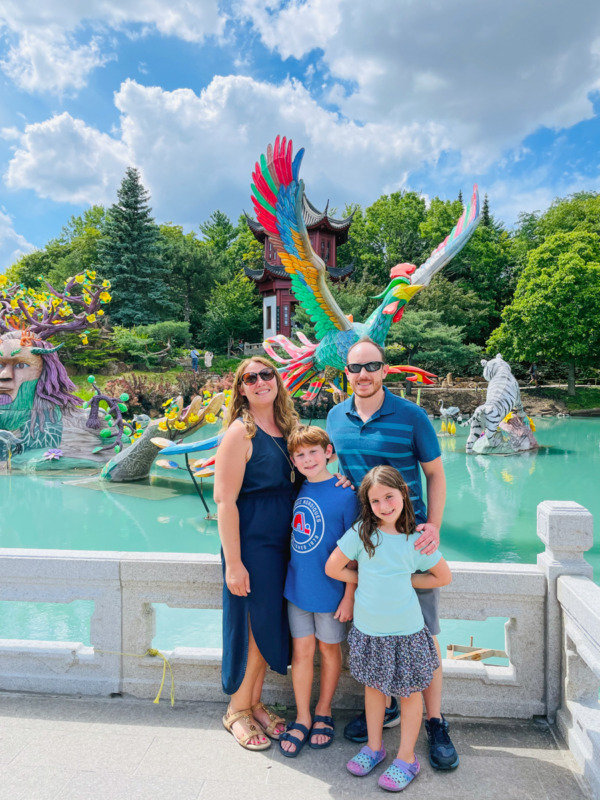
Next to the Insectarium is one of our favorite places, and arguably one of the top attractions in Montreal: the Botanical Gardens. It’s absolutely beautiful! When we spent part of our honeymoon in Montreal, going to the annual Magic of Lanterns festival was a highlight. Even if it’s not the season for the festival or another celebration, visiting during the day gives you the opportunity to witness the elaborate Zodiac-themed sculptures that fill the pond of the Chinese garden. You’ll also want to be sure to explore the diverse collection of lilies near the main entrance. The Gardens are home to some of the best Instagram spots in Montreal!
If your interests are more extra -terrestrial, check out the Rio Tinto-Alcan Planetarium. This is the one site at Espace Pour La Vie that we didn’t get to visit due to time constraints, but it’s high on our list for our next trip to Montreal. There are excellent planetarium shows, space-focused art exhibits and more.
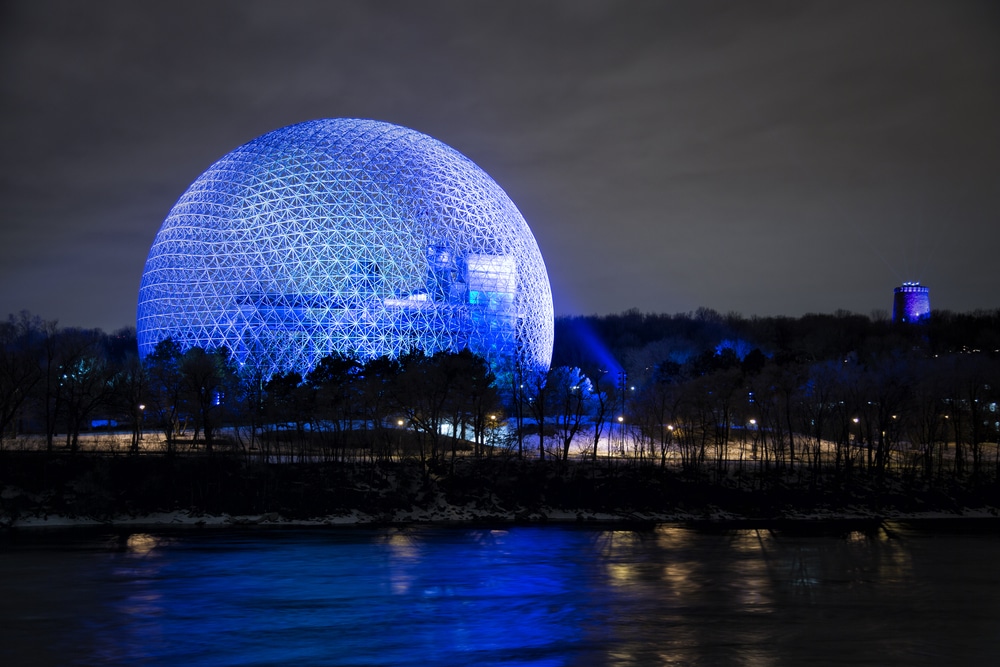
One note on costs… each museum ticket is $22 per adult and $16 per child ($60 for a family). It’s entirely possible to visit all four of these best Montreal attractions in one day so paying separately for each museum would get incredibly expensive. A better option if you plan to visit several of the sites is to purchase the Espace Pour La Vie Passport at $80 per adult or $140 per family. It’s valid for a year, which gives you the option to return. You can also visit the iconic Biosphère on a different day as it’s not located with the rest of the museums.
Want to get more helpful travel tips like this? Sign up for our email list!
Stroll Old Montreal
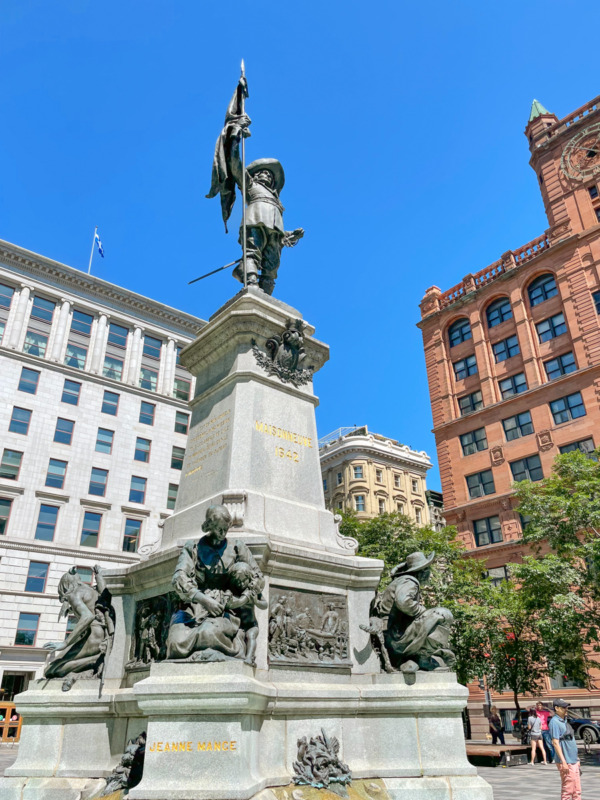
Montreal was established in 1642 as a fur trading outpost and gradually, through fits and starts fire, grew to be an important city in the colony of New France.
Bits of the original village remain today, interspersed with some slightly newer structures (many from the 1800s) and right next to the redeveloped port. While not as extensive as old Quebec City , it’s still charming and full of beautifully maintained historic buildings. This is one of the best places to stay in Montreal, as you can easily enjoy the city’s charms away from some of the more modern busyness of a city this size.
There are still many historic buildings in Old Montreal, ranging from those built by early French settlers to gorgeous Gilded Age towers. To see it all and understand it , consider taking an Old Montreal walking tour . That tour offers shorter options highlighting either the east or west side of old Montreal as well as a combined tour that covers them both, so you can decide just how much history you want in one day.
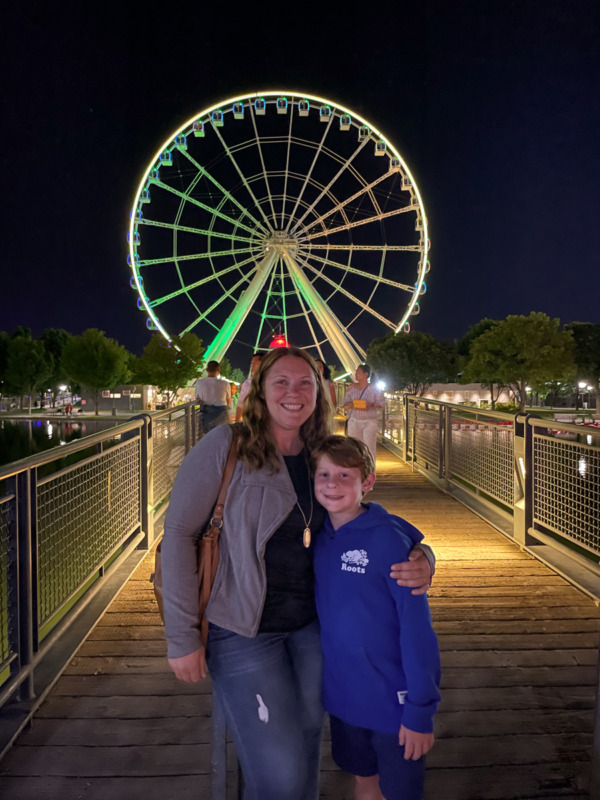
Once it’s dark, stroll through the modernized port right near Old Montreal. There are lovely parks with fountains, food trucks and craft vendors and a big observation wheel to keep you entertained after the sun goes down. It may not have the same charm as the ancient city, but it’s a fun way to wrap up the day!
Roam the Underground City
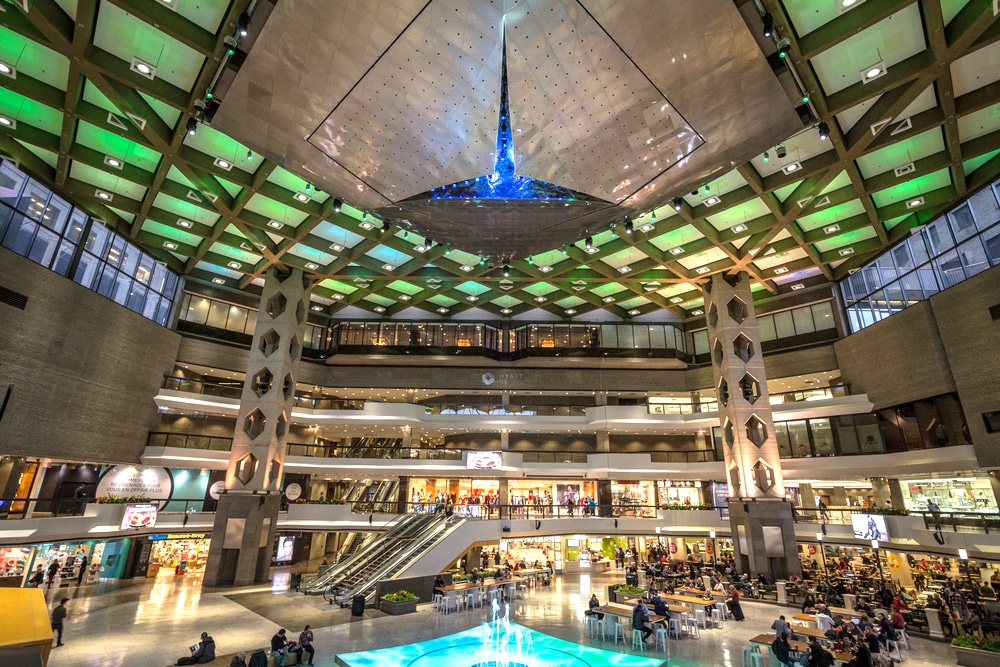
How do Montrealers survive the frigid winters? They head underground!
The Underground City, RÉSO, has more than 20 miles of subterranean passageways connecting buildings, malls, restaurants and museums in the city’s core. It’s remarkable!
We’ve only explored a small fraction of RÉSO, but for an in-depth experience you can visit with a knowledgeable guide on this tour – you’ll see the highlights and also understand the important history of Montreal’s Underground City.
Relax at Mount Royal Park
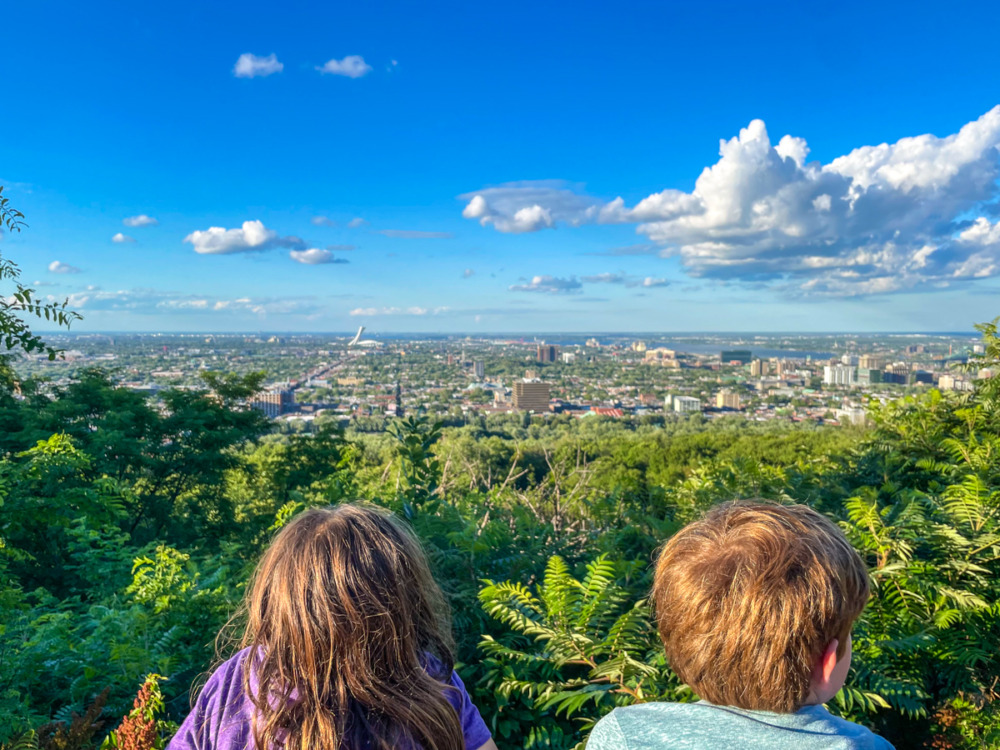
Montreal gets its name from the large hill/small mountain on the edge of the city, Mount Royal. Mt Royal Park in Montreal is a large, beautiful green space where locals go for their own recreation. Fortunately there are so many wonderful ways to enjoy it, and an afternoon at Mount Royal is also one of the best free things to do in Montreal.
If you’re looking for active things to do in Montreal, there’s no better place. You can hike up to the top of Mount Royal via the extensive trail system, or if you’re really brave you can bike up the mountain and then down the other side.

For those who want a more relaxing way to enjoy Montreal outdoors, head to the lovely Beaver Lake area. We spread out a picnic on the large grassy hill and then rented a boat to paddle around the lake (check hours and rates here ). There are also some lovely manmade waterfalls near the lake that are perfect for some kid-friendly scrambling or keepsake photos.
Thanks to its elevation, Mount Royal also provides one of the best vantage points to see the city. You’ll probably want to end the day at one of the scenic overlooks off the road so that you can enjoy golden hour light as you take in the sweeping views. Bonus? If you leave the park as the sun is setting you can stop in lovely Outremont to enjoy dinner at one of the many excellent (and less touristy) restaurants along a pedestrian (in summer) thoroughfare like Ave Bernard.
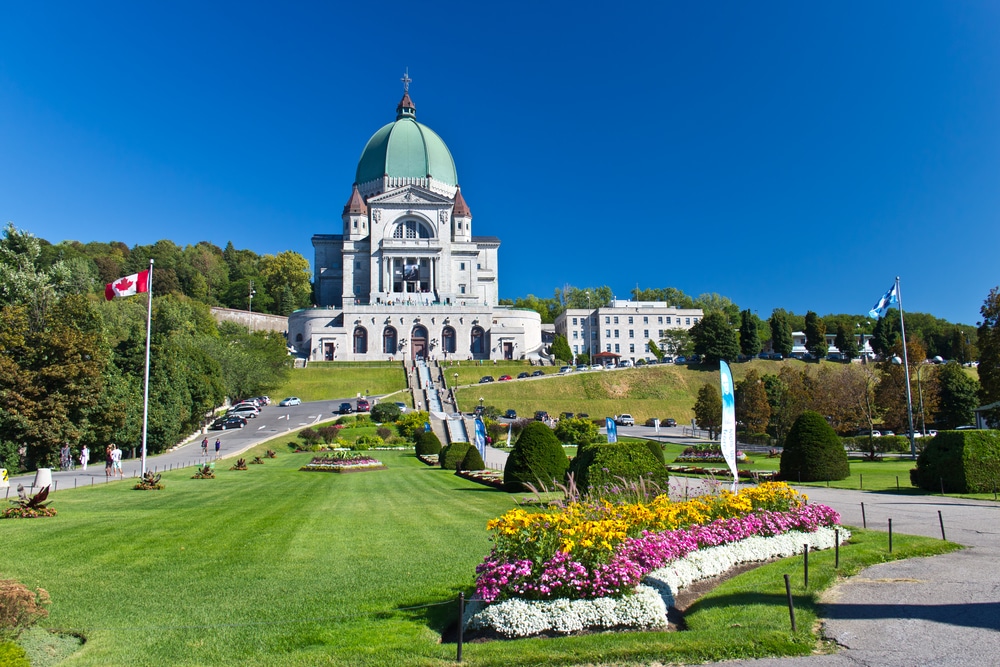
Saint Joseph’s Oratory of Mount Royal provides both a fantastic backdrop for Montreal Instagrammers as well as a great view out to the city from its terrace. It’s immediately adjacent to the base of Mount Royal Park, so many people combine them into a single visit.
Eat your way through Marché Jean Talon
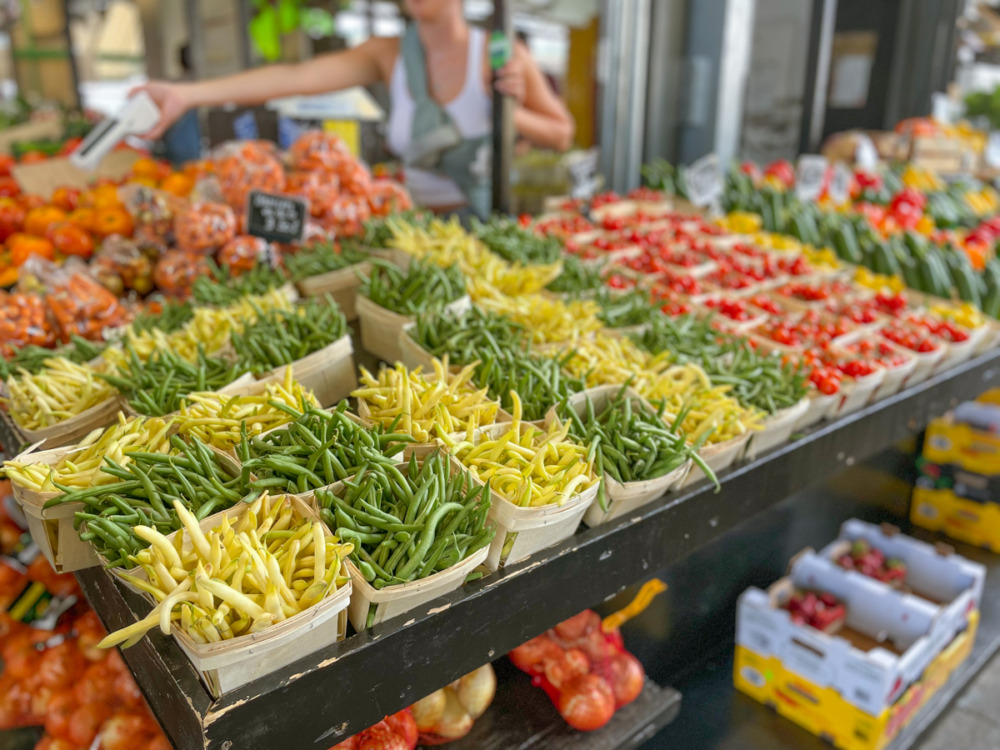
I mentioned previously that we enjoyed a picnic on Mount Royal, but it was no ordinary picnic. No, ours was a farm-fresh picnic including everything from just-picked produce to local cheeses, freshly made baguettes and even house smoked salmon.
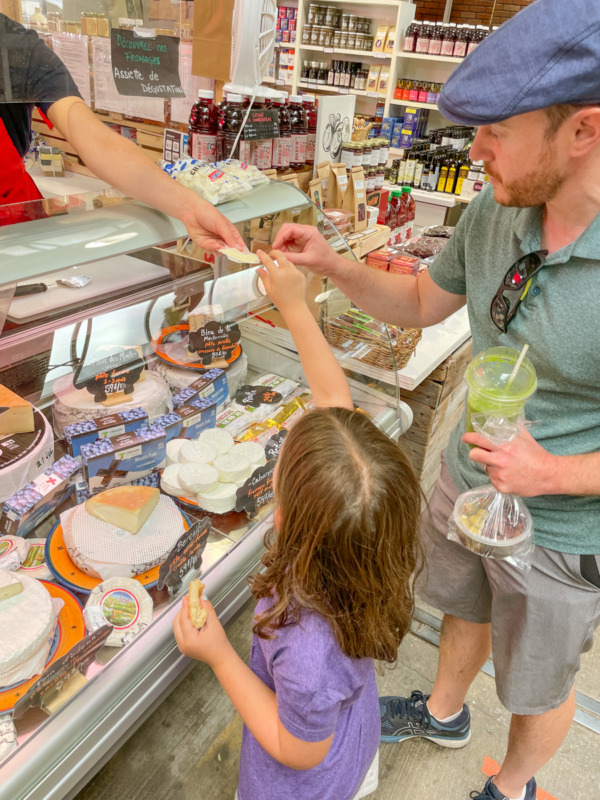
A visit to Marche Jean Talon is an experience unto itself. In addition to the delicious food offerings, there are also soaps, flowers and more. You can easily spend an hour wandering, exploring, sampling and buying! Since it’s impossible to walk away empty-handed, be sure to bring a packable grocery bag or two for your visit.
To really dive in, consider this guided tour of the market and nearby Little Italy!
Shop along St. Catherine Street

You can’t visit Montreal without encountering St. Catherine Street. It’s 7 miles long and runs nearly the length of the entire city! There are shops, entertainment venues, universities, restaurants and more.
But it’s also, in many ways, the beating heart of this large city. You could walk along parts St. Catherine Street and easily mistake it for New York or Chicago. In other places it’s distinctively Montreal. In summer it’s the perfect place to enjoy the city’s brightly colored benches, pop-up photo booths, patio dining, festivals and more.
You’ll find a mix of international chains and Canadian and local specialties along St. Catherine Street. If your shopping list includes the coziest sweats you’ll ever own, don’t skip the massive Roots outpost near Peel Street – if you’re lucky, you might even catch an item from the sale section in the back. For a time-honored tradition, continue past the Quartier des Spectacles to Henri Henri, which has been adorning the heads of Montreal’s men (and my husband) for the last century.
Investigate at the Montreal Science Center
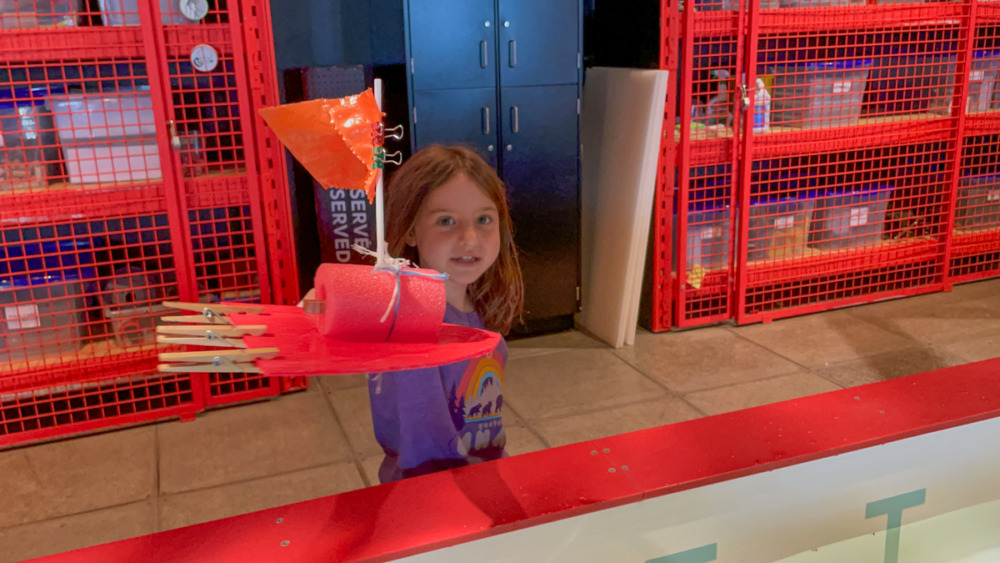
Planning a family trip to Montreal? You won’t want to miss the Montreal Science Center ! We spent several hours there, but the kids would have been thrilled to stay all day. If you’re a member of your local ASTC science center, you’ll even get free admission.
The Montreal Science Center has a wide variety of exhibits covering everything from human development to mechanics. It’s extremely interactive throughout. Our kids loved the physical challenges of the Guinness Book of World Records exhibit and the in-depth experimentation in the maker space/workshop/lab.
There’s an IMAX with some very interesting shows, though the English schedule isn’t as extensive as the French schedule so be sure to check in advance if you know you’ll want to see one. If you’re visiting in the summer, you may want to consider arriving after lunch to avoid the throngs of summer camp groups.
It’s located at the port, so if you’re staying at one of our Old Montreal recommendations it’s just a quick walk to get to!
Eat all the classic Montreal food
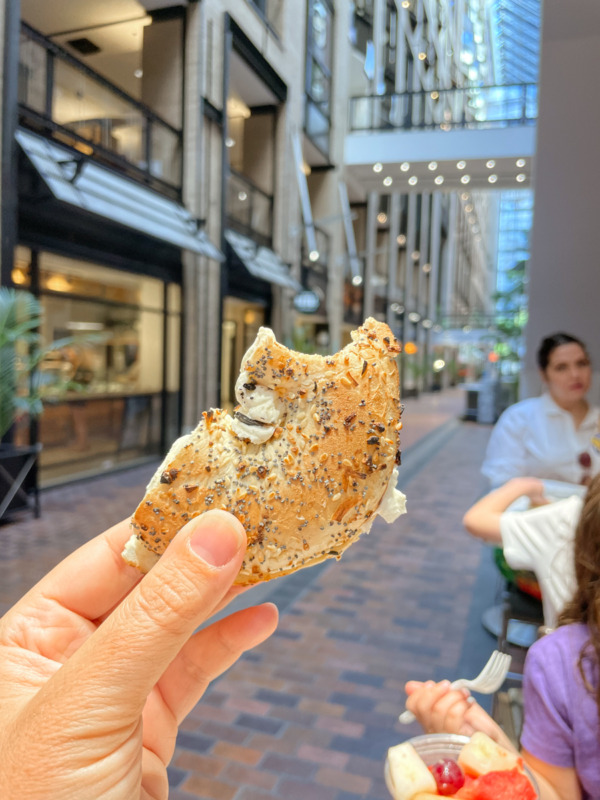
Without question, Montreal has a great food scene. While you’re there you should try out the signature Montreal bagels and smoked meat (not necessarily together).
Why bagels and smoked meat in what used to be called New France? Canada opened its doors to European Jewish refugees in the late 19th and early 20th centuries. In fact, relatives on both sides of my family found a safe, new start in Montreal.
The Jews of Eastern Europe brought their own culinary traditions and had an outsized impact on Montreal food specialties. They brought smoking techniques that were different than the ones early French colonists had learned from the First Nations and bagel recipes that differed slightly from those brought to New York.
You can get a delicious sampling of Montreal’s Jewish food, history and culture on this excellent tour , or opt for a Montreal food tour that spans a broader range of the city’s diverse food scene.
Admire the Basilica of Notre Dame
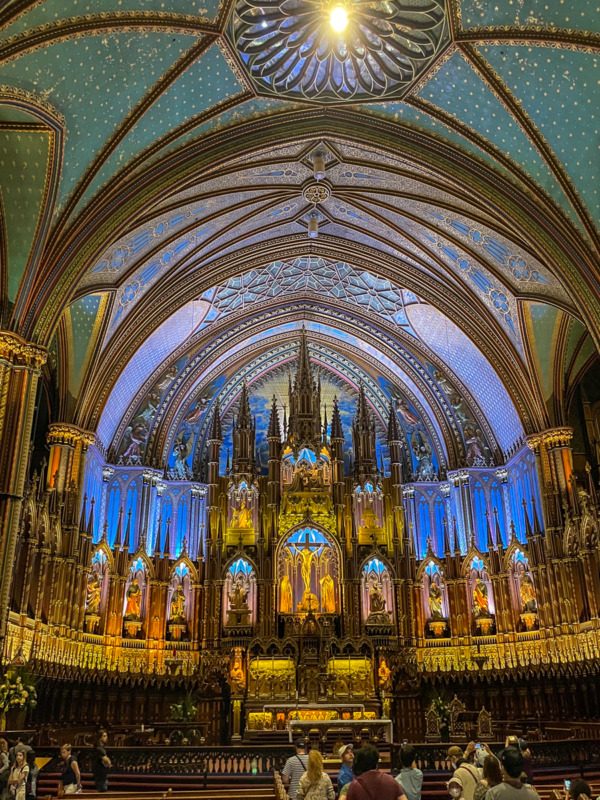
If you’re an admirer of church architecture and design, be sure the Basilica of Notre Dame is on your Montreal itinerary! It’s full of intricate stonework, but paired with a ceiling in the style of the lower level of Sainte Chapelle in Paris and vibrantly painted altar pieces.
Visitors first thing in the morning should be able to enter quickly, but even an hour after opening the line was long. Buying tickets online in advance will save you plenty of time! We actually bought ours while we stood in the line and were able to advance straight to the entry.
If you’re interested in historic buildings in Montreal, head 1/2 block to the right before you enter the Basilica. You’ll be able to admire Saint-Sulpice Seminary, built in 1687. It’s the second-oldest building in Montreal and one of the few 17th century remnants that’s in today’s city center.
Take one of these great day trips from Montreal
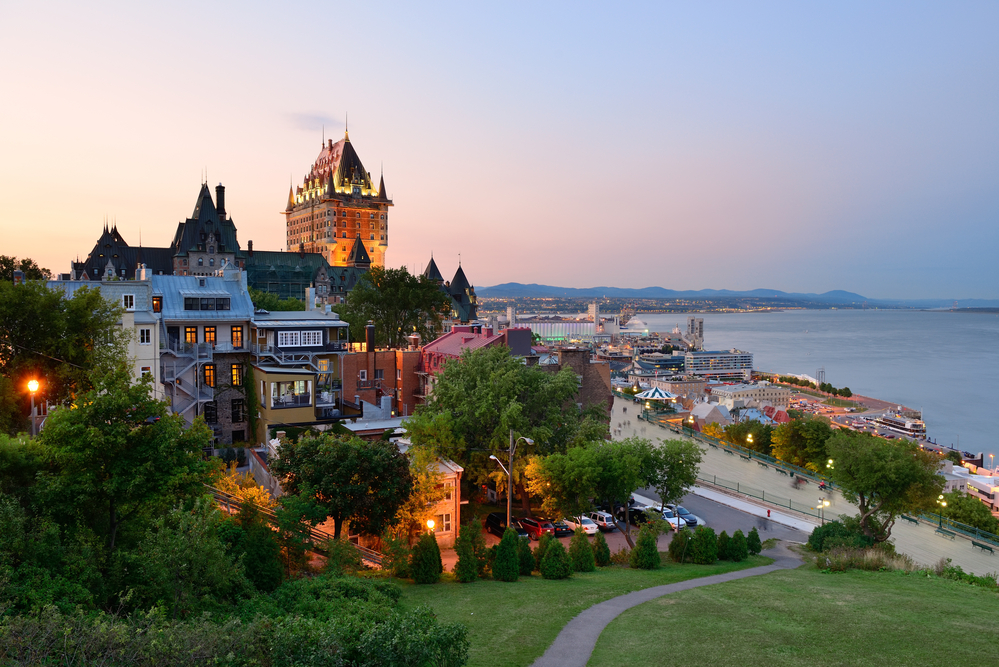
All of these ideas should be enough to fill two or three days in Montreal. If you have more time or want to pass on some of them, there are some wonderful day trips from Montreal that you can consider!
First and foremost, Quebec City is about a 3 hour drive away. While that makes for a long Montreal day trip, with an early start and a late return you could get a nice taste of one of North America’s most magical cities. One thing’s for certain: it’ll leaving you wanting more! Get the scoop on what to do in Quebec City . If you’re doing a car-free trip, your best bet for a day trip from Montreal to Quebec is to hop on an organized tour . Check availability below:
Canada’s capital city, Ottawa is much closer at 2 hours by car or public transportation. We haven’t visited yet but look forward to hitting Ottawa on our next visit to Canada. During a day trip from Montreal to Ottawa you can check out Parliament Hill, enjoy the Ottawa River and in May explore the stunning Canadian Tulip Festival.
We didn’t have time to visit on this trip, but nearby Mont Tremblant is a nature-lovers paradise all year long. It’s only a 90 minute drive, but unfortunately can’t be easily accessed by public transportation. There are wonderful hikes, a scenic gondola and excellent skiing in the winter. We’ll be sure to visit on our next family trip to Montreal!
Planning your trip to Montreal
Use this map to help you plan out your Montreal itinerary:
Want to extend your trip further? Check out these wonderful Canadian destinations within driving or train distance:
- Where to stay in Montreal with kids
- Quebec City Itinerary: 3 Days of History, Beauty and Beyond
- Whale Watching in Quebec: The Perfect Day Trip
- How To Make The Most Of One Day In Toronto
- Niagara Falls: 4 Mistakes to Avoid & What to do Instead
- An Incredible New York & Canada Road Trip
Still planning? Pin it for later!
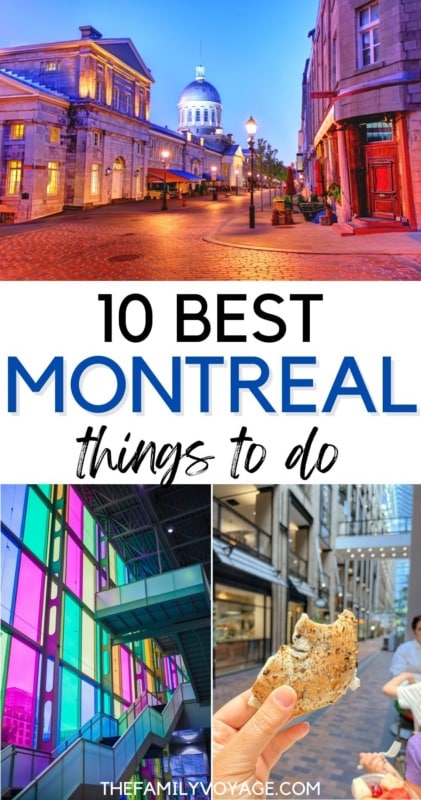
What to read next
Leave a comment cancel reply.
Save my name, email, and website in this browser for the next time I comment.
This site uses Akismet to reduce spam. Learn how your comment data is processed .
Il semble que votre javascript soit désactivé. Pour voir ce site à son plein potentiel, veuillez l'activer.
Vivez Montréal

Montréal cette semaine

Quoi faire à Montréal - août 2024

En selle! À la découverte du Montréal western

L’équipe du Bureau d’information touristique vous offre ses meilleurs conseils

Le MEM célèbre les gens de Montréal

Guide pratique de Montréal

Le guide des festivals d’été montréalais

ARcade, une expérience interactive au Casino de Montréal

Activités gratuites à faire cet été à Montréal

Des sports d’aventure à Montréal

Le Festival Présence autochtone de Montréal est de retour!

20 activités montréalaises à faire pour 20 $ (ou moins)
Montréal est...

Visitez Montréal en toute harmonie
La Destination harmonieuse, c’est l’art de vivre à Montréal pendant votre séjour. Pendant votre visite, vous êtes résidente ou résident de passage. On vous invite à profiter de tout ce que Montréal a à vous offrir, à découvrir les endroits qui rendent la ville unique et à consommer les produits et services locaux, le tout, dans le respect.
Calculateur de carbone
Vous pouvez évaluer l’empreinte carbone de votre séjour à Montréal et la compenser au moyen d’un don si vous le souhaitez
Promesse pour un séjour durable

Articles utiles

Un séjour écoresponsable à Montréal

8 adresses zéro déchet à Montréal pour changer ses habitudes

La stratégie de tourisme durable de Montréal va de l’avant

Montréal et son majestueux mont Royal
Guide pour une première visite à montréal.
Info touristique
Information pratique
10 incontournables pour une première visite

Vous pourriez aussi aimer


IMAGES
COMMENTS
Consultez ce guide touristique gratuit pour planifier votre voyage à Montréal. Rédigé par les conseillers locaux d'Authentik Canada, le guide voyage de Montréal contient les sections suivantes : Quand partir ? Quoi faire et quel attrait visiter ? Quel restaurant où manger ? carte et idées de circuit à Montréal, avis des voyageurs, photo, vidéo promotionnel de l'office du tourisme de ...
Que faire à Montréal, au Canada? Notre guide ultime des 33 choses à voir pour visiter Montréal et profiter de toutes les activités, été comme hiver! Ne louper aucun des lieux d'intérêts de la ville. Conseils + savoir où dormir à Montréal.
33 best things to do in Montreal (Canada). All best places to visit and must-see attractions + Where to Stay + My Best Tips
Guide de Montréal !Ville historique et culturelle parmi les plus dynamiques d'Amérique du Nord, Montréal incarne l'esprit de la Belle Province à quiconque la visite : joie de vivre, ouverture d'esprit et détermination à suivre sa propre voie.La question de la souveraineté québécoise n'est sans doute plus un sujet aussi brûlant qu'autrefois. Montréal présente une double culture ...
Que faire, que visiter en voyage Montréal Montréal commence comme une grande ville américaine classique, avec son immense réseau d'autoroutes qui enlace les gratte-ciel et plonge au cœur de ...
A comprehensive travel guide and a collection of tips for visiting Montreal, Quebec, Canada, from the experts at Condé Nast Traveler.
Make the most of your Montreal getaway with my curated 3-day itinerary. From iconic landmarks to hidden gems, experience the best of this dynamic city.
A comprehensive budget travel guide to Montreal with tips and advice on things to do, costs, ways to save, accommodation, and more.
To simplify your initial Montréal visit, we've compiled a simple list of crowd-pleasin' attractions. Think of it as a "greatest hits" list of what to see and do in a diverse and exciting city. In no particular order, here are 10 activities and attractions that first-time Montréal visitors might want to put on their "must see" list.
Montréal. Canada, North America. Check out this year's Best in Travel winners. Head to bilingual Montréal to enjoy a taste of French culture in a North American city that's in love with festivals, the arts, good food and enjoying life to the hilt. Best Time to Visit. Best Things to Do. Attractions.
Montreal Travel Guide featuring the best attractions, events and activities in Montreal. Covering information about Montreal, things to do, what to see, when to go and an in-depth guide to the city of Montreal
Visiter Montréal : le guide ultime ! 16 mars 2020. Montréal, c'est une des villes pour lesquelles nous avons eu un coup de coeur lors de nos divers voyages au Canada ! Depuis 2013, nous y avons été trois fois, une semaine en automne en 2013 puis deux semaines en mai 2015 et encore une semaine en juin 2016 ! C'est une ville du Québec ...
Discover Montréal with a certified guide! Explore the arts, culture, history, or gastronomy of a neighbourhood on foot, by bike, or even by scooter. Here's where to book your tour.
Montreal ( French: Montréal) is the largest city in the Canadian province of Quebec. While Quebec City is the political capital, Montreal is the cultural and economic centre, and the main entry point to the province. With 1.8 million residents in the city (2021), and 4 million in the urban area, Montreal is Canada's second largest city. and the largest francophone city in the Americas. Most ...
Things to do. Montréal is a big, busy, exhilarating city, with so much to see and do. There'll be plenty of long walks and bike rides, picnics at the park, street art hunts and time to discover the city's many treasures. We invite you to explore the many "moments" you can experience in the city.
Montreal is unique amongst North American cities, comparable perhaps to New Orleans in depth and pervasiveness of European history.
Planning a trip to Montreal? ️ Read our recommended itinerary for 5 days in Montreal city, Canada. ️ Let's plan an epic trip together.
Here's your ultimate guide to Montreal, including the best hotels, restaurants, shops, bars, and more.
Vous prévoyez un voyage à Montréal, au Canada ? Si vous envisagez de rester à Montréal pendant une semaine, vous allez adorer notre itinéraire de 7 jours. Voyons comment vous pouvez visiter Montréal en 7 jours et, surtout, comment en profiter.
How many days do you need for Montréal? I've seen a few people ask around if 3 days in Montréal is enough? or if 2 days is enough for Montréal? The truth is, and you'll see in a bit, between Old Montreal, the boroughs around the city, and the great day trip activities to participate in, you could easily spend a week in Montréal.
Montréal Professional Tourist Guides Association The Montréal Professional Tourist Guide Association (APGT) is an NPO representing more than 150 tourist guides, graduates of the AEC Tourist Guide program of the Institut de tourisme et d'hôtellerie du Québec (ITHQ) and holders of a license to the City of Montréal.
Montreal is an incredible city that seamlessly blends old and new, French and English (along with a smattering of other cultures), and the conservative and the cutting edge. There are plenty of phenomenal activities for all types of travelers, including tons of things to do in Montreal with kids. Between us, we've taken a childhood trip to Montreal, a couples trip to Montreal for our ...
Bienvenue sur le site officiel de Tourisme Montréal! Vous cherchez la destination urbaine parfaite? Montréal est l'endroit pour vous! Charmante, éclectique, créative, cette ville quatre saisons est la destination toute désignée pour tous les voyageurs. On a piqué votre curiosité?